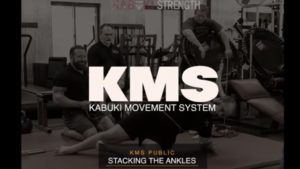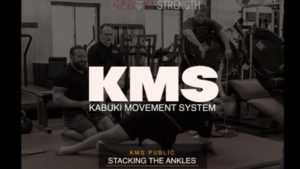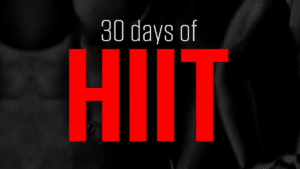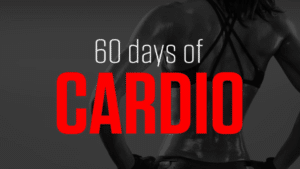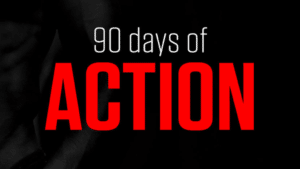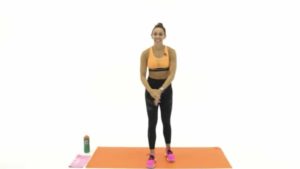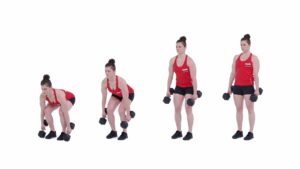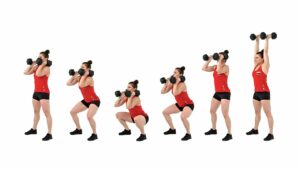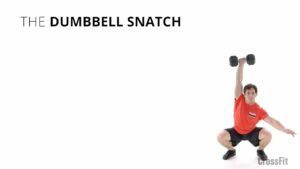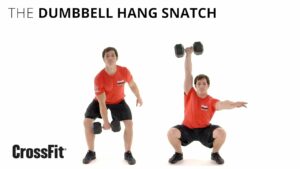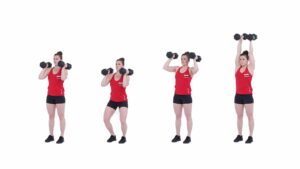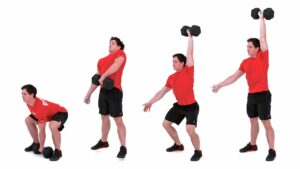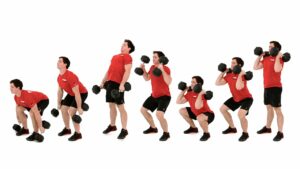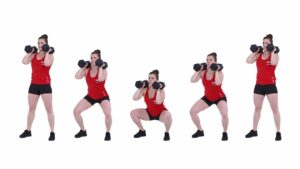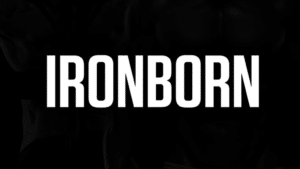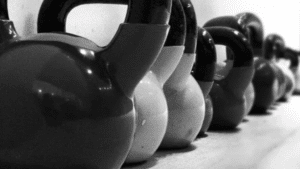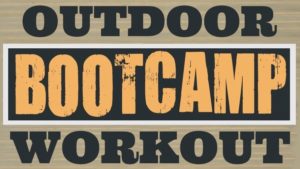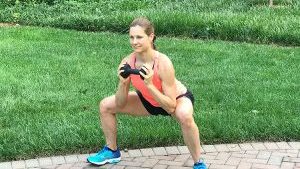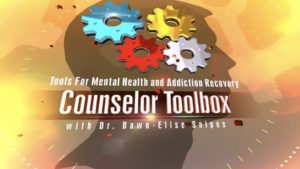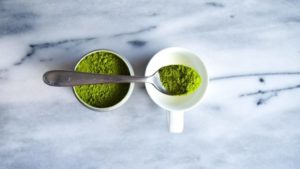OnTrack Journal
The OnTrack Journal app is a free resource for CAL Members that uses proven Positive Psychology techniques to strengthen resilience, optimism, and productivity. Each day, Members are guided through short prompts—such as expressing gratitude, reframing challenges, and reflecting on wins—that encourage a more positive outlook and healthier mindset. By focusing on what’s going well and shifting perspectives on obstacles, users can develop greater emotional balance. The creators recommend using the app daily for at least 21 days, the amount of time often needed to form a new habit and start seeing meaningful results in overall emotional wellness. Please contact our Veteran Services Manager, Lisa Turner, LCSW-C, LTurner@catchaliftfund.com, with any questions or to get access to the OnTrack Journal app.

Rally Point

Welcome to Rally Point
Are you ready to transform your weekend into something powerful?
Rally Point is more than a workout—it’s a movement. We bring together energy, motivation, and camaraderie to fuel your fitness journey. Here is your chance to sweat and learn about mobility and plyometrics with one of the CAL Coaches. Available for any veteran that would like to participate.
Missed a Rally Point episode? Don’t worry! Below, you’ll find past episodes to catch up on and work out along with.
Landing Zone Live

Past Episodes
VITAMINS, MINERALS, & TRACE MINERALS
VITAMINS, MINERALS & TRACE MINERALS
ARE THEY NECESSARY?
ISN’T A WELL-ROUNDED DIET SUFFICIENT?
If we were to eat a “perfectly” balanced, natural – whole foods diet mostly comprised of plants – vegetables, grains, seeds, fruits, and berries along with the balance, 25%, comprised of organic grass-fed livestock and wild caught fish we would consume a diet that would provide us with “most” of the vitamins and minerals our body needs.
However, most does not equate to all our body needs. Eating a balanced diet does provide us with many of the vitamins, minerals, and trace minerals our body needs. There is a catch. Our body does not make vitamins, minerals, or the trace minerals. We take in these essential nutrients from our foods. Only by consuming nutrient dense foods can we ensure that we are taking in what we need to maintain optimal health.
In a perfect world our foods would contain the nutrients we need. We do not live in a perfect world. Food from agriculture is seriously deficient in many of the essential nutrients we require. Why? Our soils have become significantly depleted in these essential elements through over usage and the common practices of big agribusiness – limited usage of broad- based fertilizer, over-harvesting, limited crop rotation and soil degradation. Since our soils are nutrient deficient and most of our protein sources, coming from unnatural feed sources, can’t be classified as healthy – where are we to acquire these life supporting nutrients?
First, most of the nutrients we require should be taken in through the food we eat. Eating natural, organic vegetables, fruits, and berries along with organic grass-fed beef and wild caught seafood would ensure that we are getting more nutrients than if we were to rely primarily on commercial agriculture and grain fed beef and seafood. Only by consuming these natural foods can we obtain enough of the necessary 13 vitamins, minerals and trace minerals that are necessary for optimal health.
The vitamins that are essential to good health are:
Vitamin A
Vitamin B1
Vitamin B2
Vitamin B3
Vitamin B5
Vitamin B6
Vitamin B7
Vitamin B9
Vitamin B12
Vitamin C
Vitamin D
Vitamin E
Vitamin K
The very word, vitamin, means “being vital for life.”
How about the essential elements – the minerals and trace minerals – also necessary for life and health.
Calcium, Potassium, Sodium, Magnesium, Phosphorus, Iron, Zinc, Manganese, Copper, Molybdenum, Iodine, Chromium, Selenium, and Omega-3 Fatty Acids.
That is quite a list. We aren’t even discussing the supplements that come from so many of these vegetables, fruits, berries and protein sources – the carotenoids, the flavonoids – the catalysts that are also included in natural whole foods.
Now, what if you were to find out that by eating a perfect (?) diet you were still short of the essential elements your body needed? What would you do? Believe it or not if the body had the essential nutrients it needed in the right amounts – virtually all chronic diseases would be averted.
Let’s examine this. The following information, regards to the efficacy of vitamins, is sourced from “The Vitamin Cure” by Monte Lai, PhD. The data he compiled was garnered via a statistical method known as meta-analysis. This method is widely recognized as the most reliable method currently in use in determining the power of vitamins and essential elements in preventing and, yes, in treating chronic diseases.
Vitamin A – prevention of lung cancer, bladder cancer, stomach cancer, glioma, cervical cancer, asthma, and cataracts. Best sources: beef liver, fish oil, sweet potato, pumpkin – cooked, carrots – raw, spinach, cantaloupe.
Vitamin B1 – may prevent cataracts and type two diabetes. Best sources: Pork, green beans, brown rice, walnuts, oranges, cantaloupe, milk, bread, and eggs
Vitamin B2 – Prevention – may prevent cataracts, cardiovascular disease, lung cancer, breast cancer, and colon cancer. Best sources: milk and dairy products, internal organs – liver, kidneys, heart, nuts, legumes, dark leafy green vegetables.
Vitamin B3 – Prevention: may alleviate osteoarthritis. Best sources: tuna, turkey, chicken, salmon, beef, peanuts, bread, fortified breakfast cereals, coffee, nuts.
Vitamin B5 – Prevention: may lower LDL cholesterol and triglycerides, increase of HDL, may help with lessening morning stiffness and pain associated with rheumatoid arthritis. Best sources: beef liver, sunflower seeds, trout, yogurt, fish, eggs, milk.
Vitamin B6 – Prevention: analysis confirms help in prevention of breast cancer, colorectal cancer, Parkinson’s disease, renal cell cancer, and venous thrombosis. May also help prevent stroke recurrence, stroke, heart disease, and depression. Best sources: Meats, chicken, beef, and pork, fish – cod, salmon, trout, bell peppers, spinach, potatoes, broccoli, chickpeas, banana, nuts.
Vitamin B7 – Prevention: may lessen symptoms of MS, type 2 diabetes, brittle nails, and hair loss. Best sources: organ meats such as liver and kidneys, egg yolks, oats, bananas, nuts, milk and wheat, tomato, avocado, cabbage, cheese, and raspberries.
Vitamin B9 – Prevention: can help prevent breast cancer, lung cancer, colorectal cancer, renal cell cancer, bladder cancer, and pancreatic cancer, hypertension, depression, chronic kidney disease, stroke, coronary artery disease, venous thrombosis, atherosclerosis, glaucoma, oral cleft, neural tube defects, recurrent stroke, and age-related macular degeneration. Best sources: dark leafy greens, liver, cooked spinach, asparagus – cooked, avocado, papaya, corn, tomato and orange juice, watermelons, oranges, and strawberries.
Vitamin B12 – Prevention – colorectal cancer, renal cell cancer, cervical cancer, MS, depression, venous thrombosis. Best sources: primarily from animal-based foods. Oysters, beef liver, trout, tuna, cod, beef, milk, cheese, eggs, chicken and mushrooms, and miso.
Vitamin C – Prevention – breast cancer, renal cell cancer, bladder cancer, stomach cancer, cervical cancer, esophageal cancer, endometrial cancer, Alzheimer’s disease, gout, stroke, cervical neoplasia, cataracts, exercise-induced bronchoconstriction, atrial fibrillation, and sleep apnea. Best sources: all fruits and vegetables – oranges, kiwi fruit, grapefruits, lemons, limes, papayas, strawberries, pineapple, cantaloupes, raspberries, kale, potatoes, sweet potatoes, tomatoes, bell peppers and cauliflower.
Vitamin D (D3) – Prevention – most cancers, Alzheimer’s disease, type 1 and type 2 diabetes, rickets, lupus, Parkinson’s disease, autism spectrum disorder, cognitive impairment, fibromyalgia, inflammatory bowel disease, MS, respiratory infection, TB, hypertension, RA, fatty liver disease, thyroid disease, depression, gestational diabetes, obesity, Graves disease, bone fractures. Best sources: Vitamin D3 The sun – depending upon the color of your skin, e.g. northern city – light skin Caucasians 15 minutes, Asians and Hispanics 30 minutes, African Americans 2 hours. Winter also eliminates most of the sun’s natural supply-we stay indoors more. Food sources: cod liver oil, fish oil, fish, beef liver, eggs, salmon, tuna (cooked) milk, yogurt, sardines, eggs, and cheese, fortified milk, and fortified fruit juice.
Vitamin E – Prevention – can help prevent breast cancer, lung cancer, renal cell cancer, bladder cancer, stomach cancer, pancreatic cancer, prostate cancer, cervical cancer, endometrial cancer, Alzheimer’s disease, Parkinson’s disease, fatty liver disease, cardiovascular disease, heart disease, and cataracts. Best Sources: wheat germ oil, almond oil, sunflower oil, asparagus, sweet potatoes, avocados, mangos, nuts, cooked spinach.
Vitamin K – Prevention – helps prevent osteoporosis, cardiovascular disease, and calcification of blood vessels. Best Sources: Dark leafy vegetables, spinach, kale, broccoli, green beans, oats, wheat, meat, milk, eggs, natto, swiss chard, parsley, olive oil.
In addition to the disease-preventive natures of these vitamins they have also been used for millennia, in the treatment of most chronic diseases. A body well stocked with these essential vitamins is a body well prepared to handle most chronic diseases. From the above list one realizes that a broad based, diversified diet is one of the most important keys to good health.
The essential minerals and trace minerals work together with the operation of vitamins. By eating a balanced, diversified diet, most of today’s ailments – obesity, metabolic syndrome, autoimmune diseases, and the big killers – heart disease, cancer and stroke can be severely limited if not prevented. The ancient saying: “Let your medicine be your food and your food by your medicine” has original ties to the ancient Greeks. Before the advent of modern medicine and our pharmacological industry – people relied upon the natural elements they received from their foods to retain health and vitality. In many ways, a return to natural foods and the curtailment of “fast food”, processed foods and “junk” foods would see a dramatic improvement in the overall health of most Americans. Remember, we are what we eat and what we later absorb.
Don Wright
Catch A Lift Fund
Healthy Living by Coach Don Wright
I think it is time for a review of healthy living and some of the important fundamentals. Sometimes we forget simple things and a review is necessary.
First: Sleep is perhaps the most important component of healthy living. A goal should be to reach at least 8 hours of sleep – deep sleep, REM, sleep, and light sleep – all combined into a night that should leave us relaxed and ready to start the day.
Rules for a good night’s sleep:
1. Have your bedroom the coolest room in the house.
2. Keep your room as dark, if not totally dark, as possible.
3. Cut back on blue light devices – TV’s, computers etc. 2 to 3 hours before bedtime.
4. Keep electronics out of your bedroom and if you use your cellphone as an alarm – turn it to airplane mode (lessens amount of radiation)
5. If you do keep your cell phone in your bedroom or have it charged in your bedroom – keep it as far from your bed as possible – cuts down on radiation.
6. Two good pre-bedtime sleep aids (help you fall asleep faster) 4 to 6 ounces of tart cherry juice a couple hours before bed. Tart cherry juice (no sugar added) has naturally sourced melatonin which can help you fall asleep and stay asleep longer. Next, kiwi fruit. Eating a Kiwi fruit a few hours before bed offers the same sleep help as the cherry juice. In addition, one kiwi fruit has far more vitamin C than an orange.
Second: Exercise – movement/physical activity
The rule here is to shoot for at least 30 minutes of physical activity each day for a minimum of 3 ½ hours of exercise each week.
1. Cardio exercise – brisk walking, elliptical, treadmill, rowing machine, stationary/recumbent bicycles – all can raise your heart level – improving your immune system, and overall health. Can be done every day when we also try to reach the 10,000 step per day goal.
2. Strength/weight training: try to shoot for at least 2 days per week of strength training. Muscle tissue is more metabolically active, will burn more calories pound per pound and decreases abdominal fat. In addition, as we age our muscles begin to atrophy. Regular strength training maintains our muscle mass, gives us more energy, improves heart health, and lessens our risk of falls and or injuries.
Third: Proper Diet and Nutrition
The saying we are what we eat is correct but to be really accurate we are “what we eat and later absorb.” Our bodies need calories to sustain us, to move us and to keep us healthy and alive. There are three major components of the foods we eat.
A. Macros: carbohydrates, fats, and proteins.
B. Carbs – calories per gram – 4
C. Fats – calories per gram – 9
D. Proteins – calories per gram – 4
A proper diet seeks to balance all three macros in a ratio that allows the body to retain the sensation of fulness longer. That involves looking at the relative protein grams versus carbohydrate grams in a serving. Simply put, the higher the percentage of carbohydrates to proteins – the quicker the food gets into our bloodstream (placing a lot of glucose into our bloodstream – requiring insulin to move it into our cells – energy high initially and drops rapidly.) An example would be eating a candy bar – Three Musketeers 2.13 oz. bar, calories: 262, fat 7.7 grams, carbohydrates 47, protein 1.6 grams. “The ratio of carbs to protein 47:1.6 makes this a “non” food (super sugary dessert) – quick burst of energy – massive sugar rush in our bloodstream and a quick drop in energy in a short while. In addition, this candy bar has 40 grams of sugar = almost 10 teaspoons of sugar!) As a rule of thumb, quality food – keeps us feeling full longer – the ratio should range between 1:1 to 4:1. Ratios that have higher carb percentages tend to fall into the dessert category. Protein and fat both take longer to digest. They also slow the release of carbs into the bloodstream allowing a more gradual, longer lasting release of food (glucose) to the bloodstream.
There is a great deal involved with nutrition but for this paper the other important parts are:
1. Vitamin and mineral content of the food. Whole foods, vegetables that are pulled from the earth have higher levels. (Organic should always be the go-to when available.)
2. Organic versus GMO (genetically modified organisms) Whenever possible choose organic. Usually, the soils organic foods are grown in have higher levels of nutrients, less pesticide and herbicide residue – healthier.
3. Fiber: foods that are higher in fiber – vegetables, nuts, berries, beans, and whole grains – all aid the digestive system – promoting healthier bacterial (beneficial) growth and a stronger immune system.
4. Vitamins: Yes, it has been said by myriad professionals that you can get all the vitamins, minerals and essential nutrients you need from eating whole natural foods. True? It is true to an extent but the amount of nutrients in our foods today has dropped precipitously over the last few generations. Our soils have been depleted and often lack essential minerals and trace minerals. My simple rule of thumb is to identify a quality, organic multi-vitamin. At a minimum, everyone should take an age appropriate multi with added minerals. A good multivitamin should have at a minimum, the following 7 vitamins and minerals:
a. The fat-soluble vitamins, A, D, E, and K
b. The water-soluble vitamins: complete B, and vitamin C
c. Magnesium (there are 7 elemental forms of magnesium – often it is best to choose a complete magnesium.)
d. Trace minerals – copper, zinc, manganese, boron, selenium, chromium, molybdenum (these are trace mineral that the body needs in very small amounts – but still needs for optimum health)
e. Extras: various plant supplements usually comprised of various flavonoids, carotenoids.
f. Specialized supplements – for certain health conditions and general biological function improvement. Fish oil – extra omega 3, flavonoids like nano berberine, nano quercetin, milk thistle, coenzyme Q-10 … the list can go on for a page or more and the list keeps getting longer – be careful.
As everyone on this planet is unique to him or herself – with no one on the planet having the same microbiome, eating a balanced diet 70% – 75% vegetables, fruits and berries, nuts, grains, seeds and 25% to 30% of your total daily intake with protein/fats from organic grass-fed beef, wild caught game, seafood – wild caught -e.g. wild caught salmon – will insure for the great majority of us, health and vigor and managed and proper weight, cognitive health, cardiovascular, and general good fitness for our age, height and weight.
Don Wright -Catch A Lift Fund
HEALTHY RECIPES
ZUCCHINI SANDWICHES
INGREDIENTS:
3 MEDIUM ZUCCHINIS
10 THIN DELI HAM SLICES
10 SLICES MOZZARELLA CHEESE
ITALIAN SEASONING
LARGE BOWL OF ICE WATER
SAUCE INGREDIENTS:
½ CUP PURE AVOCADO MAYONNAISE (INSURE NO SOYBEAN OIL IN YOUR MAYO)
½ CUP OF ORGANIC KETCHUP
½ CUP FULL FAT SOUR CREAM
Mix sauces together and set aside
DIRECTIONS:
Wash zucchini (tip – use a couple drops of dawn det. Lather & rinse)
Cut zucchini lengthwise into thin strips ¼ inch
In a large frying pan with filtered water – place zucchini and boil 4 min
Take zucchini strips from skillet and place in cold water – chill and pat dry
Place zucchini strips on cutting board – layer zucchini, ham, cheese, zucchini
Carefully place the zucchini strips into the oven (or toaster broiler) at broiler setting for 6 minutes.
Take strips out of broiler and spread with stirred mixture of three sauces apply seasoning to taste (salt, pepper, Italian seasoning)
WAFFLE UPS
INGREDIENTS:
4 KETO/HIGH FIBER WAFFLES
2 EGGS
1 RIPE AVOCADO
1 MEDIUM TOMATO
2 TBSP COCONUT OIL
DIRECTIONS:
In a medium skillet fry the two eggs in olive oil – set aside.
Brown the keto slices in the same pan. When browned place one egg on a waffle.
Place a slice of tomato on top.
Add one half of the mashed avocado on top and place the remaining waffle on top for a great healthy breakfast sandwich.
Emotional Wellness
Welcome to the Emotional Wellness section. In today’s fast-paced world, taking care of our emotional well-being is more crucial than ever. This space is dedicated to helping you navigate the ups and downs, offering practical insights and resources for your journey.
Life throws various challenges and experiences our way, often leaving us grappling with emotions we don’t fully understand. This section will delve into the core of emotional well-being – no frills, just real talk. We aim to provide you with valuable information and tools to enhance your emotional resilience and self-awareness.
Whether you’re looking for strategies to manage stress, ways to build better relationships or tips for practicing self-care, you’ll find straightforward advice and support here. We believe that by acknowledging and addressing our emotions head-on, we can lead more fulfilling lives.
Meditation
Meditation doesn’t require you to be a spiritual guru or sit for hours on end. It’s a practical tool that anyone can use to quiet the mind and find a sense of inner peace. In this section, we’ll break down different meditation techniques, offering clear and simple instructions to help you get started or deepen your practice.
Whether you’re curious about mindfulness meditation, or simply want to learn how to breathe and relax, you’re in the right place. Our goal is to provide you with practical guidance that can lead to reduced stress, improved focus, and a greater sense of well-being.
Breath Work
Breathing – an automatic process we often overlook – holds incredible power to influence our well-being. Here, we delve into the science and techniques of breathwork in a straightforward way, offering you practical tools to harness its potential.
Breathwork is a down-to-earth practice that can help you manage stress, increase energy, and improve focus. In this section, we’ll explore various breathwork exercises, explaining how each technique works and how you can incorporate them into your daily routine.
Whether you’re looking to calm your mind, boost your mood, or simply want to explore the impact of intentional breathing, you’re in good company. Our aim is to provide you with accessible guidance, so you can experience the tangible benefits of breathwork in your own life.
Mindfulness
Mindfulness isn’t about emptying your mind or escaping reality. It’s about cultivating awareness and being fully engaged in the present moment. In this section, we’ll explore techniques, share insights, and offer guidance on how to integrate mindfulness into your daily routine in realistic and achievable ways.
Whether you’re a beginner seeking simple practices or someone experienced looking to deepen your understanding, we’ve got you covered. Our aim is to provide you with valuable tools that can lead to reduced stress, enhanced focus, and a deeper connection with yourself and the world around you.
Emotional Health
In a world that often values appearances over realities, addressing our emotional well-being is a vital yet often neglected aspect of a fulfilling life. Here, we cut through the noise and stigma to provide you with practical insights and resources for managing your emotional health.
Emotional health isn’t about pretending everything is okay or projecting a façade of constant happiness. It’s about understanding, processing, and nurturing our emotions in a way that allows us to lead authentic lives. In this section, we’ll explore topics such as emotional resilience, self-care, coping strategies, and seeking help.
Whether you’re dealing with stress, navigating relationships, or simply aiming to build a healthier emotional landscape, you’re in the right place. Our goal is to offer you no-nonsense advice and guidance that you can put into action – because your emotional well-being matters.
Fitness for Weight Loss
If you have decided that you need to lose weight for your health or overall fitness, here are some guidelines to help you achieve your goals.
Commit to regular workouts – a blend of cardio and strength training will help you shed pounds and inches. The cardio burns fat and calories, while strength training builds lean muscle tissue, which burns more calories—even at rest—than fat tissue.
Add high-intensity interval training (HIIT) to your workout routine – Supplement your go-to exercise with HIIT workouts that challenge muscles and burn calories for up to 24 hours after the workout is complete.
Be kind to yourself – transformation takes time, but it is worth it! Maybe you can’t complete a workout the first time you try it—that’s okay. Next time, try to add a few more reps or minutes. Over time, you’ll build the strength and confidence to finish that workout like a boss.

What When and Where to Eat
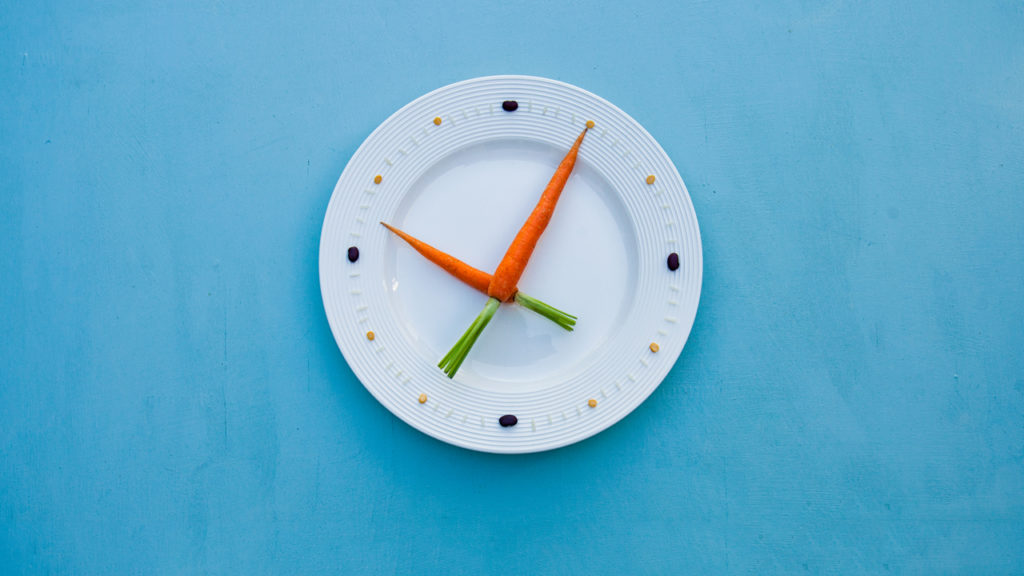
What to Eat, When to Eat, Where to Eat, and Why
Let’s start by looking at where we are now and where we were in the past with our food. For starters, Colorado State researchers discovered that over 70% of the food we commonly put on our plates was not eaten for over 95% of human history! Our ancestors subsisted on meats, fish, seeds, berries fruits, and native vegetables. There were no sweet treats and honey was a luxury to our ancestors.
How is that possible – 70% of our food is foreign and unknown to our ancestors? Well, the agricultural revolution ushered in a completely new source of food – grains. Grains are loaded with starches – carbohydrates. These starches provided ample calories and up until recent modern history they were consumed along with ample vegetables, fat, and protein sources. For the most part, their introduction added to our available food sources without causing drastic dietary issues. But the grains and their starches were not the only addition to the pantry.
In recent times added sweeteners, refined oils, dairy and myriad types of alcohol became available. Processed foods, loaded with sugar, artificial ingredients, and preservatives began flooding the grocery store shelves. Many, if not all of these “meals” in a box contain metabolism destabilizers. Eating these foods for any length of time can lead to – (1) Metabolic syndrome (MetS) is a complex condition characterized by insulin resistance, abdominal obesity, dyslipidemia, hypertension, and hyperglycemia; it is a risk factor for cardiovascular disease, T2D, stroke, chronic kidney disease and cancers [1], [2]. (1) Its prevalence is increasing along with the increase in obesity, and it is reaching epidemic proportions affecting between 24% and 34% of the adult US population [3]. This massive increase in Metabolic syndrome doesn’t even include the huge numbers of Americans who are overweight or obese. Most of America’s obese population will in fact develop a serious health condition with type 11 diabetes reaching epidemic proportions.
- – Metabolism-disrupting chemicals and metabolic disorders
Author links open overlay panelJerrold J.HeindelPhDaBruceBlumbergbMathewCavecRonitMachtingerdAlbertoMantovanieMichelle A.MendezfAngelNadalgPaolaPalanzahGiancarloPanzicaiRobertSargisjLaura N.VandenbergkFrederickvom Saall
These agents are found in our processed foods, chemicals in the environment – DDT, plastics – BPA, and many of our commercially grown foods. The effects of these agents not only lead to obesity but obesity up through the third generation. What a mother eats during her pregnancy, the chemicals she takes in and environmental toxins will affect her child, her grandchildren, and her great-grandchildren. This obesity epidemic will see this generation as the first in modern history that will not outlive their parents.
When did America begin to blossom? What happened? In a “nutshell” bad science, a complicit government, and a food industry focused on profit happened. In the 1950’s a researcher compiled data on populations looking for a link to heart disease. He selectively chose a limited number of countries (6) to look at and avoided examining the total data which would have proven his thesis wrong – ignoring conflicting data in the other 16 countries. With a preconceived notion that fat was the cause of heart disease in the populations, he chose to examine he concluded his investigation and published research that listed “fat” as the culprit. Fat soon became the enemy along with cholesterol.
As this misleading and inaccurate information made the rounds in newspapers, press, and television the clamor began to remove fat from our packaged foods and to go “fat” free. In its place, the food manufacturers substituted “sugar”, “artificial sweeteners” and a myriad of other “non” food additives. These additives, flying under the radar of the FDA, were preservatives and metabolic destabilizers. The FDA looks at foods and additives that have been shown to be potentially cancer-causing or linked to cardiovascular disease. They do not look at food additives that affect our metabolism.
To a very large degree, it is in fact the chemicals, preservatives, stabilizers, etc. that are in our foods that have led to this epidemic of obesity in this nation. These disrupters create havoc with our hormones leading to metabolic disorders, leaky gut, irritable bowel, and autoimmune diseases – diabetes, cancer, and heart disease. Not to forget, sugar is one of the major players.
What can we do to get out of this trap? For starters, processed foods should be avoided. Fresh produce, foods that can be pulled from the ground as our grandparents ate, should become a part of everyone’s diet. The produce aisles in the grocery store are where we should spend the bulk of our money. Sugary foods and foods with added sugars or artificial sweeteners should be avoided. In addition, since products made with white flour act on our blood sugar levels as fast as or even faster than pure sugar – they should be avoided. When grain products are part of one’s diet, they should be made from whole grains. The first ingredient on the package should state this. For bread lovers choose organic whole grain/wheat bread and gluten-sensitive gluten-free bread. Eat sparingly from this group.
For non-vegetarians, quality meats – grass-fed and certified organic should comprise our red meats. Chicken, poultry, and eggs should come from free ranged birds fed organic feed. Seafood, such as wild-caught salmon, and most fishes sold in the stores such as haddock, cod, and halibut can be a part of a quality diet as well as scallops and shrimp. Avoid seafood with known levels of high mercury – larger fishes – sharks, tuna, or orange roughy. Canned tuna can be eaten sparingly and should contain only water, no vegetable oils. When given the choice of fish, farm-raised or wild caught – always go with wild-caught.
Healthy oils such as extra virgin olive oil, avocado oil, and coconut oil should replace processed and heavily refined corn oils and vegetable oils. Healthy fat sources such as nuts and seeds should be added along with high cacao dark chocolate, cocoa, and coconut. Berries, low in sugar and lower fructose fruits – two servings per day, can be eaten and added to the diet.
Grains, when consumed should always be the smallest portion on the plate. Grains are loaded with carbohydrates and calorie for calorie are dwarfed by the more nutrient-dense vegetables. Starchy carbohydrates process quickly and end up affecting our blood sugar levels much quicker than proteins and fats. One way to slow this down is to combine proteins and fats with your carbs – slowing down both digestion and entry to your blood over a longer period of time – keeping glucose levels under better control. When choosing grains opt for brown rice over white and add quinoa for its super nutrient content. (quinoa is actually a seed)
You are one of tens of millions already overweight or obese. How can I restore my metabolism to operate within a healthy weight range? More importantly, how can I maintain a new comfortable healthy weight? Like so many others, dieting has been tried and found to fail in over 95% of cases. Yo-yo dieting is something that many of us have already experienced … losing weight on one diet after another only to see the weight quickly regained after ending the diet with the added insult of even extra weight. Often, the ability to lose weight on follow-up diets becomes even harder. Our metabolism is at play here … “Fool me once, shame on you; fool me twice, shame on me.” In effect, dieting, cutting back on the amount of food consumed, over-exercising or ignoring hunger would lead to your metabolism slowing down … in effect burning and needing fewer calories and packing them on as fat … in response to what was perceived as a period of starvation.
What is the secret? Believe it or not … eat more, exercise less, and insure that the food you eat is “quality” food. A calorie is not a calorie and calorie counting needs to stop. A calorie from a French fry is not equal to a calorie from a vegetable. One type helps to regulate our hormonal system. The other disrupts it. Our body can process a large amount of the right kinds (quality) of food and maintain homeostasis. Homeostasis – definition – refers to the maintenance of a stable internal temperature and environment that enables the systems in the body, specifically, metabolism, to work to maximum efficiency. … Metabolism depends on the work of enzymes to catalyze the chemical reactions necessary for the breakdown of food into energy. (Feb 12, 2016, Coral Springs charter).
High-intensity interval training, periods of exercise ranging from 10 to 30 minutes, can produce the same health benefits as periods of moderate exercise lasting twice as long. The idea of going out for the long run, hitting the elliptical for an hour, and being consumed with exercising for at least a half hour or more per day can be replaced. The upshot – is more ability to fit exercise into our often busy and hectic schedules.
Eating the right kinds, and quality, of food, will reset our metabolic furnace to a healthy setting. This involves adopting a new healthier lifestyle to become effective. We need to consume 12 to 15 half-cup sizes of vegetables a day – in salads, on our plate – steamed broccoli, cauliflower, carrots, zucchini, etc. Looking to pick a “rainbow” of colors from the produce aisle will mean that we are getting a complete complement of essential vitamins, minerals, trace minerals, and the important phytochemicals and antioxidants that are so prevalent in these vegetables. A good rule of thumb here is to have at least half of your plate filled with vegetables. Protein should fill approximately ¼ of your plate. A good way to approximate this is to use the palm of your hand as a rough estimate for this portion. Pasta, vegetable pasta – not pasta made from white wheat, can fill the remaining ¼ of your plate. Healthy oils such as extra virgin olive oil, avocado, or coconut can be used to add taste and healthy monounsaturated fats to your plate – either in cooking or added to a salad.
Healthy nuts and seeds such as pumpkin, hemp seeds, sesame seeds, etc provide healthy snacks and are a great addition to a full-bodied salad. Remember, these foods are nutrient-dense but also pack a lot of metabolic fuel – the rule of thumb is a handful or equivalent per day.
Healthy foods can be procured directly from the produce aisle or from the frozen food aisle. Flash frozen vegetables (try to choose organic) have basically the same nutritional content as fresh. Keeping the freezer stocked with these frozen foods will allow your daily servings of vegetables can be met.
Make sure to stay hydrated. Six to eight glasses of water per day can be used as an average. If working out drink more. In hot weather drink more. When you feel thirsty you are already slightly dehydrated. Drink most of your water during the day and taper off before bed. Drink your last water of the day two or more hours before bed. This will pay dividends in fewer nocturnal trips to the bathroom and more quality sleep hours.
Hey, we haven’t talked about dairy products. Well, dairy products do provide an excellent source of protein and can be consumed, just not in excess. Organic, grass-fed milk, and goat milk are excellent protein sources. Organic, unsweetened Greek yogurts are loaded with quality protein and good bacteria. Cheese can be included as they are high in protein. However, they do include some less-than-desirable fats and should not be a go-to food. Here, eating less is sensible.
Let’s look at a healthy menu. The following recipes are taken from “The Calorie Myth” by Jonathan Bailor.
Breakfast:
German Chocolate Pancakes;
6 egg whites
2 eggs
1 c. water
1 c. nonfat Greek Yogurt
1 c. chocolate (organic) protein blend
½ c. raw unsweetened shredded coconut
1 c. unsweetened cocoa powder (not dutch-processed)
6 Tbsp of either erythritol or xylitol
Cinnamon to taste
Coconut oil spray
- Put all the ingredients except the coconut oil spray into a blender in this order.
- Bend on high until the mixture is completely smooth
- Spray a skillet with coconut oil and place over medium heat.
- Heat the skillet for two minutes and pour the batter into the skillet.
- Cook for 2 to 3 minutes. Gently lift the edge of the pancake with a spatula to check for browning (when bubble form fully around the edge it is usually time to flip) Cook for 20 to 30 seconds on this side until cooked all the way through.
- Serve immediately
- A sugar-free syrup containing erythritol with a pat of butter – with fruit, nice topping.
Lunch:
Chicken, Avocado, and walnut salad
- 2 heads of romaine lettuce
- 4 tbsp extra virgin olive oil
- 1 ½ tbsp xylitol
- 2 tbsp white wine vinegar
- 1 tbsp chopped parsley
- ¼ tsp dried oregano
- Salt and freshly ground pepper
- 2 avocados
- 2 oz walnuts, roughly chopped
- 1 lb cooked chicken breast, cut into bite-size chunks
- Tear the lettuce into large pieces and place on a large serving dish.
- Whisk the olive oil, xylitol, vinegar, parsley, and oregano in a small bowl until completely blended. Season with salt and pepper to taste.
- Peel, halve, and slice the avocados.
- Add the avocados evenly over the bed of lettuce.
- Sprinkle the walnuts and chicken evenly over the salad
- Drizzle the remaining dressing over the salad
- Serve immediately.
Dinner:
Lasagna
- 2 medium eggplants, cut lengthwise into ¼-inch slices (organic vegetable lasagna in box can also be substituted if one has problems with nightshade vegetables – eggplants as I do)
- 2 tbsp melted coconut oil
- Freshly ground pepper
- 2 lbs grass-fed ground beef or turkey
- 1 large jar (1 lb 8 oz) of all-natural tomato basil sauce (no sugar added)
- 1 tsp xanthan gum
- 6 handfuls of fresh spinach
- 1 lb 2% cottage cheese 12 oz shredded mozzarella (try for organic)
- 12 c parmesan, finely grated.
- Preheat the oven to 400*F.
- Brush the eggplant or vegetable lasagna with oil and season with pepper to taste. Place on foil-covered baking sheets.
- Bake for 20 minutes, turning eggplant slices after 10 minutes. (If using vegetable lasagna boil according to package directions.)
- Reduce the oven temp to 375 F
- In a large skillet over medium-high heat, brown the beef or turkey.
- Add the tomato sauce to the skillet, reduce the heat to low, and simmer uncovered for 20 minutes.
- While quickly stirring the meat sauce, sprinkle the xanthan gum over the surface and combine well.
- Spread ½ cup of the meat sauce on the bottom of a large baking dish
- Place 6 slices of the eggplant (or vegetable lasagna) to cover the bottom of the dish. Layer on half of the spinach.
- Spread half of the remaining meat sauce over the lasagna noodles or eggplant
- Spread half of the cottage cheese over the meat sauce.
- Spread half of the mozzarella over the cottage cheese
- Place the remaining eggplant (remaining vegetable lasagna) on top of the mozzarella to cover it. Layer on the remaining spinach.
- Repeat the layers with the remaining meat sauce, cottage cheese, and mozzarella.
- Evenly sprinkle the Parmesan on top of the mozzarella.
- Bake for 20 minutes or until the top is golden and bubbling
- Let cool for a few minutes and serve.
“My” special soup recipe …
Easy Carrot/Summer Squash Soup
Ingredients:
1 Tbsp. butter
1 Tbsp. extra virgin olive oil
1 celery stock, chopped
1 medium onion, chopped (optional)
2 inches (squeezed) pure organic garlic paste
1 tsp. chopped fresh parsley
½ tsp. ginger
2 cups water
4 cups chopped organic carrots
1 cup butternut squash
4 cups organic chicken broth
½ cup light cream of ½ half & half
½ tsp. salt
Black pepper to your taste
Directions
- Heat butter and oil just until butter melts in a microwave-safe cup. Place in a large saucepan and add celery and optional onion. Cook stirring occasionally for 4-7 minutes until celery and onions are tender. Add garlic and parsley, cook and stir for 15 to 30 seconds.
- Stir in the carrots and squash. Add the water and broth; bring to a medium/high boil over high heat. Reduce heat to a low perceptible boil and simmer until vegetables are tender approximately 25 minutes.
- Puree the soup in your blender until smooth (if you eliminate the onion, the soup will be smoother). While blending carefully, stir in the half and a half or light cream (the mixture will be very hot so use care), and add salt and pepper.
- Blend until the soup is creamy and smooth.
Enjoy! You can prepare this ahead and keep in the refrigerator for up to 4 days and/or freeze it for up to 3 months.
I made this soup without the onion and it was delicious. You can serve it with that special dinner or as an accompaniment to your favorite sandwiches.
Desert:
Dark Chocolate-Espresso Cookies
- 8 oz unsweetened 100% dark chocolate
- ¾ cup coconut oil
- 9 oz xylitol
- 2 eggs
- 1 tsp pure vanilla extract
- 6 oz almond flour
- 2 oz raw unsweetened cocoa powder
- 3 tsp instant espresso powder
- 2 tsp baking powder (organic)
- ½ tsp salt
- 1 ½ tsp xanthan gum
- 1/3 cup light coconut milk
- Preheat oven to 325 F
- Melt the chocolate in a heatproof bowl set over a pan of hot water. Set aside. (can also melt in the microwave – be careful and watch don’t want it boiling – set it at medium heat for a couple of minutes)
- In a large mixing bowl, beat the coconut oil and xylitol until they are completely blended and resemble very fine bread crumbs.
- Add the eggs and vanilla and beat until fully mixed.
- Add the melted chocolate and stir until combined.
- In another bowl, whisk the almond flour, cocoa powder, espresso powder, baking powder, salt, and xanthan gum until combined. Add to the egg mixture and fold in until combined.
- Add the coconut milk and mix until combined.
- Roll 32 golf-ball-sized pieces of dough and place them on foil-covered baking sheets, 2 inches apart. Flatten each ball into a disk ½ inch thick.
- Place the baking sheets on the middle rack of the oven and bake for 10 to 12 minutes.
- Remove the cookies from the oven and leave them on the baking sheet until cool to the touch. Carefully move the cookies to a rack to cool completely.
- Store in an airtight container.
Second dessert – my recipe:
Organic Banana Raisin Breakfast Treats
Ingredients:
2 very ripe large organic bananas
1 cup organic whole oats
1 tsp. cinnamon
¼ cup organic raisins
1 tbsp. extra virgin olive oil
Directions:
- Preheat oven to 350 degrees Fahrenheit
- Line a large baking tray with non-stick parchment paper
- Mash bananas to a pulp
- Add the whole oats, cinnamon, olive oil, and raisins.
- Mix till well blended.
- Add a rounded tbsp. of cookie dough to the baking pan lined with parchment paper. Spread evenly 2” apart on the sheet. Bake for 15 to 17 minutes
Note: there is no added sugar in this recipe. If total carbs are a concern, you can eliminate the raisins. This is a great recipe to help you curb your sugar cravings.
Bonus dessert: my recipe
No Bake Peanut Butter Date Granola Bars
Ingredients:
1 ½ cups of packed/pitted dates – if your dates are dry, soak them in purified warm water for 7-10 minutes until sticky. Pat dry.
½ cup of salted organic (no sugar added) peanut butter plus 1 tbsp. (Often the oil in natural organic peanut butter will have risen to the top of the jar, so stir the peanut butter until the natural oil is well blended before using)
½ cup plus 2 tbsp. of organic whole oats
1 tbsp. of extra virgin olive oil or avocado oil if you prefer
½ tsp of cinnamon
Directions:
- Add your dates to a food processor or a good blender. Blend until well chopped. You will need to use a spatula to push down the dates if you are using a blender. Place in mixing bowl
- Add the peanut butter, oats, olive oil, and cinnamon to the mix. Blend thoroughly.
- Scoop out the mixture and place it on a parchment-lined baking sheet.
- Place another sheet of parchment paper on top. Evenly press down on the mixture until it is uniform and one thickness – ½ inch to ¾ inch.
- Remove the top parchment and cut the mixture into bars and carefully separate it as the mixture will be soft at this stage.
- Place the covered baking sheet into the refrigerator to stiffen.
- The bars can be kept refrigerated for a week – plus you can freeze them in a sealed freezer container and keep them for several months.
This is another great treat to eat instead of sugar-laden desserts. It is healthy, organic, and high in fiber.
The above are just some examples of the creative ways you can make eating quality foods a part of your new lifestyle. We all have choices in this life. We can continue to indulge in our obesity-driven western diet or … we can take stock of where we are and understand that if we continue on the path of sugar-laden foods, food with little or no fiber while spending a few days per week at the local fast food restaurant – nonquality food … you can expect to be one of the hundreds of millions in this world who will develop type 2 diabetes … be stricken with heart disease, cancer or afflicted with an insidious auto-immune disease.
Before the craze of low-fat, processed foods and fast food restaurants our parents and grandparents did not suffer from the obesity epidemic that is plaguing us today. They ate whole foods, foods picked directly from the ground. They ate meat and fatty foods and ate until full. The dieting craze wasn’t even an issue … not until later – the sixties and continuing. Fresh fruits, berries, and garden vegetables were often canned for use during winter months. In many ways, they were healthier than we are today. Sadly, the epidemic of obesity is showing no signs of declining. In fact, in real costs …
Economic Costs of Obesity | Healthy Communities for a …
https://www.healthycommunitieshealthyfuture.org › learn-the-facts › econ…
In addition to its serious health consequences, obesity has real economic costs that affect all of us. The estimated annual healthcare costs of obesity-related illness are a staggering $190.2 billion or nearly 21% of annual medical spending in the United States.
Commit yourself to eat quality foods today. Your body’s internal thermostat will begin to adjust as you change your eating habits and begin eating whole-quality foods. You will be able to eat more, feel fuller and regain your healthy weight without dieting. It will take willpower and a firm understanding that your good health is in your hands to hold or lose as you see fit. However, imagine a healthier you, a lighter more fit you that will be able to enjoyably live your life without the anguish of major illnesses, or diabetes, heart disease, or cancer. You are in control of your own destiny.
What to Stock in a Healthy Kitchen
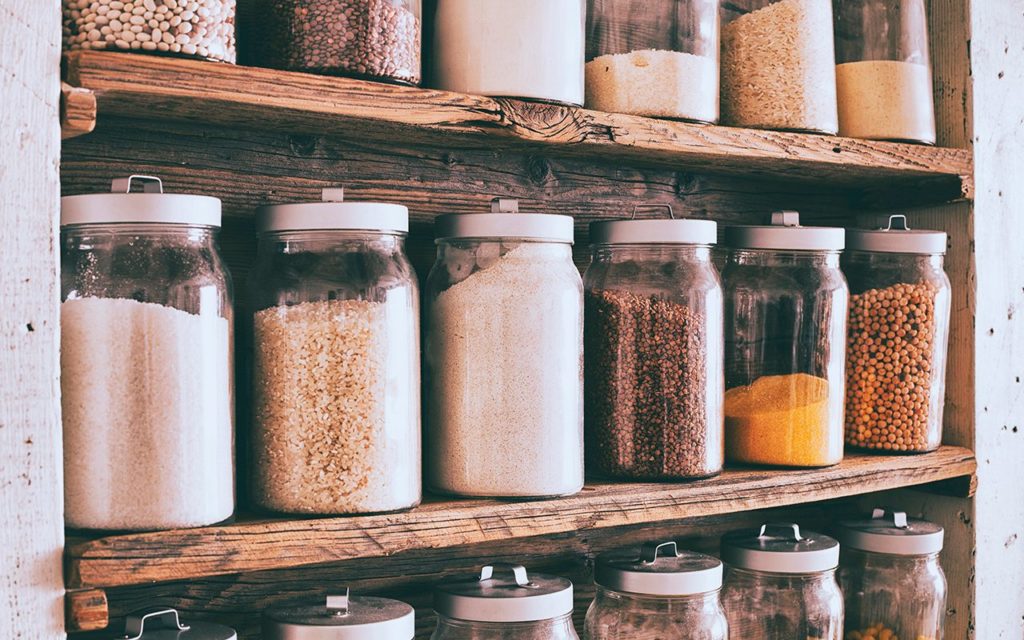
What to keep in a healthy pantry and kitchen:
Sure, healthy eating is great, but it can be intimidating if you don’t know how to prepare foods and combine certain ingredients for a great taste! In this article, we’ll go over exactly what you need to keep in your pantry, cupboards, fridge, and freezer for easy and delicious healthy meals.
Of course, you don’t need all of these ingredients- pick and choose what fits your needs best, and enjoy!
Pantry
The best place to store dry goods! We find it’s always good to have these spices, grains, and canned/boxed goods on hand:
Spices/herbs
Cinnamon
Turmeric
Sea salt
Pepper
Sage
Cumin
Rosemary
Thyme
Curry powder
Garlic powder
Onion powder
Bay leaves
Vanilla extract
Cacao powder
Baking ingredients:
Organic sugars
Organic stevia, such as Truvia
Baking chocolate chips
Maple syrup
Honey
Coconut sugar
Organic flour or gluten free flours
Nuts & Seeds
Almonds
Peanuts
Walnuts
Chia seeds
Shredded coconut (unsweetened)
Nut butter
Oils & Vinegar:
Coconut oil
Extra virgin olive oil
Grass-fed butter or ghee (clarified butter)
Balsamic vinegar (not vinaigrette)
White vinegar
Coconut aminos and/or soy sauce
Dijon mustard
Organic sugar-free ketchup
Single-ingredient fruit spreads (or no sugar added)
Canned/Boxed Goods
Diced tomatoes
Low-sodium veggie broths
Coconut milk (light, regular, cream)
Canned beans (black beans, kidney beans, cannellini beans, chickpeas, etc)
Unsweetened applesauce
Canned wild-caught tuna and/or salmon
Tomato sauce (no sugar added)
Tomato paste
Dry Goods
Rice cakes
Corn kernels to make popcorn (or organic bagged popcorn)
Rice
Dry oatmeal
Sweet potatoes
Quinoa
Sprouted bread
Organic and/or gluten-free pasta
Protein powders
Cupboard
This is where you’ll find your kitchen gadgets! You don’t need every kitchen tool, but it’s helpful to have some of these on hand, like when experimenting with zucchini noodles or a smoothie bowl!
Small, medium and large sauté pan or skillet
Small, medium, and large saucepans
Tea kettle
8×8” baking dish
7X14” casserole dish
Blender
Spiralizer (can be found on Amazon for $10-12)
Food processor (can be used for making homemade nut butter
Waffle iron
Spatula
Soup ladle
Baking tray/cookie sheet
Whisk
Toaster
Zester
Slow cooker/instant pot
Mixing bowls
Garlic press
Fridge
You know the drill- this is all of your fresh ingredients that spoil faster! Keeping an assortment of ready-to-go snacks, like organic yogurt or sliced fruit and veggies is key. Take a peak at what you can include or add to your own spread!
Nut milk
Low-fat organic and grass-fed dairy (milk, cheese, yogurt)
Organic eggs
Assortment of vegetables and lettuce
Hummus
Salsa
Sliced organic meat
Fresh garlic/onion
Fresh herbs
Lemons/limes
Freezer
A great tool for meal prep too, the freezer is great for keeping things fresh for up to several months. Store prepped meals in airtight containers, and keep frozen veggies easily accessible so you can just throw some onto a baking sheet with some spices, herbs, and sea salt for a delicious side to a meal!
Frozen vegetables (chopped spinach, broccoli, peas, chopped bell peppers, Brussels sprouts, carrots, sweet potato cubes)
Frozen fruit (blueberries, strawberries, banana, cherries, mango, pineapple)
Frozen organic meat (organic chicken, grass feed ground beef, ground turkey, salmon, cod, tilapia)
Coconut milk ice cream or organic ice cream
The Secrets of Cooking and Eating Healthy

Sometimes, healthy eating seems like one big secret, and we’re constantly searching for the Holy Grail. While there is no big secret to eating healthy, there are definitely some tips and tricks that make healthy cooking and living a heck of a lot easier.
Add these tricks to your regime and watch your week go from a boatload of stress regarding healthy eating and meal planning, to easy as pie 😉
- Make a plan
The greatest success when it comes to healthy eating is learning to plan: plan your meals, plan your grocery list, plan how much you want to spend on high-quality items vs. items you can save on, etc. It all comes down to planning! When we take the time- 30 minutes, or even 10 minutes – one day a week, it can save us hours, not to mention stress (see #10), later on in the week.
Block out a few minutes to go over what healthy meals you’d like to cook for you, your family, and/or your significant other. What meals can be freezer-stored? When do you have time to cook a fun dinner during the week? Then determine what ingredients you need, and the budget you’d like to stay within.
When you have all of your ingredients, you can not only prepare the designated meals you’ve chosen, but you can also bulk cook other items, like veggies, or prepare sides to meals, like wild rice or quinoa. Evening slicing fruit saves time during the week!
- Buy healthy ingredients in bulk
When we purchase in bulk, we can save a lot of money! Good items to purchase include oats, rice, quinoa, and other grains, as well as soups and broths. When you get home, determine how much you’ll need for the week and prep it ahead of time! It’s also a good idea to invest in some durable containers so that you can keep all of your freshly cooked food still feeling fresh throughout the week!
- Hold the salt (but not the sea salt)
We’ve heard that regular table salt isn’t the best for us, but sea salt can be very good, and it’s great for adding flavor to dishes! While regular table salt is very refined, sea salt actually contains some trace minerals, and has a slightly different flavor and texture to it. Though we’re talking about watching our sodium intakes, it’s also important to not go too low- having too little salt in your foods is just as bad!
- Eat as close to the earth as possible
This doesn’t mean you need to eat everything raw- there would be no cooking in that ha! But when we stay as close to a food’s natural state as possible (i.e. its least processed state), we’re doing good not only for ourselves but for our environment as well. Instead of buying a “healthy” frozen meal of lightened mac and cheese, use gluten-free bean pasta, a dairy-free vegan nut cheese, and dairy-free milk to make it at home. Add in some sauteed vegetables, like tomatoes and zucchini, to round out the meal (and the colors).
Focus on filling your plates with fruits and vegetables, and watch out for added sugar! You can still purchase “processed” items, like healthy bread and pasta, but it’s always important to read the ingredients label, making sure there’s nothing you don’t recognize and that it’s not 50 ingredients long!
- Don’t resist indulgences
Have you ever told yourself that you’re being “good,” and then you’re offered a piece of cake (or a cookie or candy) and you start telling yourself you can’t have it…and then everyone is having some, so you really want it, but you keep holding strong. Then you get home, and you still want it, but because you resisted so much, you end up eating the whole cake rather than just having a slice. Yep, we’ve all been there.
When we resist something, we actually make it more enticing, and the craving heightens. We get it, healthy eating doesn’t have to be bland, but it does come with rules (i.e. no eating a bag of Oreos every day as a snack). However, by constantly restricting yourself from treats that are good for your soul (think Grandma’s famous apple pie), we end up doing more harm than good.
A good way to still keep up your healthy eating and cooking regime, but still enjoy life is to allow yourself a little. Whether that’s a healthier version of what you’re craving (there are so many healthy food blogs that have absolutely amazing recreations of traditional favorites!), having a piece of dark chocolate at the end of the night, or a little slice of cake at your friend’s birthday party, life is about balance! There is always a way to have your cake and eat it too!
- Be mindful
We live in a day and age where most people are eating by themselves, at a desk, and with multiple screens turned on and in front of their tired sleep-deprived eyes. Most of the time, these people will eat while working or scrolling, and they can’t even remember what the food tasted like, let alone with they were even eating.
The biggest favor you can do for yourself is turn off all screens when you’re eating and pay attention to the food. Even better if you have company to eat with (i.e. family, friends, a partner, etc.)! If it’s just you, don’t worry- it may sound boring at first, but really be present for the food you’re about to eat. Take a moment to savor all of the flavors, and think about the effort you went into preparing it, even how the ingredients had to be grown in order to make it to your plate!
When you have this state of mindfulness while you’re eating, food not only becomes more enjoyable, but you also develop a greater appreciation for food and life, rather than just viewing food as fuel to get you through your day (although that’s a great benefit to it!).
- Use healthy fats
When it comes to flavor, fats are the carrier. Using healthy fats, like olive oil, coconut oil (in moderation- some people gain weight with saturated fat, even from plants, while others do just fine), and avocado oil help to keep recipes and meals that don’t use a lot of ingredients flavorful and satisfying (so that you’re not hungry an hour later!).
- Cook Seasonally
Contrary to popular belief, produce, even organic produce, can actually fit into a variety of budgets when purchased seasonally. When you shop in season, especially at a farmer’s market (so that you’re supporting the local economy if you can), it requires less effort than purchasing out of season (for instance, buying zucchini at the grocery store in mid-February). By eating seasonally, you’re also exposing your body to the nutrients that it actually needs to get through the current season healthfully. At different times during the year, as well as places, your body needs different levels of nutrients.
For instance, someone living in Alaska needs a vastly different diet than someone living in Hawaii. The same goes for when we’re eating during December versus mid-July. To get an idea of what produce is available when and where you can check out this guide!
- Embrace the herb life
Well, not exactly how we’re implying here haha! Herbs and spices are key to adding not only flavor but variety as well to any healthy cooking regime. Keep a few dry herbs on hands, such as rosemary, thyme, sage, and oregano, and include a few fresh ones to purchase weekly, like basil and parsley. Then don’t forget to add your healthy fats!
- Keep it fresh
Well, not only speaking about produce here. It’s important to keep it fresh, as in changing up your routine a lot! The body actually gets used to processing and digesting foods that we repeatedly eat (for instance, if you have the same bowl of oatmeal and blueberries every morning). Not to mention, it can get pretty boring if you’re eating the same things day in and day out!
Make sure you include a few different forms of protein to eat throughout the week: chicken, fish, chickpeas, etc, as well as a variety of in-season fruits and vegetables. Or you can stick to doing certain fruits and veggies one week, and switch it up the next. That way, you’re not bored, and neither is your body!
Also, feel free to get creative with meals! Even if you meal prep, say, a chili for the week, there are ways to keep eating it that are different (i.e. add different toppings, have some with a side salad one night, even make a healthy “sloppy joe” with it another night!). Have fun with this!
- Watch your stress
Healthy eating shouldn’t be stressful, so if something is causing you more agony than joy, don’t hesitate to change it. That being said, it’s always important to look at the full picture. Is there a relationship that has been trying lately? Is something not working at work? While this is a healthy eating and cooking article, health is much more than just food. It’s only a small aspect of it. Stress impacts how we digest food, our moods during the day, how we sleep, our weight, etc. This ties back into point #6, but make sure you’re setting aside time to not only check in with what you’re eating, but also how you’re feeling while you eat, and throughout your day as well.
As Dr. Joe Dispenza says, you can eat all of the organic food that you want, but if you’re still operating by the hormones of stress, all you have is organic stress.
Lightened-up Comfort Foods
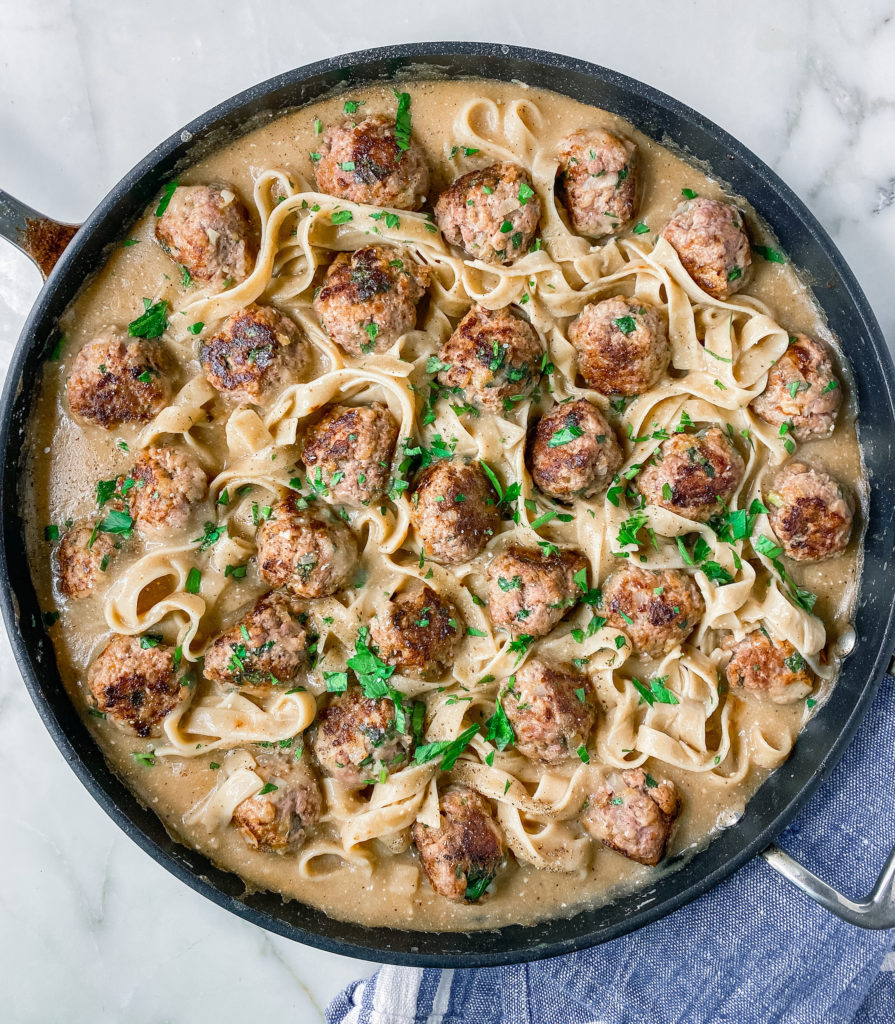
With the fall season going into full swing in just a few short weeks, we all start to crave that cozy comfort food that makes our souls feel all warm and fuzzy inside. Well, we’ve got some great news for you. Those classic dishes that you love so much can be nutrient-dense, yet light, all while tasting like the flavors you’ve come to know and love.
Check out a few of these comfort food meals that can fit a variety of dietary needs and preferences. These recipes are great for meal prep, making for a family, or freezing a few servings for another time this season. If there’s something you don’t like or can’t have on the ingredient list, check the notes for a swap!
Lightened Up Fettuccine Alfredo: gluten-free, vegan, Paleo, dairy-free, and keto. This sauce is great to make for families or for meal prep. With only 75 calories a serving for the Alfredo, you’ll fall in love with this Italian classic! To make keto and/or Paleo, simply toss this sauce onto thick zucchini noodles.
Healthy Tuna Noodle Casserole: gluten-free, dairy-free. Casseroles are always great dishes to make for a crowd! For Monique’s specific recommendation on how to make this casserole gluten-free and/or dairy free, see her notes in the recipe card.
Grilled Caesar Salad with Herbed White Beans: Vegan, gluten-free, dairy-free (option for Paleo and Keto). Who doesn’t love a Caesar salad?! This classic salad dish comes together in under 30 minutes! Need it to be Paleo and/or keto? Omit the beans (and swap in your favorite protein), and nix the maple syrup. That’s it!
Gluten-Free Flatbread Pizza: Gluten-free, vegetarian, dairy-free option, vegan option, Paleo option. If anything screams comfort, it’s pizza. This easy gluten-free flatbread pizza is packed with veggies all while giving you that classic Italian comfort food. To make it dairy-free and vegan, simply swap in vegan cheese or omit all together! Lindsay also provides a recipe for a Paleo naan bread that she uses to swap in for a completely Paleo pizza as well!
Thai Coconut Curry: Gluten-free, Pescatarian, dairy-free, Paleo option, Keto option. This curry dish will warm you right up this chilly fall season! Easy to make and coming together in under 20 minutes, this coconut curry will be on repeat all season long! To make it Paleo and/or Keto, swap in cauliflower rice in lieu of regular white rice.
Vegan Butternut Squash Mac and Cheese: Gluten-free, vegan, dairy-free. This completely dairy-free mac and cheese use a classic orange starchy vegetable as its creamy base for the vegan mac and cheese sauce! Get the look and feel of your favorite pasta dish, all while keeping it light and healthy!
Low Carb Caprese Chicken Skillet: Keto, gluten-free. This dish is perfect for low-carb lovers! You’ll feel indulgent with the fresh mozzarella and roasted tomatoes, but one serving is packed with 43 grams of protein, 20 grams of fat, and 12 net carbs!
Healthy Orange Sesame Chicken: Gluten-free, dairy-free. Who doesn’t love Chinese takeout?! This lightened-up version of orange sesame chicken is completely gluten-free, dairy-free, and baked not fried!
Zucchini Lasagna: Gluten-free, keto. This low-carb lasagna is perfect for those on Keto! You won’t even miss the traditional noodles that go with lasagna! Easy to make and perfect to store in the freezer for additional meals!
BBQ Chicken Stuffed Sweet Potatoes: Gluten-free, dairy-free, Paleo option. One of the easiest dinners around, this BBQ chicken stuffed sweet potato dish is perfect for scaling up or down in servings, depending on how many mouths you need to fill or meals you need to be prepped! London offers a few suggestions for gluten-free and Paleo BBQ sauces in the recipe card notes, so be sure to check there!
Intermittent Fasting 101

What is Intermittent Fasting (IF)?
Many confuse intermittent fasting as a diet, but it’s actually really a way of eating.
Essentially, intermittent fasting (IF) is about restricting how many hours in a day you consume food; rather than eating your meals throughout the day, you’ll confine your meals to a time frame, usually about 3 to 8 hours, depending on strictly you’re following the guidelines.
Actually, fasting has been quite common for humans throughout history. During the hunter-gatherer times, humans were accustomed to not having food always readily available, so we evolved to be able to withstand these climates.
Additionally, fasting is also done for religious reasons and is observed in religions like Judaism, Christianity, and Buddhism.
IF specifically, however, has become more popular because of its potential results in weight loss.
The Different Types of IF:
Not everyone has to fast for 20 hours per day. In fact, you don’t even have to fast for 18 hours, if it doesn’t suit your needs.
There are several different types of IF that can match your personal lifestyle, goals, and dietary needs:
- 16/8 Method: or 19/5 or 20/4! Basically, this is the most common form of IF. You fast for 16-20 hours per day and consume your meals within a 4-8 hour timeframe. For example, if you’re following the 16/8 method, you might eat from 11:00 AM to 7:00 PM and fast from 7:00 PM to 11:00 AM.
- 24 Hr Fast: some people prefer to not fast every single day; instead, they might choose one or two days a week to completely fast and only drink water.
- The 5:2 Method: this method is another form of IF and involves restricting your caloric intake to 500-600 calories on 2 non-consecutive days, and eating completely normally (and healthily according to your needs!) the other 5 days.
What are some of the benefits of IF?
There are many benefits to following an IF lifestyle, the main one being the potential for weight loss. While it is not the result for everyone, it has been noted that IF can promote healthy weight loss for those who are trying to lose weight while not following a more traditional meal plan.
The other potential benefits include:
- Increased fat burning
- Reduction in LDL cholesterol (aka the bad cholesterol)
- Reduction in inflammation
- Improving longevity
- Protect against Alzheimer’s Disease
- Improved mental clarity
It should be noted that many studies on IF have only been done on animals or have only been conducted for short periods of time. More studies and data need to be taken to compile the effects of long-term intermittent fasting.
For now, IF can potentially be beneficial to those who successfully follow the lifestyle.
And the side effects and precautions?
While there are definitely benefits to IF, there are also some downsides and precautions that people need to consider before beginning a fast.
First, there is always an adjustment to every new lifestyle change, especially fasting. You might notice that you feel slightly weaker at first- this is your body adjusting to this new time frame of receiving fuel and nutrients.
Of course, hunger is also a side effect; at first! Most people adjust to fasting and their bodies retrain to signal new hunger cues when it’s ready to eat.
Because there is also less food being consumed, you might also experience constipation at first and headaches.
However, there are certain people who should not be on intermittent fasting, especially not without consulting their own physician. Those who:
- Are diabetic
- Have had a previous or are currently facing an eating disorder/disordered eating
- Are taking certain medications
- Are underweight (the main benefit is potential weight loss – if you’re in need of losing weight!)
- Have low blood pressure
- Have any serious conditions, such as liver disease, heart disease, or kidney disease
- Have gout or high uric acid
- Struggle with blood sugar regulation
- Women who are trying to conceive, are currently pregnant or breastfeeding, or are struggling with amenorrhea
Additionally, women should take precautions, as IF can potentially cause dysregulation in glucose levels and disrupt hormone regulation.
Remember to always consult your doctor when deciding whether or not intermittent fasting is right for you.
FAQs about Intermittent Fasting:
- Who should fast? Again, starting IF must be discussed with a healthcare professional. It is not recommended that children participate in fasting, and women should take caution and make sure it fits their own body type.
- Can I have liquids? Short answer: yes! But stick with water, coffee, and tea (for the coffee and tea, keep it black!). Avoid sugary drinks altogether when doing IF.
- Will fasting slow down my metabolism? Contrary to popular belief, it might actually improve your metabolic rate. However, this is only for short-term fasts. If fasting for extended periods of time, your body will go into starvation mode and slow down the metabolism.
- Can I work out fasted? Yes, but at first you might notice a change in your performance. If you’re used to pre-fueling and refueling after a workout, you’ve trained your body to expect that food before enduring vigorous exercise. It will be an adjustment period at first, but eventually, your body eventually starts to pull fuel from the body’s reserves (i.e. fat). It should be noticed that while lifting and weight training, there might be an energy increase, aerobic exercises, especially endurance, do tend to perform better with fuel.
- What about starvation mode? Won’t IF trigger that? If you haven’t crash diet-ed before or have struggled with an eating disorder, studies have shown that IF can potentially improve body composition and increase basal metabolic rate.
Final thoughts on IF
Intermittent fasting can be a very successful way to lose weight and retrain your body, however, it is not for everyone.
Some of our best tips include:
- Drink lots of water: staying hydrated is key!
- Make sure that you’re focusing on nutrient-dense foods. Having only a short window of time to eat may encourage some to hoarse out on junk food. It is important to maintain proper nutrition for your own body in order to get the most benefits from IF
- Ride out the hunger waves when you’re just getting started
- Give yourself a few weeks to test out which IF method works best for you
- If intermittent fasting doesn’t work for you, it’s okay- there is no one-fits-all diet out there. It’s most important to eat how and what is best for your own specific body
How to Shop for a Week and a Half Worth of Food

It can be exceedingly difficult to figure out what to meal prep for yourself when you’re trying to keep your grocery trips as in frequent as possible…let alone for a family of three or four mouths to feed…plus a pet or two.
Plus, it can feel like a jigsaw puzzle (you might be familiar with playing those more recently!) trying to figure out not just meals, but healthy meals that will appeal to every taste preference you need to satisfy.
In this article, we’ll go over some tips and tricks for how to meal plan like a pro and what’s more, how to go into the grocery store with a plan of action that will yield a week to a week and a half worth of meals.
Gather some data
The first step to figuring out what to make and then what to buy is figuring out what everyone likes. Now, if you’re just shopping for yourself, this will be pretty straightforward. But maybe you’re also cooking for a partner and two kids.
Sit everyone down before you go out to the store and take a poll on what everyone is craving as of recently. Generally, people stick to the same breakfast every day, whereas lunch and dinner tend to vary.
Of course, you can’t be a short-order cook (nor should you have to be!), so keep their preferences in mind within reason- there is always room to compromise, even with the pickiest of eaters.
Make a plan of action
Now that you’ve gathered some ideas, you can more thoroughly outline what you’d like to make, which will help you figure out what ingredients you’ll need.
Keep in mind that rarely does anything ever go *exactly* to plan, but this will be a baseline of what you’d like to make throughout the week.
You’ll know what you’ll need for breakfast pretty easily, and for kids’ lunches, you can even keep as close to what they were eating in school as possible. Then the rest is just snacks and dinners!
If you want to do a few fun new recipes that maybe require a little more effort than normal, go for it. Make sure to sprinkle in a few go-to dinners (think chickpea pasta with a good tomato sauce and greens, a hearty chili or soup, or a protein with a veggie and starch, like sweet potato fries). Not everything has to be a new meal every single day! Just be sure that you’re including foods that you enjoy and truly want to make.
If you need help finding some new recipes to try out, be sure to check out our recipe section or peruse these sites:
Breakfast, Lunch & Dinner Ideas:
- Ambitiouskitchen.com
- Minimalistbaker.com
- Halfbakedharvest.com
- Paleorunningmomma.com
- Cookinglight.com
- Joyfoodsunshine.com
- Cottercrunch.com
- 40aprons.com
- Runningonrealfood.com
- Howsweeteats.com
- Shuangyskitchensink.com
- Downshiftology.com
- Reciperunner.com
- Mindbodygreen.com
- Foodnetwork.com (healthy section)
Dessert Ideas:
- Feastingonfruit.com (great for allergies, Paleo, GF, + vegan)
- Thebananadiaries.com (allergies, Paleo, GF, + vegan)
- Bakerita.com (allergies, Paleo, GF, + vegan)
- Thetoastedpinenut.com (allergies, Paleo, GF, + vegan)
- Cupfulofkale.com (GF, vegan)
- Chocolatecoveredkatie.com (allergies, low sugar, vegan)
Another thing you’ll need to address is what you’d like to prep ahead of time and what you’ll make at the moment. Typically, you can make pasta at moment (fresh or frozen), and you might prepare your kids’ breakfasts at the moment too, but maybe you plan on prepping yours. Or maybe you want to prepare a big soup.
Develop your list
Once you’ve listed out a few meals you want to make, what everyone wants to eat for breakfast and lunch, and then some staple meals you plan on making, it’s time to organize what ingredients you’ll need!
Do a quick run-through of your pantry, fridge, and freezer. Take note of what you have, what you didn’t use yet (to gauge how much you’ll need to get for the following weeks), and what you need to restock up on. This is also a great time to go through any toiletries you may need or any other household items, including pet food.
Now go through each recipe and determine how much you’ll need to get of each ingredient. Of course, you can get creative here: if you’re making something later in the week that requires spinach, you might consider buying frozen spinach or purchasing fresh spinach and then freezing it for later usage.
Also, figure out how much you’ll need to get for lunch and other staple meals. Once you’ve determined your list, now you’re ready to shop! Keep in mind that you’re aiming to just hit the grocery store once every week or even a week and a half (two if you can), so know that you’ll be stocking up on a lot of pantry staples (see the list below) as well as frozen food. You can also freeze fresh food too if there are none in stock.
Meal prep!
You’ve shopped, you’ve unloaded, and now you’re ready to prep some items! A few good ingredients to always have ready to go are baked sweet potatoes, chopped vegetables (that way you can just throw them into a saute pan to cook on the fly or roast however you like them), cooked rice or quinoa, cooked beans or lentils, and maybe even some breakfasts for those busy mornings where you’re organizing everyone.
Meal prepping can be as easy or as extensive as you’d like to make it. We have a bunch of articles on how to meal prep so be sure to check those out!
List of Pantry Staples:
Now that we’ve gone over the ins and outs of how to determine what to make throughout the week, let’s go over a few pantry (and freezer!) staples to have on hand and stocked up in plenty:
Dry Goods:
- White, brown, and black rice
- Quinoa
- Chickpea pasta (or your favorite gluten-free pasta)
- Dried lentils, mung beans, azuki beans, black beans, chickpeas, etc.
- Flour
- Baking soda and powder
- Rolled oats
- Sugar (coconut, cane, brown, etc.)
- Nuts & seeds (peanuts, almonds, cashews, walnuts, sunflower seeds, pumpkin seeds- you can use these to even make your own nut or seed butter!)
- Ground flaxseed
- Chia seed
- Chocolate chips (or baking chocolate)
- Cereal
Oils, Vinegar, Sauces:
- Olive oil
- Coconut or avocado oil (for high-heat cooking)
- Soy sauce (or coconut aminos if soy free)
- Maple syrup
- Hot sauce
- Peanut butter, almond butter, sunflower seed butter, coconut butter
- Worcestershire sauce
- Vanilla extract
*note that some of these need to be refrigerated after opening
Herbs & Spices
- Sea salt
- Black pepper
- Ground turmeric
- Ground cinnamon
- Nutmeg
- Cumin
- Paprika
- Dried thyme
- Dried rosemary
- Dried oregano
- Crushed red pepper
- Cayenne pepper
- Chili powder
- Cacao powder (or cocoa powder)
- Dried basil
Canned & Jarred Goods:
- Canned or jarred crushed tomatoes
- Chickpeas
- Black beans
- Lima beans
- Coconut milk
- Pasta sauces
- Applesauce
- Salsa
- Pumpkin puree
- Veggie or soup stock
Fridge:
- Yogurt (dairy-free or regular)
- Milk (dairy free or regular)
- Eggs (or tofu if vegan)
- Tortillas (GF if needed)
- Butter (dairy free or regular)
- Sour cream (dairy free or regular)
- Hummus
- Jams + preserves
- Sweet potatoes
Freezer:
- Spinach
- Broccoli
- Cauliflower
- Carrots
- Kale
- Berries
- Bananas
- Dough (for pizzas)
- Bread (GF or regular)
Healthy Eating on a Budget

Healthy eating doesn’t have to cost a lot of money. In fact, you can eat healthily and well, all while staying within your own budget! To do so, we’ve rounded up a few of our best tips for keeping well while saving money. Not listed below, however, are a few of our favorite stores to shop at that often have great savings. This includes Trader Joe’s, Aldi, Costco, and the biggest kept secret, your local farmer’s market. Now, Whole Foods can be done if you’re shopping the sale- and using an Amazon Prime membership for the extra discount. But we find it’s best to save Whole Foods for specialty items that you can’t get anywhere else!
Take a look at the tips below, and implement whichever you see fit!
- Plan your meals
You’ve heard it before, but it still rings true: meal planning and prepping is a big key to healthy eating, especially when on a budget (let’s be real, we all are on a budget!). Whichever day is the one that you like to plan the meals ahead and/or grocery shop (we like Sunday, but sometimes people prefer Saturday!), take some time to pick out a few bulk meals you can make and what everyday items you need for the week.
Then when you get home, you can start meal prep! Throw a few different veggies onto a sheet pan and roast with a little healthy cooking oil and sea salt. During the week, all you’ll need to do is reheat them and add whatever spices you desire to keep the prepared meals from feeling monotonous!
- Stick to your grocery list
Raise your hand if you’ve ever written down a grocery list, only to be leaving the grocery store with way more than you intended. Yep, that’s every hand in the air for us! One of the simplest, yet sometimes hardest tricks for keeping healthy eating within the budget is to make a list and stick to it. Once you’ve planned out your meals for the week and decided what you’ll prep, if anything, write down exactly what you need, and then only shop for those items.
We get it, the checkout last-minute items are always so tempting! But stick to your list! You’ll thank us later!
- Cook at home
Sometimes, cooking at home isn’t the most glamorous, but what would be glamorous is all that money you save from spending time in your own kitchen! You’re basically making money 😉 But in all seriousness, cooking at home does help to not only eat healthily but also to save money. It’s definitely easier to just pop outside the office to grab a bite to eat, but when you take the time to prep a little something for when hunger strikes, you and your wallet will be much happier!
Now of course, this doesn’t mean that you can’t eat out and that you can’t eat healthy out as well (which you totally can!). It just means that the bulk of your meals are at home or homemade, and you save eating out for special occasions. When you cook at home, not only are you able to save money, but you’re also able to watch your portions as well. Restaurants tend to go heavy on two things: oils and salt. Making your own lunches and dinners at home can ensure that you have more control over what goes into your meal!
- Buy whole foods in bulk
Though more expensive than the smaller version, it’s always more cost-effective in the long run. You may have to spend more money than you normally would at first, but you’ll actually be saving more money long term. A few items that are great to stock up on in bulk include nuts, oats, grains, and dried beans and fruit (of course, no sugar is added to the dried fruit!).
- Go for generic
Food marketing is just so clever! It easily gets us to spend more money just based on the box alone. Most of the time, the food or product inside the box or behind the label is actually the same as the generic version. This is called white labeling. A grocery store chain will take the branded item and place their own “generic” grocery store label on it (psst! This is how Trader Joe’s does it!). This keeps the cost down for the consumer, but marketers bank on the consumer wanting the look and feel of a product vs what the product actually is. Don’t be fooled! The generic version is just as good!
- Stock up on sales
One of our favorite things to do when there is a sale is to stock up! Oftentimes, grocery stores will have flash sales on bulk or shelf-stable items, such as nuts, grains, oats, and canned beans. Make sure you take advantage of these when you can- it will be much cheaper in the long run, and definitely cut down your weekly grocery bill!
- Consider the nutritional value for how much you paying
A great way to determine whether a food is worth your dollar is to determine how much nutritional value you’re getting for what you’re paying. Consider the following:
- 1 cup of milk: 8 grams of protein
- 1 cup of dried beans: 16 grams of protein
- 2 tbsp of peanut butter: 8 grams of protein
- 2 slices of whole grain bread: 8 grams of protein
- 1 ounce of walnuts: 4 grams of protein
- ½ cup cottage cheese: 16 grams of protein
- 5 ounces of Greek yogurt: 15 grams of protein
You can build a pretty protein-dense meal from these protein sources, all the while keeping costs down. All of these sources of protein are considerably cheaper than purchasing meat. This doesn’t mean that you can’t purchase meat, but consider your budget and where it fits in.
- Shop in season
It’s not surprising that purchasing fruits and vegetables in season is cheaper than purchasing them out of season. When fruits and vegetables are grown out of season, fewer farms supply them and it takes a lot more to grow them. Not to mention, you’ll get more nutritional value when you’re eating in season. This is because the in-season fruits and vegetables provide the necessary nutrients for whichever season your body (you) is in. To check out which fruits and veggies are in season when checking out this guide.
- Buy frozen
Not only will you save money by purchasing frozen fruits and vegetables, but you’ll actually get more nutritional value from them! This is because these fruits and vegetables are flash-frozen right after being picked to ensure that they stay fresh and consumable when they get to the grocery store freezer section. Purchasing frozen fruits and vegetables also make it more affordable to buy organic!
- Invest in a coffee maker
Trust us, we get it. It’s always more enjoyable to purchase coffee or tea out! But it is considerably cheaper when we make coffee at home. Make your coffee or tea runs a special treat and only have them on the weekend or occasionally. Another great tip is for every day you have a cup of coffee at home, put aside whatever money you’d have spent on your coffee out. Check that jar or safe after a year, and you’ll have nice savings!
And there ya have it! These are our ten best tips for saving money while eating healthy. Please give them a go, and see how they work for you!
Pre & Postnatal Nutrition
Pre and postnatal nutrition is a dynamic and evolving journey that requires careful attention and adaptation. By prioritizing a balanced and nutrient-rich diet, mothers can optimize their own health and provide the best possible start for their growing baby. Consultation with a healthcare provider or registered dietitian is recommended to tailor nutritional recommendations to individual needs, ensuring a healthy and vibrant pregnancy, postpartum recovery, and the foundation for a thriving future.
Before conception even occurs, a woman’s nutritional status can significantly influence the outcome of her pregnancy. Preconception nutrition involves making thoughtful dietary choices and ensuring the body is well-prepared to support a growing baby.
During pregnancy, the nutritional demands increase significantly as the body works tirelessly to support the growing baby. A balanced and varied diet is key to meeting these needs.
The postpartum period is a time of immense adjustment, and proper nutrition continues to play a vital role in supporting recovery and breastfeeding.
Performance Nutrition
Performance nutrition is the secret weapon that empowers athletes and active individuals to elevate their game and achieve peak results. Whether you’re a dedicated athlete, a fitness enthusiast, or someone looking to enhance their physical performance, optimizing your nutrition can make all the difference. Performance nutrition goes beyond basic sustenance – it strategically fuels your body with the right nutrients at the right times to enhance energy, endurance, strength, and recovery. By carefully balancing macronutrients, micronutrients, hydration, and timing, you can push your boundaries, reach new heights, and maximize your performance potential. Our performance nutrition section provides expert insights, practical tips, and personalized strategies to help you fine-tune your nutrition, allowing you to unleash your full potential and conquer your fitness and athletic goals.
Strength
Regardless of your age or athletic preferences, the significance of strength training cannot be overstated. This fundamental aspect of fitness is the key to enhancing flexibility, mobility, overall performance, and minimizing the risk of injuries. In our dedicated strength section, we celebrate the transformative benefits of strength training and offer a diverse range of programs suitable for individuals of all abilities. Whether you’re a seasoned athlete or just beginning your fitness journey, our expertly designed routines cater to your unique needs and goals. Empower yourself with strength, embrace the journey, and unlock your true potential in the world of fitness.
How to Eat a Low-Sugar Diet
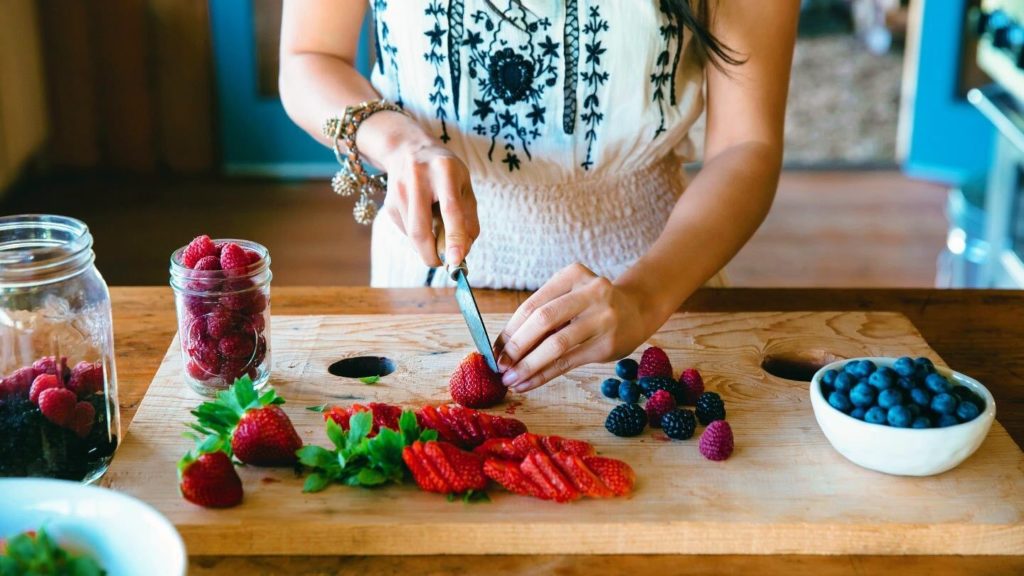
Whether you’re focusing on eating healthier or are making a direct move against sugar and saying to heck with it, we have some great tips for you as to how to cut down your sugar intake (or eliminate it together!).
- Focus on whole foods
Processed foods are more likely to contain added sugars, while whole foods are pretty true to their label!
When eating a low-sugar diet, it’s best to aim for as many whole foods as possible. Think:
- Fresh fruit and vegetables
- Lean and organic sources of meat, like poultry
- Fish
- Nuts and seeds
- Wholes and unprocessed grains and legumes, like rice and black beans
Some dairy products have added sugars in them, but you can choose to keep these in, such as yogurt, cheese, milk, etc., if it works for your personal lifestyle!
- When choosing a beverage, go for water
When watching your sugar intake, it’s best to stick away from beverages like lattes, sodas, bottled juices, bottled teas, bottled coffees, etc., and stick with the tried and true water.
Of course, this doesn’t mean you’re banned from drinking any other beverage aside from water! But just be cautious as the sugars in beverages can add up fairly quickly. Coffee and tea when homemade are both wonderful ways to still enjoy the flavor in drinks while not having any added sugar.
Another great way to drink something other than water is by adding mint leaves or fresh fruit to your water!
- Read labels
The labels will always get you! Make sure that if you’re buying sauces, cans, or any packaged food, you read the label carefully to make sure that there aren’t any added sugars in there.
For instance, rolled oats are a wonderful way to add whole grains and fiber to your morning breakfast. But rolled oats in a to-go cup with a myriad of added sweeteners, sugars, and other strange ingredients maybe aren’t be such a wonderful way.
Here’s a list of many of the disguises added sugar goes under:
- cane sugar or brown sugar
- corn syrup or high fructose corn syrup
- evaporated cane juice
- sucrose
- fructose
- dextrose
- lactose
- glucose
- invert sugar
- beet sugar
- coconut sugar
- maple syrup
- agave syrup
- rice syrup
- apple or grape juice concentrate
- honey
- demerara
- sucanat
- panela or piloncillo
- turbinado
- muscovado
While some of these sweeteners, like maple syrup, honey, and coconut sugar, are natural, they still do count as added sugar.
- Be wary of artificial and “natural” sweeteners
Many times, low-sugar diets or low-sugar products will tout that they’re sweet but have zero sugar. This is called a marketing ploy. What they really mean to say is that they’ve sweetened the product with an artificial sweetener to make your brain and taste buds think that you’re eating sugar so that you get pleasure from it, but still no added sugar.
However, there have been some studies suggesting that increased and consistent consumption of artificial sweeteners will potentially lead to a drastic alteration in gut bacteria and ultimately spike blood sugar levels.
It can also potentially trigger metabolic derangements, meaning that your body will soon become accustomed to thinking that tasting sweet means it won’t be receiving calories. So when you do go to eat something with actual sugar in it, your body won’t know to use that food as a source of fuel and you’ll most likely end up storing it.
Now, there are some natural sweeteners like Stevia, but even then you should still be cautious. Sometimes, these natural sweeteners can trigger bloating and abdominal discomfort.
It’s best to use these “zero calories” sweeteners as minimally as possible.
- Use other flavor enhancers
Yes, there are other ways to add deliciousness to meals other than sugar! Trust us, they do exist!
In place of sugar, focus on fresh or dried herbs, like rosemary, thyme, and oregano. Add healthy fats, like olive oil, avocado oil, or coconut oil, to dishes to help with satiety and as a way to marinate the flavors from the herbs.
Don’t forget to use (sea) salt! While table salt is something to also be cautious of overconsumption, sea salt has been shown to actually protect against hypertension.
Now, we know you don’t want to throw herbs onto a dessert or say chocolate (which 100% chocolate does exist! It’s very bitter, but it is technically still chocolate). So instead of going all “salt bae” with the savory flavorings, try using cinnamon, vanilla extract, or fruit as a natural form of sweetness! Cinnamon and vanilla are actually wonderful because they’re typically sugar-free (just check the label on the vanilla, because some brands add sugar), and give you the sense of eating something sweet.
- Get sleep!
This isn’t too much of a surprise (although maybe to some, it is!), but the biggest way to reduce sugar intake and the cravings for sugar are to get not only an adequate amount of sleep but also quality sleep.
Several studies have pointed to the fact that a good night’s sleep is correlated to less sugar consumption the next day.
If you’re currently struggling with sleeping at night, be sure to consult your healthcare professional as to how to address your sleep issues. Sleep is absolutely vital to just live your life healthily and fully. If you want some quick suggestions for better sleep, check out this article!
Healthy Holiday Desserts

We totally get it- it can be so frustrating when you’re following a diet for medical reasons during the holidays!
Do you cheat and just deal with the consequences of having a flare-up? Or do you sulk and resent everyone without an allergy or health condition (believe me, we’ve done both!)?
Well, you don’t have to anymore! We’ve compiled our top 65 favorite holiday treats that range from vegan all the way to Keto (and everything in between: Paleo, gluten-free, and dairy free, as noted!).
You have everything from cookies to cakes to pies to tarts, and a mix of the classics coupled with some fun twists. So don’t think that Santa is the only one allowed to have some sweets this holiday season!
Plus, these recipes are fairly easy to follow along (a few almost too easy ha!), so blast some fun holiday music, crank the oven, and get baking!
Paleo
- Paleo Ginger Molasses Cookies (Paleo, Vegan, Dairy Free, Gluten Free)
- Chocolate Hazelnut Tart (Paleo, Vegan, Gluten Free, Dairy Free, Keto Option)
- Paleo Vegan Slice and Bake Christmas Tree Cookies (Paleo, Vegan, Gluten Free, Dairy Free, Low Sugar, Nut Free)
- Paleo Spice Cake (Paleo, Vegan, Dairy Free, Gluten Free)
- Paleo Chocolate Brownie Cookie (Gluten Free, Dairy Free)
- Paleo Gingerbread Bundt Cake (Paleo, Gluten Free, Dairy Free)
- Chocolate Hazelnut Cookies (Paleo, Vegan, Gluten Free, Dairy Free)
- Paleo Pecan Pie (Gluten Free, Dairy Free, Paleo)
- Paleo Peppermint Cookies (Paleo, Gluten Free, Dairy Free, Vegan)
- “Grinch” Cupcakes (Paleo, Vegan, Gluten Free, Dairy Free)
- Paleo Gingerbread Truffles (Gluten Free, Dairy Free, Vegan, Paleo)
- Paleo Chocolate Pecan Pie (Gluten Free, Paleo)
- Homemade Thin Mints (Gluten Free, Paleo)
- Salted Caramel Thumbprint Cookies (Gluten Free, Paleo)
Vegan
- Vegan Linzer Cookies (Paleo, Gluten Free, Dairy Free, Vegan)
- “Grinch” Cupcakes (Paleo, Vegan, Gluten Free, Dairy Free)
- Vegan Double Chocolate Chip Cookies (Vegan, Gluten Free, Paleo Option, Dairy Free)
- Peanut Butter Cup Cookies (Gluten Free, Vegan, Dairy Free)
- Red Velvet Cake (Gluten Free, Dairy Free, Vegan)
- Vegan Peanut Butter Blossoms (Vegan Gluten Free, Dairy Free, Low Sugar)
- Vegan Pumpkin Sugar Cookies (Vegan, Gluten Free, Dairy Free)
- Vegan Spice Cake (Paleo, Vegan, Dairy Free, Gluten Free)
- Vegan Snickerdoodle Cookies (Vegan, Gluten Free, Dairy Free)
- Healthier Peanut Butter Buckeyes (Vegan, Gluten Free, Dairy Free)
- Vegan Chocolate Chip Cookies (Gluten Free Option, Paleo Option)
- Chocolate Hazelnut Tart (Paleo, Vegan, Gluten Free, Dairy Free, Keto Option)
- Chocolate Hazelnut Cookies (Paleo, Vegan, Gluten Free, Dairy Free)
- Chocolate Chip Cherry Cookies with Macadamia Nuts (Gluten Free, Vegan, Dairy Free)
- Vegan Chocolate Hazelnut Star Bread (Refined Sugar-Free
- Oatmeal Chocolate Chip Cookies (Vegan, Gluten Free, Dairy Free)
- Gluten-Free Vegan Samoa Cookies (Vegan, Gluten Free, Dairy Free)
- Eggnog Cake (Gluten Free, Dairy Free, Vegan)
- Peanut Butter Banana Oatmeal Cookies (Gluten Free, Vegan, Dairy Free)
Gluten-Free
- Gluten-Free Peanut Butter Cup Cookies (Vegan, Grain Free, Gluten Free, Dairy Free)
- Double Chocolate Chip Cookies (Vegan, Gluten Free, Dairy free, Paleo Option)
- Paleo Pecan Pie (Gluten Free, Dairy Free, Paleo)
- Gluten-Free Pumpkin Sugar Cookies (Gluten Free, Vegan, Dairy Free)
- Gluten-Free Snickerdoodle Cookies (Vegan, Gluten Free, Dairy Free)
- Healthier Peanut Butter Buckeyes (Vegan, Gluten Free, Dairy Free)
- Chocolate Hazelnut Cookies (Paleo, Vegan, Gluten Free, Dairy Free)
- Chocolate Chip Cherry Cookies with Macadamia Nuts via Crowded Kitchen (Gluten Free, Vegan, Dairy Free)
- Red Velvet Cake (Gluten Free, Dairy Free, Vegan)
- Gluten-Free Spice Cake (Paleo, Vegan, Dairy Free, Gluten Free)
- Oatmeal Chocolate Chip Cookies (Vegan, Gluten Free, Dairy Free)
- Chocolate Hazelnut Tart (Paleo, Vegan, Gluten Free, Dairy Free, Keto Option)
- Gluten-Free Vegan Samoa Cookies (Vegan, Gluten Free, Dairy Free)
- Eggnog Cake (Gluten Free, Dairy Free, Vegan)
- Peanut Butter Banana Oatmeal Cookies (Gluten Free, Vegan, Dairy Free)
- Gluten-Free Almond Butter Bars (Gluten Free, Dairy Free)
- “Grinch” Cupcakes (Paleo, Vegan, Gluten Free, Dairy Free)
- Bananadoodle Cookies (Vegan, Gluten Free, Dairy Free)
Keto/Low Sugar
- Keto Gingersnap Cookies
- Keto Snickerdoodle Cookies (Gluten Free, Keto)
- Keto Peanut Butter Cookies
- Christmas Trifle (Keto, Gluten Free)
- Pecan Sticky Buns (Keto, Gluten Free)
- Keto Candy Cane Pie (Gluten Free, Keto)
- Chocolate Hazelnut Tart (Paleo, Vegan, Gluten Free, Dairy Free, Keto Option)
- Keto Chocolate Chip Cookies (Gluten Free, Dairy Free, Keto, Low Sugar)
- Soft Cookie Pie (Keto, Gluten Free, Paleo)
- Gingerbread Bars (Keto, Gluten Free)
- Keto Christmas Sugar Cookies(Gluten Free, Low Sugar, Keto)
- Gluten-Free Keto Chocolate Chip Cookies (Gluten Free, Keto)
- Hazelnut Cacao Cookies (Paleo, Gluten Free, Keto, Vegan) *remove the sweetener! Add in a keto-friendly sweetener if you’d like*
- Keto Eggnog Cheesecake (Keto, Gluten Free)
Vegan Diet 101
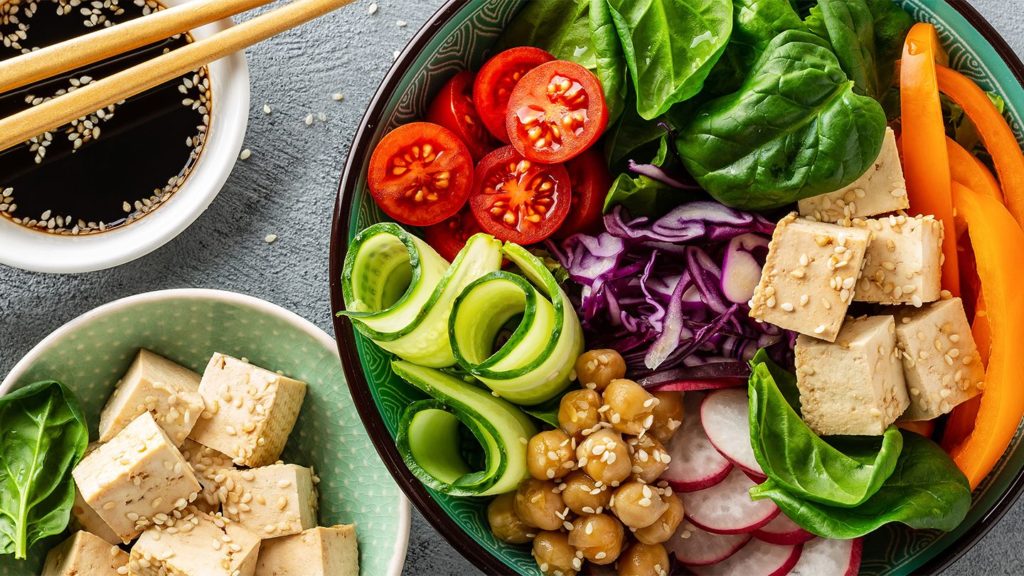
What is a vegan diet?
The vegan diet is actually a part of a much larger lifestyle, which is veganism. Veganism is defined as a means of living without the exploitation of animals, with regard to food, clothing, makeup, and other forms.
The vegan diet stems from an overall vegan way of life in that it encompasses all foods except those that come from animals. It is often referred to as a plant-based diet, although eating a plant-based diet can also mean eating minimal animal products.
There are many reasons one might follow a vegan diet, from ethical to health to personal, as well as several different types of veganism, so let’s dive into them!
Different types of vegan diets:
Whole-food vegan diet: the most flexible diet of the vegan diets is the standard whole-food vegan diet. On this diet, you eat only plant-based foods, such as fruits, vegetables, whole grains, nuts, seeds, and legumes, and occasionally incorporate specialty items, like vegan desserts and treats. Unlike some forms of veganism, you are able to eat whatever foods you like cooking.
Raw food vegan diet: this is similar to the standard whole-food vegan diet, except you only eat foods that are raw, or cooked below 118F. This includes eating lots of fruits, vegetables, nuts, seeds, and other plant-based foods are raw.
80/10/10: This diet essentially minimalizes the amount of fat you consume, specifically from plant sources, so it focuses mostly on carbohydrates and proteins.
Raw till 4: this form of veganism is essentially the raw food vegan diet, except low in fat and you’re allowed to have a cooked meal for dinner, rather than only raw food.
Junk food vegan diet: this form of veganism is still considered “plant-based,” but not whole foods-based, which is more optimal to eat. It relies heavily on processed vegan “meats” and treats, such as Oreos and vegan ice creams, whereas a standard whole-food vegan diet has more of an abundance of unprocessed foods.
Of course, you can include treats from time to time! But it is important to focus on eating mainly whole and unprocessed foods and incorporating treats in from time to time.
The starch solution: oftentimes, a vegan diet is heavy in carbohydrates, but this particular form of the vegan diet aims to have a low intake of fat and a high intake of carbohydrates. What makes this different from the 80/10/10 diet is that it includes cooked carbohydrates, like rice and grains, over just raw carbohydrates, like fruits.
What are the benefits of eating vegan?
Now that we know a little bit more about what types of vegan diets are out there, let’s go over some of the benefits of eating a standard vegan diet, as well as some of the negatives (because there is always a downside to everything!).
Benefits:
Potential weight loss: though eating a vegan diet can also lead to weight gain, many find that they are able to lose weight faster and keep it off longer than when compared to other diets as recommended by the American Dietetics Association, the American Heart Association, and the National Cholesterol Education Program.
Can lower blood sugar: those who follow a vegan diet also have up to 78% lower risk of developing type 2 diabetes.
Can reduce LDL and total cholesterol
May reduce the risk of Alzheimer’s
Risks:
Risk of developing leaky gut: legumes contain high amounts of lectins, and as legumes tend to be the main source of protein, it can increase one’s risk of developing leaky gut syndrome in which the lining of your intestinal tract becomes more permeable.
Risk of anemia: because you are avoiding animal proteins, it is easy to become deficient in heme iron, which is essential. While iron is found in plant sources, the type of iron found in plants is less absorbable than iron found in animal sources.
Risk of B12 deficiency: vitamin b12 is an absolutely essential vitamin for the human body to function properly, and is only found in animal sources. It does not naturally occur in plants. Being too low in b12 can lead to irreversible damage, so it is necessary for those whole follow a vegan diet to also take a vitamin b12 supplement.
Risk of disordered eating: like with all diets, very strict eating regimes can often trigger eating disorders of disordered eating behaviors in those who are susceptible to restriction and obsession.
Risk of being too low in zinc: like vitamin b12, zinc is also an essential nutrient that one needs in order to function properly, and following a vegan and/or vegetarian diet can inhibit the absorption of zinc.
There are many benefits to following a vegan diet, but there are also some downsides that one must be cautious and aware of. It is often recommended by many dietitians and physicians to include proper supplementation of vitamins and minerals in order to ensure that you are consuming all that your body needs to properly function. Always consult your doctor to determine your specific needs.
What to eat and what to avoid
Do enjoy:
- Fresh and frozen produce, including all vegetables and fruits
- Nut and nut butter
- Legumes
- Tofu, tempeh, and seitan in moderation (as these are processed forms of protein)
- Seeds
- Calcium-fortified plant milk and yogurts, such as coconut milk, almond milk, and the like
- Nutritional yeast
- Whole grains, such as rice, quinoa, faro, etc.
- Sprouted and fermented foods such as pickles, kimchi, kraut, Ezekiel bread, Kombucha, and miso
- Plant-based protein powders, such as pea protein, sacha inchi protein, and hemp protein
Avoid:
- All meats
- Eggs
- Dairy products, including milk, yogurt, cheese, and ice cream
Sample Meal Plan:
Breakfast: Chocolate banana smoothie with 1 frozen banana, ½ cup frozen cooked zucchini, 1 cup spinach, 1 cup unsweetened almond milk, 1 scoop vegan protein powder, 1 tbsp cacao powder, 1 tsp vanilla extract
Snack: carrot sticks with 2 tbsp guacamole
Lunch: Hummus wrap with a whole wheat organic tortilla, 2 tbsp hummus, ½ cup chopped lettuce, cherry tomatoes, shredded carrots, 1 tbsp chopped dill, 1 tbsp balsamic vinegar, 1 tsp olive oil, and ½ cup washed chickpeas
Snack: ¼ cup nuts or 1 apple + 1 tbsp almond or peanut butter
Dinner: BBQ stuffed sweet potato with black beans
Dessert: square of vegan chocolate or bowl of berries with coconut cream
How to eat out on a vegan diet:
Dining out can be challenging as a vegan, but it also doesn’t have to be! There are definitely workarounds to eating out as a vegan.
You can always call a restaurant ahead of time to see if they offer any vegan options, and if so, what they might have. You can also peruse restaurant menus online to see what might be available.
Oftentimes, you can also make a simple dish vegan, such as a salad, by removing any cheese or eggs that they might add, and requesting a vinegar and olive oil dressing rather than a cream-based dressing.
Ethnic restaurants, such as Mexican, Indian, Thai, and Ethiopian, tend to have more vegan options as these are diets that can be very plant-based.
When in doubt, always call ahead! Most restaurants are willing to make accommodations, and many of the national chains have great options when eating out on the fly.
Where to find vegan recipes
It is always preferable, however, to cook food at home, as this way you can ensure that it is to your liking, monitor how much you’re spending, and make sure that it is healthy!
There is an abundance of resources to find plant-based recipes, from breakfast to dinner to holidays and desserts!
Some easy and simple vegan recipes can be found on Minimalist Baker, Choosing Chia, Oh She Glows, The Banana Diaries, and Cotter Crunch.
Take Away
Following a vegan diet has many benefits, and can definitely be delicious! It can aid in helping you to achieve your health goals and help you to find new foods that you like!
However, it can also be a very restrictive diet, and you do need to be cautious about making sure you are meeting your body’s needs. Always consult a dietitian and doctor before starting any diet, and include what will help you most in living your best life!
Managing Stress
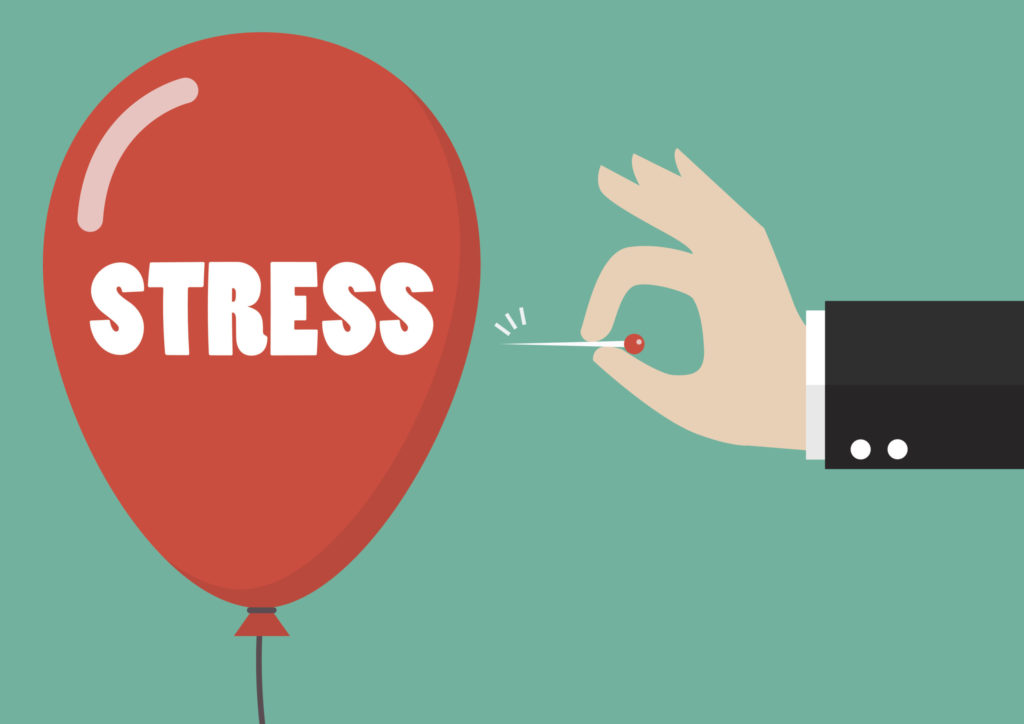
Stress, stress, and more stress … day to day, in our jobs, politics, relationships, etc.
So, what can you do? Here is a list to live by:
My suggestion: pick two or three of these tips, apply and use them for two weeks. See how they make you feel – rate any improvements. Then pick two or three more to add. Gradually introduce them … too many too soon – too much.
Tips To Live A Longer And Healthier Life:
1. Drink at least 8 full glasses of water per day.
2. Get at least 7 hours of sleep per night and shoot for 8.
3. “Stress” is a killer. Learn to meditate, practice yoga, or tai chi, or take up a relaxing hobby. Control your breathing. Chronic stress can lead to burnout, inflammation, brain fog, and disease.
4. Eat at least 3 servings of vegetables, leafy, cruciferous dark greens per day.
5. Cut back dramatically on your sugar intake.
6. Pick organic fruits and vegetables whenever possible.
7. Make sure you have a diet rich in omega 3’s … fish, walnuts, chia seeds, flax seeds, egg yolks, and Brussels sprouts.
8. Have your vitamin D levels checked. Most people are deficient in this essential vitamin. Preferable supplement D3
9. Magnesium is also an essential mineral. Most Americans are deficient. Have your level checked.
10. Maintain good dental care, brushing at least twice a day and flossing daily. Poor dental hygiene and chronic inflammation can lead to a heart attack.
11. Cut out processed, pre-packaged foods. They are loaded with hidden sugars, chemicals, preservatives, and food coloring and rely heavily on GMO products.
12. Cut back on all white flour products and opt instead for “whole grains” and or even eliminate wheat and gluten from your diet. Many Americans are gluten sensitive.
13. If you smoke “STOP”!
14. Americans consume vast quantities of soda. As much as 20% of America’s extra weight we carry around is attributed to drinking sodas. Cut back or stop.
15. Eliminate artificial sweeteners from your diet to include “diet” sodas. There are numerous risks associated with their use including neurological issues.
16. Eliminate cheap oils from your diets like corn, canola, and peanut, and opt instead for olive oils, avocado, coconut, etc.
17. Add healthy fats to your diet. Nuts, avocado, etc.
18. Use natural sweeteners such as stevia or monk fruit in place of cane sugar when possible.
19. Try baking with gluten-free flours such as almonds, tapioca, coconut, cassava, etc. They are much healthier. Recipes abound.
20. Be sociable and examine your relationships and expand if possible. Good friends and family increase life expectancy.
21. Enjoy your career. Be careful that it is not a detriment to your health … too many long hours, shift work, low job satisfaction, and too much continuous stress. Rethink a career that is always stressing you out.
22. Exercise and keep moving. Shoot for at least 30 minutes per day of moderate aerobic and weight training five days per week.
23. Seek a higher calling. Look at your spirituality. Celebrate being alive. Take time to daily recount your blessings for the good things in your life. Celebrate being alive and part of this Kingdom of God’s … in church, at home … with friends.
24. Always take time for yourself. Learn to say no. Be sure to set aside some time for yourself…every day.
25. Last – but not least … caffeine and alcohol. Listen to how your body reacts to these two substances. The simple rule of thumb is “all things in moderation.”
Have a great day and I hope some of these tips get you thinking.
Sincerely,
Don Wright
How to Have a Low-Carb Holiday

Whether you’re following the keto diet, trying to keep sugar levels down, or just aiming to eat lower carbs in general, we have some tips for how to enjoy yourself during the holidays all while keeping the carbohydrates in check!
- Educate yourself.
If you’re just starting a low-carb or keto diet, or you’re a seasoned pro, it’s a good idea to have a list or general idea of the foods you can enjoy and the ones you’re trying to avoid. Some great low-carb but nutrient-dense foods include:
- Fatty fish
- Leafy greens
- Eggs
- Chia seeds
- Greek yogurt (no sugar added version)
- Nuts
- Olive oil
- Flaxseeds
- Strawberries
- Summer squash
- Some winter squash (like pumpkin)
Of course, this is just a general list, but do some research on foods you specifically enjoy and whether or not they would fit into your plan!
- Plan ahead.
Whether you’re hosting for the holidays or you’re going to another friend’s get-together, always make sure to plan ahead! Check-in with your host (see below), gather some recipes that you’d be interested in making, and remember that if you’re not following a diet as prescribed by the doctor or nutritionist, it’s okay to go easy on yourself if everything doesn’t work out perfectly!
- Ask your host.
Never be afraid to reach out to your host, especially if you’re following a medically-prescribed diet! Your host can inform you about what’s potentially going to be there, and you can ask if you can also bring a dish or two for not only you to enjoy but others as well!
- Keep up healthy habits.
A lot of the time, it’s easy to fall out of the good routines that keep us mentally and physically feeling well during this time of year. With everything going on, you might feel like you’re trying to cling to structure when it’s anything but!
Remember that it’s okay to give yourself grace. You’re not and never will be perfect. So if you fall off track at any moment, don’t fret! You can always choose again in the next. Just simply thank yourself for being able to catch yourself, accept whatever it is that you did, and choose again in the next moment!
That being said, you can also try to keep a few healthy habits here and there that help you to remain sane during this time of year! Making time for yourself to feel good and centered is crucial when we’re being asked to do 20 million things! Here are a few habits we like for this winter season:
- Taking a short daily walk outside (being outside is key!)
- Meditating
- Making sure you’re including accepted fruits and vegetables during the day
- Taking time for yourself to do a fun hobby: drawing, knitting, reading, etc.
- Talking to a friend or family member that you trust
- Go in with your favorite low-carb recipes!
Our last tip involves you actually getting to make and enjoy some low-carb treats for the holidays! The easiest way to ensure that you’re keeping your carbohydrates under control is by bringing along your favorite dish to a party or get-together so that you know you can absolutely enjoy something at the party!
Below are a few of our favorite keto and low-carb recipes, everything ranging from appetizers to mains and sides, and of course, desserts!
- Keto-friendly “Mac n Cheese”
- Brussels Sprout Bacon Bites
- Cauliflower Stuffing
- Roasted Cauliflower Mash
- Paleo Mushroom Frittata
- Avocado Chips
- Lemon Thyme Roasted Chicken
- Low Carb Pecan Pie
- Low-Carb Cranberry Sauce
- Pressure Cooker Pecan Pie Cheesecake
- Keto Pumpkin Pie
- Keto Salmon Ricotta Pastry Roll-Ups
- Almond Crackers
- Best Ever Keto Quesadillas
- Low-Carb Cracker Toffee
- Keto Carrot Cake
- Keto Brownies
- Cheesy Cauliflower Bread
- Turkey Lettuce Taco Cups
- Ground Turkey Zucchini Skillet
Meal Prepping 101
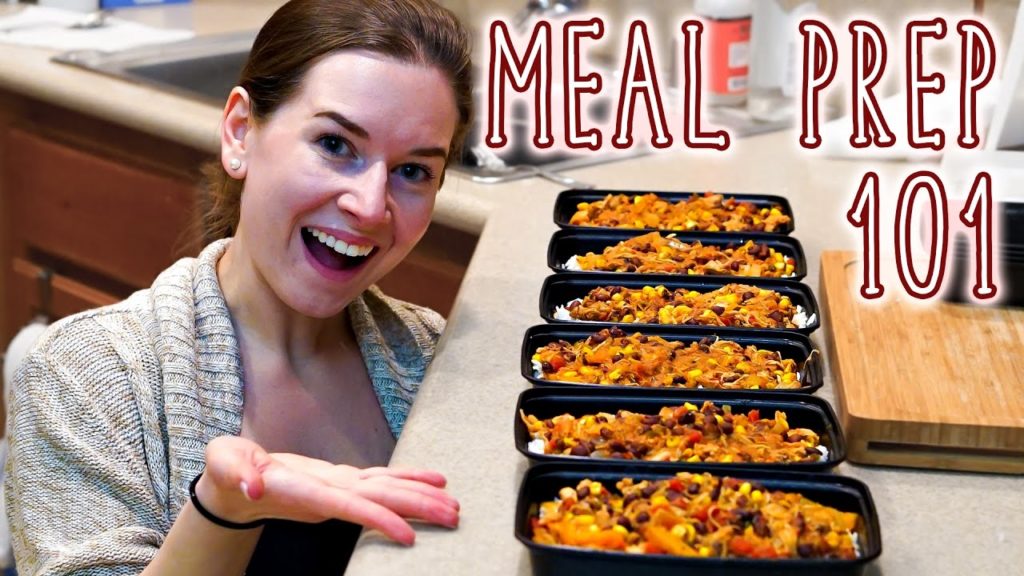
What is meal prepping?
Well, it’s not something that you can find in Webster’s dictionary (yet), but meal prepping is essentially the concept of preparing meals or recipes in batch form so that you save time during the week!
Meal prepping comes in handy when you need to save time in the morning with an already made breakfast or a packed lunch to take with you. Or when it’s dinner time and you honestly can’t stand the notion of cooking a full blown meal at the end of the day.
Don’t worry, we feel you!
Meal prepping is also a great way to have access to healthy and affordable meals because you are the one in charge! That’s right, you get to decide what you’ll eat and you have the power over what goes on it!
Let’s go over a few basics principles and steps to meal prepping, then we’ll share a few of our favorite go-to meal prep recipes!
- Keep it simple.
You probably have heard it before, but simple really is best, especially when it comes to meal prepping. You don’t need the fanciest gadgets (more on that in the next section) nor some 5-star restaurant recipe in order to prepare healthy and tasty meals for your week. If this is your first time in the meal prep game, we highly recommend starting small so that you’re not overwhelmed. Maybe roast some veggies on a pan with some good fat and seasonings, or even just dicing up a bunch of raw vegetables and fruit so that you can have an easy snack or save time making lunch and dinner.
Meal prepping does not have to be complicated, nor should it! This should be taking stress away from you, not adding it to your day.
- Gather your kitchen essentials.
We recommend keeping a few glass containers on hand, some baking sheets, and casserole dishes, depending on what you’re making. If you’re making a big pot of chilli, make sure that you have the soup container to carry it!
There are also meal-sized containers that you can actually pre-portion food into if you’re really crunched on time during the week and just want something quick and easy that you can grab from the fridge.
- Decide what you’re making.
Now, this is where you can really customize your meal prep to fit your lifestyle. Decide whether it’s most helpful to you during the week. This could be a simple sheet pan recipe or it could be several meals that you actually think out so that you’re ready to go on any given day. Another thing to keep in mind is making sure that you have enough room in your fridge and/or freezer for storage! Nothing is worse than making too much food that you can’t store properly!
You’ll also want to think about how many meals you’ll be cooking for. Do you want breakfast ready to go five days a week? What about dinner?
Make sure you’re thinking about how you’ll reheat the food too, if at all (some people like their food cold, we’re not judging!). Are you a person that likes to microwave things and call it a day, or will you whip out a sautè pan and reheat the food there? This also makes a difference in deciding what you’ll make!
- Schedule + Cook!
Now for the actual meal prep part! Take some time on a Sunday or whatever day fits your schedule and when you grocery shop (always best to prepare the food at its freshest), and block in a couple of hours, depending on how much you’re prepping. You could only do a pan of sheet-roasted veggies or you could go through the works of prepping breakfast, lunch, and dinner. It’s all up to you! You can also meal prep multiple times by prepping food for 3-4 days, and then cooking again when you need to!
What about food storage safety?
Good question, and glad you asked! When storing your food, we recommend checking out the FDA’s guide on how long each recipe or food will last in the fridge and/or in the freezer. Remember that it also depends on how cool your fridge is. Some very full fridges tend to not be as cool as the thermometer states it is. Always best to err on the side of caution!
Meal Prepping Recipes
Of course, there are more recipes than what we’re sharing here, but here are a few of our favorites! We’ve included meal-preppable breakfasts, lunches, dinners, and sides. Give them a lookover and enjoy!
Healthy Breakfasts
Healthy Lunches
One Pot Moroccan Chickpea Salad
Healthy Dinners
Honey Sriracha Glazed Meatballs
Cauliflower Rice Burrito Bowls
Healthy Sweets
Healthier Peanut Butter Buckeyes
Healthy No Bake Salted Caramel Bars
Surviving the Holidays on a Diet

The holidays can be stressful enough as it is, but then figuring out how to navigate a feast when you’re dealing with dietary struggles and restrictions? Yeah, not exactly a cake walk.
Well, it can be, when you have the right tools. But if this is your first (or hey maybe even second or third!) time going into the holidays on a specific diet that you need to follow, you might be freaking out. The holidays aren’t exactly naturally geared towards the Paleo eaters, nor vegans, nor gluten-free foodies, etc.
Not only that, but now you have to deal with people’s commentary on your dietary changes and choices?! We know. It’s frustrating, overwhelming, and you might even feel like skipping it all together.
But with these tips, you don’t have to. You can enjoy the holidays just as much as anyone else! So read along, take what resonates with you, and go forth with confidence into the holiday season (and hopefully some more peace of mind!).
- Remain calm.
These are the holidays, remember? You’re supposed to have fun! Nowadays, we’ve added a lot of unnecessary stress. The last thing you need to be worrying about is someone commentating on your diet or whether or not you’re going to be able to eat anything.
So take a deep breath. It’s all going to be okay. It doesn’t have to inherently be difficult! And adding stress to your plate (so to speak) won’t make anything better. If you or a loved one have some dietary restrictions, it can always be solved and in a way that’s enjoyable and beneficial to everyone, including you.
Try not to allow anxiety to build up leading to the event, whether that’s Thanksgiving, Friendsgiving, a holiday party, etc. What helps relieve some anxiety is going in with a plan, which is what we’ll talk about here. But leading up to the feast, make sure you’re doing things that help ease your stress, such as these ideas:
- Get outside for some fresh air
- Move in a way that feels good to you
- Eat foods that you enjoy and that make you feel good
- Connect with friends and family that leave you feeling full of joy rather than depleated
- Practice meditation
- Organize your space
These activities will just help you go into these sometimes difficult situations with an open mind! Because if you’re expecting an open mind from someone, you need to also demonstrate that 😉
- Listen with open ears.
Open mind and open ears go hand in hand. If you’re at a party and someone makes a comment, try not to be quick to defend or interject. If a concerned family member is urging you to try their green bean casserole, but your doctor has advised you absolutely no dairy, allow them to be heard.
No one likes to feel like they aren’t heard, and I’m guessing if you’re reading this, you’re familiar with the feeling. Something I always like to practice- this is going back to our kindergarten days- is treat others the way you want to be treated. They might not show you the same respect back, but at least you’ve set the example, and it absolutely will make it’s way back to you.
So allow your family member to say their piece. Recognize that they just might not get it because they don’t know what it’s like to walk in your shoes, and that’s okay. They don’t need to get it in order for you to enjoy your life and have a good time. They can have their own stories, while you can live your truth. It won’t do you any harm!
- Explain yourself with a smile!
Now that you’ve allowed your family member to say their piece, you can absolutely explain why, as much as you’d like to try this family recipe, you unfortunately can’t and state a brief reason why. You don’t need to launch into several reasons why you can’t have it (hey, maybe you just don’t want it either!), so keep it brief at first. If they’re genuinely interested, go ahead and share more!
Just keep in mind that some people aren’t receptive to the long-form reasoning behind why you are choosing to eat the way you eat, even if they’re curious. And that’s okay! Not everyone will be open minded. But it will be better for you to remain open minded, at the very least for peace of mind.
- Accept that you can’t control how people react.
Life is a lot easier when we accept that no matter what, we will never be able to control how people react. Take a deep breath here because I know how annoying it is that Great Aunt Betty is very stuck in her ways.
And you, allowing yourself to be hurt by someone else’s reaction, is unnecessary, and sometimes excruciating, mental suffering. So take a deep breath and realize what you can control: your next reaction, or better yet, your response. Some family members try to push our buttons, whether they make fun of your diet or say what you eat is weird (trust us, we’ve heard it all!), but just because they make the effort to doesn’t mean we have to allow it to disturb our mental peace.
If it’s getting to be too much though, you always have permission to excuse yourself from the conversation. We don’t expect you to just grin and bear it, especially is someone is being persistent. Take a few moments to gather your composure, a deep breath always helps, and calm down before re-entering the party.
The next time someone reacts in a not-so-great-way to how you’re eating, remember this: isn’t it funny how worked up people get over someone else’s diet? How odd, right?! Keep that in mind and hopefully it will bring a smile to your face while someone else’s tail feathers are getting ruffled- but not your own!
- Bring something that you’ll enjoy and can share with everyone else.
Saving the best tip for last. The best way to integrate your diet seamlessly into the holiday feast is by bringing a dish (or two!) to share with everyone. We always recommend bringing a few because naturally, you don’t want to be only eating one thing at the party!
It may sound like a lot of work, but you can also enlist the help of trusted family members to help you. Sometimes we get lucky, and the host will graciously extend to have something prepared for you so that you don’t have to sweat what the heck you’re going to eat! But that doesn’t always happen, so we recommend making sure that you have a few options. Choose two easy put-together dishes and one that you absolutely love. That way, you won’t be hoarding what you made, scared you’ll be leaving starving, and you’ll actually get a few different flavors in there!
Stumped on what to make? We have a round-up post of Thanksgiving and holiday dishes from all diets: Paleo, vegan, vegetarian, and gluten-free! Be sure to check that out for not only side dishes and mains, but desserts too!
Also remember that if you don’t have to follow a diet so strictly all the time (i.e. it’s not an allergy nor prescribed by a doctor or a lifestyle choice), then it’s okay to go easy on yourself. Not everything has to be perfectly Paleo if it doesn’t need to be, nor completely dairy free, gluten free, etc. And if it’s causing you more stress to restrict when you don’t need to, then allow yourself to have a bit of your favorites! It is the holidays, afterall!
Most importantly, remember to breathe and have fun. The holidays are meant to be enjoyed. Don’t take yourself too seriously and know that it’s all going to work out in the way that it should. And now you’ll have a plan to help you actually relax during this time of year!
Happy holidays!
Meditation What, When, and How to do it?

How to start meditating
You’ve probably heard it before.
You should start meditating!
It’s a sentence that’s said quite a lot these days and for a good reason. We lead very stressful lives, and many of us walk around, struggling from both mini and rather large traumas that are greatly impacting our day-to-day lives, whether we’re aware of it or not.
But many people don’t know where to start, and it’s a common misconception that meditation is just for stress relief, though that can be a positive side effect when one practices meditation.
So let’s dive into what meditation actually is, why you should start, and how to actually get going!
What is meditation?
Now, let’s clear this up. Meditation is not sitting on a pillow for hours and chanting OMMMMMMat the top of your lungs.
It does require you to sit still and sit still with your thoughts. Essentially, meditation is a technique one can use to achieve a greater sense of mindfulness, and emotional stability, and to stop being in the passenger seat of your own body and mind. Meditation teaches you how to finally regain control of your thoughts, stop operating from your subconscious mind, and start finally consciously choosing how you respond, think, and act with great ease.
Why meditate?
Well, apart from regaining control of your life, there are many great benefits to adopting a practice of meditation.
It can, indeed, reduce stress levels and symptoms caused by a stress-triggered medical condition.
It can also be effective in reducing chronic pain. In one study that included 3,500 participants, those who created a habit out of meditating daily had fewer complaints of chronic and intermittent pain than those who did not daily sit on their pillow (metaphorically speaking).
Meditation is also a great way to improve sleep. One study found that those who meditate fall asleep sooner and stay asleep longer than those who do not meditate.
But there are a few other benefits as well. Studies are now showing that when you practice meditation daily and habitually, you can actually begin to shift the molecular structure of DNA that is responsible for poor health and mental illnesses. You see, what meditation does is it strengthens the mind-body connection, helping you to harness a greater awareness of what is going on inside your body and inside your mind, two operating systems that at times feel like they’ve both gone rogue.
With meditation, you can then start to unravel why you act the way you do, and why you feel the way you do, and ultimately start to shift in a direction that feels better. A direction that you actually want to go in.
When you practice meditation consistently, these are some of the benefits you may reap.
Okay, that’s great and all…but can I actually do this? And if I can…how?
Well, in short, yes, yes you can do this. I don’t mean to sound like the little engine that could, but I promise it’s not as hard as it sounds. At first, it will feel like pulling teeth. But then you find your groove.
Coming from experience, I was resistant to meditation for years. I thought I didn’t need it because my exercise and my running were my stillness, which in part was true. Running and working out does wonder for your mentality and teach you a lot about resilience. But there’s a lot to learn from mindfully sitting still.
That takes a bit of effort at first. We’re all very good at sitting still to watch our favorite TV show, read a book, or listen to someone speak, but we oftentimes don’t give ourselves that same respect and attention throughout the day that you give your favorite zone-out pastimes. Meditation teaches you how to respect yourself and give yourself the attention that you undeniably give externals hourly and daily.
It’s going to feel really uncomfortable at first; at least it does for most people. But then you have a breakthrough and realize you can keep going. I sometimes like to compare it to when you hit a runner’s high or that feeling you get when you can push through a set. It feels super uncomfortable leading up to that point, but then all of the sudden you get a rush of strength and endurance, and you push through to the final part. That’s sort of what happens during meditation.
But don’t expect that you’ll become the Buddha in the first sitting. It takes a lot to work up to even 30 minutes of meditation, especially if you’re not used to sitting with your thoughts at first. That alone takes some practice in accepting all that your unconscious mind streams through your head and into your cells every single day. Only then can you move past those thoughts and into better thoughts, once you’ve reached the acceptance phase.
To start, try sitting still for 5 minutes. You don’t need to sit on a cushion; you can even just sit in your desk chair, straighten your back and rest your arms where they feel comfortable. Begin to notice parts of your physical body, and place your attention on your breath. You can do only this or you can adopt a mantra, such as “Let go” or “I am” that you just keep repeating in your thoughts to help you detach from the other thoughts floating by.
Gradually increase the time you spend meditating…maybe 20 minutes, or 30. Eventually, you can get to an hour or maybe even two!
Another important part of meditating is being consistent. Like with anything, the more you do it, the better at it you get. Choose a time of day that you can consistently take for yourself: whether that’s first thing in the morning, right before you go to sleep, during your lunch break, or another time. The most optimal times are right before you go to sleep and right after you wake up, as that is when your brain is entering the theta brain wave state.
The point of meditation is to do it as long as it’s serving you. It doesn’t mean that it will be comfortable (and don’t place any judgment on your meditation- there is no right or wrong way to do it, so you don’t need to add a layer of the ego mind to judge yourself if you get caught in a not so great feeling thought pattern). But it will help you to become more mindful throughout your day.
You can do guided meditations, meditate to just music, or meditate in silence- it really is up to you!
A few great resources include:
· Insight Timer, which is an app that you can download for free onto your phone. This app contains thousands of free guided meditations and music, including nature music, guided meditations for weight loss, guided meditations for sleep, and more.
· Dr. Joe Dispenza, who is a NY Times best-selling author of several books, including You Are the Placebo, Breaking the Habit of Being Yourself and Becoming Supernatural. If you check out his website, he has plenty of meditations that go along with his books. They are on the longer side (45 minutes to 1 hour and 30 minutes), but well worth the time commitment.
· Dr. Sue Morter, who recently wrote a book titled The Energy Codes. She has many meditations available on her website as well.
· Deepak Chopra and Oprah Winfrey usually host a free 30-day meditation course that includes free 15-20 minute daily meditations every few months. Check Deepak Chopra’s website for more information.
· Meditative Mind on YouTubehas hours of free meditation music.
· Aaron Doughty on YouTube has several free-guided meditations.
· Headspace, another great app that you can download onto your phone with guided meditations.
· Calm, contains both guided meditations and meditation music for free and for in-app purchases.
Remember, like everything, meditation takes practice. But consistency can greatly impact your day-to-day life in a positive and more mindful way.
How to Shift Your Mindset

I am a firm believer that any lasting changes come from the inside first. And no, I don’t mean what you’re eating (although that can play a role). I mean your mind. How you think? Your perspective.
You see, any measurable physical changes start with the massive, and unfortunately often times immeasurable, mental changes.
Now, if you’re reading this article, you probably already have the hardest part of the mental change down. You desire to change. You want something that’s better than the current life you’re living, and so you’ve initiated a quest to find that change. So let’s get that journey started!
In this article, you’ll find a few tips on how to kickstart those mental changes that you need to make in order to start living the life you desire and truly deserve. Because you do deserve to live an amazing life, and you need to believe that first.
1. How do you view yourself
Perspective is everything. I’m sure you’ve heard countless stories of people rising from poverty, abandonment, and basically nothing, to their dreams. And then there are others that remain in the same place their entire life.
Think that it’s just luck? Nope. It’s how they view themselves, their lives, and life in general. Things can’t happen for you unless that’s within your realm of awareness and possibilities. If you’re looking for a yellow car, chances are you’ll spot the yellow car, but did you notice the green car over there? Probably not, because you were so focused on the yellow car. Our reality is based upon our perception. Take, for example, a glass of water. Some will view this glass as half-full of water, while others will view it as half-empty.
It’s the same glass of water. But your perspective is everything. How you view yourself, how you view your life and your struggles determine the next day, month, year, and the rest of your life.
Do you believe that things happen for you or to you? Do you believe that life is meant to be enjoyed or do you believe you have to suffer? Do you believe that you’re worthy of a loving partner (now, truly ask yourself this because you may want a loving partner, but there’s a difference between wanting something and believing you deserve it), or do you believe you’re destined for loneliness? Are you thankful for life or do you resent it? Do you see your challenges as punishment or opportunities to rise above?
All our reality boils down to is a set of beliefs. Now, you can find evidence to support any belief. Truly, just give it a go. The cool thing is that you’re not chained to these beliefs, whether they’re about yourself, the people in your life, your current circumstances, or life itself. You can change them if you truly want to. It won’t be easy because these beliefs are often set when we’re children or when something traumatic occurs in our lives. But it’s not impossible.
I mean, unless you believe it’s impossible. Then I can’t argue with you! Because you’ll have the evidence to support that. But I have the evidence to support that it is possible. Why else would someone seek therapy, research how to change, and look for examples that the end goal, whatever that may be, exists? Because the evidence is there to support any belief.
So you get to decide what your life will be next. Don’t let previous experiences dictate the rest of your life. That’s only for you to decide. You have the power to experience the best of life, but it needs to start with how you view yourself and whether or not you want to accept that power.
2. Assess your current life and create routines that support your new life
Now that you’ve determined your perspective of yourself and on life, and you’ve decided whether or not it’s one you want to keep, you can assess what doesn’t align and what does align with your perspective.
Are there friends that feed into judgments about other people? Do you have habits, like snacking mindlessly or emotionally eating? Do you keep things tidy and in their places or do you live in chaos?
Start to assess what doesn’t fit the life you want to lead. And know that it’s okay to cut out people or things that are no longer serving you, or worse, doing you harm. For instance, I realized that I was a very glass-half-empty person (thinking I was a realist, but I wasn’t; I was indeed the world’s biggest pessimist). I wanted to change that because I was sick of never seeing the good in things, and always missing out on opportunities. I started making these changes and really becoming aware of how I thought throughout the day, my conversations with friends and family, and my inner conversations with myself (don’t lie to yourself, you have an inner dialogue too!). I realized I had this one friend who no matter what, our conversations were always negative. We were always complaining and lamenting about anything and everything.
I decided that I would try to implement change and shift our conversations to see things more positively, but at the time, my friend wasn’t ready for that change. When I realized I would only continue to feel worse every time that we spent time together, I decided it was necessary for a break. I, of course, loved this friend and wanted the best for her, but knew that what was best for me at this moment was taking time away and really working on myself.
If things don’t align, let them fall away. If they’re meant to be in your life, then they will align with your new life and come around again.
Start adopting the mindset of who you envision yourself to be. If you want to lose weight, but constantly see yourself as overweight and tell yourself you’re “fat,” it’s going to be pretty painful and difficult to lose weight. If you start treating yourself as healthy and strong, your body has no choice but to react to that new mindset shift. How would my ideal version of myself act in this situation? What would he/she say to that? What would my ideal version of me do right now? Start asking these questions and then follow through on the answers. The body doesn’t react to the outside circumstances, it reacts to what the mind tells it to, so the mind needs to stop letting the outside circumstances dictate the inner circumstances. Start reversing it.
For instance, the body doesn’t sense that there is a lion to run from. The mind sees the lion through the eyes and kickstarts the fight or flight process. Now, take this example and place it on, say, you looking at yourself in the mirror. Your mind may see your body as overweight, which then leads you to believe you are, and your body will match that perception. An object in motion stays in motion unless thwarted by an opposing force. You need to be that opposing force. Instead of seeing yourself as overweight, you can look at your body and thank it for what it does. Your lungs breakdown oxygen and delivers it to your working muscles in milliseconds, your stomach digests food so that the intestines can extract nutrients, your eyes can see, your mouth allows you to speak, and your nose allows you to smell flowers…now you’re starting to see yourself in a new light. This person isn’t viewing themselves as useless and overweight, but capable and pretty dang cool for having all of those processes go on at once.
And then your body starts to react to that new person you’re being.
Start with small changes and work your way up. Rome wasn’t built in a day, but it did start somewhere, so begin today. Take note of what no longer fits, whether it’s a set of beliefs, a person, or circumstances, and decide how it can change.
3. Learn to love yourself
One of the more trendy topics, but unfortunately, it’s been very diluted by mass media. Self-care and self-love are two very important concepts when it comes to shifting one’s mindset, but they’re often used interchangeably, which is incorrect. And no, self-care is not zoning out to Netflix and eating a pint of ice cream (though all of the memes on Instagram state otherwise ha!).
Self-love is the love and respect that you hold for yourself, and self-care happens when you love yourself. You can think of self-care as an extension of self-love. Now, I don’t know if you know this, but most of the world doesn’t love itself. If they did, we wouldn’t face the current struggles we now do (constant fighting on a micro and macro level, financial issues, feeding into scare tactics on the news, etc.). I apologize for sounding very John Lennon-esque and cliche, but loving yourself really is the answer to your problems.
Now, loving yourself does not mean that you constantly indulge in self-sabotaging tendencies, but it also doesn’t mean that you’re selfish. In fact, not loving yourself often leads to selfish acts because we’ve swung too much one way. We’ll do too much for others only to feel resentful and so then we take too much back. When you truly love yourself, you feel an equal give and take. Your cup is never empty.
Having love for yourself needs to be treated like any other relationship. Get to know yourself. Treat yourself like you would a child because that’s often how we act anyways. Our adult-selves stem from our childhood selves. What happened in your past that lead you to have acted in this way? Oftentimes, we aren’t reacting to a present situation just because; we’ve been triggered by a present situation that recalled a similar moment in our past that leads us to continue a sabotaging behavior (screaming match with a loved one, binge eating, restricting, missed appointments, etc.). Get to know your triggers and work on healing them, whether with a trusted individual or therapist.
Sometimes, self-love is tough love. It means being firm with yourself even though you don’t want to. For example, if your child wanted ice cream for dinner but you know that it’s better if they have their vegetables and healthy protein, would you continue to let your child eat the ice cream for dinner? You’d want the best for your child, so you would serve them the vegetables (and maybe later have the ice cream 😉 ). The same goes for you and your relationship with yourself.
Self-love really deserves a whole separate article, but for now, focus on ways that you can show yourself, love. Learn to say no when you need it, and yes when you do. Understand and instill into your mind that you’re worthy of your best life, and that you deserve to take any means possible and necessary to get there. Treat yourself with the love and respect that you would your partner, your family member, your child, or your friend. You’re just as human as they are.
4. Don’t be afraid to step outside of your (mental) comfort zone
All too often, I see people pushing themselves out of their comfort zone only when it comes to physical boundaries. Don’t get me wrong, those are extraordinarily important too. Being able to complete a set of pull-ups, deadlift a certain amount of weight, and perform almost unfathomable physical feats is great for self-empowerment and feeling inner strength.
But there needs to be a balance between stepping outside of both the internal and the external comfort zone.
I’ll give you a personal example. I’m a runner and have loved to run since about the age of 10 when I beat every boy in my 5th-grade class running the mile. No mileage was too big for me. I would clock double-digit runs like nobody’s business, and lived for that physical challenge and the ever-so-famous “runner’s high.” It made me feel like I could endure anything.
Then I got injured. I ended up with multiple stress fractures all up and down both of my shins (due to poor bone health- this is where nutrition is still important!) and had to sit out of any exercise for 8 months. That was outside of my comfort zone. The internal struggle to actually sit still for once, to not push me physically was at times mentally crippling, and I often felt like I wanted to jump outside of my body.
But then I did get quiet. I was pushed outside of my mental comfort zone so far that I had no other choice but to embrace it and understand where I still needed to grow. I learned I wasn’t treating my body correctly, I was numbing out through exercise, and I had a lot of inner changes to make in order to also enjoy physical triumphs (like running races and living an active life). So my injuries ended up being a blessing in disguise because now I’m able to not fear sitting still. I’m able to actually listen to what my body wants, not just my mind, and find the balance between the two.
And it may present itself differently to you. One of your mental challenges may be allowing yourself to feel vulnerable, or perhaps it’s accepting someone else’s help, or learning to be okay with the voices inside your head. This ties back to our point on self-love.
The comfort zone is never the learning zone. Try new things, speak to different people, and don’t be enslaved to only feeding the desire to physically push yourself. You’ll grow incredibly faster as a human and reach your goals sooner when you learn that it’s okay and it’s safe to get to know and heal our inner worlds.
You’re worthy of living your best life. And your best life is never within a tiny little jail cell that our egos like to consider ‘comfortable.’ Your best life is worth fighting for. And you deserve the mindset to shift you into that life.
How to Stop Comparing

We’ve all heard it before. Comparison is the thief of joy, and it’s very true. When we compare, how often does it actually make us feel good about ourselves?
And these days, it’s more readily available to us. We’re constantly in each others’ lives, watching stories on Instagram, reading Facebook updates, checking email, and Snapchatting what we’re doing. It’s hard not to compare.
But it still doesn’t mean we can’t set healthy boundaries that remind us to not compare and to instead cherish and celebrate who we are, strengths, weaknesses, failures, and triumphs.
Here are a few of our best tips:
- We all have our own unique journeys.
As frustrating or as reassuring as that statement is, no one will ever walk in our shoes or see life through our eyes. We can empathize to a degree, but no one’s life path is going to be a cookie-cutter version of someone else’s.
Use this to your power. It should actually be a relief! Because you’re not going to do something exactly how someone else will so you don’t need to feel the pressure to mimic their path. Take for example it takes one person 2 months to lose 20 lbs, but you’re “struggling” to lose 5 lbs in a month. Is that really a struggle, or is it just a part of your path and this is what your body is in need of? Maybe the person you’re comparing to has held onto weight in the past, and for a lot longer than you have. Maybe their body just reacts differently to this type of change. And that’s okay. Because no matter what, if you continue to do the work, you’ll get there, regardless of the journey and winding roads.
- Don’t compare your behind-the-scenes to someone else’s highlight reel.
This quote comes from Leeor Alexandra, a self-help YouTuber. Sometimes, social media can be good, but other times, it can lead to some very damaging behaviors. It encourages people to only showcase the best parts of their lives, while we, maybe in our not-so-great parts, are viewing it thinking about what’s wrong with us. Why can’t we have that?
It’s very easy to look at someone’s outer image and think they have it all together, when in fact, they could be looking at you and thinking the same thing. The same goes for comparing your beginning to someone’s middle or even end if you’re so bold. Everyone starts somewhere. Perhaps someone at the gym has hit a milestone you’ve also set your eyes on. They’re just farther along in their journey. It doesn’t mean you’re any less of a person or athlete, and it doesn’t mean you can’t accomplish it too.
We’re so quick to give our power away to what we think is reality, when in fact, we only know part of the truth. Remember that the next time you feel like others are farther than you!
- Focus on your strengths.
You might be surprised to discover this, but there are a lot of things you can do that others can’t. And yes, I can say this completely as a hard truth even though I’m an objective writer. Maybe you’re not a writer, but you can sell anyone on anything. Maybe you don’t speak up a lot, but you’re there and constantly lending an ear to a loved one. Celebrate what you’re good at, even if it’s “just being.” Your body is an incredible system in and of itself. The amount of mechanics it took to engineer an organism that contains so many intricate systems that all work together and simultaneously. I mean, that’s pretty profound.
- Remember what you do have in your life
There’s a great cartoon of a car owner comparing his car to another car, thinking to himself, wow, it’d be nice to have a new car. Meanwhile, the bicyclist next to him is thinking, he’s so lucky he has a car. Then you look at the man standing on the side of the bicyclist, waiting for the bus to come, and he ponders what it would be like to go freely wherever you want on a bike. Finally, the cartoon ends with a person in a wheelchair, peering out at the man standing at the bus, wishing he could walk like the man waiting for his bus.
It’s all perspective. Remember what you do have in your life, and I’m sure you’d be shocked to find that you have quite a lot. This is not to make you feel bad about wanting something else. But it should help you to feel more abundant and free rather than limited and scarce. When we see ourselves as abundant, more abundance presents itself to us.
- Most importantly, remember that you, as you are, are enough. Whole. And complete.
This sounds so cliche, but it will always be true. If you were stripped away of everything you own, every experience that you’ve had, accomplishments that you’re proud of, and all that you’re “worth” in terms of material objects, you, as a person, are still whole and complete. You are still worthy of a life you love and of being free from anything that binds you.
We often compare and feel less than others. Sometimes we feel more than others, but the truth of the matter is that we’re all equal. And we’re all equal with or without all of our accolades, ribbons, and stars. When you can confidently say that you love yourself without condition, you then see yourself as worthy and complete. And that’s the most important thing to remember.
If you’re struggling with self-worth, also know it’s okay to remove yourself from anything that’s causing you to get into that vicious cycle. If it’s triggering you, it’s okay to remove what’s bringing up something uncomfortable until you’re ready to embrace it and learn from it. Sometimes, we need just a break. Feel free to delete social media, lean into friends that help you feel good, and take a break from others that you feel you easily compare to, etc.
And remember that learning to be confident in who you are and not compare to others takes time, patience, and practice. Keep with it, and you’ll find freedom faster than you think!
Recipes Using Spring Produce
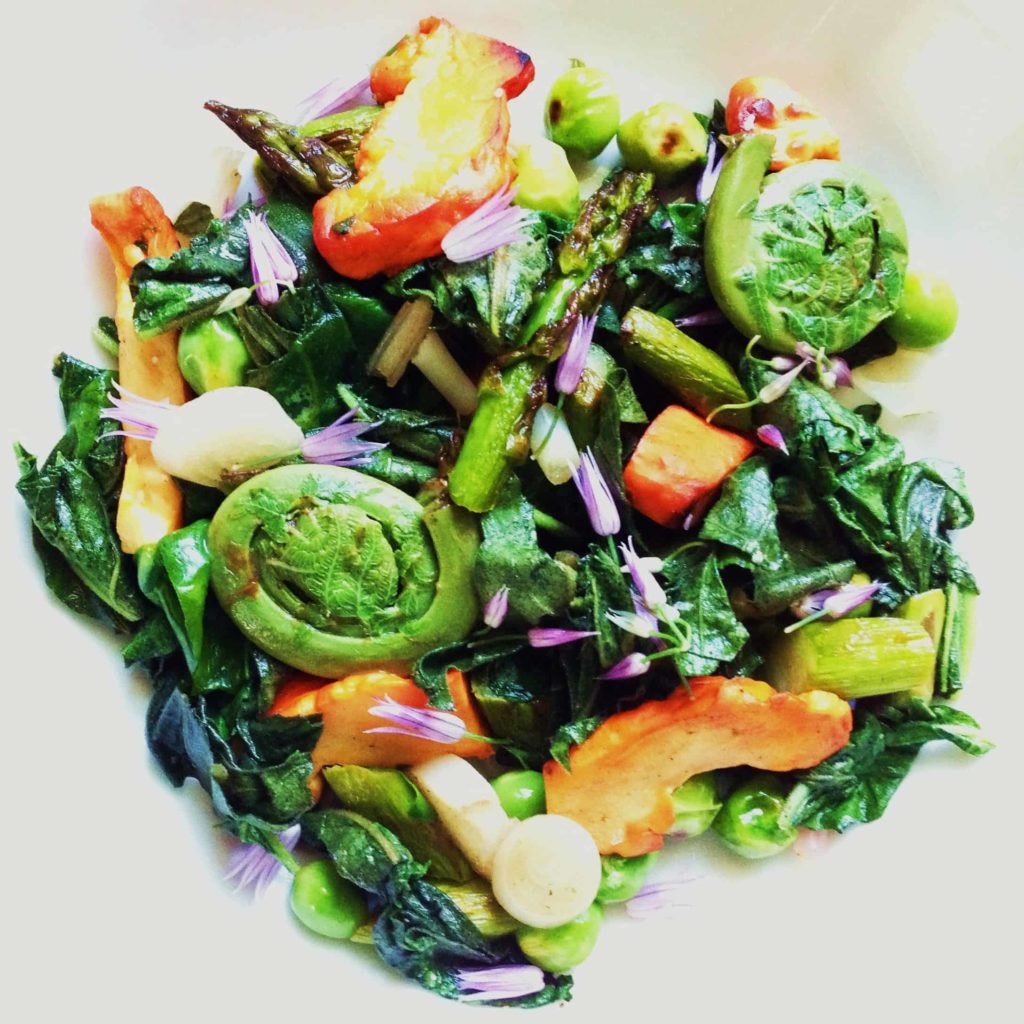
With spring just around the corner (it’ll be here before you know it!), what better way to celebrate the season than cooking with some of spring’s best produce? We’ve chosen a few seasonal vegetables and fruits that are popular during the spring season, and rounded up some of our favorite healthy recipes from around the web.
There’s a mix of Paleo, vegan, Keto, and just straight-up healthy recipes, all featuring spring’s prime produce! Now, sometimes produce availability depends on your region, so you can check out this guide here to see what’s local to you.
Asparagus
- Lemon Roasted Asparagus
- Cauliflower Risotto with Asparagus
- Vegan Asparagus Soup
- Simple Pasta with Asparagus
- Keto Asparagus Casserole with Chicken
Carrots
- Carrot Fries
- Vegan Gluten-Free Carrot Cake
- Carrot Hummus
- Roasted Carrot, Bacon, and Kale Hash
- Sweet Potato Carrot Soup
Lemons
- Scallops with Lemon “Butter” Sauce
- Paleo Vegan Lemon Bars
- Lemon Poppy Seed Pancakes
- Vegan Lemon No Bake Cheesecakes
- Lemon Chicken Soup with Orzo
Rhubarb
- Paleo Strawberry Rhubarb Pie
- Strawberry Rhubarb Crisp
- Roasted Salmon with Rhubarb and Rainbow Chard
- Strawberry Rhubarb Oatmeal
Radishes
Turnips
Beets
- Beetroot Salad
- Vegan Beet Potato and Leek Soup
- Quinoa Beet Burgers
- Red Velvet Brownies
- Beet Walnut Salad
Artichoke
- White Bean Artichoke Mash
- Vegan Spinach and Artichoke Mac ‘N Cheese
- Lemon Artichoke
- Roasted Artichoke with Asparagus
Keto Diet

What is the Keto diet?
The word, “keto,” is short for ketogenic. Essentially, the ketogenic diet is comprised of a diet very low in carbohydrates and high in fat. The main goal of the Keto diet is to switch one’s body into a metabolic state called ketosis. What this means is switching from being a glucose burner to a ketone burner.
Glucose is essentially a simple sugar that your body uses to burn as energy, whereas ketones are acids that are made when your body is burning fat rather than carbohydrates as fuel.
When you reach the state of ketosis, your body becomes very efficient at using the fat consumed as energy, rather than carbohydrates. It requires one to maintain a very low carbohydrate diet, allotting the rest of the diet to be both fat and a moderate to low amount of protein.
To know when you are in a state of ketosis, you will need to test your breath, blood, or urine for the presence of ketones. Ketones in either of these 3 represent that the body is in ketosis.
Who is the Keto diet meant for?
The Keto diet was originally developed to help those who struggle with epilepsy and has shown to be quite useful in reducing seizures in epileptic children. However, it has since become more popularized in today’s culture as a means to help with diabetes or prediabetes, Alzheimer’s disease, and weight loss, among others.
While both men and women follow the Keto diet, it is sometimes inadvisable for women to follow this particular regime. Following the Keto diet as a woman and when not under a doctor’s care can potentially put too much stress on the body, causing a spike in cortisol and thus leading to an imbalance in hormones and amenorrhea. It also may be less suitable for elite athletes or those who are struggling to gain weight.
With that being said, always consult your doctor prior to trying any diet. In fact, there are several different types of Keto diets:
The standard ketogenic diet (SKD): 75% fat, 20% protein, 5% carbs
The cyclical ketogenic diet (CKD): 5 SKD days, followed by 2 high-carb days
The targeted ketogenic diet (TKD): the same ratio as the SKD, except you may add carbs around workouts
High-protein ketogenic diet: 60% fat, 35% protein, 5% carbs
To make sure that you are hitting your macronutrients, you can download free calorie counting apps, such as My Fitness Pal, or rely on the help of a nutritionist or Registered Dietitian, as tracking macronutrients leads to unhealthy behaviors and can trigger eating disorders in some.
What are the benefits of the Keto diet?
There are many benefits to the Keto diet if followed correctly. These benefits include improving:
Please keep in mind that these benefits do not apply to everyone, and like with all diets, there are also some negatives to following the Keto diet.
Some potential downsides to following the Keto diet:
Many first-time Keto dieters find that they experience what is known as the “Keto flu.” This is essentially the compilation of symptoms that your body experiences while switching from being a glucose burner to a ketone burner. These symptoms include extreme fatigue, brain fog, bad breath, muscle aches, headaches, nausea, constipation, and cramping.
These symptoms should clear up in a matter of days, but it does put your body through quite a shock when first switching over.
Other potential downsides to the Keto diet include increased risk of heart disease and diabetes if the Keto diet is not done properly, less muscle mass resulting in a decreased metabolism, weight regains, and ketoacidosis, which can be very dangerous for people with diabetes.
As always, you should consult your doctor before beginning any diet, and for some, it may be best to have the doctor and/or dietitian monitor the diet at all times.
What can I eat on the Keto diet? What should I avoid?
When following a Keto diet, it is important to fill your plate with an abundance of low-carb produce, lean meats, and of course, fats! Here are some of the main foods you can enjoy while following a Keto diet, as well as ones you should avoid or consume in moderation.
Enjoy:
Meat: lean chicken and turkey, lean red meat
Fatty fish and shellfish: salmon, trout, tuna, shrimp, scallops
Eggs
Butter and cream: source organically and grass-fed if possible.
Unprocessed cheese: cheddar, goat, cream, blue, or mozzarella
Nuts and seeds
Healthy oils: olive oil, coconut oil, avocado oil. With olive oil, make sure to not cook at high heat, as this breaks down the fat.
Avocados
Low-carb veggies: many alkaline vegetables fit this category, but think leafy greens, tomatoes, onions, peppers, and zucchini
Condiments: sea salt, herbs, spices, and pepper
Avoid:
Processed food: these tend to be high in sugar
Grains and starches: bread, pasta, rice, cereal, oatmeal
Fruit: occasionally some enjoy a small portion of berries
Beans or legumes: peas, kidney beans, lentils, chickpeas
Root vegetables and tubers: sweet potatoes, potatoes, carrots, parsnips
Low-fat/diet products: also very processed and tend to overcompensate with added sugars
Alcohol: many alcoholic beverages contain a lot of sugar
Sugar-free diet foods: these have hidden sugars in them called sugar alcohols. Sometimes, these can throw your body out of ketosis
Where can I find Keto recipes?
There are many Keto recipes to be found throughout the web, especially on dedicated food bloggers’ sites that specifically cater to diets, such as the Keto diet. Some great recipes can be found on Hey Keto Mama, Gnom-Gnom, and the Keto Queens. Other great resources include Mark Sisson’s guide to Keto and Dr. Axe’s collection of Keto recipes.
A day in the life of someone following the Keto diet may include meals like these:
Breakfast: a cup of black coffee with cream, 3 egg omelets with avocado, spinach, onions, and diced tomatoes
Lunch: chopped romaine or iceberg lettuce with poached shrimp, olive oil, avocado, and nuts
Dinner: bun-less burger (can sub in a lettuce leaf as a bun) with unprocessed cheese, and steamed leafy greens with olive oil
Snack: a handful of nuts or celery sticks with nut butter or mashed avocado
The bottom line
As with all diets, the Keto diet is one that you should always consult your doctor first. It has many benefits, but if not followed properly, can lead to undesirable side effects and issues.
It is not suited for everyone but can be very effective in the realm of weight loss when followed properly.
How to Practice Gratitude Daily

How to practice gratitude daily:
We’ve all heard it. We should be more grateful in life. And we should! But sometimes it’s hard. Like really hard. Especially if you’ve been through a lot or are currently facing mental and physical struggles.
Gratitude is by no means a way to undermine what you’re going through or a way to bury the feelings that you don’t want to feel. In fact, it can be a way for you to feel validated.
When we lead with gratitude and appreciation, life becomes more enjoyable to live, even on the not-so-great days (we all have them, they aren’t going away! But they will feel better). Starting to actually be thankful is another thing though, and takes practice and time, and consistent effort.
Here is a short list of tips that can help you get started with seeing the upside of the down:
- Start with the basics.
When we are first starting our gratitude practice, it can be hard to figure out what we’re grateful for.
You say your family, your apartment or house, food, etc. Okay, basics done. But truth be told, you can be grateful about anything: the clear blue sky, even the rain clouds because they’re watering the grass and trees; that you checked off even one thing on your to-do list today; that you can afford to buy food; that your grandma bought you that sweater for your birthday; that this coffee is really dang good right now; that you’re able to read this article on a smartphone or a laptop!
The list could go on. But it might feel like work at first, and that’s okay. Start small, with only 5 things maybe. Really feel the gratitude behind those 5 things. Then do something new the next day. Or expand the list to be 7 items or 10!
You don’t need to be listing everything you’re grateful for all at once, especially if you’re currently struggling in general. It’s hard to flip that switch and can almost make you feel resentful. That’s okay. Those feelings are valid.
But don’t lose hope that you can see the good in things. Start small, and work your way up. It’s like flexing any other muscle in your body. You have to start somewhere!
- Write it down.
Writing down what you’re grateful for can be extraordinarily powerful. It’s one of the reasons why Thomas Jefferson’s job was so important! Writing down what we’re grateful for cement it in our minds. It’s almost like a declaration to our subconscious mind that this is how we’re thinking from now on.
And the more you write, the more those subconscious thoughts will start to morph. Like I said earlier, start with a small list, and really feel into it. It’s more important that you feel what you’re grateful for rather than how much you’re grateful for. Quality over quantity!
- Flip the switch.
Being grateful is, well, great, and all, but how do you remember to be grateful throughout the day? Good question! Living from a place of gratitude means that you see the good in every scenario, not the negative. This is called flipping the switch.
It’s as simple as looking at the glass as half empty or half full. Now, say that you knocked that glass over and there is water everywhere- what a mess! Flipping the switch would mean thinking well, it’s not a big deal, but even more so, hey at least I had water to fill the glass! Just those tiny changes in one’s perspective can lead to big lifestyle shifts.
It’s sometimes hard to remember it in the moment, especially if you’re new to your gratitude practice. This is why I always recommend also starting a practice of mindfulness, which means meditation is a good idea 😉 I know, I know, everyone says to meditate, and they all proclaim the amazing stress-reducing benefits of it or how you have to “clear your mind” (spoiler alert: meditation is NOT about clearing your mind. Let me say it one more time for the people in the back, meditation is *NOT* about clearing your mind).
To be mindful means that we are aware in the present moment. We are not in the past and we are not in the future. We are not operated by our subconscious mind, but rather, we’re consciously focused on our surroundings. What this means is that we don’t act on autopilot; instead, we are active participants in how our reality is constructed. Meditation is the key to this. When we practice meditation, we start to remove ourselves from the construct of the ego and of fear, and we realign with the core of who we are. At this core, we’re able to observe the positive, negative, and neutral thoughts that float through our minds 64,000+ times a day. We become aware of how and why we act the way we do when we live our lives on autopilot, and we’re thus able to choose a different way of thinking.
For example: say you’re checking out in the grocery store, and the person behind you is extraordinarily rude and shoving everyone to get ahead. Instead of the old you, operating from your fear and ego subconscious, snapping at the person behind you to stop being a jerk, you choose mindfulness and gratitude. In that instance, you’re able to see that what this person is doing is not a comment on you, and in fact, maybe they’re having a not-so-great day and they’re unable to reign in their emotions at this point in time. How are you feeling right now? Check-in with your body. Your heart is beating, your lungs are pumping air, and hey, you’re next in line to check out! That’s great! You are fine and don’t need to be wrapped up in their energy. At that moment, a bad situation in which your day could have also been ruined was switched so that you’re actually leaving that moment feeling better than you started!
Funny how that works 😉
- Use a gratitude rock.
Using a gratitude rock is a great way of tangibly reminding you to be grateful. This technique actually comes from Rhonda Byrne’s best-selling book, The Magic. Essentially, you designate a rock or stone (or crystal or any other object that’s handheld really!) to be your gratitude rock. Every night, before your head hits the pillow, you reach for your gratitude rock and start recounting the beautiful things that happened in your day, even if it’s just that you got up today. Finding gratitude, even for the smallest parts of our days, helps us to reprogram our minds to think more positively and expect good.
If anything, it will just make you live a happier life, but I truly believe that like the saying, “you are what you eat,” you attract what you vibrate at. So it feels a lot better to be vibrating at the consciousness of love and gratitude rather than fear, anger, and grief (although those are necessary emotions to move through and should not be ignored and buried).
- Go on a rampage of gratitude.
This one is one of my favorites. It’s essentially when you just start listing everything you’re thankful for out loud, and one thing builds off of the next. I use this technique if I’m deep within a moment of frustration and need something to remind me of the good in life because while there is a lot of negative to go around, there’s also a lot of positive (and I’ll even argue that there’s more positive than negative in the world).
Start with one thing and then go on from there. If you’re in the car stuck in traffic, start with how grateful you are that you have transportation to get from wherever you are to wherever you’re going. You’re grateful that the brakes are functioning and that you can play your favorite music or podcast on the radio. You’re grateful that you have time to get to where you need to go, and if you happen to be running behind schedule, you’re thankful that it’s not the end of the world if you’re late. You’re grateful to be doing something really enjoyable later, like cook dinner with a loved one, or watching your favorite movie. You’re grateful that at least it’s sunny and you can roll down the window for fresh air.
Sort of like that! Now, it doesn’t have to be about your current situation, your monologue of gratitude could really be about anything! Afterward, you’ll feel a bit lighter. And if you don’t, keep going 😉
- Share what you’re grateful for with others.
Whether that’s at the dinner table or after someone helped you out, or just in the middle of a conversation! When we share what we’re grateful for, we then ignite the gratitude in another person, and we can build off of that gratitude. Energy is contagious, so the more you share what you’re grateful for, the more someone else will, and then back again to you. Suddenly, you both feel so good!
Sharing your appreciation also helps to build stronger relationships. Telling a loved one you appreciate that they did your laundry for you the other day, or that a friend thought to bring you a card when you weren’t feeling well lets the other person know that their actions were seen and heard. And then they’ll be more likely to do it again, and you will too!
Expressing gratitude before a meal can also be a great way to bring a family together. Much like how some families pray before dinner, each person can go around the table recalling one thing they’re grateful for that happened today. It’s an easy way to not only get you to think more positively, but also help your children and loved ones flip the switch as well.
How to be in the Present Moment

As 21st-century humans, it’s become pretty normal to operate from some level of stress daily, if not by the hour. Unfortunately, just because it’s normal does not mean that it’s healthy. In fact, living with stress can really negatively impact your health and overall well-being. Now, some stress is good, but in the past few decades, we’ve trained our minds and bodies to not be able to decipher the difference between getting angry or upset over something at work, school, or in a relationship versus running from a lion.
There is a solution to this. Practicing mindfulness has been shown to not only reduce stress but also improve other areas of our health.
And the best way to start practicing mindfulness is to become ever so aware of the present moment. The present moment is the moment you’re in right now, as you read this article. It is the only moment that there ever is. We never get to the future- we only stay in the present, and the present moves us to whatever idea we have of the future. We can’t go back to the past- although arguably, by recalling past events and reliving those emotions, one could say you can actually go to the past.
But the present moment is the only one we can definitively live in. And it’s the key to mindfulness.
So how do you get to the present moment? We’ll start by walking you through these 5 steps to get your mind and body out of the past or future and into the here and now.
- Come back to your breath.
When we’re in a moment of anxiety or a heated argument with a loved one, the easiest thing to do in that instant is to come back to your breath. As soon as you place your focus on your breath, your mind shuts down its chatter and the breath becomes the entire world. This will help to bring you back into your body when you feel like you’re anywhere but. Take 5 deep and mindful breaths, focusing on where the breath is traveling throughout your body, making sure to hold your exhale for longer than your inhale. Your focus on counting the inhales and exhales will also help to calm your racing mind.
- Bring your attention to different parts of your body.
Next, bring your awareness to other parts of your body. Are your hands clenched? Is your neck stiff? Are you slouching or sitting up straight? Don’t place any judgment over any parts of your body. Simply place awareness. Acknowledge that it’s there and take note of what it’s doing. If you can, allow more ease into the areas of your body that are feeling tight or clenched.
- Say one thing you’re grateful for in the present moment that you’re in.
Gratitude goes a long way, but it’s easy to skirt around saying something that you’re grateful for in a moment you really wish you weren’t in. Practice saying one thing that you’re grateful for in the current moment. It could even be that you were able to focus on your breath in Step 1. Just the act of being thankful brings you fully into the present moment and allows you to step into that moment more positively and mindfully, which will aid in resolving any issue at hand or making any experience better.
- Say out loud or in your head, “I am safe.”
When we’re not in the present moment and our minds are racing off in all sorts of directions, it’s easy for the body to not feel safe. You’re operating by emotions that are not dictated by your present reality, so your body doesn’t know what it’s up against- it’s only operating by the emotions you feed it. Whether you’re recalling a past event or worrying about the future, these emotions dictate a real reality for your body. It doesn’t see what your eyes see. Reassuring your mind and your body that in this very instant you are safe can help ease you back into the present moment.
- Proceed mindfully.
Now that you’ve fully entered the present moment, your emotions are more in check and you’re fully aware of your surroundings and how your body is feeling, it will be a lot easier to proceed forward in the best possible manner. Maybe it’s taking a break from the conversation you’re in, changing activities to something that’s less provoking, or even perhaps accepting and embracing that there’s an alternative and better way you can feel about whatever situation that you’re in. Whatever the case may be, being fully present, and mindfully at that, in whichever moment you’re in will improve the reality you experience and can ultimately lead to less stress.
Healthy Halloween Candy
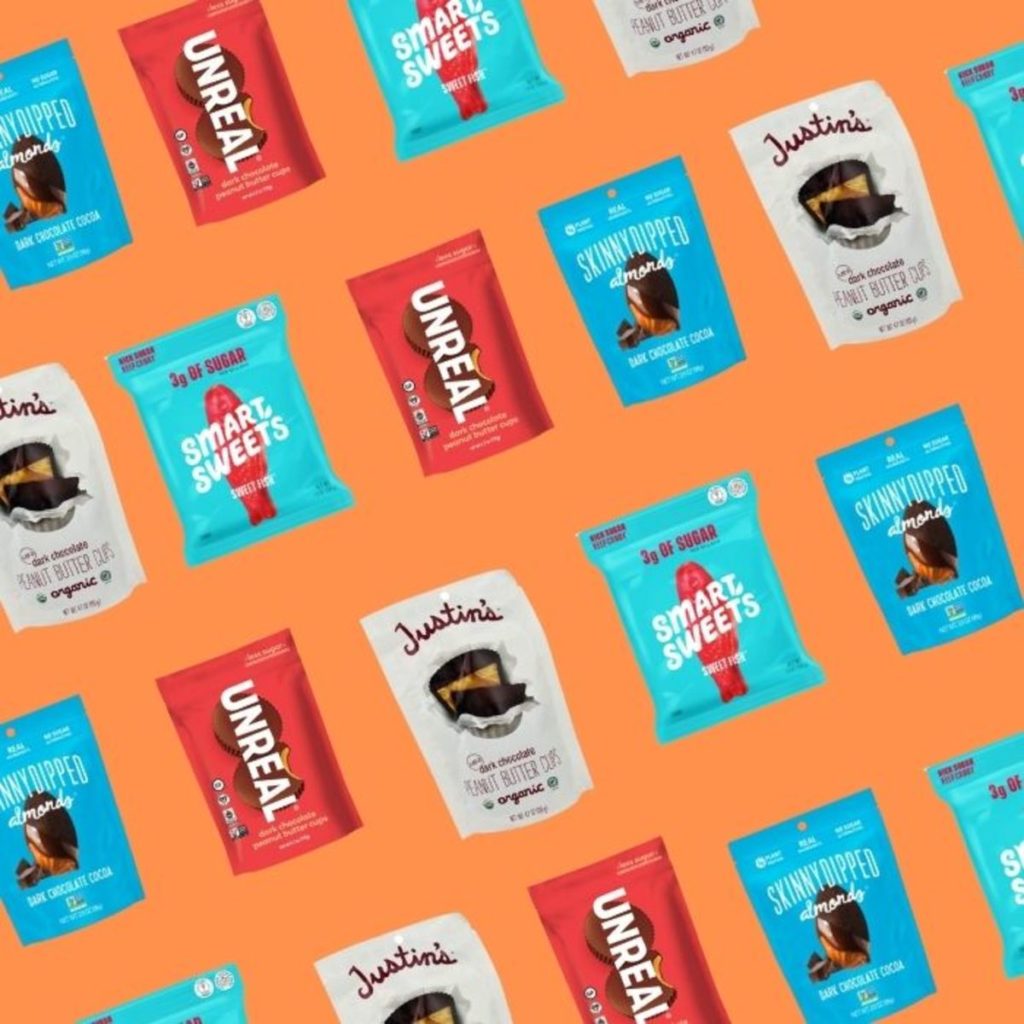
With Halloween coming up, we’re sure you’re getting ready for those trick-or-treaters to come through, holding their baskets out for that sweet stuff. It can be hard to resist when you’re constantly surrounded by it! But if you’re following a particular diet or just trying to stay away from those seriously scary ingredients that can be found in some candies (truly, you don’t even need to watch a horror film this season, just look at the back of a wrapper instead), it can be frustrating!
So we’ve rounded up 15 of our favorite homemade healthier Halloween treats to satisfy your cravings this holiday season without having you feeling left out or like you need to fall off the bandwagon! While some of these still contain some sugar so they should be enjoyed as a treat, it’s unprocessed sugar and a fraction of what you would find in real candy.
Check out these spooky favorites that range from dairy-free, vegan, Paleo, refined sugar-free, soy-free, Keto, and more!
Paleo Vegan Caramel Filled Chocolate Cups
Vegan Low Sugar Peanut Butter Buckeyes Swap out the peanut butter with almond butter to make it Paleo!
Cashew Butter Swirled Chocolate Bark
Vegan Homemade Snickers (make it Paleo by swapping in almonds for peanuts!)
Paleo Vegan Worms + Dirt Pudding A childhood classic, the gummy worms are completely Paleo, vegan, and made from veggie and fruit juices!
Homemade Paleo Vegan Hershey’s Kisses Make the whole cookie or just the homemade Hershey’s kisses!
Paleo Vegan Cashew Caramel Clusters Swap in whichever nut butter you want! If you can’t do nuts, we recommend coconut butter or sunflower seed butter!
Paleo Vegan Coconut Cream Eggs omit the sweetener for another great Keto option!
Happy Halloween!
How to Handle the Holiday Blues

The holidays are often a time that’s built up to be the best time of year. And it truly can be. But if you’re currently struggling, if you’ve lost someone, you can’t be with family, or you’re just not yourself lately for your own reasons, this time of year can be anything but the best.
And that is okay! Before we dive into this article, remember that it’s okay for you to not feel okay, even during the holidays. We build up so much expectation for there to be so much joy, but if we’re not equipped to handle how we’re feeling in this moment, it can be a major letdown.
Here are a few tips to make it through the holidays if you’re feeling the holiday blues. Remember that you’re not alone in this and that it’s always acceptable, safe, and good for you to seek professional help.
- Don’t run away from your feelings
Faking happiness or joy or gratitude won’t do you any good. If right now you’re going through a tough time, it’s okay to acknowledge that you’re not feeling your best. Acknowledging those feelings is the first step in letting them go. Everything we bury eventually comes back up again, and even stronger the second (or third…or fourth) time. Allow yourself to feel all the feelings: sadness, grief, anger, frustration, and give yourself time to cry. By doing so, you’re allowing more space for better-feeling emotions to potentially come through.
- Take a breath
It’s very easy to get caught up in the excitement (and sometimes anxiety) of this time of year! Remember to not only take a physical breath (yes, right now, pause and breath for 5 seconds), but to also take time for yourself. We’re required to do so much this time of year for others, but it’s important to remember not to pour from an empty cup. Some activities that can recharge you:
- Make time to read
- Get a massage
- Take a walk through a decorated neighborhood
- Listen to soothing music
- Try meditation
- Practice gentle yoga
- Get outside
During this time of year, it’s easy to just stay indoors for most of the winter; the cold isn’t exactly pleasant to be in for too long! But getting outside, even just for 5 minutes first thing in the morning to see the sun will do your body and your mind a world of good. Decreased time outside and in the sunlight has also been associated with a drop in serotonin levels. Making sure to get outside every day can offer a big mood boost!
- Stick to your healthy habits
When you’re not feeling your best, it’s very beneficial to stick with healthy habits that usually keep you feeling physically and mentally well. Whether you’re following a particular diet or exercise regime, or you need to prioritize a healthy amount of sleep (we all should be prioritizing good sleep! But really aim for that Goldilocks combo of not too much and not too little. Too little sleep, and we’re easily irritable and not emotionally able to handle stressful issues while sleeping too much is linked with depression), sticking with your healthy habits is a way to keep motivated and help your low moments not go so low.
- Lean on trusted family and friends
It’s very beneficial to have an ally during this time of year, especially if you’re attending family or friend gatherings. If there’s someone that you can trust, it might be a good idea to confide in them that you’re experiencing something difficult and you’re not sure how to handle it or are feeling disappointed that you can’t fully be present (which is okay, especially when you’re facing something difficult). They can be your confidant and supporter for you to lean on while you’re navigating some murky waters.
- Be realistic and reduce expectations
It’s easy to gear this year up to be the happiest time of year and have all of these extravagant plans in place (or want to have some at least!), but it’s important to remain practical about what can be done. If you’re not in the best place right now, it’s okay for everything to not be perfect. In fact, it’s more than okay. Every year is a new one with new opportunities for different traditions. No two years are the same. There’s nothing wrong or shameful about this year is different from previous years.
- Practice gratitude
Even in the hardest of times, gratitude can make the dark seem a little lighter. Even if you can’t express gratitude for the current situation that you’re facing (one of the biggest mindset shifts for me during difficult times was realizing that everything was happening for me, not to me…but it took some time to get there!), find gratitude for unrelated items: clean air, clean water, a warm bed, a beloved pet, the clothes you have, etc. Saying thank you for the things in your life, and really allowing yourself to feel it, can instantly shift your perspective to a much brighter one.
- Practice generosity
‘Tis the season of giving, after all! When we express generosity, like gratitude, it instantly makes us feel better. But what’s different from gratitude is that generosity also gives us a feeling that we’re adding value to someone else, and it’s empowering to feel that we’re needed. It doesn’t need to be in extravagant ways: simply helping a neighbor put up their lights if you’re able to, or helping an elder get around to do their holiday shopping or spending time volunteering at an animal shelter is such a seemingly simple, yet profound way to give back. Seeing the gratitude in someone else’s eyes for what you’ve done is truly empowering and a major mood booster.
- Say no and stick to it
One of the biggest ways to maintain sanity during the holidays is to say no and stick by your boundaries. Much of the stress around the holidays is due to saying yes to too many things, having way too much to do, and feeling obligated to follow through. If something isn’t serving your greatest good, it is safe for you to let it go. Don’t feel the need to host the family Christmas dinner if right now, having family over is too overwhelming for you rather than enjoyable. Say no to get-togethers you don’t want to participate in and yes to the ones you do. If someone is asking too much of you, be honest and transparent about where you are right now (as transparent as you want to be remember, you don’t have to spill anything you’re not comfortable with!).
- Seek professional help
Never be ashamed to seek professional help when you’re struggling. Sometimes, we face challenges that we can take on all on our own, and sometimes we need help. It is not a sign of weakness. In fact, accepting help is one of the best things you can do for yourself. You don’t have to struggle alone. By getting help, you can lean on your doctor or mental health professional to give you specific coping mechanisms that can ease you through this difficult period.
How to Gain Weight Without Fat

A common goal amongst weight trainers is to be able to put on lean body mass without gaining fat. However, you don’t have to be a seasoned lifting professional to set goals for weight gain. Some people need to put on healthy weight due to eating disorders, thyroid issues, Celiac disease, infections, and more.
In this article, we’ll discuss the general steps you can take in order to gain a healthy weight in a safe manner.
- Increase your calories
In order to gain a significant amount of weight, you have to-you guessed it- eat more! You can’t be in a calorie deficit, meaning you’re eating less than your body is burning. Check out this tool to help you gauge how many calories you need to be eating.
As a note, it’s not good to hyper-focus on the number, as our bodies are truly our best calculators, and obsessing over numbers can lead to very unhealthy habits. However, a good range to keep in mind if you want to slowly gain weight is increasing your calories by 300-500 per day. To gain weight faster, aim for 700-1000 more than you normally eat.
Try focusing on dense foods that are rounded with fats, proteins, and carbs, such as nut butter, whole grains like rice, and starchy vegetables like sweet potatoes and brussels sprouts. Of course, these foods don’t necessarily equal weight gain, but when you focus on bringing most of your food intake from calorie-dense foods, it will greatly assist you in your weight grain process.
However, increasing your calories, while it seems like a dream come true in theory, can also be physically uncomfortable if your body isn’t used to eating large quantities of food or eating past satiation. To ease this discomfort, try breaking your meals up into quantities you’re more used to eating, and have them throughout the day rather than all in one sitting. This will help your metabolism keep humming and also aid in relieving any physical discomfort you may experience!
- But limit processed food
Most, if not all, of your food, should be as unprocessed as possible. That means nix the protein shakes, any junk food, or foods high in added refined sugar and processed fats. While these foods will help you gain weight, they ultimately won’t lead to optimal health. What we want is a win-win situation: you gain the weight you want while also feeling your best. Not one or the other.
Instead, focus on filling your plate with proteins, vegetables, and healthy fats, and carbs. A meal could look like a grilled burger with a side of roasted sweet potato, and sauteed vegetables dressed in 2 tbsp of olive oil. Of course, the portions will be different depending on your own body type and goals. But basically, focus on eating foods as close to their natural form as possible!
- Aim for 40/30/30
That is, aim for 40% of your intake to come from protein, 30% from carbs, and 30% coming from fat. While you may not want to gain fat while you’re gaining weight, you do need to consume some amount of fat while you’re training. Fat is a vital macronutrient, as are the other two, and playing around with ratios can greatly help you find the sweet spot for your own body.
With 40% of your intake coming from protein, you’ll want to focus on healthy sources of protein. This can include:
- White meat, such as chicken and turkey
- Red meat, such as ground beef
- Eggs (a complete source of protein!)
- Nuts and seeds
- Chickpeas
- Lentils
- Dairies, such as whole milk and Greek yogurt
- Whole grains, such as oats (while not a main source of protein, you’d be surprised at how much a bowl of overnight oats can pack in!)
- Pea protein*
*While this is technically a protein powder, and slightly processed from its original form, it’s a great option for vegans and vegetarians who don’t eat meat.
- Increase strength training
In order to put on muscle, you’ll need to incorporate a strength training routine into your weekly schedule. Focusing on lifting heavy weights and high reps 2-4 times a week can greatly assist you in your bulking goals.
However, please consult a doctor if you have bone issues. While weight training is great for building bone strength as well as muscle mass, it’s best to make sure you’re choosing the best program that suits your needs.
Also not that as you build muscle, your metabolism will increase. This will mean that in order to keep gaining muscle, let alone maintain your current muscle mass, you’ll need to increase your intake potentially!
- But tone down cardio
Cardio is a great way to keep your heart healthy and also help you slim down, but it’s not great for when you want to put on weight! Now, this doesn’t mean to stop doing cardio entirely. In fact, it’s good to keep about 2-3 days a week as light cardio days, meaning going for a walk or an easy jog.
This simply means making sure that you’re not training for a half marathon while trying to gain 20 lbs. It would be pretty difficult, to say the least!
- Make sure you’re getting enough sleep!
In order for your muscles to grow, they need to rest. And the best time for rest (other than a rest day of course) is when you sleep. Studies show that when you skimp on sleep, and quality sleep at that, the process of repairing muscles in order for them to continue to grow is completely hindered.
Aim for quality sleep each night, not only to keep your muscles strong, but also to promote good mental health, keep your metabolism healthy, and enable you to feel powerful and strong through not just your workouts, but everyday life!
Remember that gaining weight, just like losing weight, can be hard. Our bodies resist change, so it may start to fight you at first. Aim for long-term goals rather than setting hefty short term. Keep the end goal in mind, and don’t let a setback deter you from your overall health goals. Though we aren’t doing much cardio here, this is a marathon, not a sprint!
Seasonal Recipes
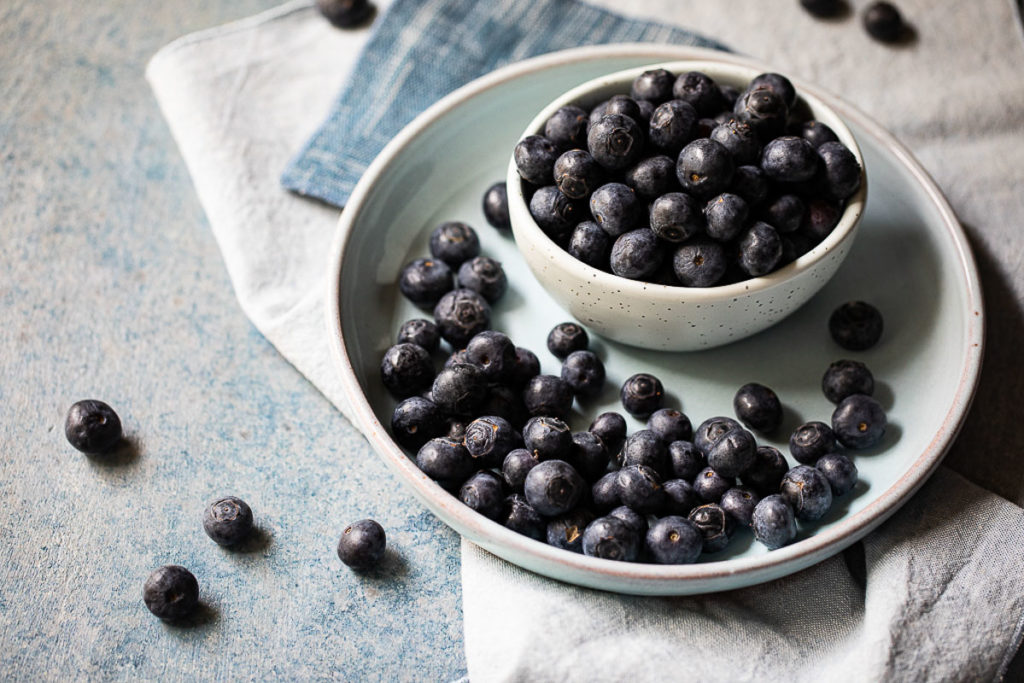
As the season’s change, so does the produce, and we have a few fun and healthy recipes to get you into the swing of autumn! There’s a mix of everything from breakfast, mains, and desserts, as well as a wide variety of diets that these recipes accommodate. Even some for kids to help along with!
Get into the festive mood and enjoy the bounty of the harvest, all while eating healthy and well!
Sweet Potatoes
Spicy Thai Chicken Sweet Potato Noodle Stir Fry
Cinnamon Roasted Sweet Potato and Apples
Pears
Zippy Pear Goat Cheese Kale Salad
Apples
Pumpkin
Coconut Double Chocolate Pumpkin Bread
Figs
Coconut Apricot Fig Bliss Bites (No Bake)
Brussels Sprouts
Shredded Brussels Sprout Salad
Sauteed Brussels Sprouts with Mustard Dressing (Vegan)
Sheet Pan Breakfast Hash {Paleo, Keto, Whole30}
Cauliflower
How to make the best cauliflower pizza
Cauliflower Risotto with Bacon and Mushrooms {Paleo, Whole30, Keto}
Carrots
Honey Roasted Carrots (dairy-free)
Paleo Carrot Cake Pancakes with Cream “Cheese” Drizzle
Carrot Fries with Bacon and Rosemary {Paleo, Whole30}
Holiday Salad
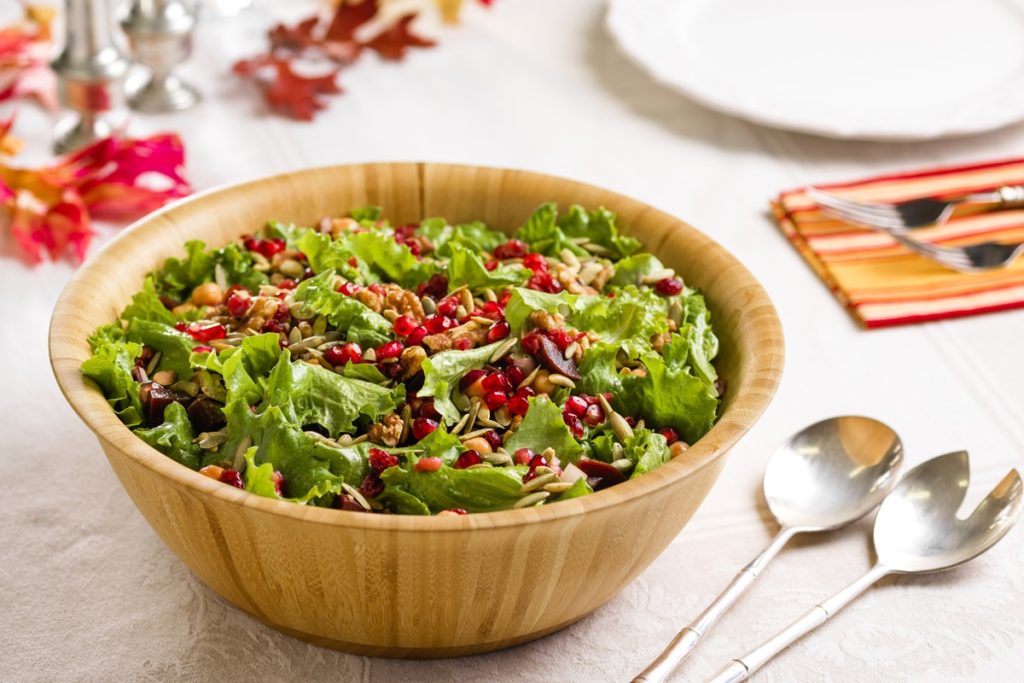
2 heads of romaine lettuce
1 red bell pepper
1 yellow bell pepper
1 medium sweet onion
1 large celery stalk
1 c. cherry tomatoes
1 med. Cucumber
2 c. spinach leaves
2 c. arugula (or mixed dark greens)
¼ c. sesame seeds
1/3 c. dried cranberries
½ c. chopped mixed nuts
½ c. shredded cheddar cheese
3 hard-boiled (chopped) eggs
2 carrots
Dice, chop, and slice above ingredients – toss till well mixed – do not add any dressing or liquids to above – can stay in the refrigerator(covered) for 3 -5 days.
SALAD DRESSING:
1 medium avocado, 3 Tbsp extra virgin olive oil, 2 Tbsp wine vinegar, ¼ c. “avocado” mayonnaise
Stir all ingredients – should be paste-like. Add 1 – 2 Tbsp of dressing to the plate. This is a dipping dressing.
Vegan Shopping List and Meal Plan
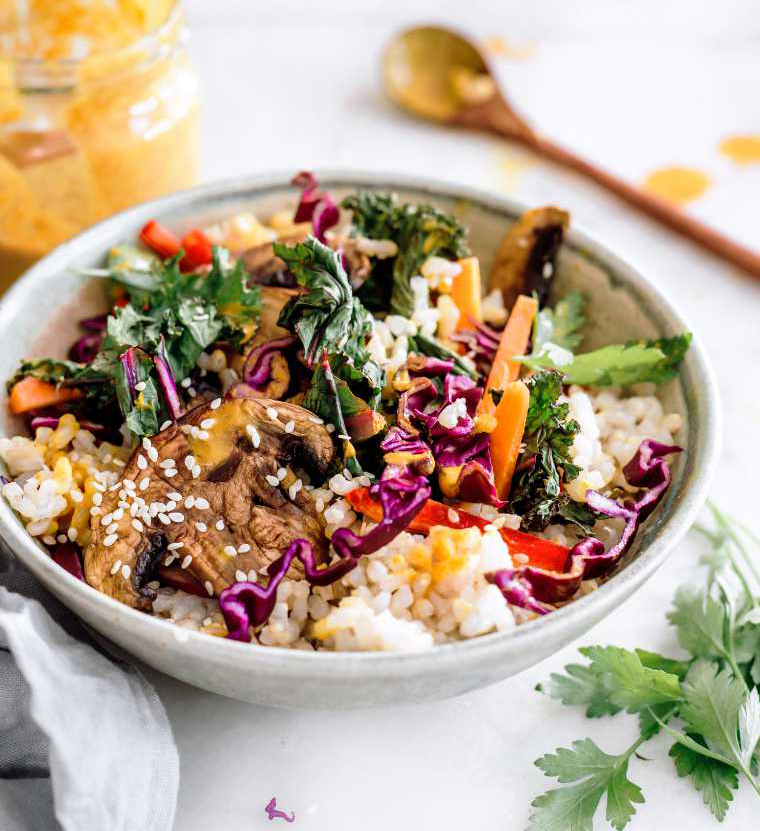
When you switch to a vegan diet, it can seem daunting, expensive, and a bit overwhelming.
Is dairy not vegan?
What about olive oil?
What the heck can I eat anymore?!
We totally get it. So we decided to simplify it a bit with a shopping list of all the plant-based approved foods, as well as a sample meal plan with some recipes that are absolutely jaw-droppingly delicious, so much so that vegan and non-vegan eaters would love them.
Remember that it doesn’t have to be complicated. In fact, simplicity is the key to success when starting any diet.
Enjoy!
Shopping List:
Let’s start first by going over what you can buy while following a vegan or plant-based meal plan.
Staying on budget can be difficult at times, but so can eating on any other diet. Purchasing frozen versus fresh will always save money, and make sure that you check out the clean fifteen list of foods you can eat non-organic to save some money.
Nuts and seeds can also add up quickly. We recommend choosing one or two of your faves per week in order to keep your options fresh but also your wallet full!
Other ingredients, such as oats, rice, and other grains, are actually pretty affordable in most grocery stores and can supplement nuts or seeds to add more protein to your dishes.
We hope this list helps!
Produce:
- All vegetables: spinach, asparagus, cucumber, carrot, bell pepper, squash cabbage, fennel, tomatoes, etc.
- All fruits: apples, oranges, bananas, strawberries, blueberries, pears, figs, dates, cantaloupe, honeydew melon, etc.
- Can be fresh and frozen
Grains & Pasta:
- Rice
- Farro
- Buckwheat
- Oats
- Sprouted, brown rice, whole wheat pasta
- Brown rice wraps
- Whole grain bread (make sure there is no dairy/milk)
Healthy Fats:
- Avocado
- Coconut oil
- Olive oil
- Nut and seed butter
Proteins:
- Beans: lentils, red beans, black beans, cannellini beans, “butter” beans, navy beans, etc.
- Nuts: almonds, pecans, walnuts, peanuts, Brazil nuts, cashews, macadamia nuts, etc.
- Seeds: chia seed, flax seed, sesame, etc.
- Soy products (with caution): tofu, tempeh, edamame (we recommend staying away from too many fake meat options, as they’re highly processed)
- Powders: pea protein, brown rice protein, hemp protein, etc.
Dairy Alternatives:
- Vegan butter (such as Miyoko’s)
- Vegan yogurts made from nuts or coconut (such as Forager Project, So Delicious!, Ripple Foods, or Kitehill)
- Milk Substitutes: almond milk, coconut milk, oat milk, soy milk, etc.
Egg Alternatives for baking:
- Unsweetened applesauce
- Flax seed mixed with water
- Chia seed mixed with water
- Arrowroot powder
- Corn starch
- Avocado
Condiments:
- Balsamic vinegar
- Apple Cider Vinegar
- Ketchup
- Mustard
- Maple Syrup
- Hot Sauce
- Hoisin Sauce
- Hummus
- Salsa
- Relish
- Soy Sauce
Sample 3-Day Meal Plan:
Day 1:
Of course, we don’t expect you to be making 4 different recipes each day. These are just examples of what a day eating on a vegan meal plan could be. Many of these recipes you can prep ahead of time during your weekly meal prep, and many can be stored in the freezer for whenever you feel like consuming it.
We just wanted to show you the wide variety of options out there! Plant-based eating doesn’t have to be boring. In fact, it can taste just as good, if not better, than the dairy/meat/egg alternative!
Breakfast: Power Green Smoothie
Lunch: Superfood Salad
Dinner: Vegan Meatballs with Marinara
Snack: Slice of Paleo Vegan Banana Bread
Day 2:
Breakfast: Protein Overnight Oats
Lunch: Cauliflower Chickpea Curry with a side salad
Dinner: Spaghetti Squash “Alfredo” Boats
Snack: 5 Minute Protein PB Energy Bites
Day 3:
Breakfast: Vegan “buttermilk” pancakes with dairy-free yogurt and fruit
Lunch: Black Bean Chipotle Chili with Sweet Potato
Dinner: Lentil Bolognese
Snack: Paleo Vegan Sweet Potato Mousse
Supplements:
Now, eating a vegan diet does mean that you’re cutting out a critical source of nutrients. Many people don’t realize that when you take something out, you need to replace it (i.e. you take out a meat source- a big portion of your iron- you need to find ways to supplement that).
Always consult your doctor before taking supplements, but be sure to ask your dietitian and doctor about what B12 supplement might be good for you, as well as iron, zinc, vitamin D, and calcium.
Take Away:
Eating a vegan diet can be as simple or as complex as any other diet! It all depends on you. You can and should choose foods that you enjoy rather than trying to enjoy meals you normally wouldn’t.
We hope this brief meal plan can give you some ideas for how to eat and keep satiated while staying plant-based!
Sleep Tips
Military personnel, veterans, and spouses of veterans are used to extended periods of sleep deprivation. From service years, being on call, long hours, and the necessity to be constantly vigilant – veterans have experienced years with necessary hours of sleep cut short. Likewise, spouses have seen and witnessed long hours waiting for a phone call, a message, and assurance that their loved one was alive and well – often spending long nights worrying without getting the necessary amount of sleep.
Well, why is sleep so important to our health? First things first … sleep is vital for appetite regulation and fat storage and or the lack of fat storage. All of this is conducted via proper hormone regulation which occurs when we get the proper amount of restorative sleep. In addition, inflammation is left unchecked when you are sleep deprived. If this wasn’t enough your very aging clock is intricately tied to the amount of sleep (rest) you get each night. You age faster when you are sleep deprived or achieve less than an optimal number of hours each night. The optimal amount of sleep is at least seven hours a night and for many eight hours or more.
So, what are some tips to help you achieve that deep sleep your body so desperately needs?
- Your bedroom should be a sanctuary, completely dark, a special place dedicated to only one of two purposes – restorative sleep or “connection” with your partner – nothing else.
- Bluetooth devices – lights, electronics … TVs, cell phones, computers, etc. should not be on at night and must be turned off and or unplugged.
- The bedroom should be kept comfortably cool (sleep is deeper and more relaxing in a cool room rather than in a warm room) … cool your room, close a heat vent – find it necessary to use a blanket.
- Plan your evening accordingly. Turn off your computers, and Bluetooth devices two to three hours before knocking them off for sleep.
- You want to sleep through the night, not have to make a bathroom trip or an extra trip. Drink most of your fluids during the first half of the day and taper off in the second half. Try not to drink anything two to three hours before bed.
- If you find yourself mulling over the day’s events with racing thoughts try this tip: make a habit of listing things that need to be done the next day before sleep. Do what you need to do during the day and list anything that wasn’t done – put it on your list and forget about it – knowing that it will be part of tomorrow’s to-do list and not a part of the stream of worried thoughts that keep so many of us awake.
- If you find yourself waking up in the middle of the night, due to a bad dream, a memory jog of something you forgot to do and can’t forget … get up from bed. There is no point in lying in bed the rest of the night without sleeping. Instead, quietly go to your den, or living room and pick up a copy of a book, a magazine, or a tax manual and sit down and try to read it. Do this in a comfortable chair. Try to read this “most” boring literature. If you are like most of us it won’t take long before you either fall asleep in that chair or drag yourself back to bed and into a deep sleep.
- Sleep aids: I don’t recommend any over-the-counter sleep aid – Sominex, Unisom, or anything like it due to the likelihood that you might develop a dependency. Instead, something like tart cherry juice – four to six ounces before bed just might do the trick. Why? Tart cherry juice contains naturally occurring melatonin – 13mg in a glass. In addition, tart cherry juice can act to help relieve pain and inflammation at night while you sleep, naturally, without the risk that often accompanies NSAIDs – aspirin, Advil, Motrin, etc. So many of us suffer from these aches that they are often what wake us up. Try some. It just might work.
I hope these tips help. The body works best and performs best when it gets enough sleep. Good night!
Weeknight Dinners
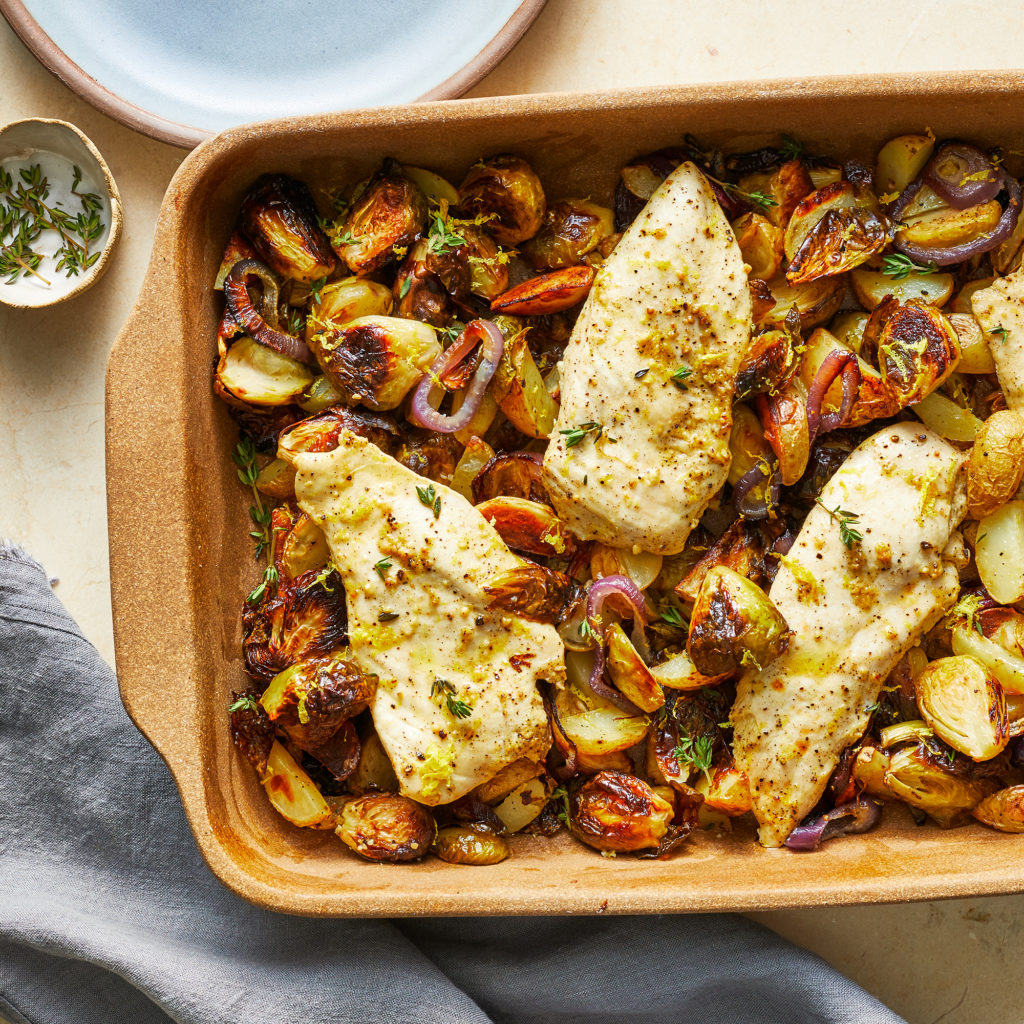
We totally get it- meal planning can be hard, confusing, overwhelming, and not to mention, stressful, especially if you’re feeding more than one person.
That’s why we want to make life a little bit easier with a variety of easy and delicious weeknight meals that you can make in bulk, won’t take you all evening, and to feed a family!
There are a few options listed below each day, so pick and choose what fits your lifestyle. Whether you eat Paleo, gluten free, vegan, follow the Whole30 diet, or just eating whatever makes you feel good, there’s something for everyone!
Monday
Casseroles are always a great way to start off the week because they feed a lot of people, and more often than not, you have leftovers! This dish is great because you get some gluten free carbohydrates in there, protein from the chicken, and your veggies!
An awesome vegan option, these veggie mushroom burgers have the texture of a standard burger, but are packed with healthy plant proteins! This makes a lot so you can feed a family or save some for throughout the week!
Start your week off with a meal that can last you all week! Easy to make and under 400 calories, this chicken meatball dish is a winner!
Tuesday
Completely Paleo, and Whole30 approved, this “breaded” chicken cutlet dish is so delicious, you won’t miss the classic!
This tofu pad Thai tastes just like take-out…only better! Forget going out to eat, and just make this!
Sometimes you just want comfort, and this Brussels sprouts mac and cheese is the epitome of it! Enough to serve a large family, this dish will keep you satisfied, all for under 400 calories!
Both Paleo and Whole30 friendly, this Thai coconut curry shrimp is very easy and fast for those days you just don’t have time. Serve with white rice if you’re gluten-free, or try making some cauliflower rice for a grain-free and low-carb option!
Wednesday
Going low carb? Try this riced cauliflower risotto! It’s a great dish that you can top with whatever protein you’d like: chicken, steak, burgers, tofu, beans, or your favorite fish! Not going low carb? Easy! Just mix in a starch, like regular rice or chopped baked sweet potato ☺
Interested in trying more vegan options? This one is for you: cauliflower “steaks” have risen in popularity over the past few months, and for a good reason. Crusted with sweet cashew nuts, this dish will quickly turn you into a plant-based lover!
This stuffed sweet potato dish is the perfect fall twist, with apples and caramelized onions. You get your vegetables, carbs, protein, and fats all in one, and for under 400 calories!
When in doubt, go with pasta! This pesto sun-dried tomato sauce elevates this pasta to the next level, and if you choose chickpea or another bean pasta, this meal becomes gluten-free and packed with protein!
Thursday
This grilled salmon dish is absolutely amazing, and will even make non-salmon lovers give two thumbs up! If you don’t have access to a grill or it’s the middle of winter (it happens), simply sauté the salmon instead!
Towards the end of the week, you may just want something really quick and easy, yet tastes amazing, which is why this Paleo quiche Lorraine is the perfect option! The crust adds a little more work, so if you’re short on time, you can just make it into a frittata (crustless)! Serve with a side salad, and you’re good to go!
A fun take on chicken salad, this Paleo, keto, and Whole30 dish won’t have you missing mayo in the slightest! Easy to make and so satisfying, pair it with a side salad or sautéed veggies, and everyone will have a happy tummy!
Who doesn’t love breakfast for dinner?! This vegetarian and gluten-free pancake dish will have to make you fall in love with savory breakfasts, and of course, it’s protein-packed thanks to the chickpea flour!
Friday
If it’s summertime, this will soon become a weekend favorite- light up your grills, because this spicy grilled chicken dish will have you swooning! Packed with protein, you can keep this gluten-free by adding rice, or low carb by swapping in cauliflower rice!
This pizza crust is on the sweet side (thanks to the sweet potatoes), but is still absolutely delicious and makes for a great grain-free pizza option on Pizza Fridays!
One-pan meals are some of our favorites- just so easy to make and so satisfying too! This one is packed with protein and veggies, so just add a starch, and you’re all set!
A fun and low-carb way to enjoy “spaghetti” that doesn’t involve soggy zucchini noodles 😉 Spaghetti squash is a great low-carb option for when you have that pasta craving but want to sub in a lower-carb option!
Paleo Diet 101
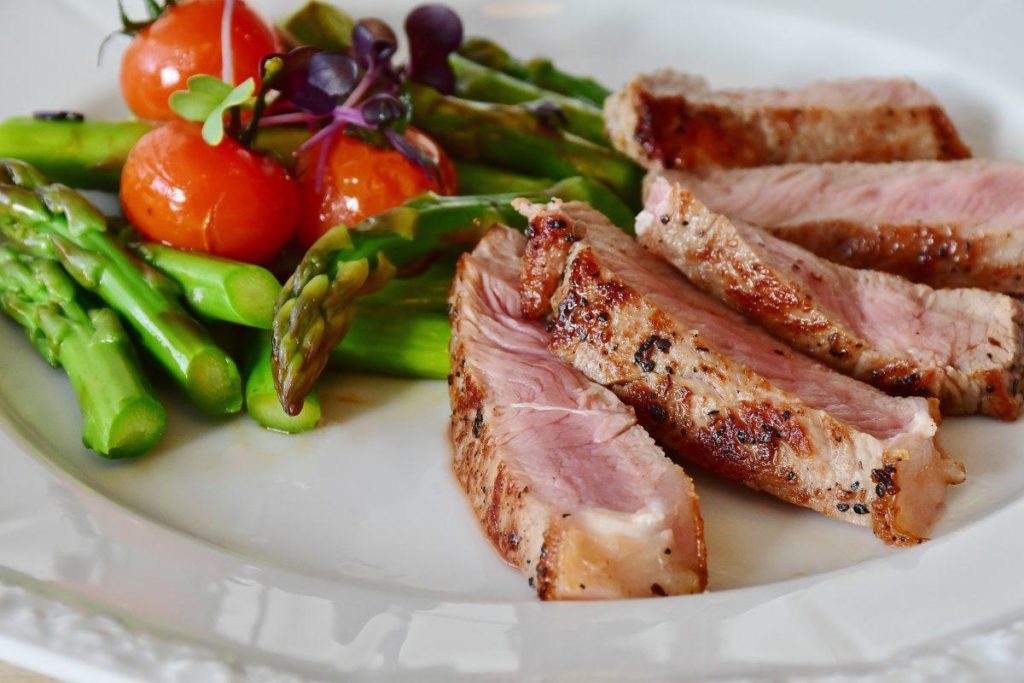
What is the Paleo diet?
Paleo is short for Paleolithic, which refers to a time period of about 2.5 million to 11,500 years ago.
The Paleo diet is based on what scientists and experts have evidence to believe people during the Paleolithic time period consumed. The Paleo diet focuses on consuming whole foods rather than food that comes from packages. In short, it emphasizes eating as close to the earth as possible.
The theory behind the Paleo diet is that our bodies are genetically mismatched to that of our modern diet, which is referred to as the Standard American Diet (SAD). Experts believe that this mismatch is a contributing factor to the obesity rate, heart disease, and inflammation in the brain, which impacts brain health (Neurosci Biobehav Rev.).
What are the benefits of the Paleo diet?
There are many benefits to the Paleo diet, but there are also some downsides, so let’s go over both to cover our bases!
Pros:
- Can lead to weight loss if necessary
- Eating a richer diet of produce can help with inflammation
- Improved glucose tolerance
- Better blood pressure control
- Lower triglycerides
Cons:
- It is possible to eat too much protein, which can cause calcium loss and in turn, impact your bone health
- It is a difficult diet to maintain for vegetarians and vegans, as it excludes beans
- It is hard to eat out at first if you are strictly following a Paleo diet, and can at times be hard to maintain
- Excluding grains and dairy, while beneficial for some, can be harmful to others in terms of energy and overall health
- The Paleo diet can be expensive. To cut down on costs, it’s helpful to shop the frozen section for produce and eat seasonally
What to eat and what to avoid:
Eating on the Paleo diet can actually be quite doable and easy to adjust to. While it may take some navigating around the grocery store or farmer’s market at times, a Paleo diet can definitely be reasonable in terms of cost and living adjustment. You just need to learn what you enjoy most and how best to incorporate it into your daily life!
Below are some rules as to what to eat and what to avoid while following a Paleo diet.
Enjoy:
- Fruits
- Vegetables
- Nuts
- Lean meats (preferably grass-fed)
- Fish
- Seafood
- Eggs
- Natural oils (such as coconut oil, olive oil, and avocado oil)
- Sea salt, spices, black pepper
Avoid:
- Refined sugars (including cane sugar, corn syrup, tapioca syrup, powdered sugar, etc.)
- Dairy products (except for ghee, which is Paleo-friendly and does not contain lactose due to its cooking process)
- Regular table salt
- High-fat processed meat, such as bologna, salami, and hot dogs
- Anything processed (think candy bars, packaged cookies, pretzels, etc.)
- Soy
- Peanuts
Enjoy at your own discretion:
There are some foods that are not as cut and dry as choosing a vegetable over a slice of bread. Certain foods, such as the ones listed below, are allowed on the Paleo diet depending on the strictness and definition of Paleo. This is due to the fact that there is no “one” Paleolithic diet. When humans spread out across the world, they consumed whatever food source was available (which is why some studies point out that there is evidence that Paleolithic people consumed grains when necessary). Some foods that are sometimes allowed include:
- Potatoes
- Wine
- Ghee/grass-fed butter and/or fermented products, such as yogurt and kefir
- Legumes (if you are a vegetarian or vegan, it may be necessary to consume these, as they contain necessary nutrients that may go missed if excluding meat. Please consult your doctor.)
The key to a successful diet is learning what works best for you and your body, and adjusting the diet to meet your needs. Always consult your doctor if you have any questions as to what might work best for your goals and needs.
Where can I find Paleo-friendly recipes?
There are many Paleo-friendly recipes across the web! The Paleo Leap has wonderful recipes, as well as some Paleo food bloggers, such as Paleo Running Momma and 40 Aprons.
However, Paleo recipes don’t have to be complex! A simple Paleo-friendly day could be as follows:
Breakfast: 2-3 scrambled eggs, 1 roasted sweet potato, sliced fruit
Lunch: salad with lettuce and mixed raw/cooked vegetables, avocado or nuts, grilled chicken, and olive oil and balsamic dressing
Dinner: Baked salmon with vegetables and avocado or dressing
Snacks: nuts, fruit, sweet potato sliced into fry shapes or wedges, hard-boiled eggs, vegetables for dipping into guacamole
The bottom line
Like with any diet, you can be as strict or as lenient as you would like. If some parts of the Paleo diet work for you, then you can incorporate them into your lifestyle! Eating a Paleo diet can be very enjoyable and satisfying, and it might just get you to try something you otherwise wouldn’t have!
However, it is always important to discuss any dietary changes with your doctor specifically to see if the Paleo diet will work best for you and if so, how to incorporate the Paleo diet into your life.
The Secrets of Cooking and Eating Healthy

Sometimes, healthy eating seems like one big secret, and we’re constantly searching for the Holy Grail. While there is no big secret to eating healthy, there are definitely some tips and tricks that make healthy cooking and living a heck of a lot easier.
Add these tricks to your regime and watch your week go from a boatload of stress regarding healthy eating and meal planning, to easy as pie 😉
- Make a plan
The greatest success when it comes to healthy eating is learning to plan: plan your meals, plan your grocery list, plan how much you want to spend on high-quality items vs. items you can save on, etc. It all comes down to planning! When we take the time- 30 minutes, or even 10 minutes – one day a week, it can save us hours, not to mention stress (see #10), later on in the week.
Block out a few minutes to go over what healthy meals you’d like to cook for you, your family, and/or your significant other. What meals can be freezer-stored? When do you have time to cook a fun dinner during the week? Then determine what ingredients you need, and the budget you’d like to stay within.
When you have all of your ingredients, you can not only prepare the designated meals you’ve chosen, but you can also bulk cook other items, like veggies, or prepare sides to meals, like wild rice or quinoa. Evening slicing fruit saves time during the week!
- Buy healthy ingredients in bulk
When we purchase in bulk, we can save a lot of money! Good items to purchase include oats, rice, quinoa, and other grains, as well as soups and broths. When you get home, determine how much you’ll need for the week and prep it ahead of time! It’s also a good idea to invest in some durable containers so that you can keep all of your freshly cooked food still feeling fresh throughout the week!
- Hold the salt (but not the sea salt)
We’ve heard that regular table salt isn’t the best for us, but sea salt can be very good, and it’s great for adding flavor to dishes! While regular table salt is very refined, sea salt actually contains some trace minerals and has a slightly different flavor and texture to it. Though we’re talking about watching our sodium intakes, it’s also important to not go too low- having too little salt in your foods is just as bad!
- Eat as close to the earth as possible
This doesn’t mean you need to eat everything raw- there would be no cooking in that ha! But when we stay as close to a food’s natural state as possible (i.e. its least processed state), we’re doing good not only for ourselves but for our environment as well. Instead of buying a “healthy” frozen meal of lightened mac and cheese, use gluten-free bean pasta, a dairy-free vegan nut cheese, and dairy-free milk to make it at home. Add in some sauteed vegetables, like tomatoes and zucchini, to round out the meal (and the colors).
Focus on filling your plates with fruits and vegetables, and watch out for added sugar! You can still purchase “processed” items, like healthy bread and pasta, but it’s always important to read the ingredients label, making sure there’s nothing you don’t recognize and that it’s not 50 ingredients long!
- Don’t resist indulgences
Have you ever told yourself that you’re being “good,” and then you’re offered a piece of cake (or a cookie or candy) and you start telling yourself you can’t have it…and then everyone is having some, so you really want it, but you keep holding strong. Then you get home, and you still want it, but because you resisted so much, you end up eating the whole cake rather than just having a slice. Yep, we’ve all been there.
When we resist something, we actually make it more enticing, and the craving heightens. We get it, healthy eating doesn’t have to be bland, but it does come with rules (i.e. no eating a bag of Oreos every day as a snack). However, by constantly restricting yourself from treats that are good for your soul (think Grandma’s famous apple pie), we end up doing more harm than good.
A good way to still keep up your healthy eating and cooking regime, but still enjoy life is to allow yourself a little. Whether that’s a healthier version of what you’re craving (there are so many healthy food blogs that have absolutely amazing recreations of traditional favorites!), having a piece of dark chocolate at the end of the night, or a little slice of cake at your friend’s birthday party, life is about balance! There is always a way to have your cake and eat it too!
- Be mindful
We live in a day and age where most people are eating by themselves, at a desk, and with multiple screens turned on and in front of their tired sleep-deprived eyes. Most of the time, these people will eat while working or scrolling, and they can’t even remember what the food tasted like, let alone with they were even eating.
The biggest favor you can do for yourself is turn off all screens when you’re eating and pay attention to the food. Even better if you have company to eat with (i.e. family, friends, a partner, etc.)! If it’s just you, don’t worry- it may sound boring at first, but really be present for the food you’re about to eat. Take a moment to savor all of the flavors, and think about the effort you went into preparing it, even how the ingredients had to be grown in order to make it to your plate!
When you have this state of mindfulness while you’re eating, food not only becomes more enjoyable, but you also develop a greater appreciation for food and life, rather than just viewing food as fuel to get you through your day (although that’s a great benefit to it!).
- Use healthy fats
When it comes to flavor, fats are the carrier. Using healthy fats, like olive oil, coconut oil (in moderation- some people gain weight with saturated fat, even from plants, while others do just fine), and avocado oil help to keep recipes and meals that don’t use a lot of ingredients flavorful and satisfying (so that you’re not hungry an hour later!).
- Cook Seasonally
Contrary to popular belief, produce, even organic produce, can actually fit into a variety of budgets when purchased seasonally. When you shop in season, especially at a farmer’s market (so that you’re supporting the local economy if you can), it requires less effort than purchasing out of season (for instance, buying zucchini at the grocery store in mid-February). By eating seasonally, you’re also exposing your body to the nutrients that it actually needs to get through the current season healthfully. At different times during the year, as well as places, your body needs different levels of nutrients.
For instance, someone living in Alaska needs a vastly different diet than someone living in Hawaii. The same goes for when we’re eating during December versus mid-July. To get an idea of what produce is available when and where you can check out this guide!
- Embrace the herb life
Well, not exactly how we’re implying here haha! Herbs and spices are key to adding not only flavor but variety as well to any healthy cooking regime. Keep a few dry herbs on your hands, such as rosemary, thyme, sage, and oregano, and include a few fresh ones to purchase weekly, like basil and parsley. Then don’t forget to add your healthy fats!
- Keep it fresh
Well, not only speaking about produce here. It’s important to keep it fresh, as in changing up your routine a lot! The body actually gets used to processing and digesting foods that we repeatedly eat (for instance, if you have the same bowl of oatmeal and blueberries every morning). Not to mention, it can get pretty boring if you’re eating the same things day in and day out!
Make sure you include a few different forms of protein to eat throughout the week: chicken, fish, chickpeas, etc, as well as a variety of in-season fruits and vegetables. Or you can stick to doing certain fruits and veggies one week, and switch it up the next. That way, you’re not bored, and neither is your body!
Also, feel free to get creative with meals! Even if you meal prep, say, chili for the week, there are ways to keep eating it that are different (i.e. add different toppings, have some with a side salad one night, even make a healthy “sloppy joe” with it another night!). Have fun with this!
- Watch your stress
Healthy eating shouldn’t be stressful, so if something is causing you more agony than joy, don’t hesitate to change it. That being said, it’s always important to look at the full picture. Is there a relationship that has been trying lately? Is something not working at work? While this is a healthy eating and cooking article, health is much more than just food. It’s only a small aspect of it. Stress impacts how we digest food, our moods during the day, how we sleep, our weight, etc. This ties back into point #6, but make sure you’re setting aside time to not only check in with what you’re eating, but also how you’re feeling while you eat, and throughout your day as well.
As Dr. Joe Dispenza says, you can eat all of the organic food that you want, but if you’re still operating by the hormones of stress, all you have is organic stress.
Easy Pantry Staple Meals

We’ve rounded up some of our favorite healthy meals that can be made with a multitude of pantry staples. In this list, you’ll find breakfast recipes, lunch recipes, and dinner recipes that vary from Paleo to vegan to gluten-free to just simply healthy meals.
We’ve also included two resources to go along with these recipes: a Non-Perishable Foods List and a 7-Day Pantry Staple Meal Plan. This is to show you that not every meal has to be a very defined and precise recipe: it can just be a plate of some really hearty and good food, like whole grain toast with nut butter and fresh fruit.
Enjoy and have fun getting creative with these seemingly simple pantry staples!
Non-Perishable Food List: https://40aprons.com/non-perishable-foods-list/
Plant-Based 7-Day Pantry Staple Meal Plan: https://runningonrealfood.com/plant-based-pantry-staples-meal-plan/
Breakfast:
Lunch:
Dinner:
How to Push Through When You Want to Give Up

Giving up. A really tough feeling to have to endure. We’ve all been there too. Some moments can feel impossible to push through, whether you’re in the middle of a set lifting your heaviest weights, running a marathon, or everyday life scenarios, like getting into an argument with a loved one or maybe you’re just having a tough go at the moment.
But we want you to know that you can and will get through whatever you’re facing, and you’ll end up on top. Here are some of our best tips for pushing through those tough moments so that you don’t give up; you win.
- The cookie jar method.
This method was coined by David Goggins, ultra-marathon runner, retired Navy SEAL, ultra-distance cyclist, and former US Air Force Tactical Air Control Party. While Goggins was running his first ultra-marathon, which he hadn’t trained for, he reached ¾ of the way through the race and felt like giving up. At that moment, he began remembering all of his past achievements, accomplishments and struggles that he faced. These are the cookies. They serve as energy to put fuel back into your tank to keep going, whether it’s a physical or emotional dilemma you’re facing.
As he began remembering and ultimately reliving how it felt to achieve his accomplishments, he regained enough strength to keep pressing on and finished the race. Though his body at first told him that his fuel tank was empty, by remembering all that he’s done in the past, his mind regained control of the situation and found extra strength to keep going.
Goggins is most noted for his 40% Rule: when your mind says it can’t go on, you’re only 40% done. There’s still just a bit more.
You can have your own cookie jar too. Start by remembering everything and anything that helped to shape you into the person that you are today, good and bad. From both, you find strength. When you’re in a moment of struggle, start to recall everything you’ve accomplished faced, and overcome, whether related to the issue or matter at hand or not.
Soon, that moment will become part of your cookie jar as well.
- Every moment passes.
Nothing is permanent. Ever. Even pain and even joy. So whatever moment you’re in, it’s fleeting. This is good and bad, as we never want the good moments to end, but we’re ready to rush through the bad ones. But this truth can help us gain more gratitude for the more joyful moments in our lives and aid us to push through the harder ones.
No matter what anyone goes through, it will come to an end, even if it feels like it will be an eternity. Remember that you’ve made it through 100% of your toughest days. Whatever you’re facing is no different. Just knowing that fact in itself can help alleviate some of the struggles so that you can think more clearly to problem solve, even if it just means continuing to move through an exercise or trusting that a bad season in life will bring you an even brighter future.
- Remember what you’re thankful for.
This can be difficult when you’re in the thick of a moment and are really feeling despair. It can feel silly to express gratitude when all you’re feeling is anger or pain or anxiety. But when you feel true gratitude, at that moment your energy shifts and you get a notch stronger, and then another notch, and another. And what you’re grateful for can be something completely unrelated to what you’re doing in the moment of struggle, whether it’s a workout or an argument or just a bad day.
A good thing to think of is a pet, like a cat or a dog, and feeling gratitude towards them. Pets are often the easiest when you’re just starting out in your gratitude practice, as we usually just feel extreme love towards them, whereas sometimes mixed emotions can get in the way when feeling gratitude for people in our lives. Once you feel that little jolt of gratitude, you then feel some strength to express gratitude towards your loved ones, and simpler things like clean water, a warm bed, food in the fridge and cupboard, electricity, etc.
When the gratitude starts to build, you’ll begin to feel more strength to overcome whatever you’re feeling, as now your mind is back in the driver’s seat and can help the body push through the challenge.
- Know that you’re not alone.
There is strength in numbers, and a big key to pushing through is remembering that others are facing the same struggles that you are. Whatever you’re going through, whether it’s pushing through a tough workout or you’re having a rough time in life, how you feel can be pretty isolating. What you feel seems only specific to you and your life, and that can make you feel pretty defeated really fast.
The great thing is that no matter how alone you feel, you’re never alone. Everyone faces struggles like these; they may just present themselves in different scenarios, but what you’re feeling is not unique to you. We are all human and experience a range of emotions that encompass grief, sadness, anger, anxiety, fear, joy, happiness, excitement, etc. So with that knowledge, it’s easier to focus on pushing through a moment.
It doesn’t feel like everything is against you anymore. You at least have one person you can say is on your side, and that can be enough momentum to get you through this rough patch.
- Focus on the future.
The last tactic to help you push through a difficult moment is envisioning what it will feel like to be able to coach or help someone else through this same moment. Once you’re through with this struggle, you get to say that you’ve conquered it. How awesome does that feel?
Now, how awesome would it feel to be able to show others that if you can do it, they can too? Remember how hard it felt at that moment? You continued to push through, despite all odds and you made it through. That’s a fantastic example that can help someone else get through exactly what you dealt with. When we are challenged to help ourselves, it’s often more helpful to switch gears and focus on what we can do for others. If you’re struggling to find motivation for yourself, remember how amazing it will be to show someone else that they can get through it just like you did. It’s a pretty empowering feeling.
The Best Whole 30 Recipes
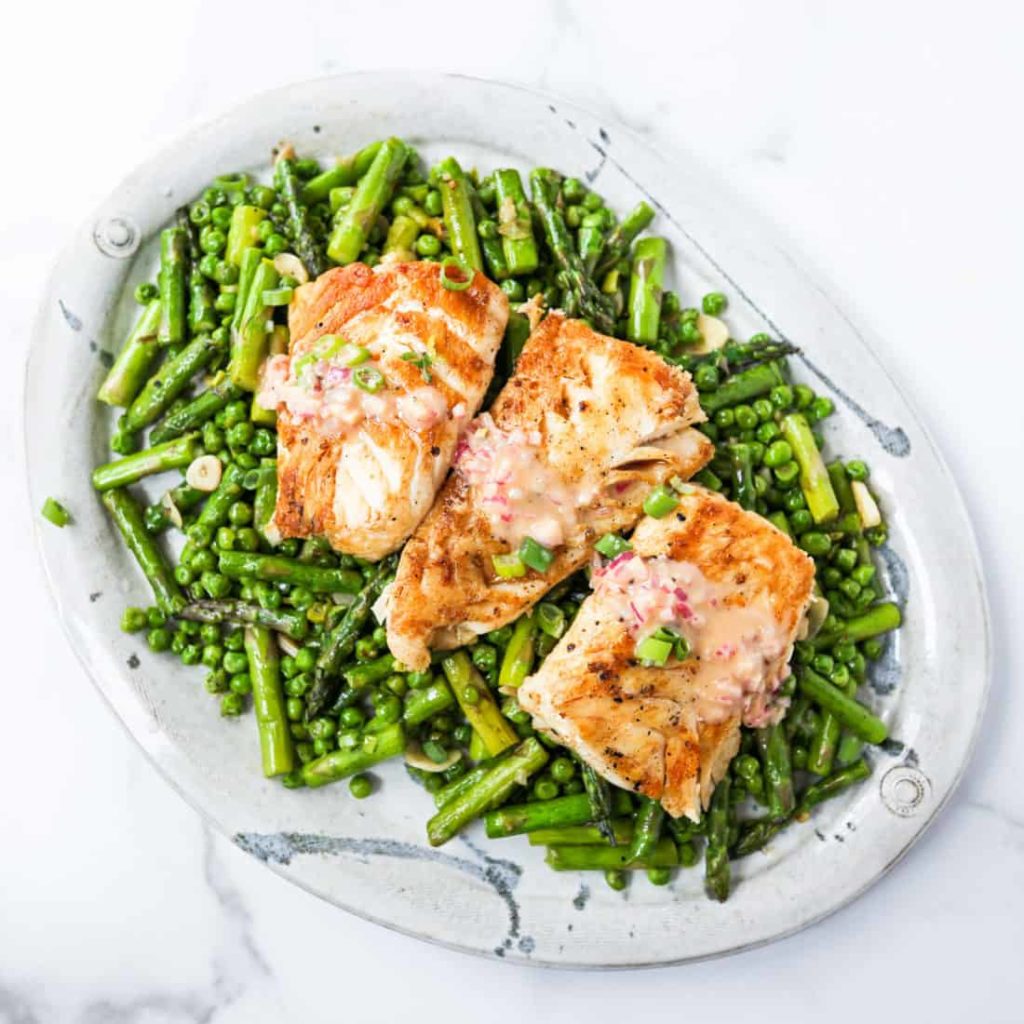
New to Whole30? Or maybe you’re a seasoned pro and are just looking for some new eats during these 30 days! Whether this is your first Whole30 round or your 20th, you’re going to fall in love with all of these Whole30 recipes!
We’ve compiled our top favorite Whole30 recipes from around the web that are a mix of every cuisine, and even include a handful of Whole30 and vegan recipes (because it’s good to eat a plant-based meal every once in a while!). Choose from over 35 delicious and easy Whole30 recipes for breakfast, lunch, and dinner, and we can guarantee you’ll be convinced that this isn’t even Whole30 😉 That’s how good it all is!
Some recipes are strictly Whole30, while others may fall under SWYPO, like sweet potato waffles, so for the very strict Whole30-ers, you know what to avoid! Everything, however, is made with Whole30-compliant ingredients that are- you guessed it- whole, from the earth, and absolutely delicious.
Enjoy!
Breakfast
- Breakfast Stuffed Sweet Potatoes (vegan)
- Baked Eggs with Spinach, Bacon, and Mushrooms
- Grain Free Hot Cereal (vegan)
- Whole30 McGriddles
- Sweet Potato Crust Quiche
- Strawberries and Coconut Cashew Crumble (vegan)
- Almond Joy Lara Bars (vegan)
- Sweet Potato Breakfast Bowls (vegan)
- Mushroom Frittata
- Cinnamon Roll Chia Seed Pudding (vegan)
- Paleo Sweet Potato Apple Bake
- Sweet Potato Waffle
- Quiche Lorraine Hashbrown Cups
Lunch
- Whole30 Cobb Salad
- Chipotle Beef and Avocado Bowls
- Whole30 Chicken Salad
- Cream of Cauliflower Soup
- Rainbow Veggie Salad (vegan)
- Greek Meal Prep Bowls
- Buffalo Chicken Ranch Meal Prep Bowls
- Whole30 Chili
- Egg Roll in a Bowl
- Cauliflower Risotto
- Pimento Chicken Salad
- Sweet Potato Hummus
Dinner
- Spaghetti Squash Alfredo (vegan)
- Creamy Buffalo Chicken Stuffed Sweet Potatoes
- Thai Coconut Chicken Soup
- Paleo Sesame Chicken
- Coconut Shrimp with Orange Sauce
- Buffalo Chicken Meatballs
- Sweet Potato “Lasagna”
- Thai Chicken Zoodle Bowl
- Celeriac Risotto (vegan)
- Thai Coconut Curry Shrimp
- Crockpot Chicken Fajitas
- BBQ Chicken Bowls
- Whole30 “In-and-Out” Burgers
Intermittent Fasting 101
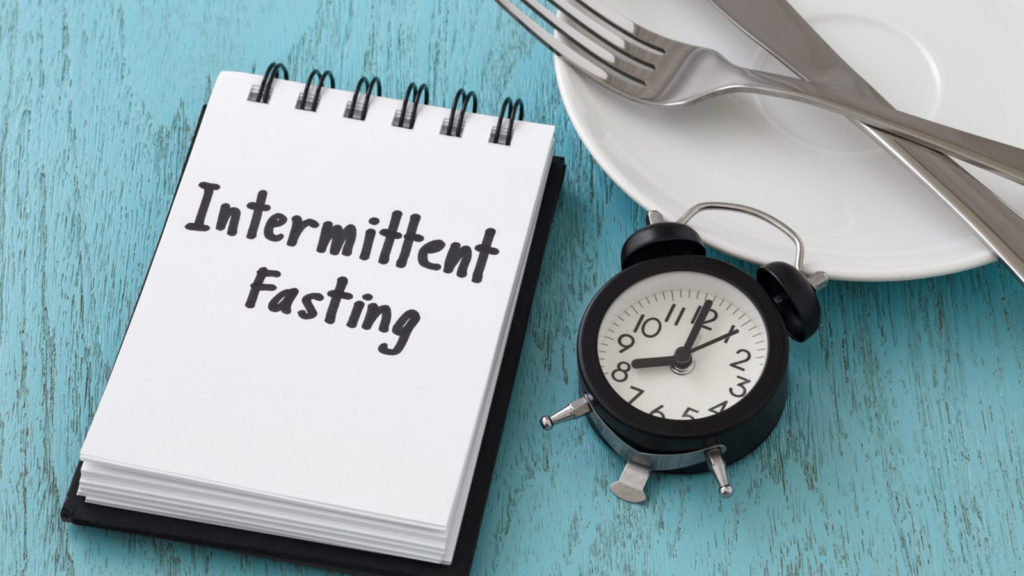
What is Intermittent Fasting (IF)?
Many confuse intermittent fasting as a diet, but it’s actually really a way of eating.
Essentially, intermittent fasting (IF) is about restricting how many hours in a day you consume food; rather than eating your meals throughout the day, you’ll confine your meals to a time frame, usually about 3 to 8 hours, depending on strictly you’re following the guidelines.
Actually, fasting has been quite common for humans throughout history. During the hunter-gatherer times, humans were accustomed to not having food always readily available, so we evolved to be able to withstand these climates.
Additionally, fasting is also done for religious reasons and is observed in religions like Judaism, Christianity, and Buddhism.
IF specifically, however, has become more popular because of its potential results in weight loss.
The Different Types of IF:
Not everyone has to fast for 20 hours per day. In fact, you don’t even have to fast for 18 hours, if it doesn’t suit your needs.
There are several different types of IF that can match your personal lifestyle, goals, and dietary needs:
- 16/8 Method: or 19/5 or 20/4! Basically, this is the most common form of IF. You fast for 16-20 hours per day and consume your meals within a 4-8 hour timeframe. For example, if you’re following the 16/8 method, you might eat from 11:00 AM to 7:00 PM and fast from 7:00 PM to 11:00 AM.
- 24 Hr Fast: some people prefer to not fast every single day; instead, they might choose one or two days a week to completely fast and only drink water.
- The 5:2 Method: this method is another form of IF, and involves restricting your caloric intake to 500-600 calories on 2 non-consecutive days, and eating completely normally (and healthily according to your needs!) the other 5 days.
What are some of the benefits of IF?
There are many benefits to following an IF lifestyle, the main one being the potential for weight loss. While it is not the result for everyone, it has been noted that IF can promote healthy weight loss for those who are trying to lose weight while not following a more traditional meal plan.
The other potential benefits include:
- Increased fat burning
- Reduction in LDL cholesterol (aka the bad cholesterol)
- Reduction in inflammation
- Improving longevity
- Protect against Alzheimer’s Disease
- Improved mental clarity
It should be noted that many studies on IF have only been done on animals or have only been conducted for short periods of time. More studies and data need to be taken to compile the effects of long-term intermittent fasting.
For now, IF can potentially be beneficial to those who successfully follow the lifestyle.
And the side effects and precautions?
While there are definitely benefits to IF, there are also some downsides and precautions that people need to consider before beginning a fast.
First, there is always an adjustment to every new lifestyle change, especially fasting. You might notice that you feel slightly weaker at first- this is your body adjusting to this new time frame of receiving fuel and nutrients.
Of course, hunger is also a side effect; at first! Most people adjust to fasting and their bodies retrain to signal new hunger cues when it’s ready to eat.
Because there is also less food being consumed, you might also experience constipation at first and headaches.
However, there are certain people who should not be on intermittent fasting, especially not without consulting their own physician. Those who:
- Are diabetic
- Have had a previous or are currently facing an eating disorder/disordered eating
- Are taking certain medications
- Are underweight (the main benefit is potential weight loss – if you’re in need of losing weight!)
- Have low blood pressure
- Have any serious conditions, such as liver disease, heart disease, or kidney disease
- Have gout or high uric acid
- Struggle with blood sugar regulation
- Women who are trying to conceive, are currently pregnant or breastfeeding, or are struggling with amenorrhea
Additionally, women should take precautions, as IF can potentially cause dysregulation in glucose levels and disrupt hormone regulation.
Remember to always consult your doctor when deciding whether or not intermittent fasting is right for you.
FAQs about Intermittent Fasting:
- Who should fast? Again, starting IF must be discussed with a healthcare professional. It is not recommended that children participate in fasting, and women should take caution and make sure it fits their own body type.
- Can I have liquids? Short answer: yes! But stick with water, coffee, and tea (for the coffee and tea, keep it black!). Avoid sugary drinks altogether when doing IF.
- Will fasting slow down my metabolism? Contrary to popular belief, it might actually improve your metabolic rate. However, this is only for short-term fasts. If fasting for extended periods of time, your body will go into starvation mode and slow down the metabolism.
- Can I work out fast? Yes, but at first you might notice a change in your performance. If you’re used to pre-fueling and refueling after a workout, you’ve trained your body to expect that food before enduring vigorous exercise. It will be an adjustment period at first, but eventually, your body eventually starts to pull fuel from the body’s reserves (i.e. fat). It should be noticed that while lifting and weight training, there might be an energy increase, aerobic exercises, especially endurance, do tend to perform better with fuel.
- What about starvation mode? Won’t IF trigger that? If you haven’t crash diet-ed before or have struggled with an eating disorder, studies have shown that IF can potentially improve body composition and increase basal metabolic rate.
Final thoughts on IF
Intermittent fasting can be a very successful way to lose weight and retrain your body, however, it is not for everyone.
Some of our best tips include:
- Drink lots of water: staying hydrated is key!
- Make sure that you’re focusing on nutrient-dense foods. Having only a short window of time to eat may encourage some to hoarse out on junk food. It is important to maintain proper nutrition for your own body in order to get the most benefits from IF
- Ride out the hunger waves when you’re just getting started
- Give yourself a few weeks to test out which IF method works best for you
- If intermittent fasting doesn’t work for you, it’s okay- there is no one-fits-all diet out there. It’s most important to eat how and what is best for your own specific body
What to do When You are Stuck at Home

During a time like this, the last thing you want to do is be holed up in your home, away from the world, your family, your friends, and your routine. It can also feel extremely tough to not be worrying, projecting, and living in fear, when it feels like all that’s surrounding you is just that.
But remember that how you feel is always still within your control. Emotions will come up, but you still have the choice to come back to your heart and breathe.
Once you’ve taken a breath, it’s time to make staying indoors a bit more fun. While you may not be able to go out and about like you normally do, we’ve compiled a list of over 20 fun and different activities that you can try while you’re taking this time of solitude. It can actually be a great way for you to try things that you’ve been putting off. These activities can be great for kids and adults alike, even whether you’re with many people or just yourself!
Take a look at some of these activities, and have fun!
- At-home no-equipment workouts. You can find a ton of these online and via YouTube. A few favorites are:
- 20-Minute No Equipment Zero noise workout: https://www.youtube.com/watch?v=CYD7f5b_qj4
- Full Body Workout: https://www.youtube.com/watch?v=r6Rle5hK1cQ
- 15-Min Ab Workout: https://www.youtube.com/watch?v=glxrwC9zsHY
- 30-Min Boxing Workout: https://www.youtube.com/watch?v=jCTEVKRTuS8
- Draw, paint, sketch, color!
- Start a meditation practice
- Get outside for just a breath of air. You don’t have to drive around town, but if your area is still able to, you can definitely stand outside of your home for a few minutes just to get some fresh oxygen and sunlight on your face!
- Practice breathwork: this can be a great exercise to help calm nerves and stress!
- Bake something fun and healthy by yourself, with a partner or friend, or with your kids.
- Challenge yourself to make a dish using just pantry staples, like beans, tomatoes, rice, and seasonings
- Watch your favorite movie series, like Harry Potter, Marvel movies, Ghostbusters, Toy Story, Pirates of the Caribbean, Star Wars, or Shrek (try to keep it as upbeat and funny as possible!)
- Have a virtual dinner date with friends
- Start that side hobby you’ve been meaning to pick up
- Organize a part of the house or apartment that’s a little messy
- Do a fitness challenge while watching your favorite TV show (for instance, if you like The Office, do 20 push-ups every time you hear Dwight shout, “Michael!”)
- Cuddle and play with your pet
- Say 10 things you’re grateful for at this moment. If you can’t think of 10, do as many as you can. There is always at least one, even if it’s just that the sun rose again
- Limit your consumption of the news. Yes, it’s important to stay informed, but there is also a lot of misinformation going around. In order to maintain a good outlook and positive mindset, it’s best to limit your consumption of the projections and fears of others
- Check-in on a family member or friend. When we feel we need someone to lean on, sometimes it helps by being the first person to extend the offer
- Read a new book or re-read an old one; you can also set up an Audible account and listen to books!
- Try a crossword or a puzzle! You can find many crosswords online, or play a board game with your children, partner, or friend
- Write a to-do list of all of the things you can accomplish while at home
- When consuming media, try to keep it as positive as possible. Check out a meditation channel on YouTube, scroll through Tiny Buddha, or check out Instagram accounts like Tank’s Good News (he was featured on Ellen!).
- Remember that this too shall pass. This is just one moment, and though it’s trying and scary, the unknown can also bring beautiful blessings, like showing us how truly kind some people can be (there are a lot of good things happening from this, like restaurants offering to turn their spaces into soup kitchens for those who can’t afford to eat, or hotels giving up their rooms to be turned into hospital rooms for those who need extra beds). Remember to stay in your heart as best as you can. Many are acting from their emotions and fear, and will often say things they don’t mean to. It’s important to remember to ride the wave. And like a wave, it ultimately flattens into calm water once more. Hang tight and know that this is only temporary and that a better day is ahead, but you can absolutely make the most of this period of rest!
Healthy Meals
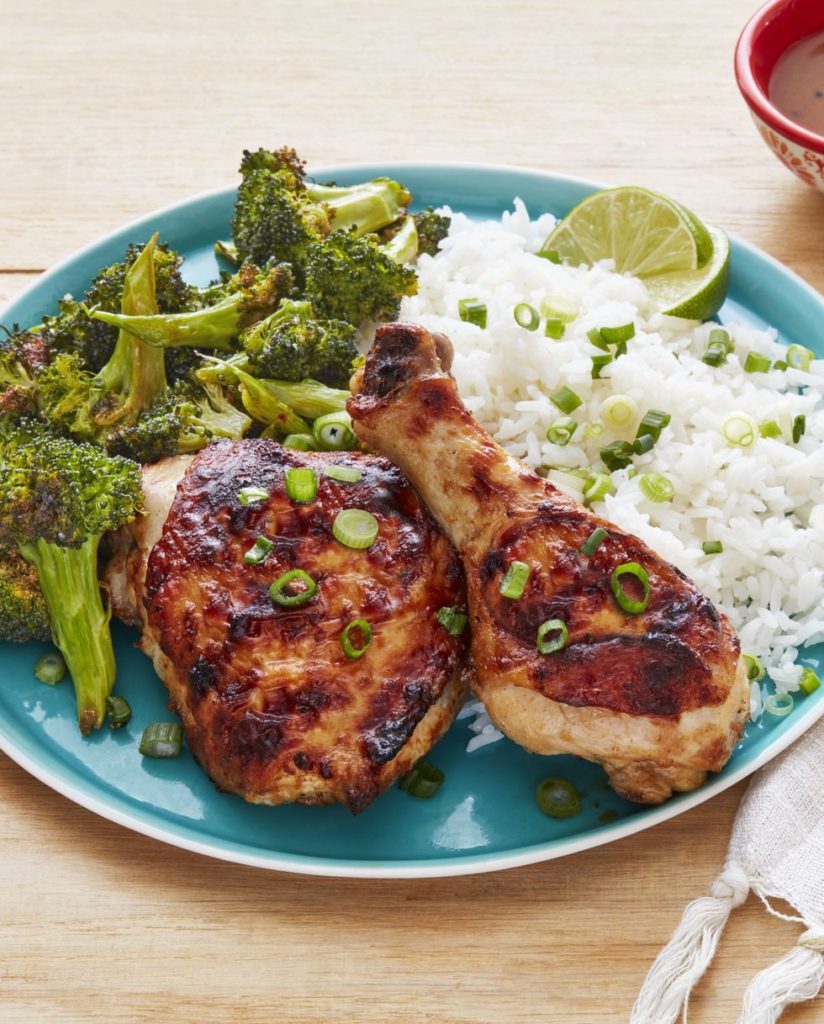
Starting with a healthy meal first thing is a great way to set the tone for the rest of the day. While you can always adjust how you eat throughout the day (like that time your coworker brings in cookies, and maybe you had a few, but you can always choose again and make your next meal healthier!), it’s always easier when we start healthy right away!
While it’s very common (and oh so easy) to just skip breakfast- your alarm goes off too late and you just don’t have time, you’d rather eat cardboard than a burnt piece of toast with bland spreads, or breakfast never fills you up anyways so what’s the point? – eating breakfast actually does a lot for your overall health! One study found that eating a high-quality, healthy breakfast was linked to a higher health-related quality of life and lower levels of stress and depression rather than having a poor breakfast or skipping it entirely.
Another study found that having a healthy breakfast consistently helped adolescents improve in school work and overall performance.
These breakfast suggestions below are designed to be easy to prepare, can be prepped ahead of time, and absolutely delicious, all while providing you with a nutritious start. Not all breakfasts may work specifically for your dietary requirements, so please always consult a nutritionist or doctor about specific dietary requirements.
For the meal prepper:
Vegetable Frittata: make this at the beginning of the week, and have breakfast every morning! Pair with a slice of toast and sliced avocado for healthy carbs and fats.
Apple Cinnamon Overnight Oats: add a scoop of protein in for some extra staying power, and double the recipe to make for all week!
Oatmeal Breakfast Squares To-Go: pair with fresh berries and a scoop of protein powder in dairy free or 2% milk!
Prepped Hummus Egg Toast: make your own healthy bread or purchase your favorite one, grab a tub of hummus, and boil about 5 eggs so that you can have easy hummus egg toast every morning! Toast a slice (or two depending on your needs) of bread, top with 1 tbsp of hummus eat, and slice boiled egg on top. Sprinkle a little sea salt, and enjoy!
For the sweet tooth:
Antioxidant Triple Berry Smoothie: add a slice of whole-grain toast for some crunch and extra fiber!
Homemade Chia Seed Pudding: this recipe has 3 different flavors!
Easy Classic Oatmeal (that tastes GOOD!): this can also be prepped and doubled in size for multiple servings!
For the savory tooth:
Breakfast Casserole: this is another great recipe to meal prep or be taken on the go!
Southwest Turkey & Egg Breakfast Skillet: an easy recipe to prep and divide for days!
Savory Oatmeal: have you tried this one before? Oats don’t always have to be sweet!
For the on-the-go eater:
Sweet Potato Hash Egg Cups: an easy and fun breakfast that gets
15 Min. Meal Prep Breakfast Sandwiches: for meal prep & on-the-go eaters alike! Who doesn’t like a good breakfast sandwich?
Parfait to go: grab a container of 2% Greek yogurt or dairy-free yogurt, top with fresh berries or fresh no-sugar-added jam, 1 tbsp nut butter, 2 tbsp homemade granola, and dash!
Green Smoothie: add a slice of toast to take with you!
Almond Chia Overnight Oats: perfect for when you start thinking of breakfast the night before 😉
For the sit-down eater:
Sweet Potato Quiche: this is a fun recipe that everyone will love, yet no one will know is gluten and grain free!
Sweet Potato Breakfast Boats: this recipe is also great to prep, but definitely is worth sitting down for!
Low-Carb Breakfast Enchiladas: while low in carbs, you’ll feel so satisfied!
For the family:
Gluten-Free Oatmeal Banana Pancakes: sever with sliced bananas, extra chocolate chips, and a drizzle of real maple syrup! Something everyone will enjoy!
Flourless Peanut Butter Waffles: kids will love these easy and fun waffles!
Healthy Chocolate Chip Muffins: pair these gluten-free muffins with a bowl of greek yogurt and fresh berries, and everyone will be over the moon!
Vegan Blueberry Scones: so good with a glass of dairy-free milk!
Shakshuka: a really fun and delicious way to eat eggs! Top with or without feta 🙂
Easy and Healthy Family Meals
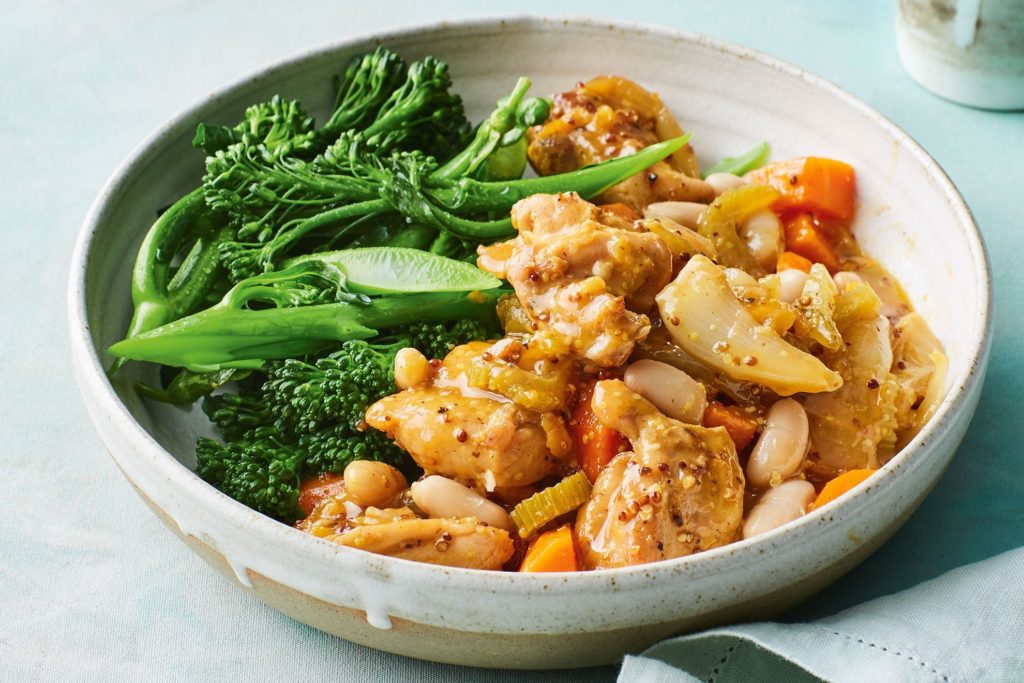
Cooking for a crowd can be tough, especially when you are the pickiest of critics in the bunch, and you just want to make sure everyone is getting a healthy meal! It’s frustrating, we totally get it.
But it doesn’t have to be that way!
We’ve compiled 16 of the best and tastiest family meals that are kid approved, easy to make, and above all, good for you. Have a look through, and enjoy!
Baked Paleo Chicken Tenders: just like the classic, only better! These chicken tenders are completely gluten and grain free, and easy to make. Pair with a side salad or steamed veggies, and of course, ketchup and mustard!
Make Your Own (Healthy) Tacos: tacos don’t have to be unhealthy! This recipe suggests swapping in Greek yogurt for sour cream and going heavy on the veggies. Use lettuce cups for a low-carb and gluten-free taco!
Chicken & Rice Casserole: healthy eating certainly doesn’t have to be expensive either. This gluten-free casserole is a perfect mix of good-for-you ingredients that won’t break the bank!
Chicken Spinach Spaghetti Squash Casserole: this dish is great if you’re looking for a different “pasta” type, but still want to air on the low-carb side. Spaghetti squash is also fun because you can make this dish and plate it right in the squash. Kids will love getting to eat from this fun shape!
Healthy Turkey Meatballs over Zoodles: miss spaghetti and meatballs? This is a great dish for getting that classic Italian flavor while also being packed with protein and veggies! A great way to get kids to try a different vegetable 😉
Healthy Chicken Pot Pie: sometimes you just need good comfort food!
Everything But the Kitchen Sink Soup: who doesn’t love a good instant pot recipe?! Throw in all of your ingredients then step away to continue what you were doing. Come dinner time, you’ll have dinner ready to go and for a family!
Vegan Lentil Bolognese: interested in going a more plant-based route? This is a great recipe that will be familiar to kids both in name and texture, but vary on one key ingredient: no meat! To replace the meat, you’ll use lentils, and it is delicious!
5-Minute Lemon Garlic Shrimp: this dish will make you feel fancy, it will satisfy all of the bellies, and it will taste good!
Slow Cooker Taco Spice Chili: slow cooker recipes are just the best! This soup is great for getting in veggies and protein, all while being low in carbs. A definite crowd-pleaser!
20-Minute Lemon Baked Salmon: another quick and easy dish, serve this salmon with a side of roasted sweet potatoes and steamed vegetables or salad, and you are good to go!
Sweet Potato Pasta Bake: this is a fun twist on a traditional pasta bake- instead of using noodles, you’ll use spiralized sweet potato noodles! Don’t worry- you can pick these up at most grocery stores in the produce section, so no need to break out the spiralizer and make a mess!
Make Your Own Paleo Pizza: this recipe is great and fun for kids on a Friday or weekend night- make this grain-free, gluten-free pizza crust for a healthier twist on pizza and have the kids and adults top it with whatever their hearts desire! You can lay out marinara, vegan mozzarella, regular mozzarella, sliced bell peppers, zucchini, mushrooms, tomatoes, and the like. Have everyone build their own pizza, bake and serve!
Freezable Vegan Veggie Burgers: turn burger night into veggie burger night with these easy and freezable vegan veggie burgers! Make them in a large batch them place them in the freezer for whenever everyone is down for a burger night.
Lightened Up Mac n Cheese: a kid favorite always, this lighter version tastes like the real deal but won’t feel as heavy afterward. Swap in gluten-free bean pasta for more protein as well!
Chinese Cauliflower Fried Rice Casserole: “takeout” night is a must, and with an easy casserole like this, eating healthy is more than doable! The cauliflower rice subs in regular rice to make it low in carbohydrates, but feel free to swap in quinoa or brown rice if you don’t need or want to make low-carb dishes!
Best Healthy Slow Cooker Meals
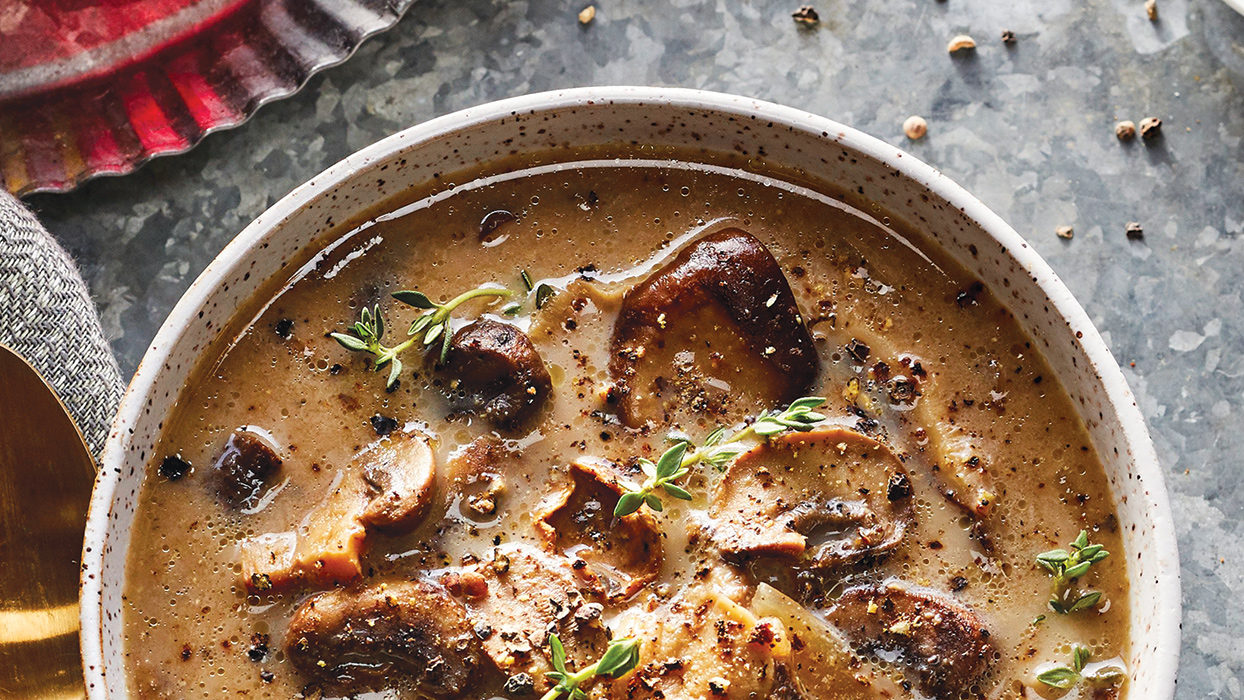
One of the best healthy kitchen tools is the big ol’ slow cooker! These cookers are fantastic for making large healthy meals for a family or meal prepping, all while you can continue to check something else off your list! Plus you don’t need fancy skills to make a delicious, filling meal.
We’ve compiled a few of our favorite healthy recipes, everything ranging from Paleo crockpot recipes to vegan, to just straight-up good-for-you recipes that everyone can enjoy! Whether these recipes are to have throughout the week or for a big crowd, the best part is that you can step away while it cooks!
Check out the recipes below, and give them a whirl!
Paleo
Paleo Slow-Cooker BBQ Chicken: perfect stuffed in a sweet potato and served with some steamed or sauteed greens!
Crockpot Sweet Potato Chipotle Chili: this is a fantastic soup that serves a crowd, all while keeping hunger at bay, thanks to loads of veggies and beans in here!
Slow-Cooker Orange Sesame Chicken: serve this over cauliflower rice, regular white rice, or even brown rice with a side of veggies made from a sheet pan, and you have dinner for days!
Keto
Crockpot Chicken Fajitas: all flavor, and low carb! Serve with some cauli rice for a burrito bowl!
Slow-Cooker Salmon: perfect for getting in healthy proteins and fats! This dish is great with steamed spinach with lemon juice.
Slow-Cooker Buffalo Chicken: to keep it, Keto, serve this with any riced veggie, and if you don’t need keto, serve with a sweet potato or your favorite grain!
Vegan
Slow-Cooker Veggie Curry: perfect over a bed of white rice! Trader Joe’s and most grocery stores also have a great selection of pre-cooked frozen white rice, which makes this meal even easier to whip together!
Slow-Cooker Three Bean Chili: don’t want meat in your chili? No problem! This vegan chili has all of the classic flavors, all while being plant-based.
One Pan Mexican Quinoa Casserole: a fun and plant-based twist on a family favorite! Thanks to the quinoa, this dish also gets in some great plant-based protein!
Gluten-Free
Slow-Cooker Wild Rice Veggie Soup: perfect for reheating throughout the week!
Crockpot Thai Chicken Curry: packed with flavor, this curry is a great way to switch things up!
The Best Detox Crockpot Lentil Soup is a cozy yet light soup that’s great for fall and winter when you need something hardier!
Basics of Eating Healthy
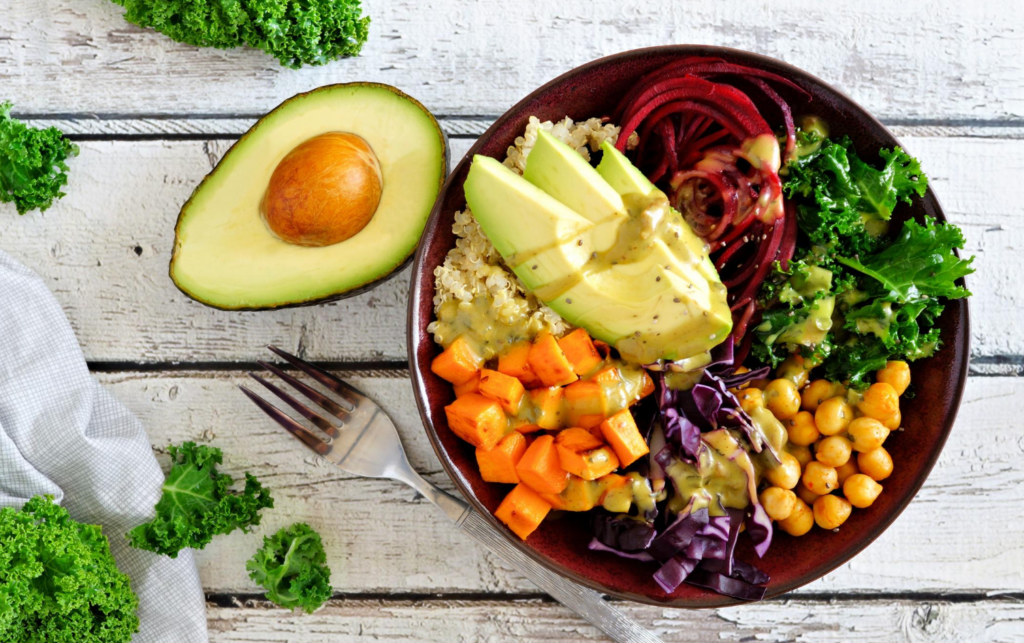
What is eating healthy? Living healthfully can seem simple at times, and at others…downright confusing. Like trying-to-solve-a-Rubik’s-cube-that-has-no-solution kind of confusing.
But don’t worry, because, in actuality, healthy eating is easy, doesn’t have to be fancy to taste good, and certainly doesn’t have to cost your entire mortgage payment.
Let’s go over what makes up food, what makes a healthy choice, and how you can eat healthfully throughout the day (psst! A healthy day of eating included at the end!).
Macronutrients and Micronutrients
At the end of the day, food is more than just food; it’s made up of macronutrients and micronutrients that your body needs in order to complete basic functions, like breathing, circulating blood, and keeping vital organs alive.
Now, don’t let the term “macro” make you think that macronutrients are more important than micronutrients. In fact, your body needs both types in order to function properly.
You just need a larger amount of macronutrients than micronutrients, but if you miss out on those micronutrients, then your health could suffer greatly. With macronutrients, there are only 3, whereas, with micronutrients, there is a heck of a lot more. But first, let’s go over what macro and micronutrients are exactly.
Macronutrients: this group of nutrients is comprised of proteins, carbohydrates, and fats. While there are varying diets that claim you need more or less of a certain macronutrient, they all play a vital role in one’s health. Each individual, however, may need more or less of one specific macronutrient. The standard model for a daily intake of macronutrients is 20-30% protein, 40-50% carbohydrates, and 20-30% fat. You can consult with your doctor or nutritionist to determine the best ratio for you specifically.
Like we mentioned earlier, each macronutrient plays a vital role in maintaining good health.
Protein is not only good for a healthy metabolism, as it requires the most energy for the body to break down, but it also gets broken down into amino acids, which serve as the building blocks for new cells. Essentially, these amino acids are used to repair old tissues of organs, skin, muscles, and bones. Protein also aids in the production of important hormones and immune proteins, such as antibodies and interferon.
Good sources of protein include pasture-raised and organic eggs, organic and grass-fed meats (chicken, red meat, turkey), wild fish (salmon, tuna, tilapia, cod), shellfish (shrimp, crab, scallops), and dairies such as Greek yogurt, milk, and cheese). There are some plant-based forms of protein, but the amount of protein in a serving is significantly smaller than that of animal protein and may need to be combined with other sources of protein to create a complete protein. These plant-based sources include beans (chickpea/garbanzo, black, pinto, white, cannellini, cannelloni), hemp seeds, chia seeds, flaxseeds, pea powder (made from green peas), and nuts.
Carbohydrates include starches, sugars, and fiber. These are the body’s main sources of energy, and the second source is fat. Not only are they good at supplying the body with energy, but they’re also important in helping to preserve muscles. When not enough carbohydrates are being consumed, the body can switch to consuming amino acids, which make up your muscles. The amino acids are turned into glucose and used as energy instead, resulting in loss of muscle mass. Consuming unrefined carbohydrates is important in preserving energy and maintaining muscle mass. Grains, fruits, and vegetables contain whole carbohydrates, which will keep your energy stable and your blood sugar from spiking. Refined carbs, such as white sugar, processed foods, and specialty drinks (sodas, sweetened coffees, teas, store-bought smoothies, etc) can lead to what is some call the “blood sugar roller coaster.”
Good sources of carbohydrates include whole grains (oats, rice, faro, barley, quinoa, whole grain bread with no added sugars, pasta made with whole grains), legumes (chickpeas, black, pinto, lentils, etc.), sweet potatoes, starchy vegetables (Brussels sprouts, broccoli, cauliflower) as well as regular non-starchy vegetables, regular potatoes, and fruits.
Fats are the last macronutrient, and, like the previous three, they serve a vital role in making sure everything is functioning properly. Similar to carbohydrates, fats can be used as energy, and they can also help with providing a sense of satiety after a meal. Fats are also essential in helping your body to absorb some vital micronutrients- without fats, consuming these micronutrients would be useless, as your body would not have anything to use as a vehicle of absorption! Fats also help to keep your organs and body regulated at a good temperature, as well as develop a healthy brain (your brain is made up of nearly 60% fat!).
Good sources of fats include nuts and seeds (almonds, cashews, walnuts, pecans, hazelnuts, pumpkin seeds, sunflower seeds, hemp seeds, flaxseeds, etc.), avocado (which is considered a fruit!), cheese, full-fat dairy, dark chocolate (unprocessed, made up of cacao butter and cacao), whole eggs, fatty fish (salmon, trout, mackerel, sardines), extra virgin olive oil, coconut oil, and avocado oil.
Micronutrients
Now, micronutrients are a little different- you need a wider variety of them. In fact, you need about 30 different vitamins and minerals (which are considered micronutrients) just to function properly. We won’t go over all of them, but these important nutrients are found both in plant and animal sources, and it is suggested that you consume both for a healthy diet. If you do choose to consume only plant sources, you will need to supplement certain nutrients, such as B Vitamins and Zinc. Always consult with your doctor and/or nutritionist to determine what is best for you because you can have too much of a certain micronutrient, as well as too little.
Like we mentioned earlier, micronutrients are composed of water-soluble vitamins (dissolved in water) such as Vitamin C and B Vitamins, fat-soluble vitamins (dissolved in fat) such as Vitamin A, D, and K, macro minerals such as Calcium, Phosphorus, Magnesium, and Sodium, and trace minerals such as Iron, Flouride, Selenium, and Zinc.
Each vitamin and mineral plays an important role in the overall functioning of your body’s various systems. However, constantly monitoring what micronutrients you are getting and from where would be exhausting and near impossible.
To make sure that you’re getting the right nutrients for your body, it is important to eat nutrient-dense foods, such as whole fruits and vegetables (including leafy greens and colorful produce!), well-sourced meats and fish, and whole sources of carbohydrates.
But how do I make the best choices?
All of this information can be helpful, but if you don’t know how to apply it, it becomes useless! So now that you know about macro and micronutrients, their importance, and the foods you can find them in, how do you proceed?
At the end of the day, consuming foods that are as close to the earth as possible and unprocessed is key. This includes choosing a wide variety of vegetables that are also in season, purchasing well-sourced meats that are unprocessed (i.e. choosing chicken breast over deli sliced chicken), and reaching for a sweet potato instead of sweet potato chips (unless you want to make them homemade, which you totally can!).
When shopping for groceries, it’s always best to shop the outskirts of the store first- head to the produce section and stock up on seasonal fruits and vegetables, pick up your favorite protein source, whether that’s eggs and chicken, lean beef and Greek yogurt, or a plant-based option, then roam the aisles for spices and seasonings, nut butter, sea salt, whole grains such as oatmeal and rice.
Of course, this does not mean that you have to eat perfectly healthy. A healthy diet is not 100% “healthy” all the time, nor should it be. It is about what makes you feel good both mentally and physically.
There are also ways to make healthy eating cost-effective as well- purchasing some vegetables and fruits frozen can be very affordable, as well as shopping at stores like Trader Joe’s and Costco, which oftentimes have significantly cheaper prices on even name-brand products.
Healthy eating can and should be enjoyable, affordable, and not mentally taxing. Start with small changes that are manageable, which will result in long-term and lasting results. Always consult with your doctor and nutritionist to determine what best suits your needs. Eating healthy doesn’t mean that you’re abandoning your favorite foods. In fact, there are ways to make almost every food slightly healthier, even Oreos!
It just means making some foods “sometimes foods” rather than “all the time foods.”
A Day in the Life…
Now that we know a little bit more about what makes up a food and how to make healthier choices, let’s go over one example of what a healthy day could look like. Your own personal needs may vary from this, but this is to show you that healthy eating can be easy and enjoyable!
Breakfast: 2-3 scrambled eggs with sea salt, pepper, and rosemary, 1-2 slices of whole grain bread or 1/3 cup whole oats cooked in water and topped with fresh berries and 1 tbsp of nut butter; cup of coffee with a little milk
Snack: sliced carrot sticks and 1-2 tbsp hummus
Lunch: whole grain pita pocket filled with lettuce, tomato, cucumber, avocado, and sliced grilled chicken
Snack: ½ cup strawberries
Dinner: 4 ounces grilled salmon seasoned in balsamic vinegar and olive oil, sautéed zucchini, spinach, and tomatoes, with 1 medium baked sweet potato seasoned with sea salt and 1 tsp olive oil
Dessert: sliced banana with 1 tbsp peanut butter, 1-2 squares chocolate, and chamomile tea
Of course, drink lots of water throughout the day too! Again, this is just an example, and your taste preferences and needs will vary, but healthy eating can be as fun and easy as you want it!
30 Plus Thanksgiving Recipes
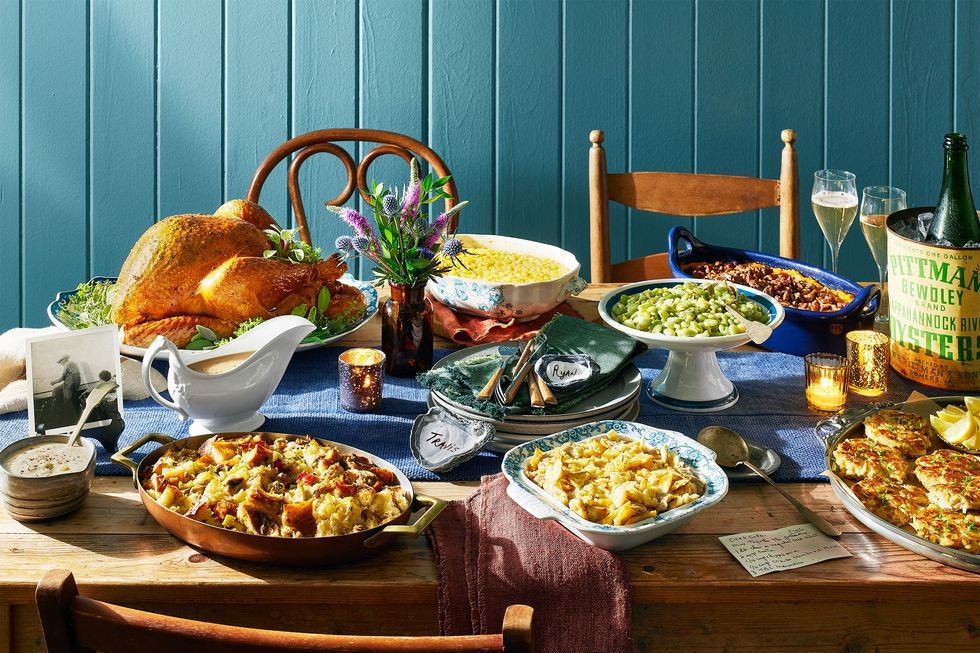
It’s certainly not easy being on a diet, and it makes it even harder around the holidays. It often has people that maybe need to or are currently following a certain diet feeling left out. Well, we have you covered so that you can have your gravy and eat it too 😉
This Thanksgiving, we’ve compiled some of our favorite holiday recipes that range from Paleo and gluten-free to Keto, and finally to vegan and vegetarian. There’s something for everyone, and anyone will enjoy these recipes, whether or not they align with their diet. From sides to desserts (and even a lentil loaf for the non-meat eaters!), you’ll have freedom, peace of mind, and enjoyment at your holiday get-together.
And that’s how it should be!
Paleo/Gluten-Free Thanksgiving:
Roasted Garlic Mashed Sweet Potato
Keto Thanksgiving:
Paleo Vegan Chocolate Cream Pie (make keto by omitting sweetener and/or adding stevia)
Vegan/Vegetarian Thanksgiving:
Lentil Loaf (as a replacement for turkey)
Paleo Vegan Chocolate Cream Pie
30 Easy Meals One Pot, Sheet, or Bowl
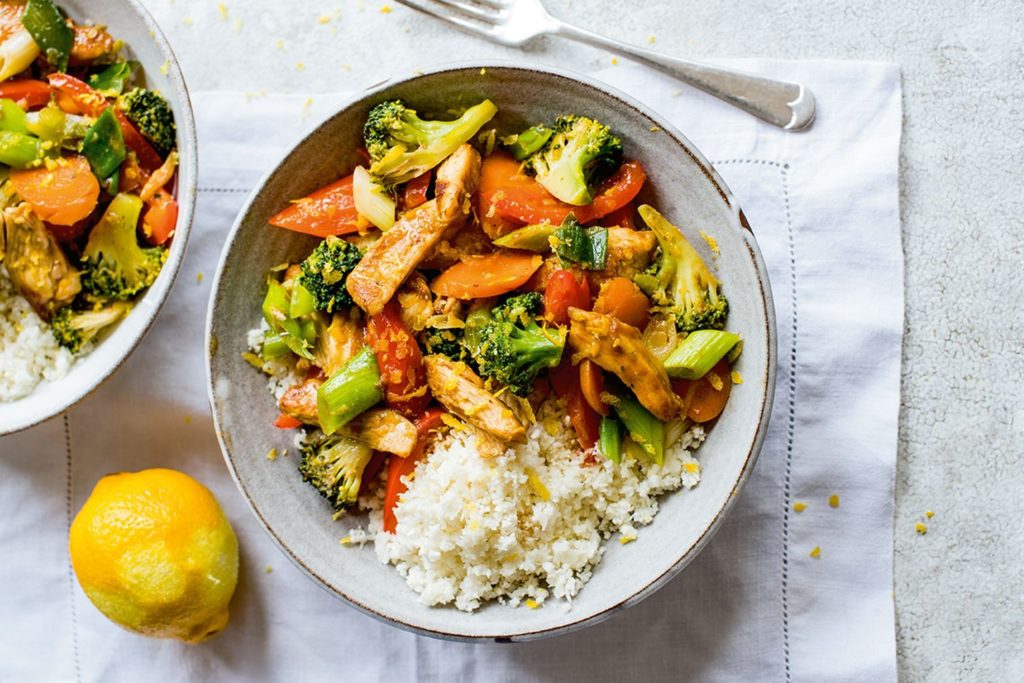
We’ve rounded up 30 of our favorite easiest healthy meals, and we’ve got it all: one-sheet pan meals, one-bowl meals, one-pot (or skillet!) meals, and more. These recipes range from gluten-free to Paleo, from Whole30 to vegan- whatever you need to eat, we’ve got you!
What’s more, these healthier recipes can be made for a crowd or just meal prepped at the beginning of the week: whatever you need, it can be done! And they’re great for families too.
These recipes don’t just cover dinner: we’ve rounded up recipes that will take you from the start of your day until you hit the pillow, so check out the recipes below, choose a few that you want to include in your week (whether it’s meal prepping a few recipes for on-the-go breakfasts or lunches, or making your evenings easier by coming home to an already-made meal!), and get cooking!
P.S. Some are even fun and stress-free to make with kids, like the one-bowl pumpkin bread and Paleo banana bread! Kids will love these recipes just as much as you do!
Breakfast:
Apple, Bacon, Cheddar Frittata
Sweet Potato Breakfast Skillet
Skillet Eggs and Potato Garden
Paleo Breakfast Muffins (no added sugar)
Paleo Banana Bread (no added sugar)
Lunch:
Sweet Potato Hash Protein Bowl
Super Simple Vegan Mac n Cheese
Vegan Sweet Potato Buddha Bowls
Vegan Pecan Apple Chickpea Wraps (Low Carb)
Greek Chickpea Chicken Salads To-Go
Crockpot Sweet Potato Chipotle Chili
BBQ Baked Salmon + Zucchini (meal prep)
Healthy Greek Chicken Pasta Salad
Dinner:
One Pot Chicken Enchilada Skillet
Balsamic Chicken Skillet with Pomegranate Seeds
Spicy Salmon Sweet Potato Skillet
30 Easy Keto Recipes
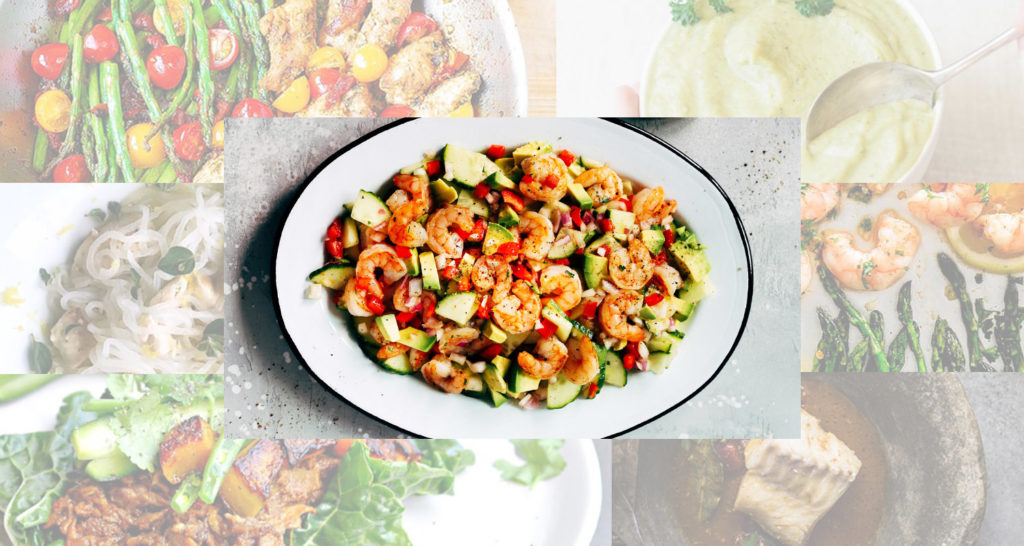
I totally get it: cutting out not only all sugar but all carbs is like asking you to move a mountain. I mean, at least for me, it totally was (*cough* needs chocolate every day *cough*). But eating low carb doesn’t have to taste disgusting or be difficult. In fact (or in *fat* ha!), it can actually be quite delicious with the right recipes!
Now, if you’re new to keto, let’s break it down real fast. Essentially, the Keto diet is a very low-carb yet high-fat diet that helps to bring your body into ketosis, a state in which your body is using fat as fuel rather than carbohydrates.
There are a few different versions of keto, but the standard protocol that one might follow is 75% fat, 20% protein, and 5% carbs. That means, of the calories that you eat that day, only 5% of them can come from carbs.
It can be complicated to keep track of (and please consult your PCP or healthcare professional before beginning this diet), which means that there’s little room for creativity with what you eat because you’re so focused on eating the right thing…
….Or is there?
Check out a compilation of over 30 of the easiest and quite appetizing Keto recipes. There’s everything from cauliflower bagels to keto sushi and even keto ice cream!
So go forth on your low-carb journey, and enjoy every bite!
Breakfast:
Lunch:
Italian Chicken Meal Prep Casserole
Dinner:
Cheesy Cauliflower Breadsticks
Dessert:
Keto Chocolate Chip Cookie Dough Balls
Keto Chocolate Avocado Pudding
20 Ways to Practice Self Love

One of the most ironic parts about our culture is our desperate search for love outside of ourselves when we should be looking inward. Yes, loving relationships are important in our lives, but the most important relationship you’ll ever have is with yourself.
If you can’t love yourself, your day-to-day life is pretty hard (yet you might not even realize it because of the negative self-talk going on autopilot constantly!). The fact of the matter is, you cannot fully love your life without loving yourself first.
And the funniest part of it all is that you’re so worth the love. You’re beyond worthy of offering yourself love and receiving it from others. You’re amazing, as cheesy as it sounds, and yes we can say that from not even directly speaking to you. But you won’t even see that unless you can let down your walls to see the beauty within.
Now, self-love is different from being self-absorbed. Ironically, most self-absorbed people actually have little to no self-love and self-respect. Loving yourself means seeing yourself for who you truly are and allowing yourself to step into your truest potential.
So today we’re going to go over our top 20 ways to practice self-love. If you’re new to this, a fair warning, it will feel really uncomfortable at first. But the more you practice, the more you’ll see how worthy you are of loving yourself.
- Look yourself in the mirror, make eye contact, and say “I love you.” It will feel silly at first, but keep doing it. Say it 3 or 5 times at a time, slowly and intentionally, as if you’re speaking with a family member, friend, or partner.
- Stop comparing yourself, your life, your weight, your body, your accomplishments, your failures, etc. to others. Nothing good comes of comparison. You’ll almost always see yourself as less than, and besides: it would always be like comparing apples to oranges. Both are good fruits, though nothing alike, so they can exist and be enjoyed concurrently.
- The next time you make a criticism about yourself, your body, or any part of you, counteract it with what you’re grateful for about that same thing. So for instance, say you got into a heated argument and ended up getting emotional and crying. Instead of getting down on yourself for showing emotion and crying, say thank you for these human emotions, for without them, I would not know the true experience of happiness and joy. Another example: if you’re upset with how your stomach looks, instead of saying how “fat” you are, say: I’m so grateful that my stomach can digest all of the nutrients that I feed it, and I love feeding myself with nutritious and nourishing foods.
- Find new ways to express yourself. Whether that’s taking a few moments to paint, picking up knitting, going for a bike ride rather than a walk, or journaling instead of typing, explore new avenues that spark your interest.
- Sit in silence and meditate daily. This could mean 5 minutes, or it could also mean an hour. Whatever level you’re at, take time to just be with yourself and familiarize yourself with the inner dialogue that’s going on. From there, you’ll become more mindful of how you speak to yourself, how you act towards others, and what you do during the day that either goes against self-love or towards self-love.
- Have patience with yourself. Learning to love yourself takes time and is ever-evolving, like any other type of love we have in our lives.
- Realize that true beauty and attractiveness comes from within. Outward appearances are skewed left and right, through media channels, magazines, social media, and yes even in person. Those are never the true markers of beauty.
- Celebrate what makes you different. That’s where your uniqueness lies and your strength.
- Surround yourself with people that lift you up rather than tear you down. Even if it’s people that are tearing down themselves, you don’t need to be in that energy. Jim Rohn said, “you are the average of the five people you spend the most time with.” Choose who you surround yourself with wisely.
- That voice in your head isn’t always true: learn when it’s aligned with your ego mind (most often sending you into fear, scarcity, or bringing you down) or with your mindful self (most often unemotional and unbiased, reason, and caring).
- Practice self-care. A huge part of self-love actually comes from self-care. Make sure you’re treating yourself right; that saying, treat others the way you want to be treated also includes how you treat yourself.
- On that note, make sure that you are treating others with kindness. When we treat others how they deserve to be treated (with love and respect, not what they’ve “earned” when doing something wrong), we often feel good about ourselves too.
- Practice gratitude daily. Yes, you should turn it inward, but don’t forget to express thanks for all that surrounds you. Even just that the sun came up and you got to try again.
- Mentor yourself as you would a child. If a child did something wrong, like eat a cookie before dinner, you wouldn’t be yelling “You’re so stupid, Karen, why’d you do that?! You’re so fat!” would you? You’d be gently correcting and redirecting the child. The same goes for how you speak to yourself.
- Learn when you need to say yes and when you need to say no. This is a fine balance. Sometimes we need to push ourselves to go outside of our comfort zones and say yes when we want to say no, but other times, we need to honor that calling to set boundaries and abide by them. Everyone is different and this will take practice.
- Get rid of guilt. Stop feeling guilty for what you do! You are a human being on this planet. You’re allowed to take up space.
- On that note, get rid of shame too. Let go of the past. You cannot return there, so there’s no use training your body to respond to the emotions of stress, shame, guilt, and anger for an experience that has long passed.
- Allow yourself to rest. Prioritize sleep and learn when to turn off electronics, work, etc.
- Keep your space clean and organized. A clear space helps to have a clear mind!
- Reach out for help. If you’re struggling in any way, you do not have to do this alone. Asking for guidance can sometimes be the biggest act of self-love. Strength also comes in accepting help.
20 Healthy Habits to Adopt
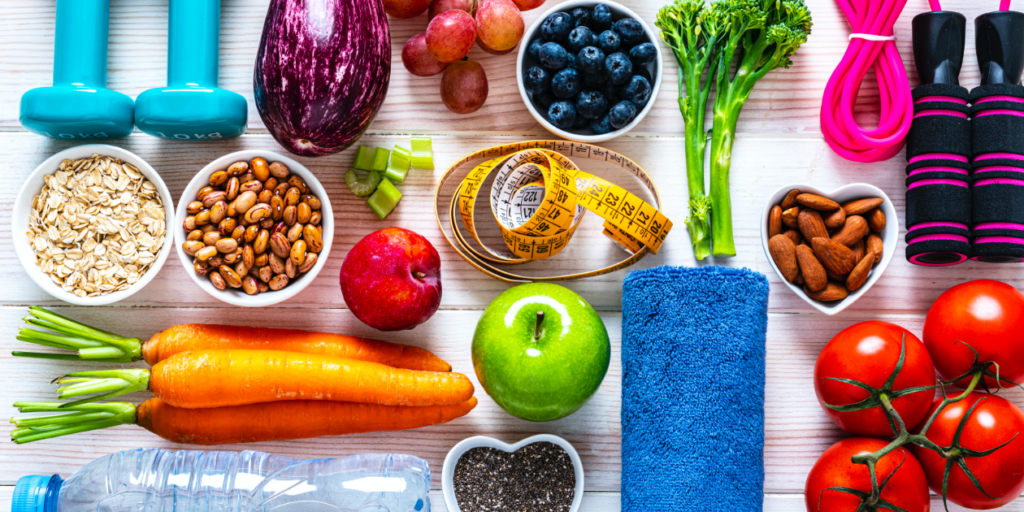
With all of the focus being on what new diet trend you’re going to hop onto, or how January 1st needs to be the start of the “new you” for the new year, it’s easy to fall back into not only attempting a resolution and failing, but also to beating yourself up because you didn’t complete it.
In this article, we’re challenging how you see the new year. By implementing any one (or multiple!) of these habits (not resolutions) into your daily, you’ll set yourself up for greater success, and more importantly, reap the benefits of the new habit that you’ve created. Because the start of each new year is not about whether or not you hit your goals; it’s about reassessing where you’ve been and creating a game plan for where you’re going.
- Focus on adding more healthy foods to your plate rather than taking away
So much about New Year resolutions is about restricting and cutting out food, rather than adding. We’re changing that this year! Instead of condemning certain foods, try adding in ones that you want to eat more of, such as whole fruits and vegetables, wholesome grains, nuts, seeds, etc. There’s a great free app called Vito that you can track how many vegetables and fruits you eat per day (with an emphasis on just the quality, not the calories), as well as your water intake. Definitely recommend checking that out!
- Have one (or two) plant-based days per week
Eating more plants doesn’t mean you have to be shoving stalks of celery down your throat or gnawing on a head of romaine. It’s simply focusing on incorporating more meals that have plants at the forefront into your daily life! If you’re new to plant-based eating, some recipe blogs to check out are: Cupful of Kale, Minimalist Baker, Choosing Chia, Feasting on Fruit, and (of course, I have to say my own!) The Banana Diaries!
- Move your body daily
Whether it’s getting outside for a walk, doing some light stretching, completing a strength workout, or doing a new form of exercise, make sure you’re moving your body in some way each day. Even if it’s only for a few minutes!
- Reward yourself (with something other than food!)
Sometimes we get into a habit of rewarding something good that we’ve done (like following a diet, getting a promotion at work, checking all of our to-do’s off) with food. There’s nothing wrong with having a treat occasionally, but sometimes it’s good to reward ourselves with other things, like getting that book you’ve been wanting to read from the library, or taking a bubble bath, or treating yourself to a fun trip. Rewarding ourselves in this way also often lasts longer than rewarding ourselves through food!
- Take time off social media and unplug
It’s easy to get lost in a scroll on Instagram and then all of a sudden it’s an hour later, and you were supposed to have x, y, and z done! Schedule times to check social media if you enjoy it, but have a no social media timeframe before bed and for a little while after you wake up. The world will be there, but you deserve to be with yourself first.
- Walk anywhere within a mile
This can be hard if you’re living in a rural area, but trying to walk as much as you can or even just move your body in some way daily can do a world of wonder for your body, your mind, and your environment!
- Practice gratitude
And daily. Take a few minutes at the beginning of your day to write down a few things that you’re grateful for. It doesn’t have to be a laundry list, but things you truly are thankful for (and can feel that thankfulness, because there’s a difference between saying it and feeling it) to have in your life. You can be grateful that there’s food in your fridge, that you got the day off work, for your dog or cat, your family, etc. Anything! Doing this one small act daily is enough to switch your mind from seeing the world as happening to you to the world is happening for you.
- Take 5 minutes of meditation daily
As simple as it is, most people struggle to sit with themselves for more than a minute. Why? They can’t bear to be with their own thoughts. But the ironic thing is that when they’re not sitting, those thoughts are still happening, just subconsciously. So you’re not aware of the negative thought patterns you’re having, yet you’re still experiencing the consequences. When you meditate, you can become conscious of those thought patterns that maybe aren’t so good and that you want to change. Now with that new awareness, you can rewire those thoughts to be more positive, which in turn actually makes your subconscious thoughts, which dictate your day-to-day reality and how you react, more positive so you experience a better reality. We recommend looking into the material by Dr. Joe Dispenza, Deepak Chopra, Dr. Sue Morter, and Eckhart Tolle to start your meditation practice, but even just taking 5 minutes a day to get quiet and start listening to what’s going on behind the scenes is enough to provoke change.
- Read one book a month
And challenge yourself to have it not be on an e-reader! When we take the time to read something we’re detaching from our current reality and allowing our minds to be open to a new perspective, whether it’s fiction or nonfiction. Challenge yourself to read one book per month (of your choosing), and watch how your perspective changes.
- Don’t forget to stretch!
Building muscle is amazing, but stretching will help your muscles grow even more! Flexibility is often overlooked because people don’t take the time to quantify their changes, but flexibility and stretching can be just as good of goals as hitting a PR on a deadlift. Not only will stretching help your muscles, but it will also help your joints and your ability to move through exercises, and even life, with less pain and more grace!
- Make sure to get some rest!
Prioritizing your sleep is just as important, if not more, as prioritizing your workouts. If you don’t feel rested, you won’t be able to perform in your workouts and you won’t be able to move through your daily tasks to the best of your abilities. Getting 7-9 hours of sleep per night is critical to help not only maintain physical health but mental health as well! Try turning off all screens two hours before bed if you have trouble sleeping. This can help get your brain prepped to ease into sleep rather than being wired to a blue screen!
- Get outside daily
Make it a habit to spend some time outside daily. Whether that’s first thing in the morning (highly recommended) or a quick break during your work day, or even an after-dinner stroll, getting outside can instantly boost your mood.
- Find new ways to hang with old friends
Doing the same thing with the same people can get old after a while. It doesn’t mean you need new friends, but it means you need to switch up your routine! Try going on an outdoor adventure, like hiking or kayaking, instead of wine night, or try a new restaurant if you always go to the same place. Doing new things together can strengthen old friendships even more!
- Take one or two hours a week to meal prep
You’ve heard it before. Meal prep can really save major time during the week, and it allows you to have more control over what you’re eating and where it’s coming from! But don’t think that you have to be a meal prep expert. Simply prepping a few veggies, or even a few proteins is enough to call it meal prep, and save yourself some extra time during the week!
- Drink water!
Probably one of the easiest but most overlooked goals is staying hydrated! We’re all too eager to change our diets, but water is so important. We’re made up of about 60-70% of it, so you better be drinking enough! Aim to get eight 8-oz glasses per day.
- Find better ways to manage stress
While we’re all so busy focusing on our diets and exercise plans in order to bring about the new “healthy” you, it’s important to not forget about your stress levels. You can be eating the most perfect diet and have the most brilliantly executed workout routine, but if you’re still living with stress daily, you’re not going to feel great. Address your current stress levels and ask yourself what needs to be adjusted. Maybe it’s delegating tasks to others, maybe it’s taking time to talk with a professional, and maybe it’s just giving yourself more time to heal.
- Don’t obsess
Often times when it comes to adding new healthy habits to our lives, we suddenly judge one habit to be had and one habit to be good, and therefore feel guilty if we fail to meet that new habit. Ignore the judgments. Don’t obsess over being perfect because guess what? You won’t be, and that’s good. Go easy on yourself, and have fun. These habits are meant to make your life more enjoyable, but know that adjusting to anything new will take time and patience!
- Do one thing that brings you joy per day
While we’re constantly striving towards goals and new feats, it’s a good reminder to just do something for the sake of joy. What brings you bliss? Whether it’s a good cup of coffee, going on a short trip, painting, reading, writing, or anything, make sure you set aside time daily to do one thing that lights you up. It doesn’t have to be the same thing every day (especially if you love to travel!), but find small things that are reasonable to add to your daily life.
- Take up journaling
This goes with meditation, but journaling can also be a great way to become aware of the dialogue inside our heads. Take 5-10 minutes daily or weekly to jot down some thoughts that are coming to mind. What are you going through currently? What are some wins and where did you learn (notice how we didn’t say losses!)? Let yourself write freely (even if it’s saying “This whole journalling thing sucks!” That’s good! Push yourself to keep going!). You’ll learn more about yourself in 10 minutes than most do in a year.
- Try one new thing a week
Whether it’s trying a new recipe each week, a new activity, like photography, yoga, or coding (yes, there are classes!), or traveling to a new coffee shop or destination, make sure you’re getting outside of your comfort zone every week. We grow beyond our safe bubble, and that’s when we discover things that we truly love.
11 Stories of Hope

It’s easier now more than ever to get caught up in a downward spiral from one bad feeling emotion. The world is quite literally penetrating each other’s walls for heart-wrenching news, scary statistics, and predictions drenched in fear…if we allow it.
What’s sometimes difficult to grasp is that we can actually control what we allow our focus to latch onto. Yes, we can filter our consumption of news, but we can’t control our partner or friend, or parent from sharing unwanted information with us when we’re feeling vulnerable. But what we can control in that situation is how we react and what we choose to focus on in the moments following.
So instead of focusing on fear, which is easy to do when we’re surrounded by it, we want to dedicate this article to focus on hope by remembering stories of those who were up against the odds and yet still overcame adversity.
We hope that this inspires you to keep turning towards the light and remember that a bad moment, no matter how long it lasts, is never permanent.
In 1955, Rosa Parks refused to give up her seat in a protest for the equal treatment of African American citizens. Her actions could have meant death in the Deep South, but instead, it was one of the catalyzing factors towards the Civil Rights Movement.
At the age of 29, J.K.Rowling, author of the Harry Potter series, was homeless, a single mother, and living on food stamps. Her manuscript for the world-changing series was rejected 12 times. Now, the total Harry Potter franchise is worth over $25 billion.
Henry Ford’s first automobile business went bankrupt within its first year of business. After that, he invented the Model T and the assembly line, amongst other incredible feats that continue to impact our daily lives today.
Walt Disney was fired from his first job for “lacking creativity” and motivation. He then went on to create Laugh-o-gram Studios, which went bankrupt. Broke, but he never gave up. Soon after Laugh-o-gram, he invented Mickey Mouse, and what’s more, produced a short animation film, Steamboat Willie. The rest is history.
Elie Wiesel, the author of Night and Dawn, as well as a Nobel Peace Prize Winner, was the only surviving member of his family from the Holocaust.
Jim Carrey lived in poverty most of his childhood and young adult life. He famously wrote himself a check for $10 million dated 10 years into the future, citing “acting services rendered”. Right before that date, he found out he was going to be starring in Dumb and Dumber, earning $10 million.
Thomas Edison “failed” thousands of times attempting to invent the light bulb. And yet, he persisted, citing that he didn’t truly fail, he just found 10,000 ways that didn’t work.
Albert Einstein was repeatedly told he would never succeed as a child because he was too imaginative. For two years after college, he couldn’t secure a job in physics so he became an assistant patent examiner. He later invented the theory of relativity.
Michael Jordan, a very famous and widely respected basketball player, was cut from his varsity basketball team.
Oprah Winfrey grew up in poverty and faced severely challenging struggles, including sexual assault and rape by several of her family members. What’s more, while she became an honors student in high school and received a full scholarship to college, she was fired publicly from her first job. Now, she’s a national best-selling author, entrepreneur, and personality worth over $2 billion.
Viktor Frankl survived the Holocaust after witnessing the loss of his entire family. He then went on to write Man’s Search For Meaning, one of the 10 most influential books in America.
We know that each of us has faced our own struggles and tribulations in this life. The amazing part is that you’ve overcome each one that you’ve faced. We hope that this reminded you of how incredible of a human spirit you have, and how it can be found in all of us, in any circumstance.
There will come a day when you look back on where you are right now and think to yourself, “Yeah, I did that. I conquered it.”
8 Ways to Find Motivation When You are Feeling Stuck

You’ve seen it happen before. We set these big, lofty goals for ourselves, and get so pumped to crush them. We get started and we’re really cruising, feeling on top of the world! Then at some point, we start to lose a little steam.
And then a little more.
And then we hit a point where we just don’t even want to continue towards this goal. It feels too hard, or pointless, or maybe we’ve just lost our desire to accomplish it.
To say that burnout and losing motivation to tackle our goals is tough is an understatement. And we then start grasping for any bit of motivation to keep going or we start beating ourselves up because we just can’t get ourselves to move. It’s okay. We’ve all been there.
Know that you’ve done nothing wrong. This happens to everyone. It’s one of the most beautiful challenges of life! But the good news is that you can absolutely rediscover your motivation to keep going. Let’s walk you through some of our best tips for breaking through that burnout and crushing your goals:
Have a strong why.
Finding your why is the most crucial part of any goal. If you’re losing motivation, your why is what will bring it back to you. But it’s not enough to just have your why. It has to be a good enough reason for you to keep fighting. So say you want to adopt the habit of waking up earlier. It’s not enough to say that your why is that you just want to wake up earlier. What are you going to do with that time? Is that the best time for you to workout? Do you want to take time for your passion project? Meditate? Have an hour or two to yourself? These reasons might be stronger for you than just wanting to wake up earlier and then it becomes a lot easier to push through the desire to snooze that alarm. Hold onto your reason why and let that stoke your fire.
Remember that you write your story.
It’s easy to forget that we’re actually the heroes of our own stories. We’re the main character, the avatar, and we get to choose how we respond and act toward life’s circumstances. And the more positive our response, our mindset, and our actions, the more likely we’ll be to enjoy our own stories. Think about it. Who would write a movie where the leading character basically had an easy ride the entire way through? No one because that’s boring. We like an adventure! We love to see the leading character overcome his or her challenges. And the same goes for you.
Investigate what’s holding you back.
It’s not surprising that most people who lost their motivation to continue towards a goal often look more to how to get the motivation back rather than to what’s stopping them. We just want to fix it already! But oftentimes, the answer to getting the motivation back is found within our struggles. Have you chosen the right goal for yourself? Are there some limiting beliefs that are holding you back? Are you afraid of what happens when you actually achieve that goal? Most people don’t realize that it’s not a fear of failure that holds us back, but a fear of success. It’s much easier to be stuck and continue down the same path that we always have than to level up and change. Energy in motion stays in motion. So to disrupt that timeline would mean to disrupt everything that was in motion around it. But remember that it’s safe to become the best version of yourself. It’s exciting and new and maybe scary because you’ve never hit this goal before, but you were destined to.
Take a social media (and technology) hiatus.
In a day and age when we’re constantly making sure we have enough power in our iPhones or that are computer chargers are plugged in, it’s important to remember that us, as humans, need to unplug too. If you feel like you’re constantly in that scroll cycle of looking at other people’s lives and seeing what they have versus what you have, that’s a huge motivation sucker. More often than not, we’re left feeling resentful, jealous, and down about our own lives when we have so much to be grateful for. Take a weekend, a week, or even a month away from social media. If you feel the need to also take a tech break, do it! Then when you come back, schedule set times to go on and stick to them.
Reassess your boundaries.
Often times what leads to burnout is letting our boundaries slip or not having good enough boundaries to begin with. Do you answer your emails at 10 PM on a Saturday night? Or do you keep your phone on while having dinner with your family? What about scrolling through social media right after you wake up? In order to keep our motivation in check, we must set and adhere to boundaries that promote self-care and help to maintain our well-being. That means making sure we’re not constantly pouring from an empty cup. If you’ve found that you allow others to lean on you too much when you could use some support yourself, or you welcome an open stream from the outside world at all times into your headspace, it can be pretty hard to keep focus. But be gentle with yourself. It takes time to learn what boundaries are good for you to have and how to establish them. What’s more, not everyone will be so willing to adapt to these new boundaries and will have to learn to adhere to them just as you are!
Reach out for help.
We’re human. We’re not meant to do this whole life thing alone. If you’re struggling to stay motivated or maybe just need a shoulder to lean on to help you through a rough spot, reach out. Talk to someone you trust and a healthcare professional. It takes the strongest people to ask for help.
Remember that life is happening for you, not to you.
Much like the second point, most of finding motivation is all about our own perspective. One way to shift this to a more positive outlook is adopt the belief that life is happening for you, not to you. Meaning, every circumstance, every encounter, and every occurrence is solely to help you evolve and better yourself as a human. When we start to look through this lens, we become empowered rather than powerless. We get excited for challenges because we know that there’s a huge reward at the end of it. And then, we’re more likely to succeed!
Do something to spark joy.
At the end of the day, if we’re not doing things through joy and love, we’re not going to enjoy it. So if right now your goals are making you feel frustrated, it’s okay. Take a break. Go do something for you. Go play, have fun, and bring more joy into your life. Because when we feel happy and joyful, we feel a lot more motivated to conquer anything. And you deserve to be feeling good, no matter what. So do something for yourself that maybe you haven’t done in a while, like going for a run at the beach, meeting a friend for lunch, taking your kids to the park, or taking a fun class just for the heck of it. Whatever will spark that joy.
3 Step Meals
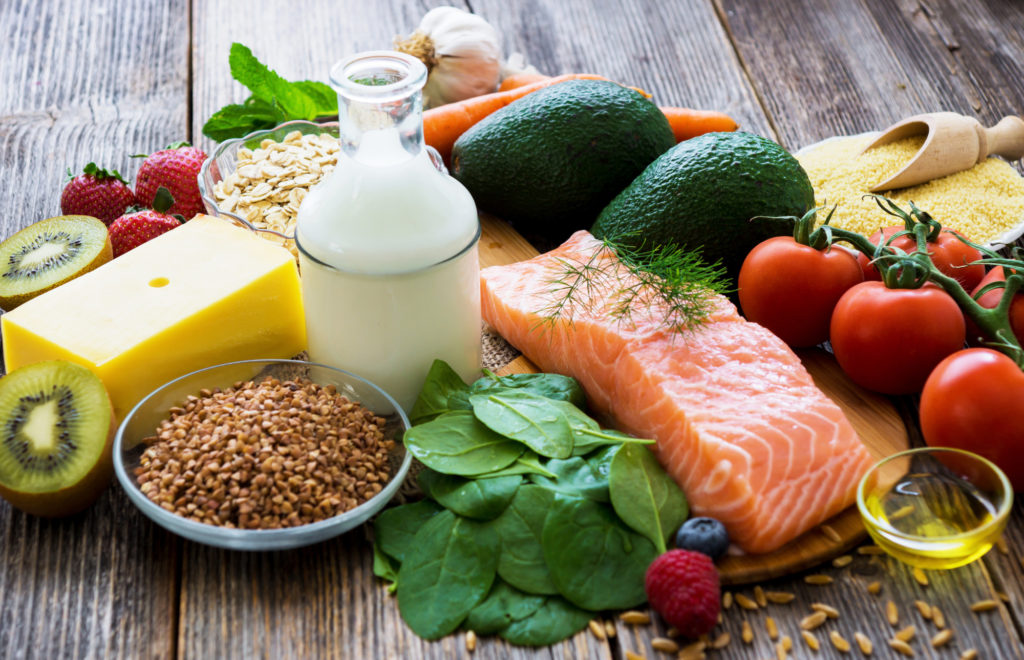
Healthy eating just got easier with these minimal steps and minimal ingredient recipes! We’ve got you covered from when you wake up to the right when you go to sleep. These recipes are great whether you’re making them the day of or preparing them for a week ahead! What’s even better, they fit multiple diets: gluten-free, Paleo, vegan, and more, and most are very customizable to fit your needs and taste preferences!
Breakfast:
Banana Berry Smoothie: pair with a slice of whole-grain toast for some extra fiber!
3-Ingredient Pineapple Mango Smoothie: very customizable with options to add in more protein or other nutrient-dense supplements. Perfect for busy mornings!
Easy and Protein Packed Oatmeal: another very customizable recipe that’s great even if you’re vegan!
Lunch:
Thai Coconut Curry Shrimp: this easy Thai coconut curry shrimp tastes fancy, but is incredibly easy and affordable. Great for meal prep!
Easy Tomato Soup: kids will go crazy for this- and adults too! Pair with a turkey wrap or small salad with roasted chicken or a plant-based protein for a more filling meal.
Chopped Greek Salad with Chicken: perfect for meal prep!
Thai Salmon: serve with a side of roasted veggies or a side salad with sweet potato or grain, and you’re set!
Dinner:
Three-Ingredient Chilli: perfect for multiple meals or a family!
Vegan Ratatouille (Easy): a great and tasty way to get kids to eat their veggies (thank you, Pixar, for the movie ha!) and very simple to prepare (you don’t need to make it fancy and spiraled like the movie!). Pair with protein for a more balanced meal!
Whole30 Cauliflower Soup: surprisingly protein dense and filling while also being light!
Gnocchi with Zucchini Ribbons: when you want some comfort food, but lightened up 🙂
Spaghetti Squash and Meatballs: a great spin on a classic for kids, and it’s easy!
Dessert:
Paleo Chocolate Covered Coconut Bites: easy, delicious, and low in sugar!
Paleo Dairy Free Fudge: perfect for when the chocolate craving strikes 🙂
Oatmeal Fruit Crumble: swap in whatever fruit is in the season to have this all year round!
Paleo Vegan Chocolate Mousse: this mousse is perfect for nut-free folks who still want to try a Paleo and/or vegan recipe!
Nutrition Boot Camp
Nutrition bootcamp is headed up by Catch A Lift resident nutrition expert Coach Nicole Elder. In this section you will find what Coach Nicole has dubbed her Nutrition Bootcamp. Find a sample meal plan created by Nicole, a breakdown of macro, and micronutrients and so much more. In this section you will also find nutrition contributions from nutritionist Don Wright and our friend and professional nutrition blogger Brittany Berlin. The Nutrition Boot Camp is a great place to check out for information curated in house by Catch A Lift’s Nutrition Team.
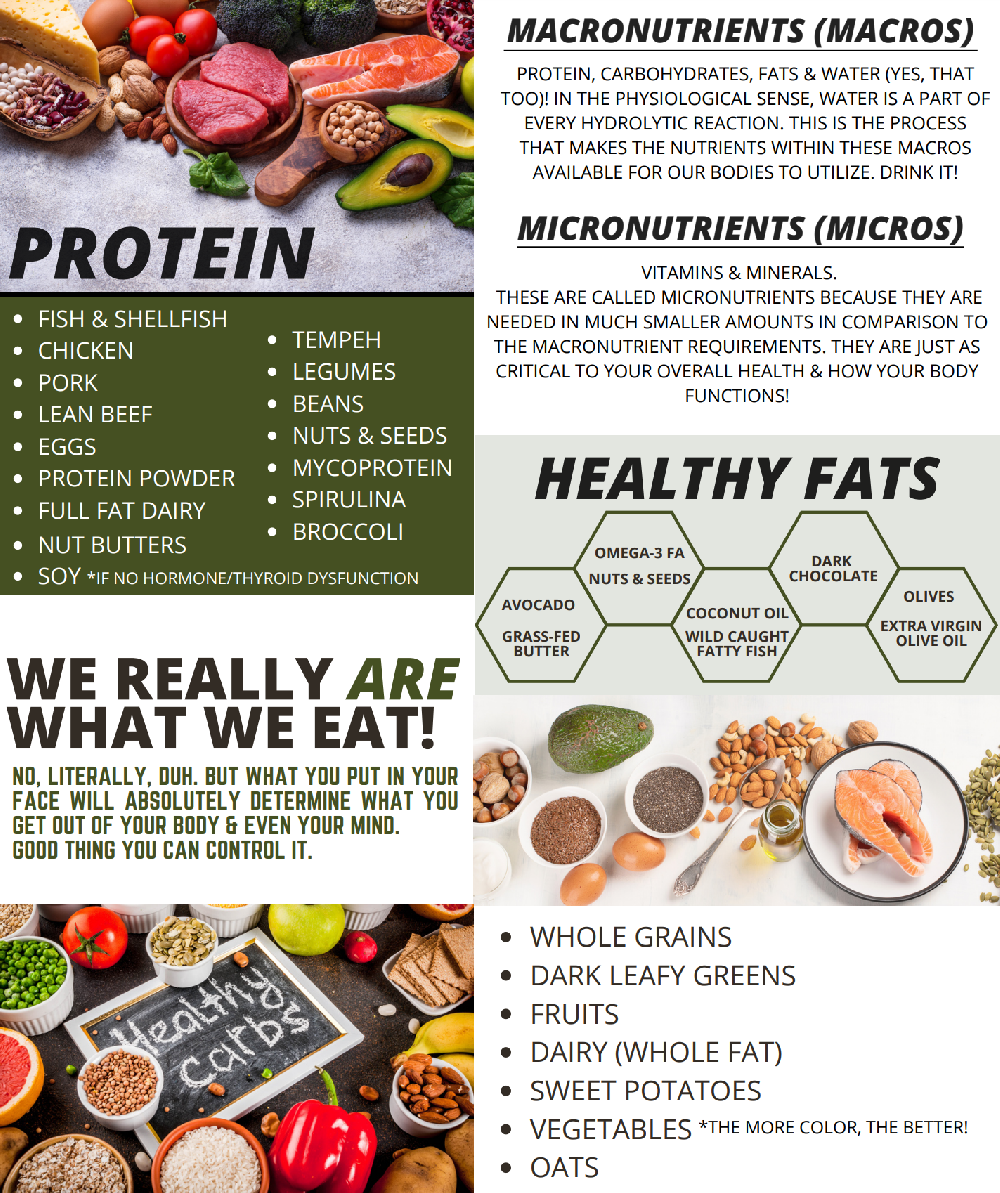
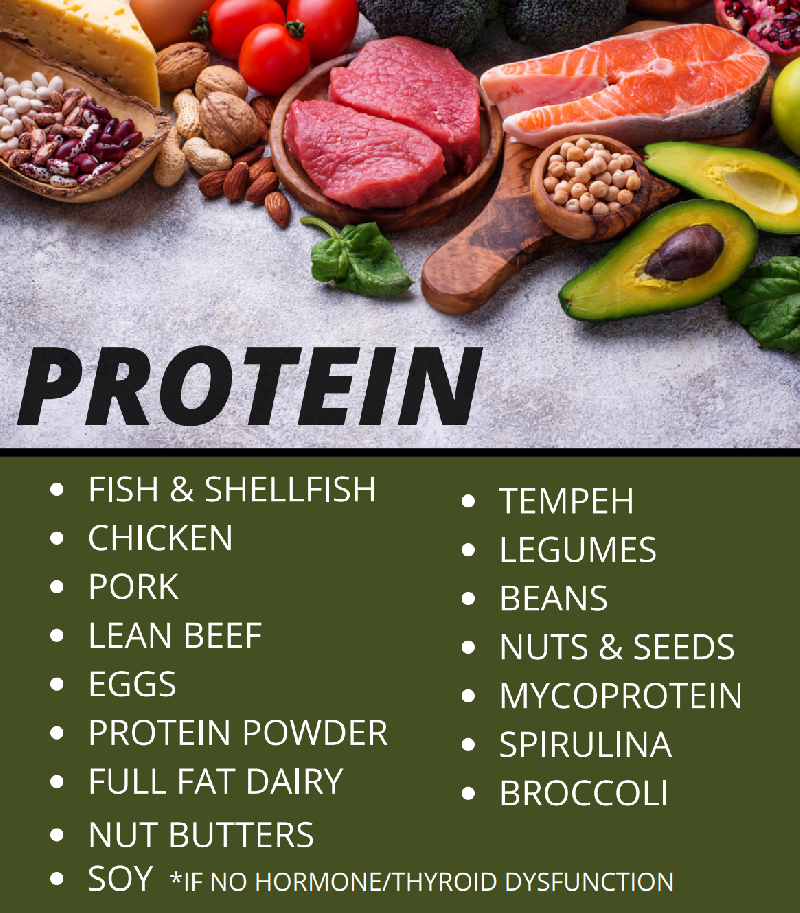
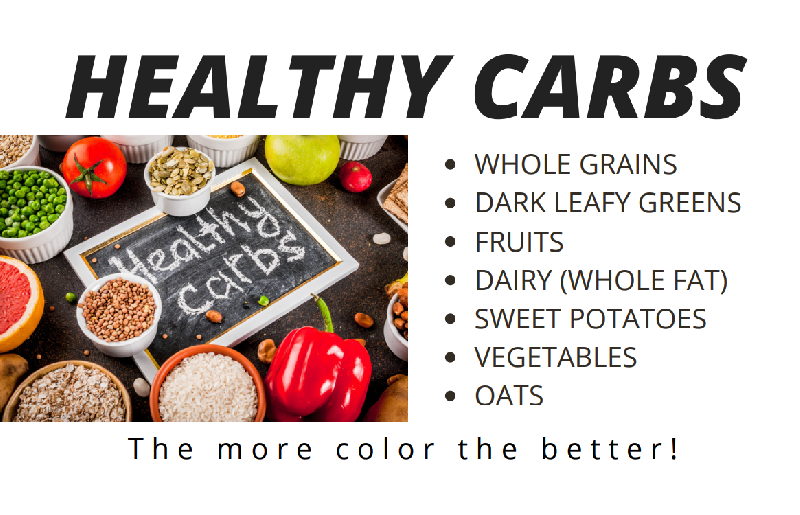
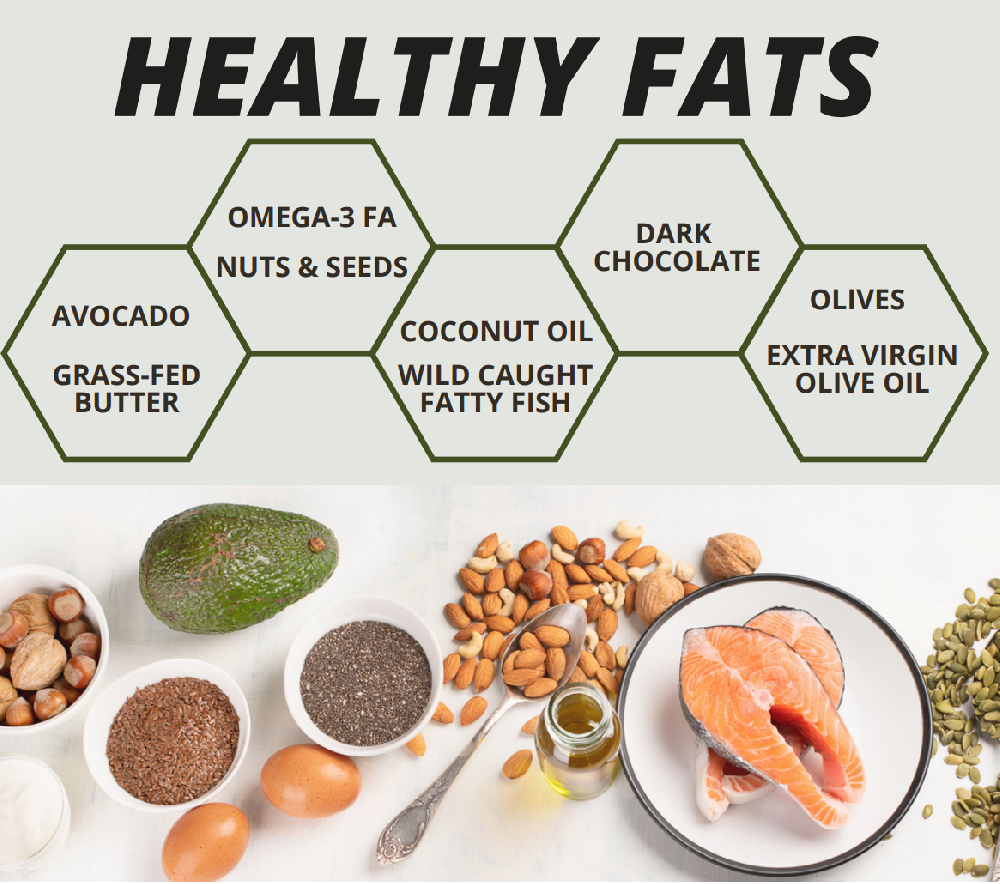
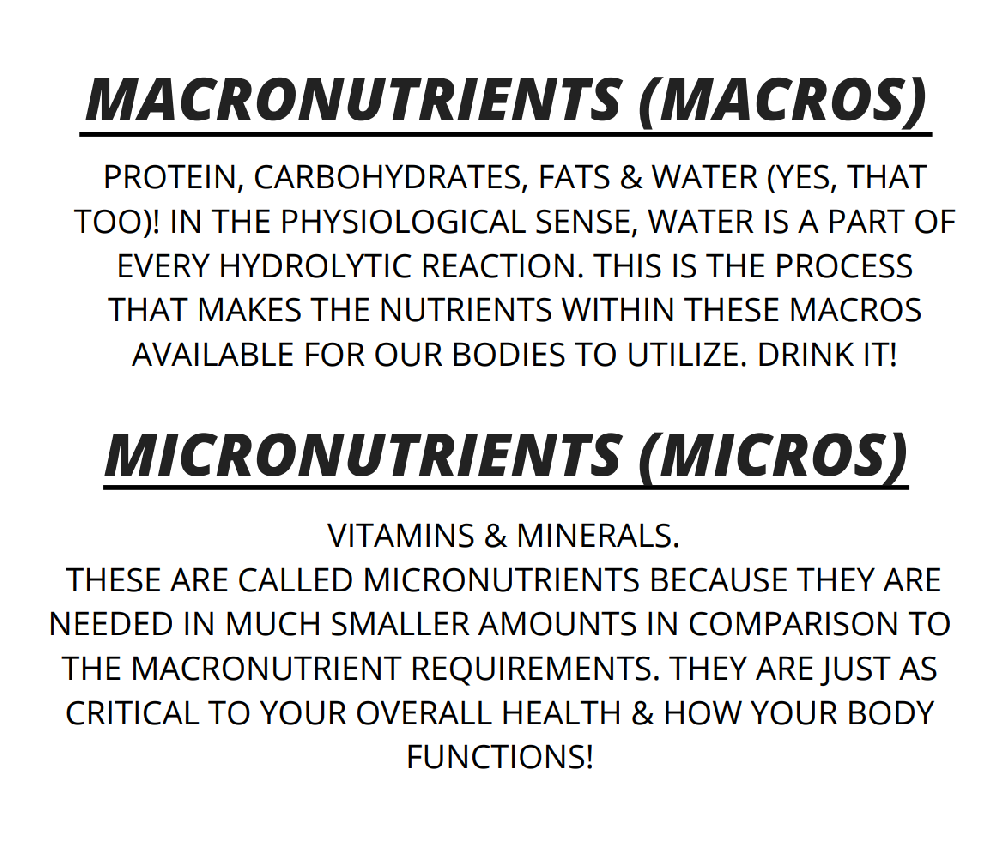
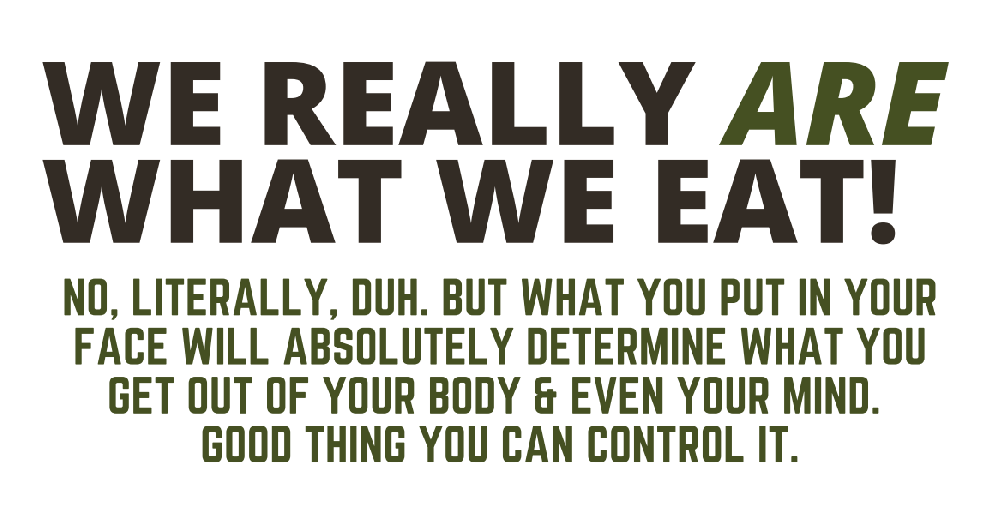
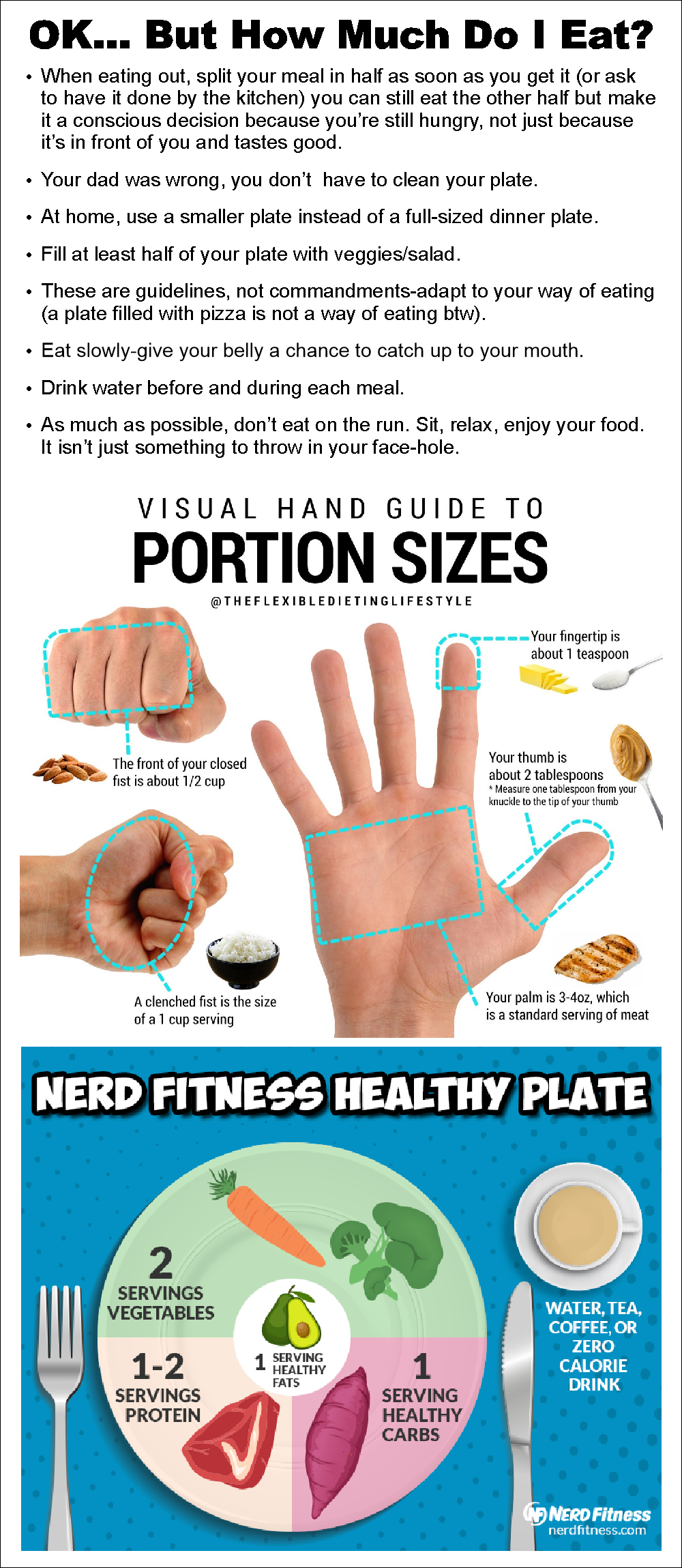

Running
Running and jogging are time-tested forms of invigorating aerobic exercise that offer many physical and mental benefits. From bolstering cardiovascular strength to enhancing metabolic conditioning, running provides a holistic workout experience that uplifts your entire well-being. Delve into the world of running, and experience the famed “runner’s high” euphoria as it infuses you with a sense of profound mental well-being. The beauty of running lies in its simplicity, as it requires no specialized equipment, with a good pair of shoes being the sole essential. This section explores the art of running, providing valuable tips and insights to optimize your performance and enjoyment. Unleash the power of aerobic exercise through running, and set your body and mind on an exhilarating journey of vitality and fulfillment.
Pre and Postnatal Fitness
Discover a wealth of healthy ways to support your physical fitness journey throughout the transformative phases of pregnancy. Embracing the pre and postnatal periods requires unique considerations as your body undergoes significant changes. This comprehensive section delves into tailored fitness routines and expert guidance to help you navigate this remarkable journey with confidence and care. From prenatal exercises that nurture both you and your baby to postnatal recovery practices, we provide a nurturing space to prioritize your well-being. Explore the empowering world of pre and postnatal fitness, and embrace the transformative power of motherhood with strength and grace.
tracking
Fitness
Fitness programs cover everything from strength and conditioning to weight loss to yoga and mobility. Some require gym access or specialized equipment, some need nothing except you. But all require a plan, a commitment and hard work. To start your fitness journey,
- SET GOALS – make an honest assessment of where you want to be.
- CHOOSE A PROGRAM – one that is designed to achieve your goals.
- START – every journey begins with a first step.
- STAY CONSISTENT – build habits to see your program all the way through.
Alternative Disciplines
Experience the thrill of breaking a sweat and achieving daily triumphs for your physical and mental well-being. Discover the diverse world of alternative fitness disciplines that go beyond the ordinary workout routines. Whether it’s the precision of golfing, the exhilaration of skydiving, the challenges of mountain climbing, the grace of martial arts, or any activity that gets you moving, this section is your gateway to the unconventional and exciting side of fitness. Here, we celebrate all forms of physical activity that might not fit neatly into our other sections but contribute immensely to your overall health. Embrace the adventure, step outside your comfort zone, and explore the limitless possibilities of alternative fitness!
Adaptive Fitness
All athletes must work to overcome obstacles to build strength and resiliency. Athletes with combat injuries may face more than most, but there’s always a way to get stronger and fitter. As you explore modification, adaptation and scaling options in this section, consider:
- SAFETY IS CRITICAL – push yourself but make smart choices to avoid further injury.
- UNDERSTAND THE “WHY” – every modification or adaptation should include a neural and muscular response stimulus similar to the unmodified movement – know how and why the modification retains the critical parts of the unmodified movement.
- EQUIPMENT MATTERS – a variety of tools and objects can be used to produce the stimulus sought – freely substitute equipment to find what works for you.
Seated
This comprehensive, adaptive fitness resource page is specifically designed for individuals with injuries or physical limitations that require them to engage in seated exercise routines. Physical fitness is a vital aspect of overall health and well-being, and our mission is to ensure that no one is excluded from reaping its benefits. Our adaptive fitness programs have been carefully crafted to cater to diverse needs and abilities, focusing on safe and effective seated workouts. These routines encompass various elements, including strength training, cardiovascular exercises, flexibility movements, and mindfulness practices, all tailored to accommodate seated positions. By embracing inclusivity, we empower individuals to maintain an active lifestyle, enhance their physical health, and enjoy the advantages of regular exercise. In this extensive collection of adaptive fitness resources, you will find a wealth of links to diverse programs and specialized guidance, enabling everyone to find a suitable fitness regimen. Join us on this journey of empowerment through seated and tailored fitness routines.
Visual impairment
Welcome to our adaptive fitness page tailored specifically for the visually impaired community. At the heart of our mission lies the belief that physical fitness is a fundamental right for all, regardless of any challenges faced. Here, we celebrate inclusivity by offering a comprehensive array of adapted fitness resources, specially designed to meet the unique needs and aspirations of individuals with visual impairments. Whether you’re looking to build strength, improve cardiovascular health, enhance flexibility, or simply maintain an active lifestyle, our carefully curated programs are crafted to empower and accommodate you every step of the way. Join us in embracing the journey of adaptive fitness, where barriers are shattered, and possibilities are boundless. Let us support you in achieving your fitness goals and embracing a life of wellness, strength, and vitality. Together, we’ll break new ground and create a community where fitness knows no limits.
Upper Extremity Functionality
Welcome to the world of adaptive fitness, specifically tailored to empower individuals with upper extremity challenges, including prosthetic arm users. At the core of our mission lies a dedication to unlocking your true potential, regardless of physical limitations. Here, we celebrate the resilience and tenacity of those who have embraced adaptive solutions to enhance their upper extremity functionality. Our comprehensive programs are thoughtfully designed to cater to your unique needs, whether you’re seeking to build strength, improve coordination, or regain full range of motion. From tailored strength training to specialized exercises, our adaptive fitness resources aim to elevate your capabilities and boost your confidence in every aspect of life. Join our community of empowered individuals, and together, let’s embark on a transformative journey of adaptability, growth, and limitless possibilities.
Lower Extremity Functionality
Welcome to the realm of lower extremity adaptive fitness, where we embrace the power of adaptability to enhance mobility and unleash your true potential. Our mission is to empower individuals with lower extremity challenges, providing a nurturing space where physical limitations are transcended. Through innovative exercises and tailored routines, we aim to strengthen muscles, improve balance, and increase flexibility, allowing you to move with confidence and grace. Whether you’re navigating life with a prosthetic limb, managing a mobility-related condition, or seeking to regain strength after an injury, our curated resources cater to your unique journey. Embrace the boundless possibilities of lower extremity adaptive fitness, and let us support you in achieving greater mobility, independence, and overall well-being. Together, we’ll break barriers and pave the way to a life of renewed vitality and freedom.
Traumatic Brain Injury (TBI)
Welcome to our adaptive fitness platform dedicated to supporting individuals on their journey to TBI recovery. We understand the unique challenges and complexities that arise after experiencing a traumatic brain injury, and our mission is to provide a safe and nurturing environment for your fitness aspirations. Through carefully designed adaptive programs, we strive to promote cognitive function, enhance physical strength, and boost overall well-being. Our expertly curated resources encompass a wide range of exercises and activities tailored to accommodate diverse needs and abilities. Whether you’re seeking to improve balance, regain motor skills, or enhance cognitive function, we’re here to support you every step of the way. Embrace the potential of adaptive fitness, and let us be a guiding light on your path to progress and renewed vitality. Together, we’ll embark on a transformative resilience, growth, and empowerment journey.
Joe Diacheysn

More CAL Coaches
Hammers, Clubs & Maces
Welcome to our dynamic hammers, clubs, and maces fitness section, where we harness the strength of real-life movements to sculpt and fortify your entire body. These ancient training tools offer a unique and effective approach to building strength, endurance, and functional fitness. By engaging in fluid and dynamic movements, you activate multiple muscle groups simultaneously, enhancing your overall physical prowess. Whether you’re a seasoned fitness enthusiast or a newcomer seeking innovative training methods, our curated selection of exercises and expert guidance will empower you on your path to peak performance. Embrace the power of hammers, clubs, and maces, and experience the transformative benefits of training like a true warrior, cultivating strength that translates seamlessly into your everyday life. Let’s embark on this journey together, unleashing the full potential of your body and mind through these extraordinary fitness tools.
Free Apps
Coming Soon
At Home Circuit Workout By Coach Will Irving
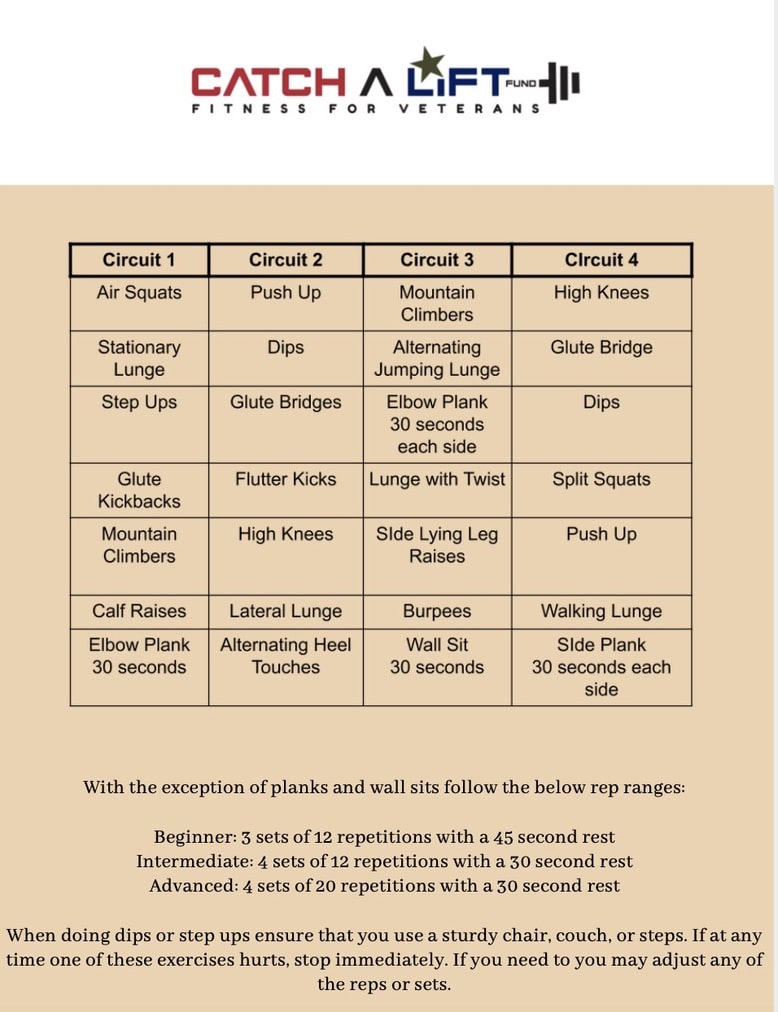
By Will Irving, Catch A Lift Fund
HIIT High Intensity Impact Training
High-Intensity Interval Training (HIIT) is easily one of the most efficient methods of getting stronger while shredding fat. HIIT workouts generally involve short bursts of various exercises performed at high intensity while minimizing rest time in between movements. HIIT workouts speed up the body’s metabolism which aids in fat loss. Your body will actually continue to burn calories even after you have finished your workout; this is what’s known as the “afterburn effect.” The body’s demand for oxygen post-workout in order to aid in the recovery process is what leads to this phenomenon.
Although you could see some minimal muscle gains as the result of HIIT workouts, you will most definitely see an improved physique and strength gains!
Bodyweight/No Equipment
Bodyweight workouts are great for many reasons. They are free, require no equipment, and offer awesome fitness gains in short durations. Bodyweight workouts combine cardio and strength training and regardless of your fitness level, they can be very challenging.
Check out some of our favorite bodyweight workouts below.
Fat Loss
There are various methods to lose fat while working out, and almost all of them will work if paired with a well-thought-out cutting diet; however, some work better than others.
Generally, you can be guaranteed to lose fat when you engage in High-Intensity Interval Training (HIIT) and bodyweight workouts. Both are highly efficient methods of combining cardio with strength training and are great at ramping up the body’s metabolism.
Another proven method is to engage in strength training and lower-impact cardio 3-4/week (swimming, rowing, jump rope). Although you cannot technically build muscle while cutting, you can continue to get lean and stronger!
Community
First, Foremost and Always – CAL is a Family
As a member of the CAL family, we encourage you to explore all that our organization, veterans and supporters have to offer. From our coaches, to our staff, to your fellow athletes and veterans, support is available around the clock. Our mission is to see you thrive through fitness and wellness wherever and whenever you find it. We serve you, our veteran community, and we hope that through sharing and participating in our events, fitness and fundraising challenges, and social media and awareness campaigns, you find the resources you need while helping us continue to grow, extending the CAL family until every unmet need is satisfied.
Get Ready, Get Rest and Keep Moving
Preparing for and recovering from a workout is as important as the workout itself. If you want to maximize the benefits from your fitness program and minimize risks of injury, warming up and breathing properly while moving fluidly through your fullest range of motion is essential. Getting plenty of rest and understanding your body’s need for recovery are also critical to long-term sustained fitness and health. As you demand more and more of your body, you’ll need to remember to:
- WARM UP PROPERLY – get the heart beating, get the blood flowing and wake up those muscles and joints before doing the harder work.
- BREATHE AND BRACE – different movements require different breathing patterns, but your core should always be strong and braced to minimize injury and effectively transfer power throughout the body.
- ROLL AND RECOVER – proper foam rolling and use of other soft tissue implements following a workout speeds the recovery process and feels so good.
- SLEEP – the body rebuilds and recovers when you sleep. Dark rooms with no screens help most to sleep more soundly for longer.
- ADDRESS INJURIES – everyone gets hurt, and appropriate medical attention is critical, but athletes can train around most injuries with proper guidance.
Home Equipment 101
Tracking
The only way to know whether a fitness or nutrition plan is helping you reach your goals is by tracking what you do and the results you get. It’s tempting to assume everything is working because it feels like it is, but the actual numbers may tell a different story. Fitness trackers, food diaries, and photos present concrete evidence of progress and can help you understand where changes should be made. Measuring your progress can include:
- Fitness Tracking Apps: There are plenty of easy to use apps on every platform to help log and track workouts, including MyFitnessPal (free) Most include nutrition tracking as well.
- Pen and Paper: Lots of athletes prefer the tried and true notebook when it comes to tracking workouts and progress. Throw one in your gym bag just in case.
- Photos: It’s hard to argue with a picture, and each progress photo is worth a thousand words.
- The Scale: A scale can provide useful feedback, but keep in mind that muscle is far denser than fat so you may weigh more as you build a leaner, stronger body. Also, weight fluctuates daily and even throughout the day – rely on a scale to show longer term trends, not day-to-day numbers.
CAL STRONG Challenges
Are you ready for a CHALLENGE?
CAL STRONG Challenges is part of the community where all CAL veteran athletes can participate in engaging, purpose-driven challenges. Led by Coach Austin Owens, each challenge is designed to support our four core pillars: Nutrition, Fitness, Community, and Emotional Wellness. Join us as we build camaraderie and strength together across all aspects of well-being in a supportive, motivating environment.
Where do I find information about the CAL Challenge?
- Weekly Connection Veteran Newsletter- Every Monday you should receive a CAL newsletter that will show each challenge and when they are happening. If you are not receiving the Weekly Connection Newsletter, contact mleyva@catchaliftfund.com to be added.
- VetConnect- Coach Owens updates the group page with each new challenge, where you can also see other members sharing the personal progress they’ve made throughout the challenge.
Is this mandatory to be in the program?
No, not at all. This opportunity is open to all members of the CAL Community who wish to participate.
We encourage you to test yourself and show how far you have come!
Members Only Social Media Groups
Veteran Members Only Groups
CAL Landing Zone Closed Facebook Group
CAL Women’s Fitness Initiative Facebook Group
Stretching
For all athletes alike, stretching is an essential part of any workout. Stretching allows your body to properly warm up and relax your body in preparation for activity or recovery. It focuses on flexibility by lengthening muscle strands & allows healthy range of motion in your joints. Other benefits include stress relief, increased circulation, better posture and increased athletic performance. With out stretching, your muscles become shortened and tight; leaving room for injury to occur during activity. To keep your muscles healthy and dependable, try these helpful link and get to stretching!
Romwod.com is a fantastic site for recovery that has database of great content and new recovery workouts posted daily. ROMWOD stands for Range of Motion Workout of the Day. Romwod offers 6 months free to all veterans with a valid ID.
Sleep
Of all the methods of recovery to help mitigate cumulative fatigue, sleep trumps them all. Lack of sleep will inevitably lead to a decrease in performance and an increase in cortisol, and a decrease in testosterone. Sub-optimal sleep also leads to fat gain and weight loss (in the form of muscle)! Most athletes generally need 8 hours of quality sleep/night; however, everyone is different, and some people do just fine with 6, while others need 10. You should sleep the appropriate amount to where you feel rested and able to train again; you will not always feel pumped to go to the gym.
Injuries
No matter how much preparation, foam rolling, and proper movement patterns you apply, if you are consistently training hard, your chances of getting injured at some point during your fitness career are high. In a 2017 study by Stronger by Science, roughly ⅔ of all men polled had suffered at least one acute injury in their lifting career, while ½ of all women suffered an acute injury during theirs. If you do get injured make sure and seek the appropriate medical attention, adjust your goals, continue to train around your injury, and seek the emotional support of members of your gym and the CAL community.
Breathing/Bracing
In the realm of fitness, understanding how to breathe and brace correctly holds paramount importance. Mastering these techniques is a vital skill that enables you to minimize energy leaks during loaded movements, safeguard your back from potential injuries, and facilitate efficient energy transfer essential for safe and effective weightlifting. In our dedicated breathing and bracing fitness section, we delve into the intricacies of these practices, providing comprehensive guidance and expert tips. Whether you’re a seasoned athlete seeking optimization or a beginner striving for foundational knowledge, our resources empower you to harness the power of breath and elevate your fitness journey to new heights. Embrace the art of proper breathing and bracing, and unlock the full potential of your physical prowess.
In Between
In the realm of fitness, the time between workout sessions offers a golden opportunity to invest in your overall well-being. Utilizing this in-between period wisely can significantly enhance your physical and mental recovery. Soft tissue work, such as foam rolling and using a lacrosse ball, plays a crucial role in nurturing your body’s relaxation and recovery. By engaging these practices, you activate your parasympathetic nervous system, promoting a sense of calm and aiding in unwinding after a long day. Integrating soft tissue work into your bedtime routine for 15 to 20 minutes can reduce tension, improve flexibility, and contribute to a more restful night’s sleep. Embrace the potential of your in-between moments, prioritize your rest and recovery, and embark on a journey of holistic well-being that nurtures both body and mind.
Warmup
Preparing for and recovering from a workout is as important as the workout itself. If you want to maximize the benefits of your fitness program and minimize risks of injury, warming up and breathing properly while moving fluidly through your fullest range of motion is essential. Getting plenty of rest and understanding your body’s need for recovery are also critical to long-term sustained fitness and health. As you demand more and more of your body, you’ll need to remember to:
- WARM UP PROPERLY – get the heart beating, get the blood flowing, and wake up those muscles and joints before doing the harder work.
- BREATHE AND BRACE – different movements require different breathing patterns, but your core should always be strong and braced to minimize injury and effectively transfer power throughout the body.
- ROLL AND RECOVER – proper foam rolling and the use of other soft tissue implements following a workout speed up the recovery process and feels so good.
- SLEEP – the body rebuilds and recovers when you sleep. Dark rooms with no screens help most to sleep more soundly for longer.
- ADDRESS INJURIES – everyone gets hurt, and appropriate medical attention is critical, but athletes can train around most injuries with proper guidance.
Supplements
Nutritional supplements are valuable allies on your path to optimal well-being, providing targeted support to fill potential nutrient gaps and amplify your health efforts. While a balanced diet forms the bedrock of good nutrition, supplements can play a pivotal role in addressing specific needs or challenges. From essential vitamins and minerals to specialized compounds like probiotics and omega-3 fatty acids, the supplements section empowers you with knowledge to make informed choices. However, it’s crucial to approach supplements thoughtfully, understanding their benefits, proper usage, and potential interactions. Always consult with a healthcare professional before incorporating new supplements, ensuring they align with your individual health profile. Our insights will help you navigate the supplement landscape, enabling you to harness their potential effectively and tailor them to complement your unique health goals. Elevate your wellness journey with the right supplements as powerful companions, supporting you in achieving a vibrant and thriving life.
Cutting
Cutting diets are a strategic and focused approach to sculpting your physique by reducing body fat while preserving lean muscle mass. This intricate process requires precision and mindful eating, as you manipulate your caloric intake and nutrient distribution to achieve your goals. The cutting section offers you a roadmap to navigate this journey successfully. Discover balanced meal plans rich in lean proteins, fiber-packed vegetables, and nutrient-dense foods that optimize satiety and energy levels. Learn how to strategically time your meals, incorporate effective supplements, and stay adequately hydrated to support your body’s metabolic needs. It’s important to remember that cutting diets should be undertaken with a deep understanding of your individual needs and in consultation with a healthcare provider or registered dietitian. With dedication, knowledge, and a personalized approach, you can unlock the potential of cutting diets to reveal the sculpted physique you’ve been striving for.
Dining Out/Alcohol
Dining out and enjoying the occasional alcoholic beverage can be delightful experiences, but maintaining a healthy balance is key. Our guide equips you with smart strategies for making mindful choices while dining out. Discover how to decode menus, prioritize nutrient-rich options, and practice portion control without sacrificing enjoyment. When it comes to alcohol, moderation is paramount. Learn about the impact of alcohol on your body, and explore tips for minimizing its effects on your health goals. Remember, a well-informed approach to dining out and alcohol empowers you to savor these moments guilt-free while staying aligned with your overall wellness journey.
Meal Prepping
DISCIPLINE STARTS IN THE KITCHEN
Meal planning and prepping is the practice of mass preparing meals that fit your macronutrients so that you are set up for success in staying with your diet. Here are some tips that will help you meal prep like a pro.
Batch cook – prepare multiple batches of a recipe to be portioned out and frozen for meals for the following week.
Make a plan – choose meals to prep, write your menu, and schedule your prep.
Shop – take stock of what you already have and make a grocery list of everything you need. Costco is a fantastic place to bulk shop for meats and produce.
Prep and store – begin with foods that require the longest cooking times. Preheat the oven and prepare ingredients that will be cooked first. Make sure that you have enough Tupperware containers to store your batch cooked foods in and enough containers for your individual meals.
Be mindful of storage life -if stored in airtight containers, cut vegetables like onions and peppers will keep for two to three days in the refrigerator.
Freeze properly for best quality – Foods like soups, chilis, casseroles, and cooked grains are quickly frozen for future meals.
Enjoy your food – as part of your meal prep, portion your proteins, fats, and carbs according to your meal plan and store them in similar foods. Assume that your meal is prepped on a Sunday, you should have an entire refrigerator full of batch-cooked foods that are portioned out. Make sure and prepare 4-5 meals, or whatever your meal plan prescribes.


Bulk (Muscle Gain)
Bulking diets are the cornerstone of muscle-building endeavors, strategically designed to provide your body with the fuel it needs to pack on lean mass. Our guide to bulking diets offers you a roadmap to maximize your muscle-building journey. Discover how to promote muscle growth, while also focusing on nutrient-dense foods that support overall health. Learn the art of structured eating, timing your meals to fuel workouts and optimize recovery. However, it’s essential to approach bulking diets with a mindful approach, ensuring that the calories consumed contribute to muscle gain rather than excessive fat. Consultation with a healthcare provider or registered dietitian is advised to tailor your bulking diet to your individual needs. With dedication, knowledge, and a well-crafted bulking plan, you can empower yourself to reach new levels of strength and achieve the physique you desire.
Nutrition for Weight Loss
If you are just beginning your journey to lose weight, here are some tips to help you on your way.
- Plan to eat three small meals and two nutritious snacks each day- Skipping meals can lead to unhealthy snack choices or overeating at mealtime. Consuming smaller portions of food five times per day fuels the body so it can power through everything on your to-do list without leaving you starved and irritable.
- Drink a full glass of water before each meal and snack- This keeps you hydrated but it also helps fill the stomach so you’re less likely to overeat. Drink plain water or try a weight loss-friendly water recipe like Lemon Ginger Detox Drink or Ginger, Lime, and Mint Flavored Sparkling Water.
- Eat veggies first- Satisfy the appetite without overeating by consuming vegetables before carbs or proteins. This healthy habit ensures you benefit from veggies’ low-calorie, nutrient-packed power, and it helps fill the stomach so you’re less likely to overindulge in other foods, particularly carbs. Munch on sliced veggies as you prep your meal or add vegetable-dense recipes to the menu.
Nutrition
PROPER NUTRITION IS CRITCAL TO ANY FITNESS PLAN
No matter how much time you spend in the gym, on the trail or in the yoga studio, you can’t outwork a poor diet. What you eat should be designed to make you powerful, lean, healthy and resilient, giving your body and mind the best chance to thrive and grow stronger every day. As you explore the nutrition options outlined here, keep in mind:
- CALORIES MATTER – to lose fat, you need a caloric deficit; to gain muscle, you need a caloric surplus.
- FOOD CHOICES MATTER – where possible, choose whole foods with no or minimal processing. Whole foods include fresh vegetables and fruits, and fresh beef, pork, poultry and fish.
- KNOW YOUR MACROS – learn the protein, fat and carbohydrate content of food, and understand how much of each you need.
- GET YOUR MICROS – micronutrients (vitamins and minerals) are essential and eating a variety of unprocessed whole foods is the best way to get what your body needs.
- CONSIDER WHEN TO EAT – your goals may influence meal frequency and timing.
- AVOID FAD DIETS – popular programs like Paleo, Keto, and Zone diets work well for some, but beware claims of rapid weight loss or other dramatic changes from a diet – if it sounds too good to be true, it almost certainly is.
- CONSIDER SUPPLEMENTATION – unprocessed whole foods are the best way to get everything your body needs, but some supplements can be a useful addition.
- HYDRATION MATTERS – your body needs plenty of water but avoid sweet drinks like soda and juice (even diet or low-calorie drinks).


Recipes
Elevate your kitchen skills and embark on a journey of taste and wellness with our collection of nourishing recipes. Our carefully curated selection spans a diverse range of foods, catering to various dietary preferences and goals. From vibrant salads bursting with colorful nutrients to hearty and wholesome main courses, our recipes are designed to harmonize taste and nutrition. Each recipe is a testament to the idea that healthy eating can be a joyful and satisfying experience. Whether you’re seeking quick and easy weekday meals, delightful treats to indulge in guilt-free, or options for special dietary needs, our recipe collection has something for everyone. Unleash your inner chef, and let these recipes inspire you to create wholesome masterpieces in your kitchen.
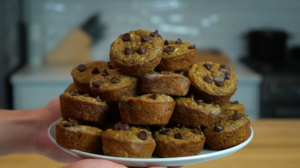
One of the toughest parts of sticking to a diet is eating the same foods, day in and day out. It is our hope that you will find enough recipes here to keep you excited about dieting.
Strongman
In the 19th century, the term strongman referred to an exhibitor of strength or similar circus performers who performed feats of strength. In modern times strongman competitions have grown in popularity and can be found in every state and across the world.
These competitions usually have 5-7 events in which the competitors have to move the highest weights possible, with the winner having the highest tally across all events.
Common events are Atlas Stones, log press, yoke carry, farmers carry, keg toss, and sandbag load.
Training for strongmen involves building overall strength in the gym and training with competition implements. In the gym, you must train the entire body for strength. Variations of the squat, deadlift, and overhead press are a must. Training explosive power, developed by weightlifting-style lifts and cardiovascular conditioning, is also important. Grip strength is a must in the sport.
Olympic Weightlifting
Olympic weightlifting or weightlifting, is a sport where the athlete attempts a maximum-weight single lift of a barbell loaded with weight plates. The two competition lifts for weightlifting are the snatch and the clean and jerk. Each weightlifter receives three attempts in each lift, and the combined total of the highest two successful lifts determines the overall result within a bodyweight category. Bodyweight categories are different for male and female competitors.
The lifts performed in the sport of weightlifting, and their component lifts, such as squats, deadlifts, and cleans, are commonly used by athletes in other sports to train for both explosive and functional strength.
Band Training
Versatile and effective resistance bands offer a transformative fitness experience suitable for individuals of all fitness levels. Whether you’re a fitness enthusiast or seeking rehabilitation, these stretchable bands cater to your unique needs, delivering tailored workouts and therapeutic benefits.
At the heart of bands lies an array of possibilities – a low-cost and space-saving solution to achieving your desired fitness level. From muscle toning to strength building, flexibility improvement to injury recovery, bands empower you with an expansive range of exercises that can be adapted to any environment.
No matter where you stand in your fitness journey, there’s a band that’s right for you. Embrace the power of resistance, and let’s embark on a fitness adventure that unleashes your full potential. With bands in hand, you’ll discover the joy of transforming your body and attaining your goals with ease and confidence.
Core Training
Here we focus on strengthening and conditioning the vital core muscles that envelop the center of your body. This essential group includes the abdomen, hips, pelvis, and lower back, all of which play a crucial role in safeguarding the spine and providing stability and balance during movement.
Our core training programs are thoughtfully designed to nurture and elevate this central powerhouse, setting the foundation for improved athletic performance and everyday functionality. By engaging in various exercises targeting these core muscles, you’ll experience enhanced core strength, improved posture, and a reduced risk of injuries.
Let us guide you through an enriching journey of core training, unlocking the potential within you and fostering a strong and stable center. Whether you’re an athlete aiming to boost performance or simply seeking to enhance your overall well-being, our expertly curated core training resources are here to empower and support you every step of the way. Embrace the strength that lies at your core, and let’s embark on a transformative path of physical excellence and vitality.
Total Body Band Workout
Circuit Workout
Level 1: 1 circuit resting 30 seconds between exercises. Level 2: 2 circuits. 30 seconds rest between exercises and 60 seconds between circuits. Level 3: 3 circuits. 30 seconds rest between exercises and 60 seconds between circuits. Advanced Level 4: 4 Circuits 30 seconds rest between exercises and 30 seconds between circuits.
Always make sure your body is warm-up before starting an exercise program. Do 3 to 5 minutes of light cardio to raise your heart rate slightly followed by a few dynamic exercises, such as leg swings, arm circles, and air squats.
Band Pull-Aparts
1. Band Pull-Aparts 15-20 reps (grab band with both hands and pull across chest. Keep shoulders pulled back in place as if squeezing your shoulder blades together. Don’t let shoulders rounded forward.)
Band Squat-Push
2. Band Squat-Push Press 12-15 reps (stand with band under feet shoulder width apart. Place band in palm of hand. Squat down with good form, then explode back up, if shoulder mobility allows, press band overhead with both hands, then lower hands back to shoulder height and repeat squat-push press.
Chest Press
3. Chest Press 12-15 reps (Hold band in each hand with band looped around back. While standing with core braced tight and shoulders blades locked into place, push band away from body with both hands as if doing a push-up. Squeeze pecs together as you push away from body. Return to starting position bringing elbows back to 90 degrees. If you have a solid brace, such as post or squat rack wrap band around this. You can create greater tension this way. Squeeze glutes together (butt cheeks) for even more stabilization.
Standing Bicep Curls
4. Standing Bicep Curls 12-15 reps (Step into band with both feet, grab band with both hands and proceed to bicep curl. Keep shoulders and back locked into place, core strong, and don’t lock out knees tight. Squeeze glutes for further engagement and to protect lower back.
Overhead Tricep Extension
5. Overhead Tricep Extensions 12-15 reps (Use both feet to secure band in place. Feet shoulder width apart. Keep core engaged, Press band overhead with both hands, making sure shoulders are rolled back and locked in place, this is the starting position. Proceed to lower band band behind head, while bending at elbows.Raise back up, squeezing triceps to top position. That is one rep. Note: You can do this move from a seated position.
Butt Blaster
6. Butt Blaster 12-15 reps per leg (Get on your hands and knees and wrap a resistance band around the right foot. Hold the band in each hand pressed against floor and begin the move with the right knee bent and flex the foot while extending the right leg straight back, squeezing the glutes. Sort of like a donkey kick. Make sure you keep your foot flexed to avoid the band snapping back.
Plank
7. Plank- Hold for 30 sec if you can, up to 60 sec. (Wrap band around lower back, it is very important you position the band in correct position. With band in both hands lower down with hands directly under shoulders. Walk feet back and push body up into plank. You will know when you are in the correct position by your nose being slightly in front of hands. Now push your back into band, making sure you are bracing core, squeezing glutes. Now hold. Do not let your back sag, if it does, your plank is done.
CrossFit
CrossFit founder and CEO Greg Glassman states that CrossFit is a “constantly varied, high-intensity functional movement.” CrossFit combines interval training, gymnastics, and Olympic weightlifting into a functional program that can be scaled up or down for anyone, regardless of age or fitness level.
The CrossFit community is wonderful. With over 15,000 affiliates worldwide, finding a place to train and an encouraging community to join you in your journey is easy. For general physical preparedness (GPP), challenging workouts, a fantastic support system, and a balanced lifestyle of diet and exercise, CrossFit would be my go-to.
TRX/Suspension Training
Initially created by Navy Seals looking for a way to work out overseas, suspension training or TRX uses a single anchor point (a door, wall, ceiling, or specially designed mount), and your body weight to perform a variety of exercises to work your entire body in brand new ways.
Suspension training is portable – as long as you have a place to hang it, you can train anywhere.
There is almost an unlimited combination of exercises to keep your workouts fresh and challenging.
Since suspension training uses a single anchor point for mounting, any exercise you do will force you to resist rotation, engaging your core.
If you are looking for a fun, portable fitness system with a wide variety of exercises, then suspension training – TRX- is for you.
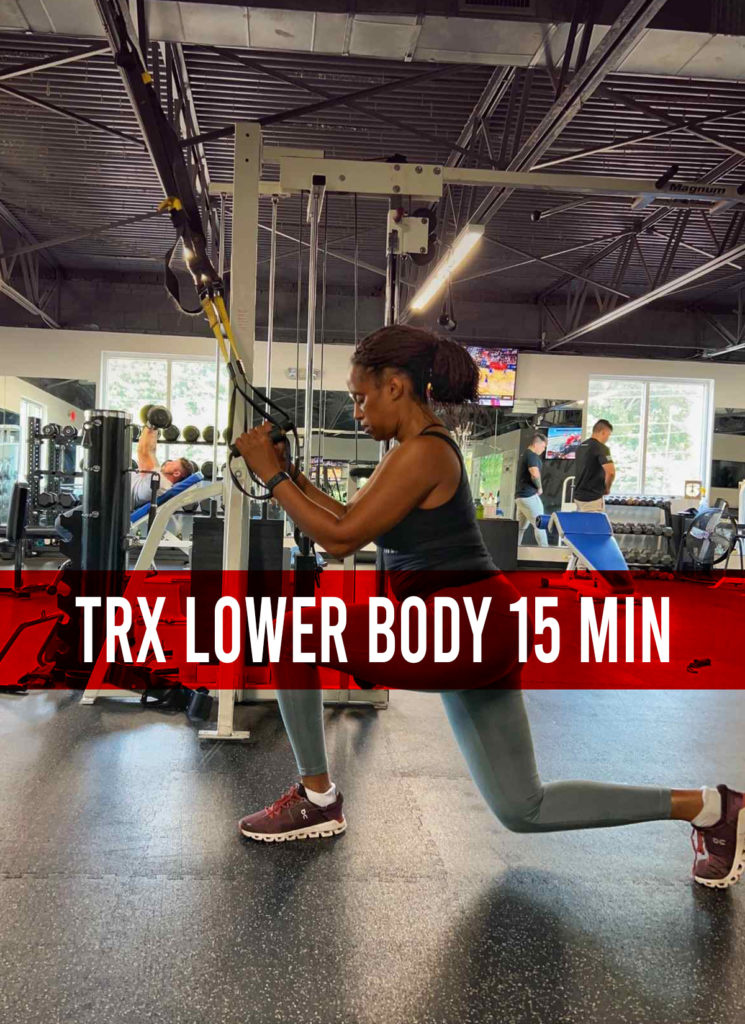


More Links, Articles & Videos
Kettlebells
Kettlebell (KB) training is a low-cost, highly-efficient, space-saving, fat-burning way to train. Besides bodyweight training, KB training has got to be one of the best, most affordable options for starting training. One could begin KB training for a one-time investment under $50.
With such little equipment, training doesn’t require a large area. KB training is fantastic for increasing grip strength, shredding fat, improving body composition, and increasing overall strength through functional compound movements like the Russian or American KB swing or Turkish getup!
Powerlifting
Powerlifting is a sport comprised of three lifts: the Squat, Bench Press, and Deadlift. Powerlifting competitions may be comprised of one, two, or all three of the lifting disciplines. Athletes are categorized by sex, age, and body weight. Each competitor is allowed three attempts at each lift, with the best lift in each discipline added to their total. The lifter with the highest total is the winner. In cases where two or more lifters achieve the same total, the person with the lightest body weight wins.
Most powerlifting programs are comprised of 3 distinct phases; hypertrophy, strength, and peaking. The hypertrophy phase is designed to add muscle using higher volume reps and sets. The strength phase uses your newly created muscle to get stronger, typically lowering the volume to sets of 3-6 reps. Finally, the peaking block is designed to reach your peak strength for competition with sets in the 1-3 rep range for two weeks to 2 months. The hypertrophy and strength phases or blocks of a mesocycle are generally 4-8 weeks long, with a de-load every 3-7 weeks to allow the body to recover.
If you love lifting big weights and pushing yourself to your limits, try powerlifting – you’ll either love it or hate it.

Muscle Building
The technical term for muscle building or muscle growth is hypertrophy. Hypertrophy-Specific Training (HST) is a type of training designed to increase the cross-sectional area of the muscles (make you bigger). Even though the purpose of most HST programs is not strength, you can be sure there will be some strength gains that come along with increasing muscle size.
Most HST programs run 8-9 weeks. They are comprised of training each muscle group 3 times/week, increasing the weight each workout (2.5, 5, or 10 LBS), decreasing the reps every two weeks, and a planned deload designed to allow the muscles to recover and get ready to adapt to new stimulus again. No matter what kind of athlete you are, if your goal is to get bigger and stronger, or to play with your body composition, running an HST cycle would be great!
Check out some of the HST programs we like below.


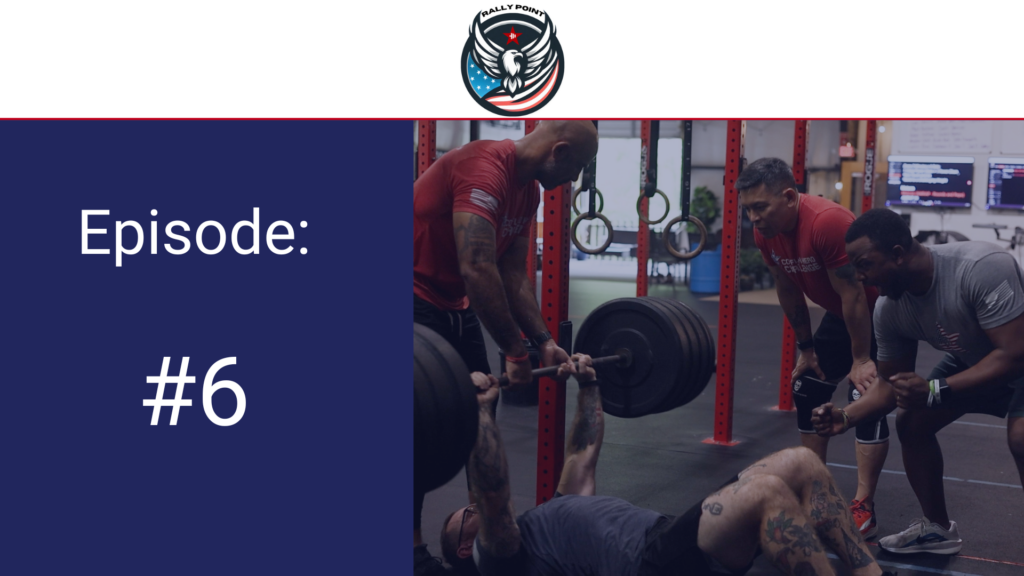


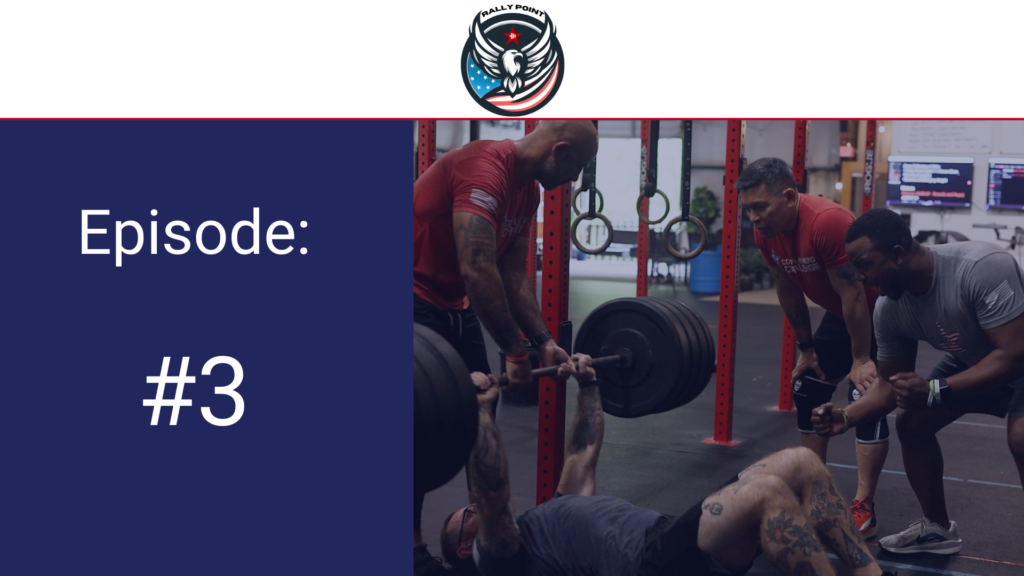
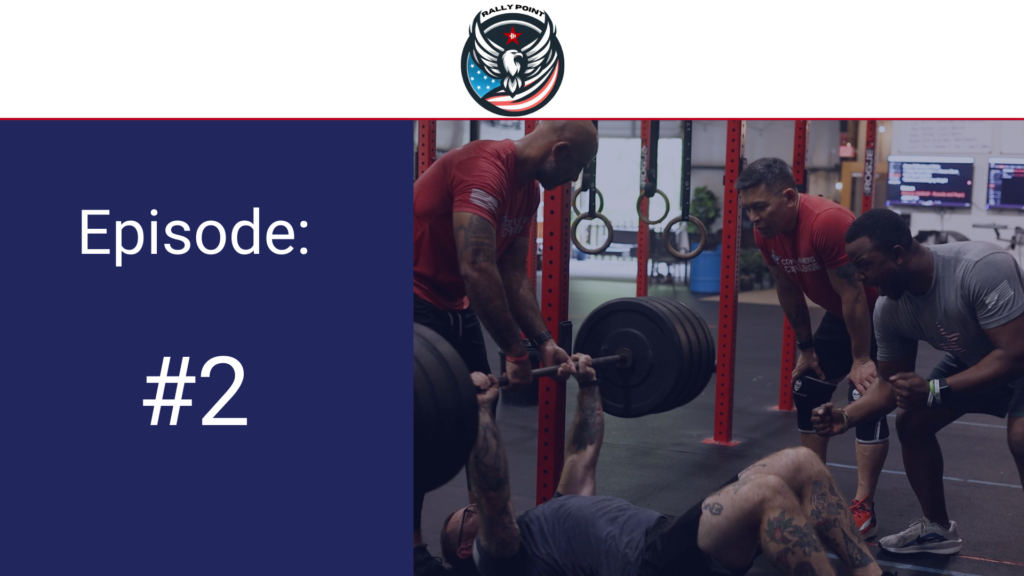
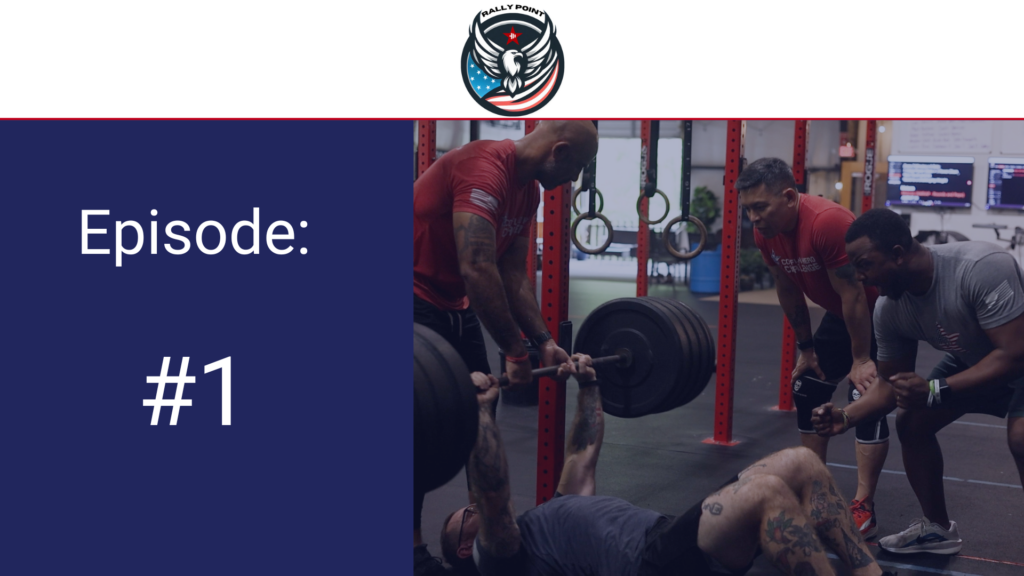
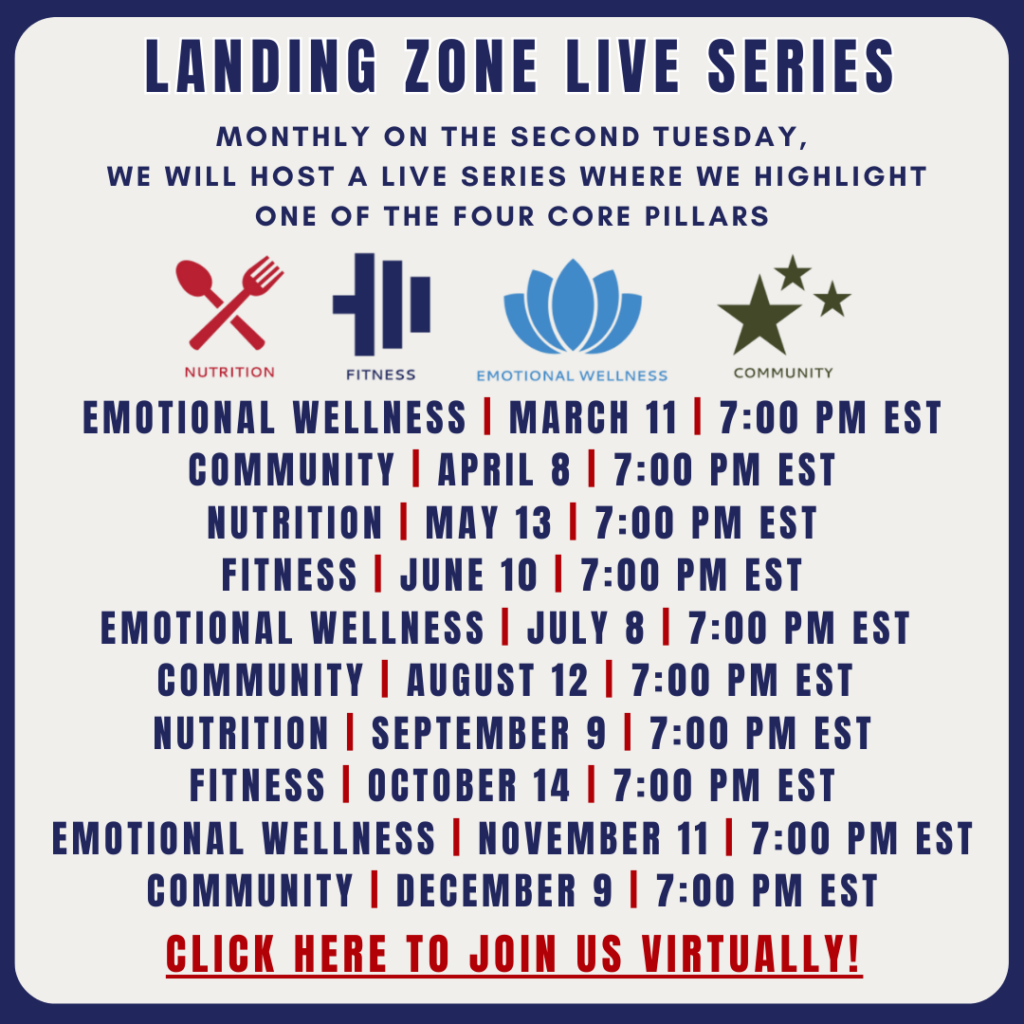
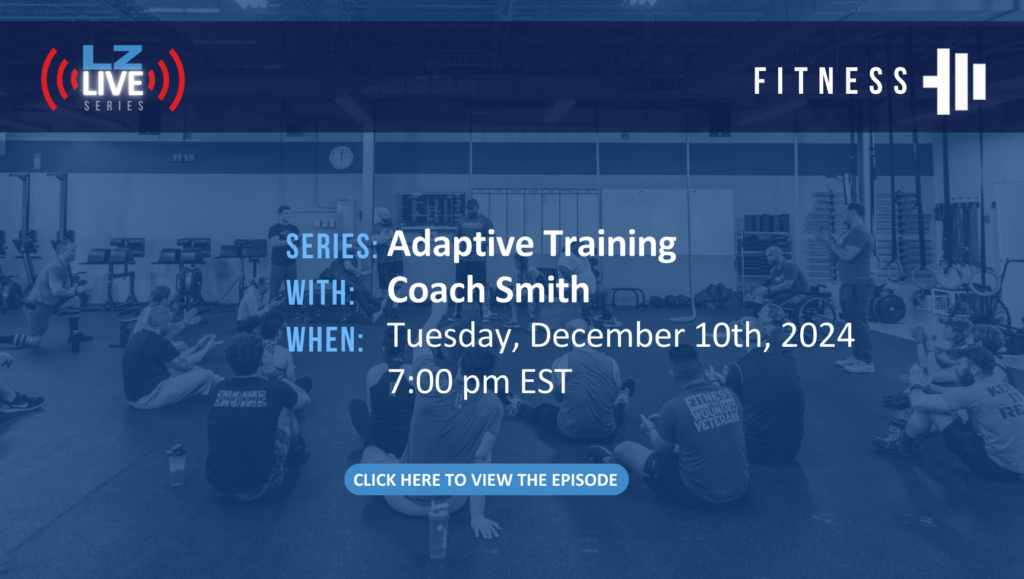
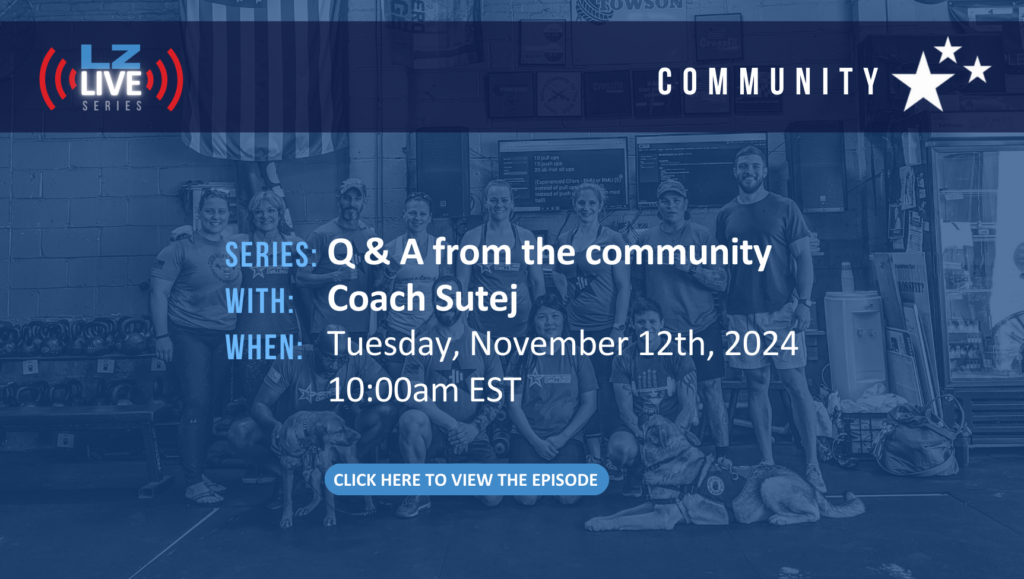
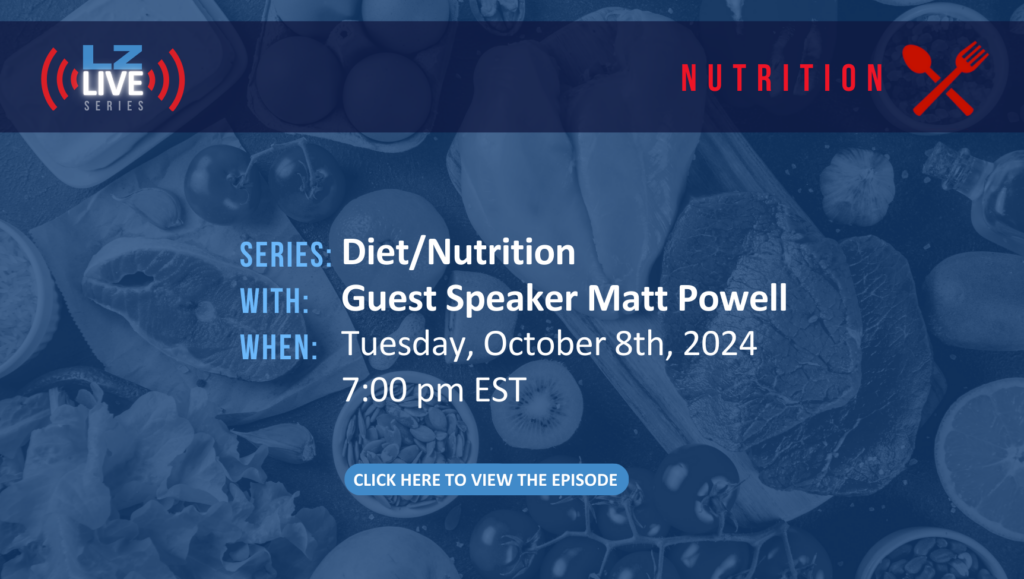
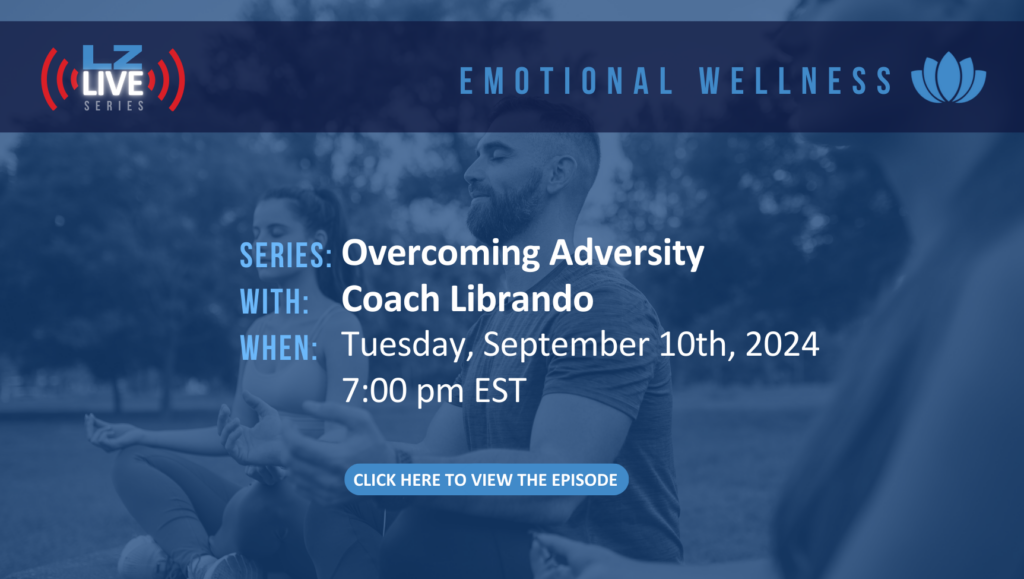
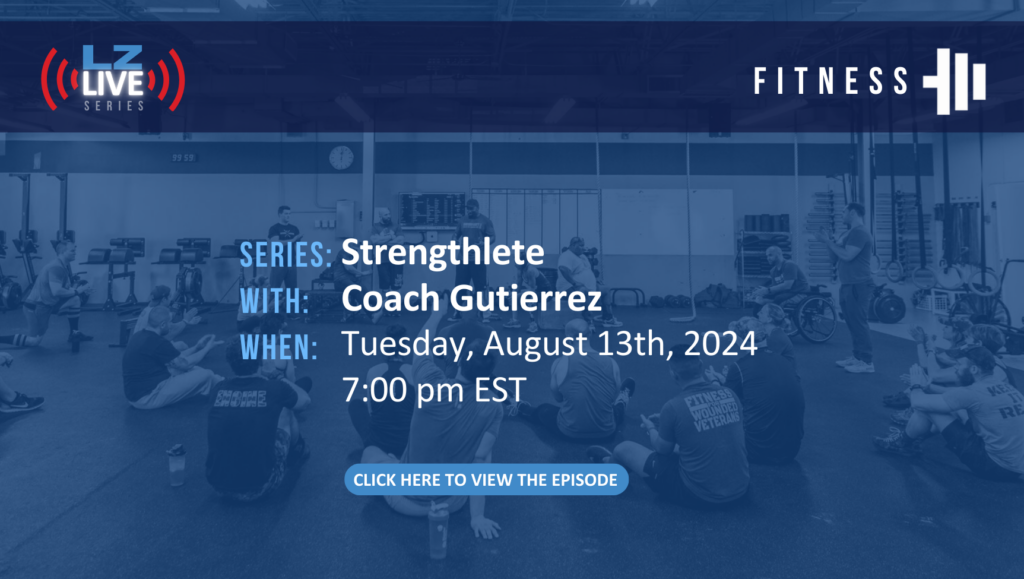
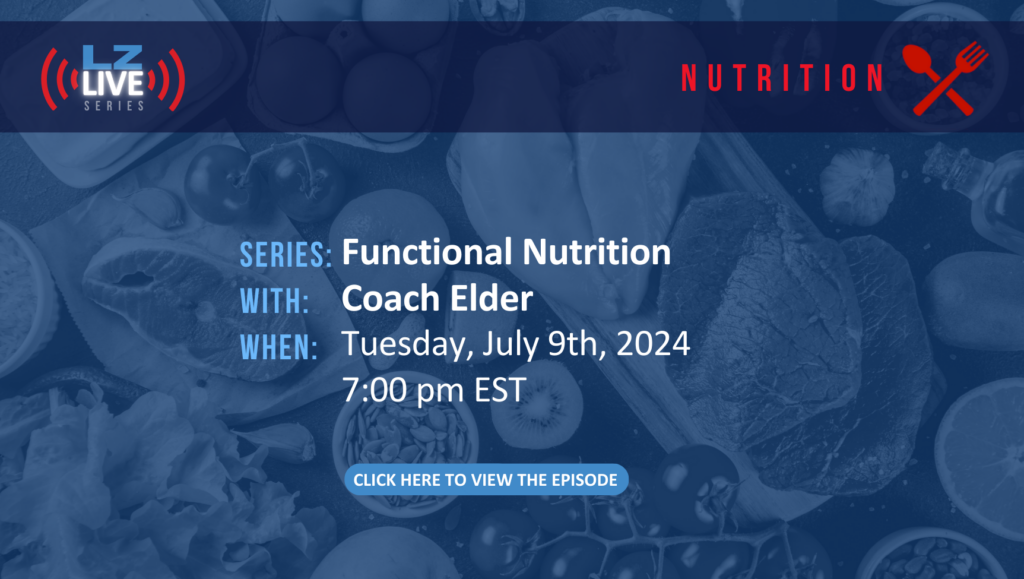
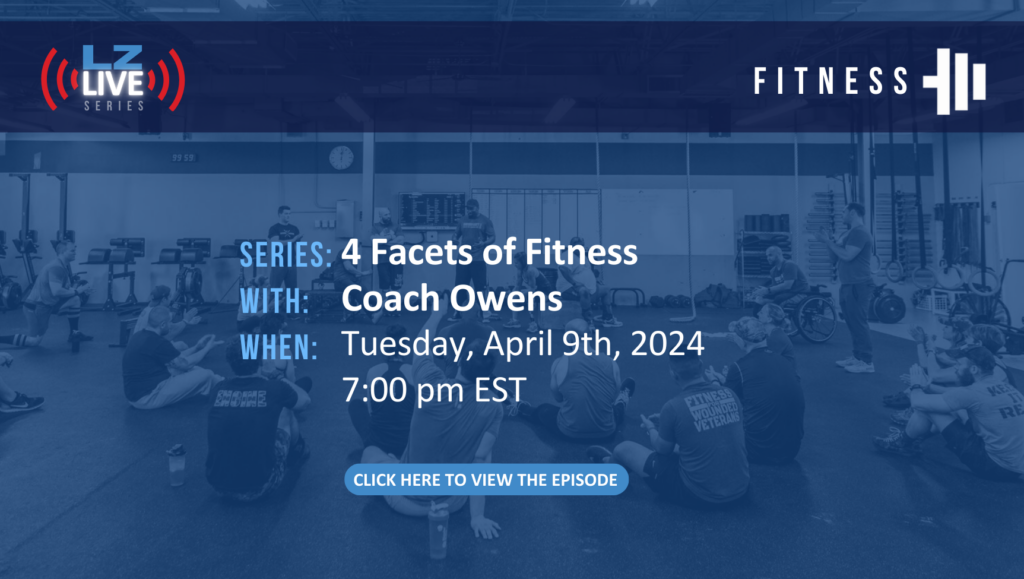
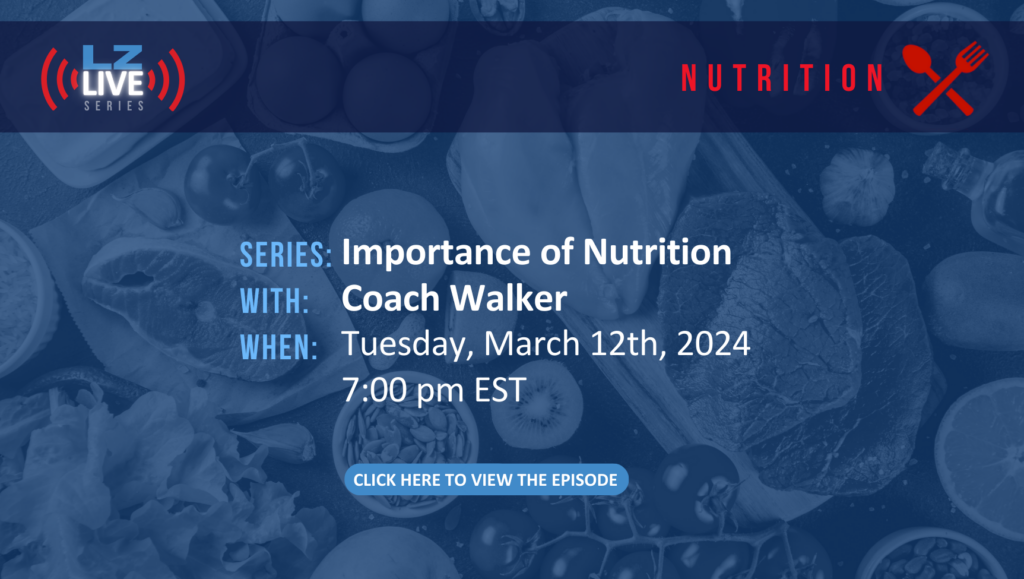













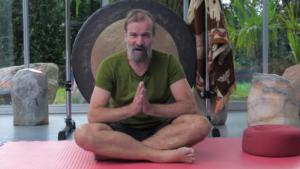


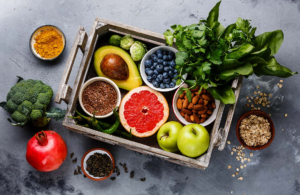













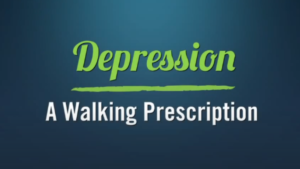







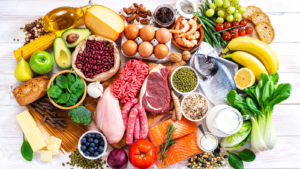






















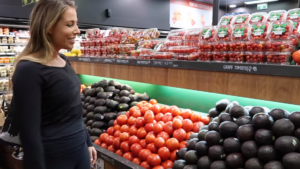






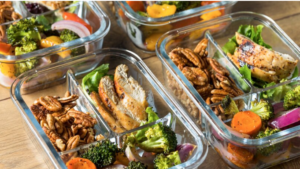


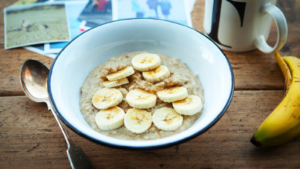



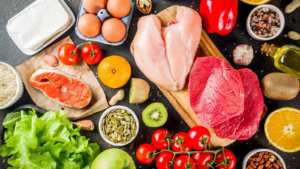


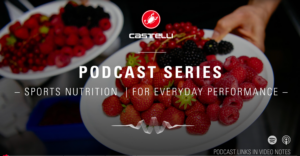
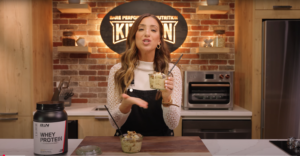
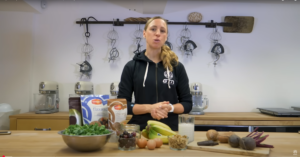
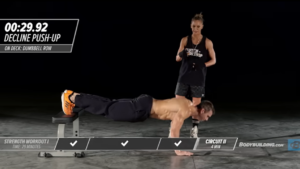


















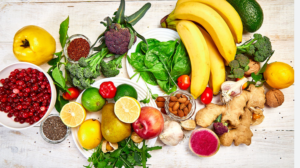



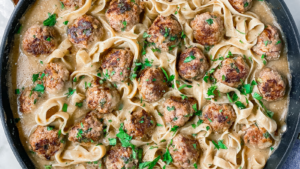


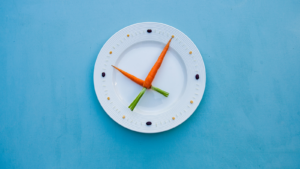

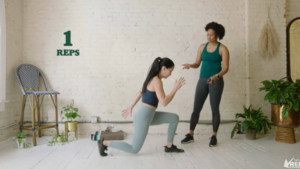







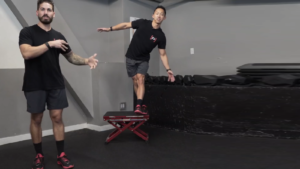







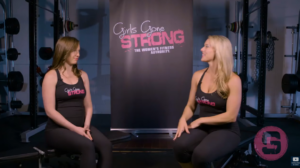
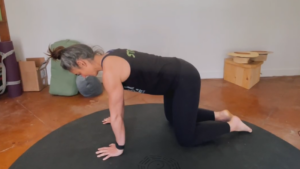


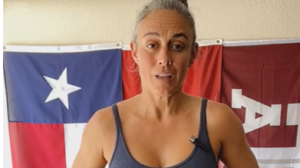

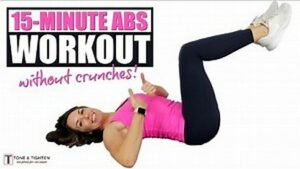

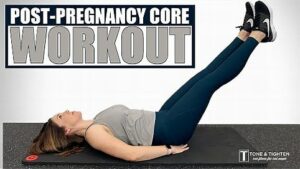



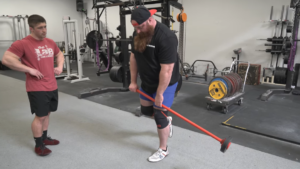





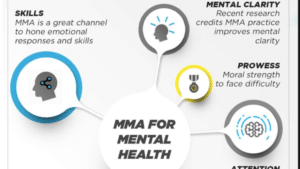





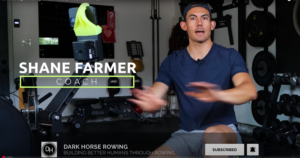













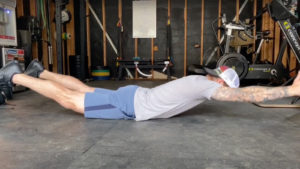

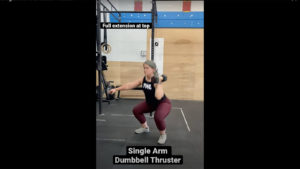





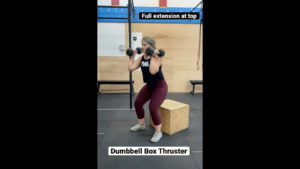

![[AMPUTEE WORKOUT] Resistance Bands by: FitBunch](https://landingzone.catchaliftfund.org/wp-content/uploads/sites/4/2021/06/AMPUTEE_BANDS-300x169.jpg)
![[AMPUTEE WORKOUT] Resistance Bands by: Kendra Marie](https://landingzone.catchaliftfund.org/wp-content/uploads/sites/4/2021/06/squat_legs-300x169.jpg)




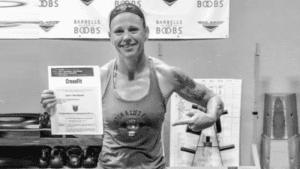












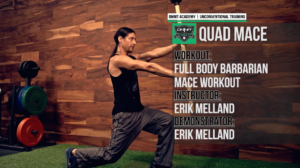

















![30 Minute FULL BODY Tempo HIIT Workout [ADVANCED] by: Juice & Toya](https://landingzone.catchaliftfund.org/wp-content/uploads/sites/4/2020/07/Screenshot-2023-10-25-112157-e1698250813226-300x168.png)







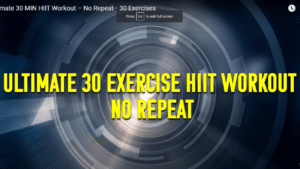





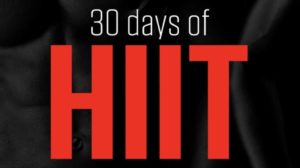

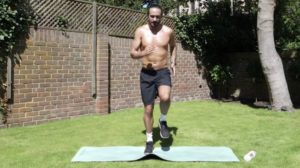



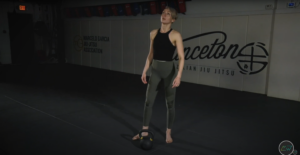








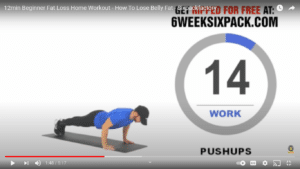







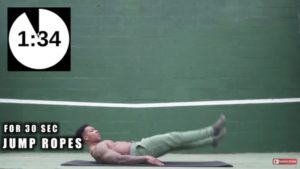
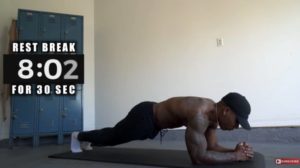









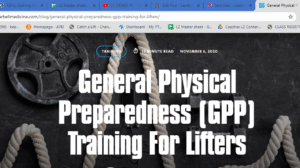



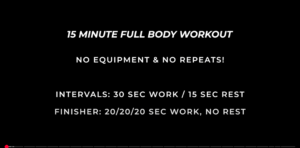















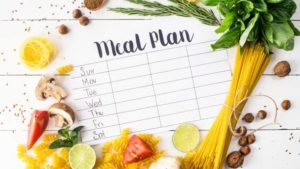






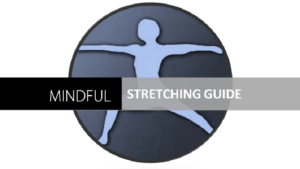
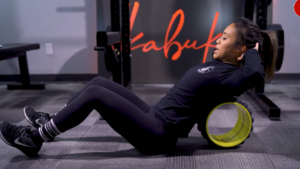

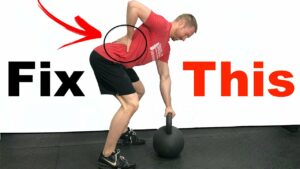
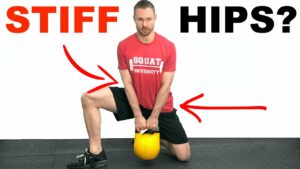
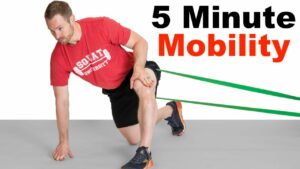


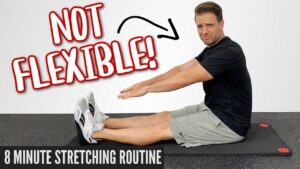

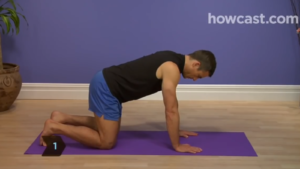



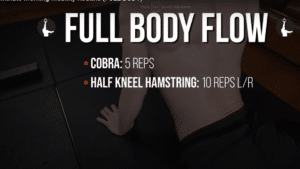
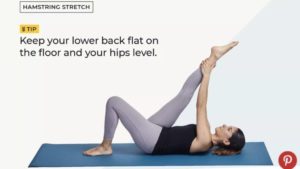




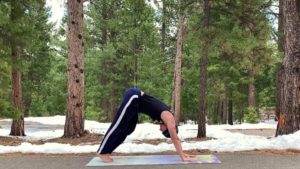
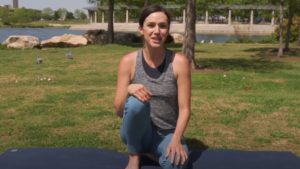
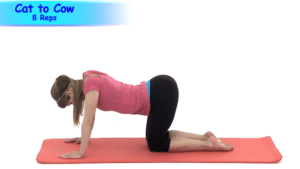

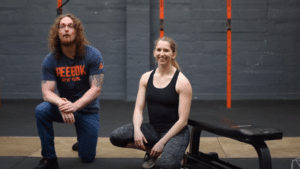

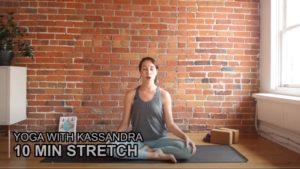

















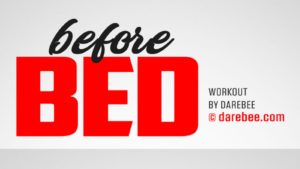





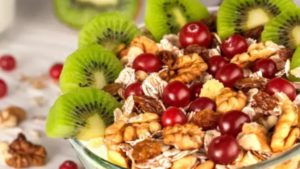

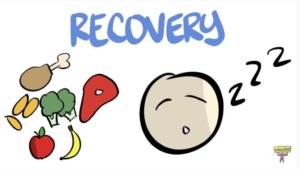



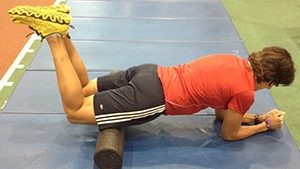






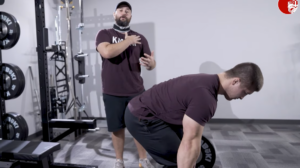










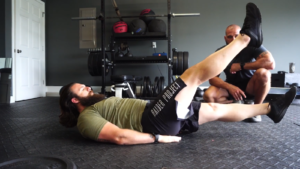

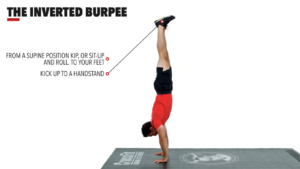






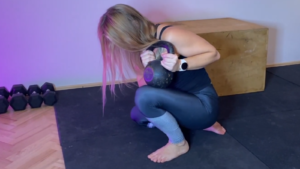


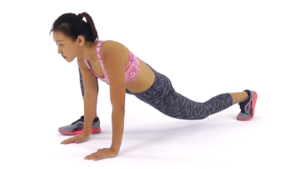


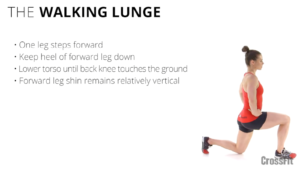
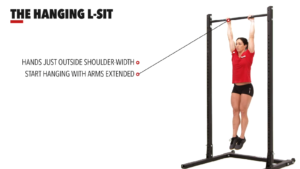
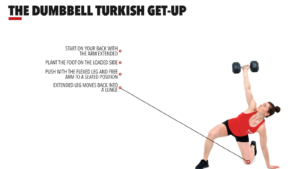
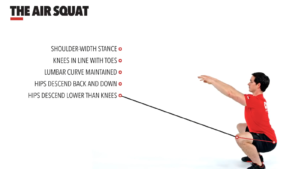





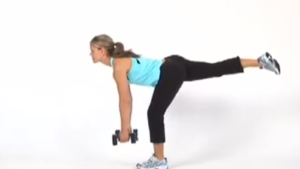








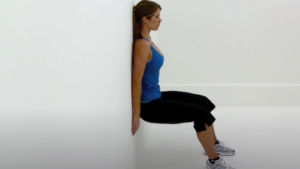




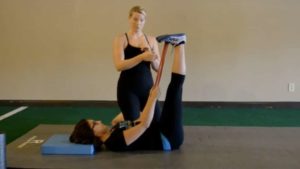




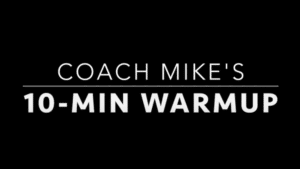






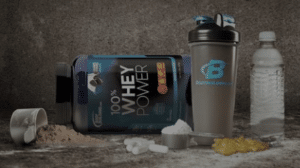


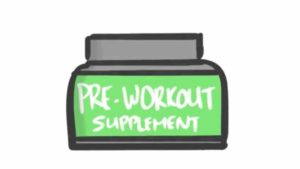







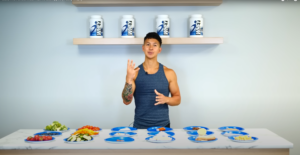


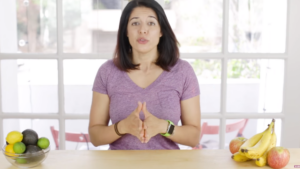



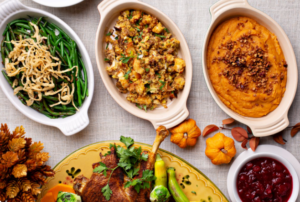
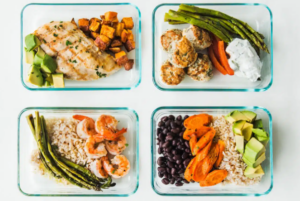
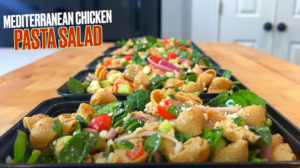

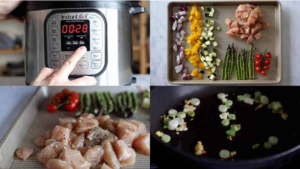

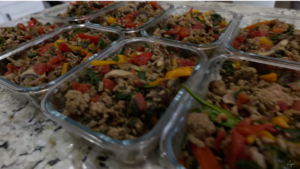
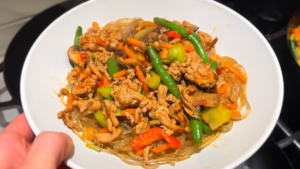
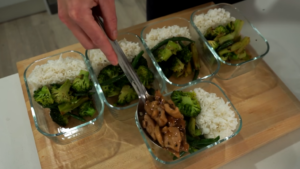

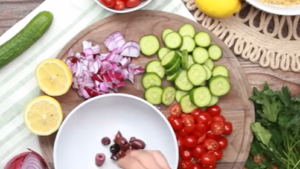

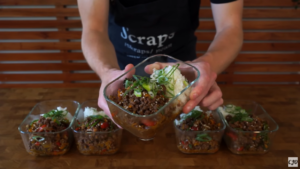
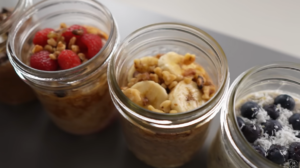
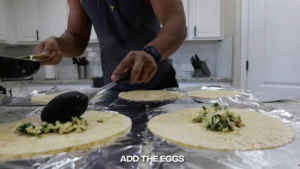
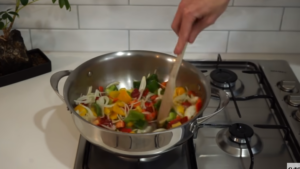

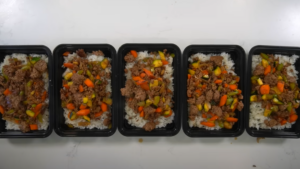

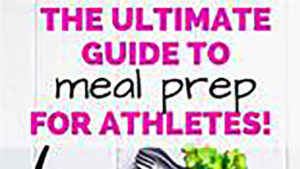
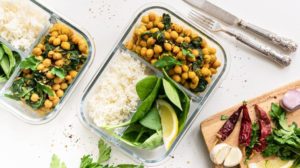

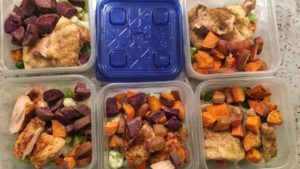
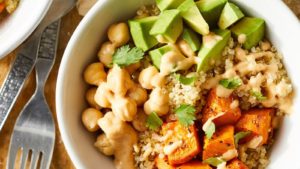
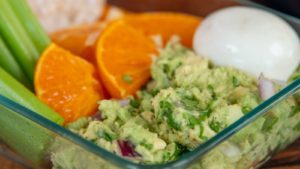
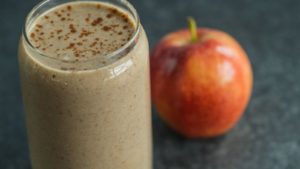
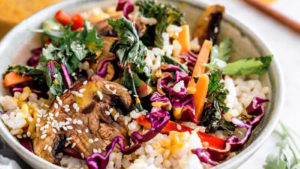
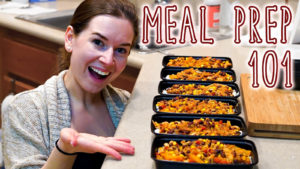
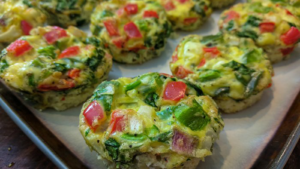
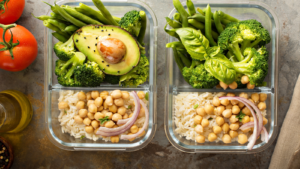
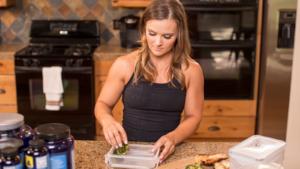
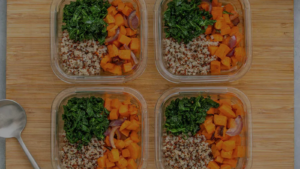

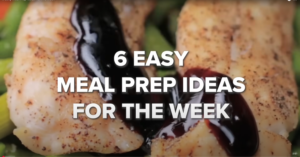
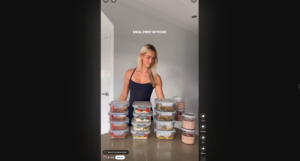


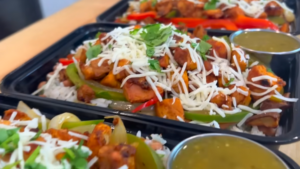


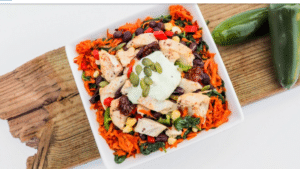



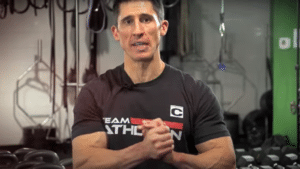





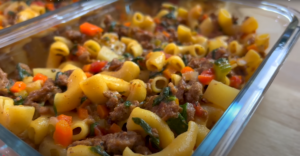
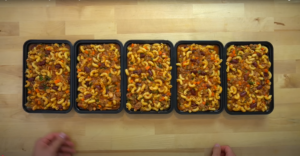
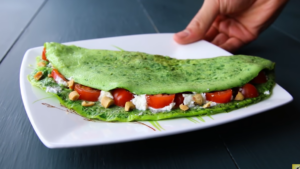




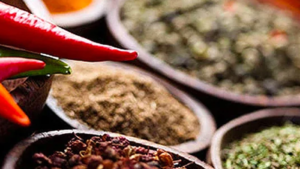
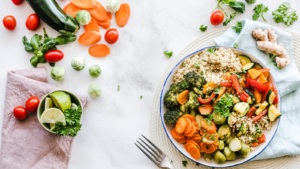


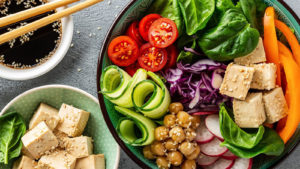







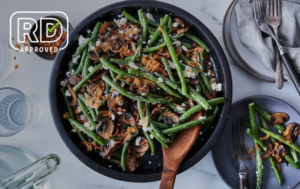

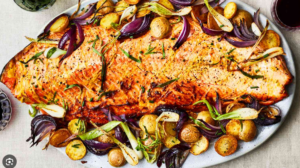
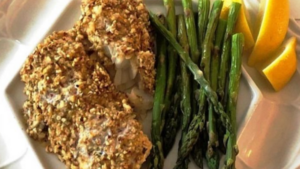
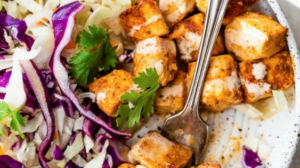
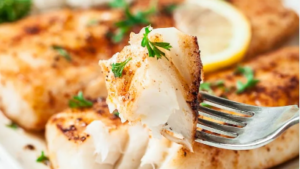
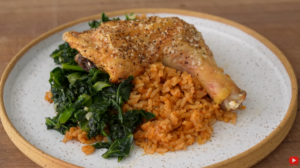

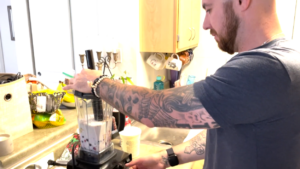
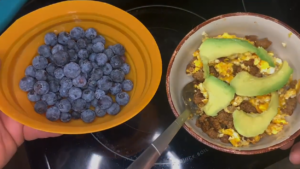
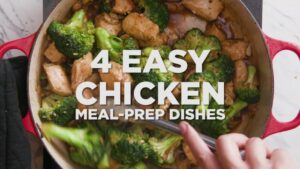

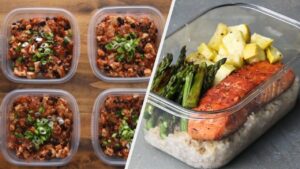




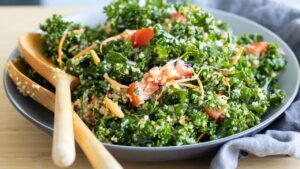
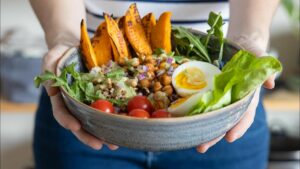
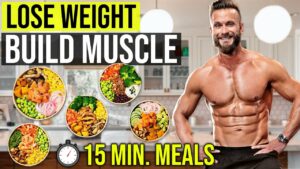




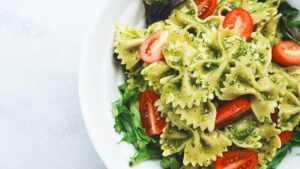

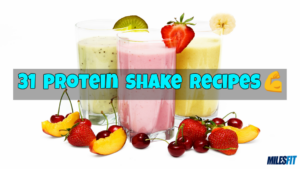

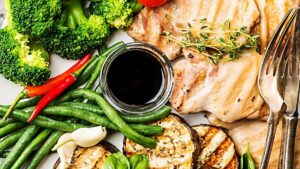
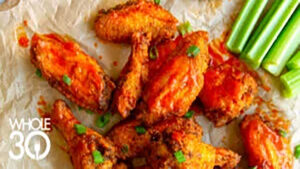
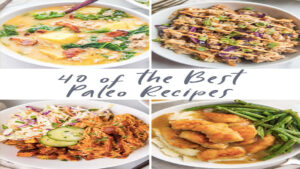
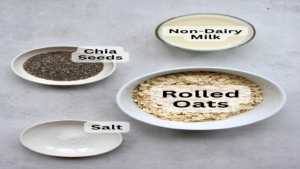
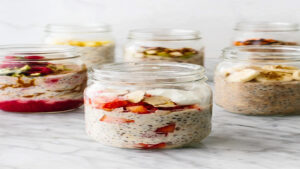

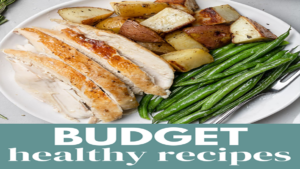
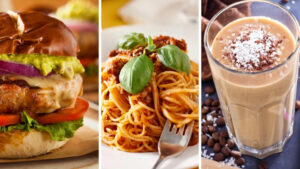


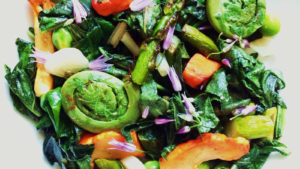
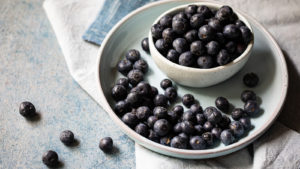
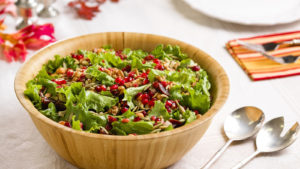
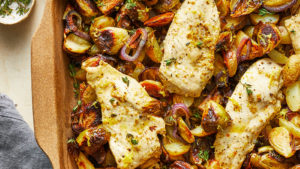
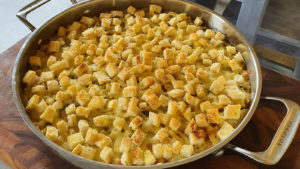
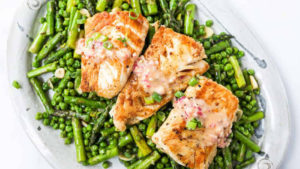
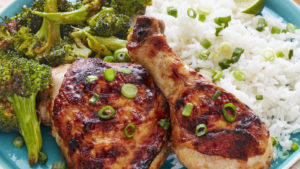


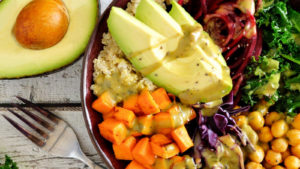
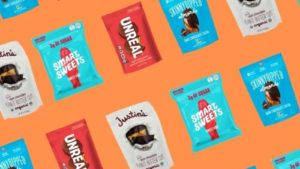

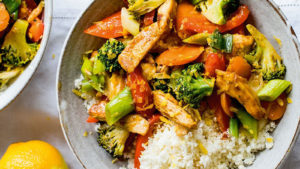
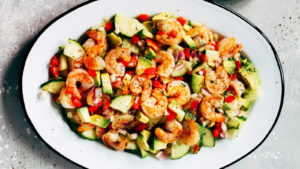
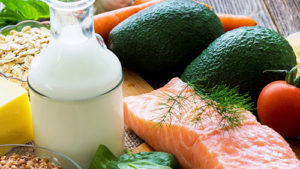

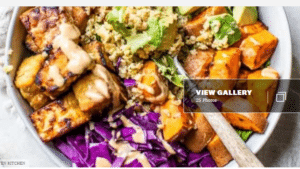


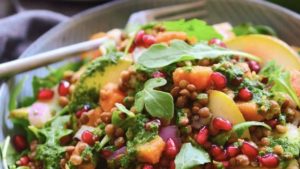
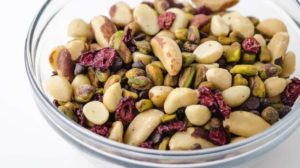
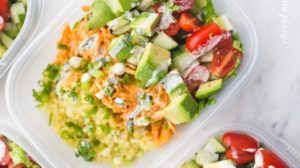


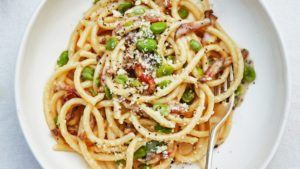

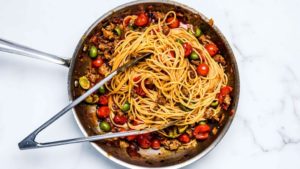
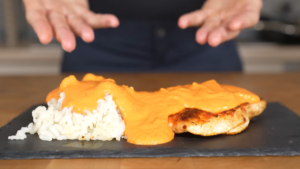

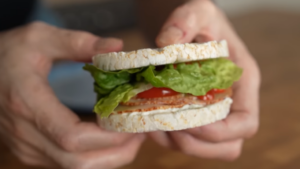
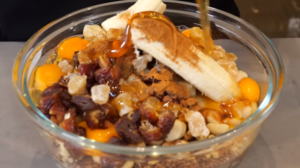

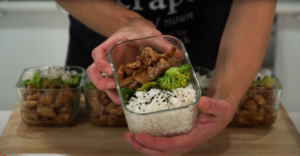
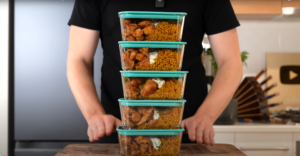






















































































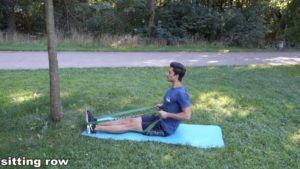


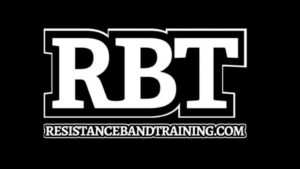
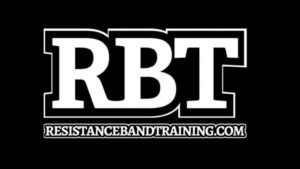













![How To Use [ Resistance Bands ] | 🏆 Best Beginners Guide By 💪 James Grage, Undersun Fitness by: Undersun Fitness](https://landingzone.catchaliftfund.org/wp-content/uploads/sites/4/2020/07/Screenshot-2025-02-24-121905-e1740417704252-300x157.png)













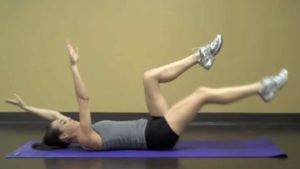

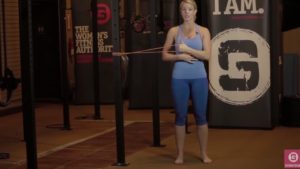















































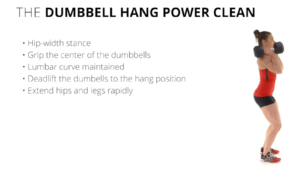








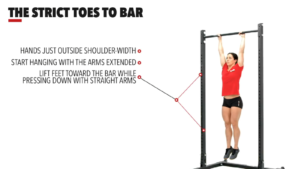
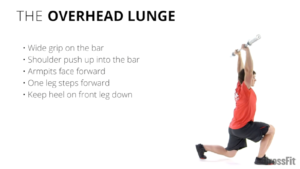
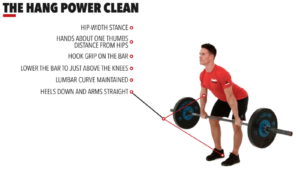
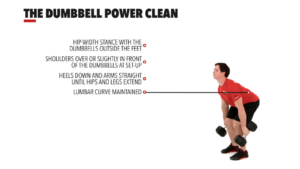
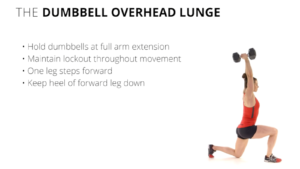
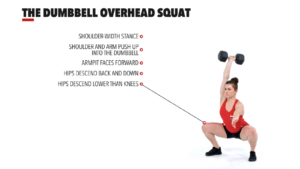
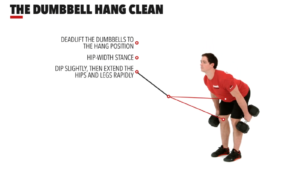
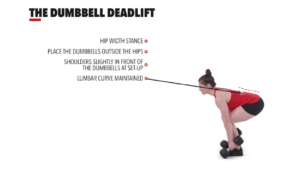
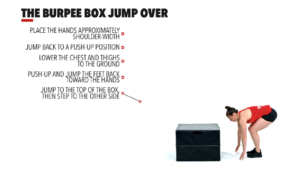








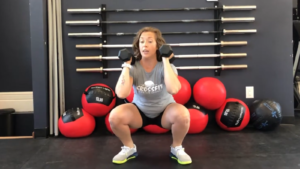


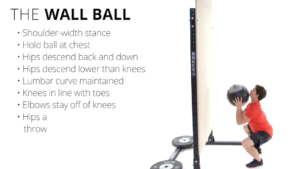
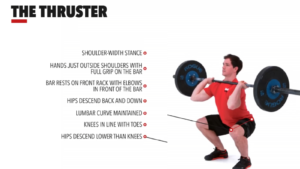
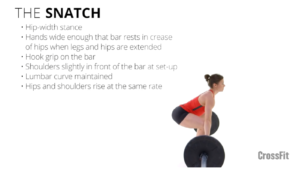
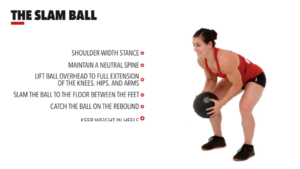

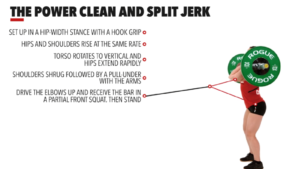
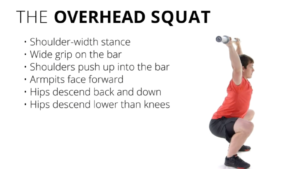
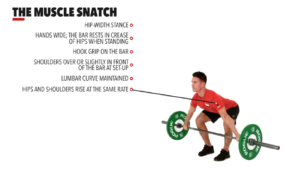
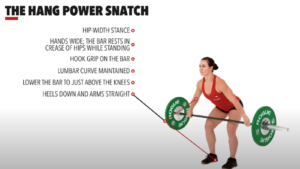
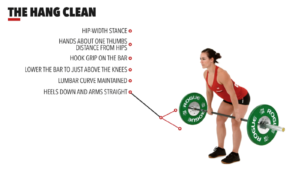


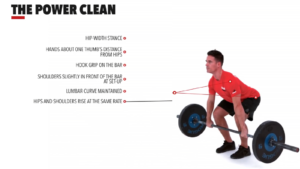
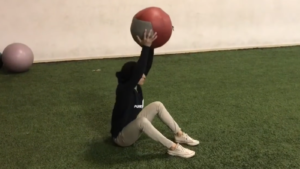





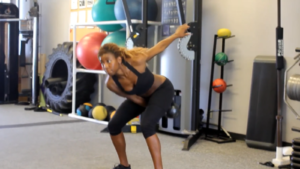

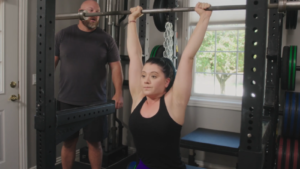
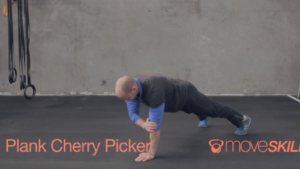
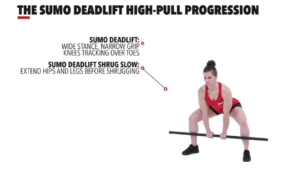
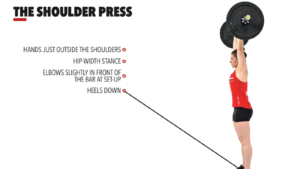
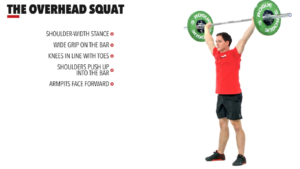
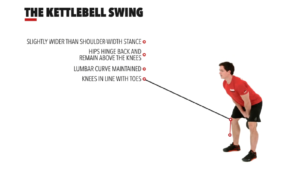
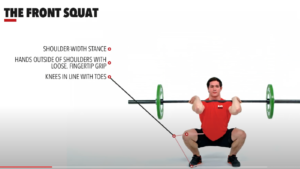
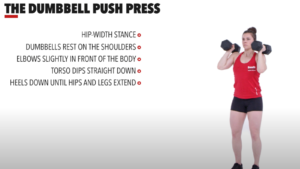
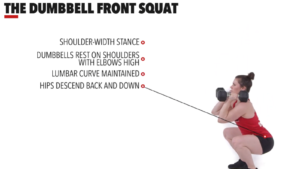
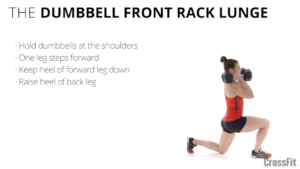

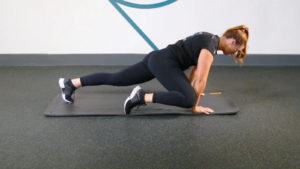

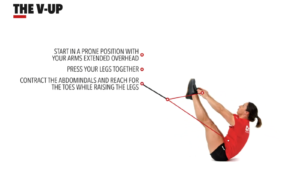
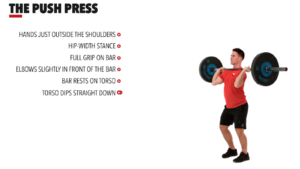
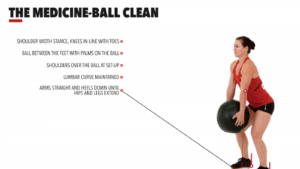
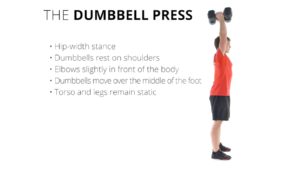
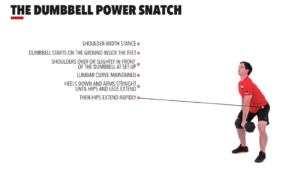
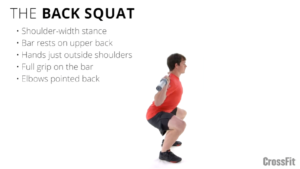

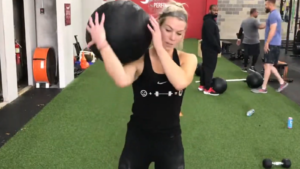

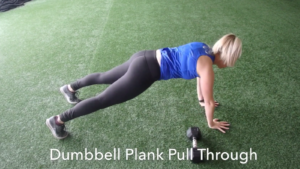
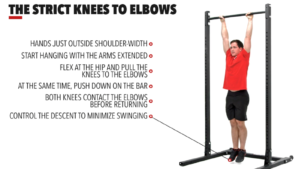
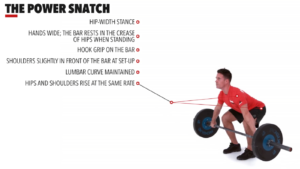
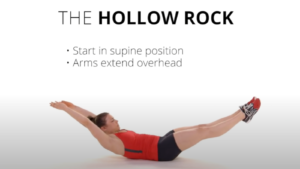
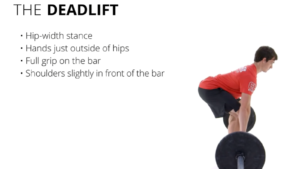
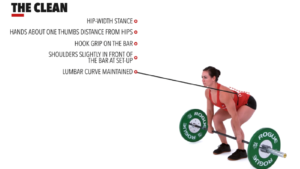
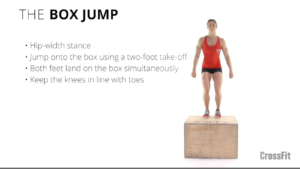
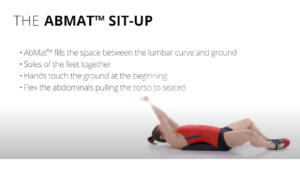
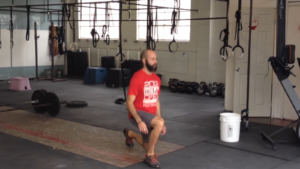



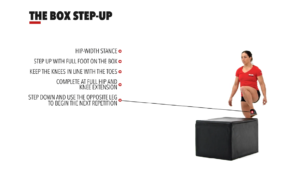

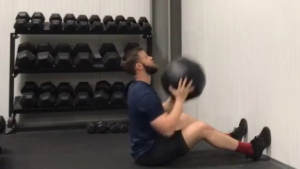


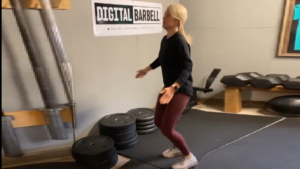
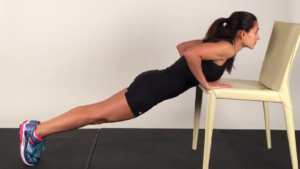



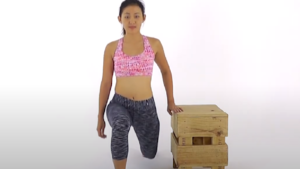
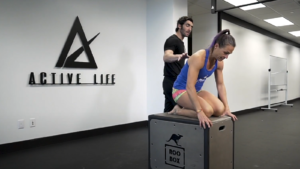





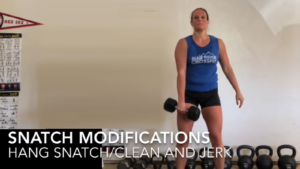
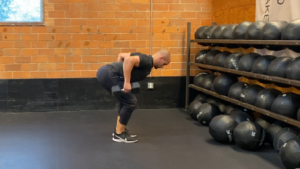
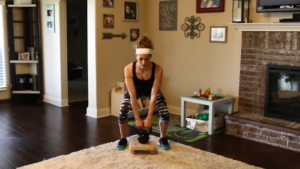


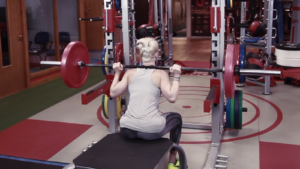







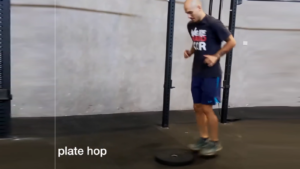



































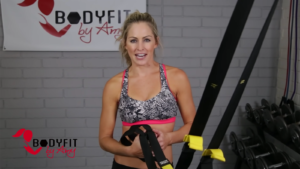


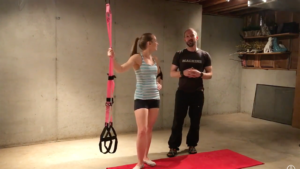











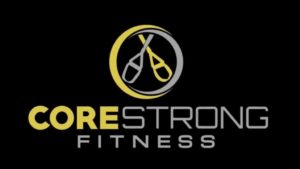




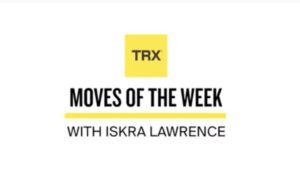

















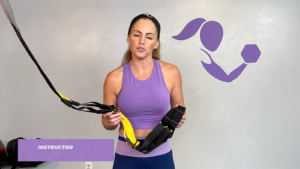
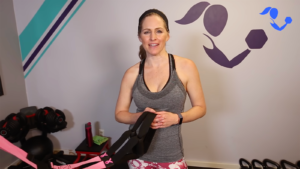
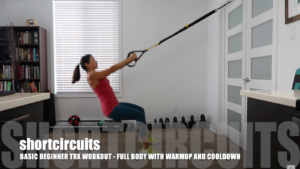



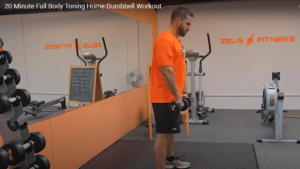






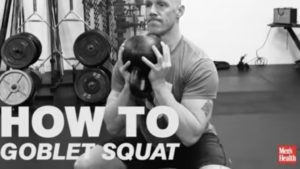
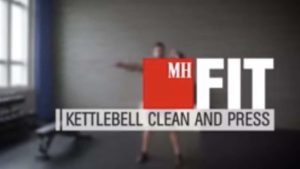










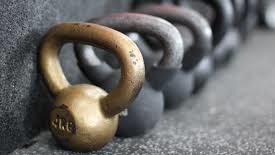










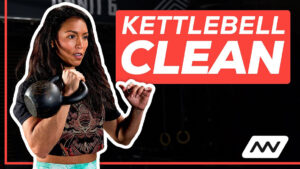















![Swede Burns Coaching The Squat at the LTTX [EXTENDED VERSION] | elitefts.com by: elitefts](https://landingzone.catchaliftfund.org/wp-content/uploads/sites/4/2020/07/Screenshot-10-300x169.png)








